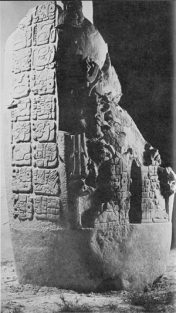
Vol. 1 / No. 1
By: Edwin M. Shook
The Temple of the Red Stela: An important new monument is unearthed at the Maya city of Tikal in Guatemala.
Archaeological digging is a good deal like prospecting– you never know when and where you are going to strike paydirt. […]
View Article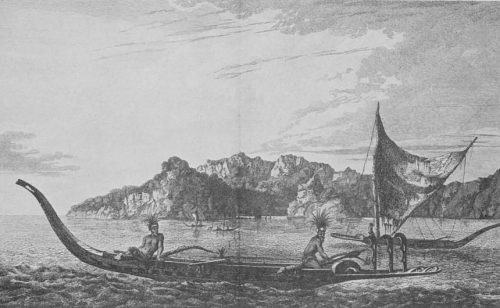
Vol. 1 / No. 1
By: Marianne L. Stoller
Te-moana-nui-o-Kiwa: To the Polynesians the Pacific Ocean is Te-moana-nui-o-Kiwa, the Great Sea of Kiwa. This article, the first of three, tells how some of its many islands were discovered and named.
For the past year one of the projects of the University Museum has been the renovation and remodeling of the […]
View Article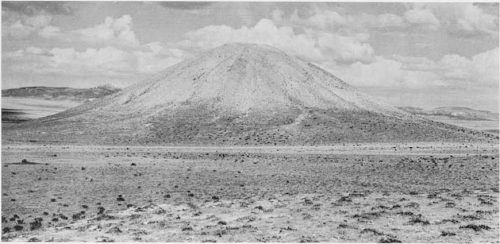
Vol. 1 / No. 1
By: Rodney S. Young
The Gordion Tomb: The successful search at Gordion in Turkey for the tomb of a king who reigned in the eighth century before Christ.
The Museum expedition first went to work at Gordion in 1950. Always before the eyes of its members stood the […]
View Article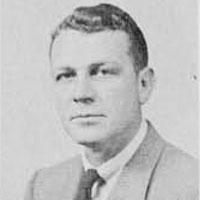
Vol. 1 / No. 1
By: Froelich Rainey
Editorial
Expedition, a revised form of the University Museum Bulletin, is designed for the public. It will continue as a quarterly […]
View Article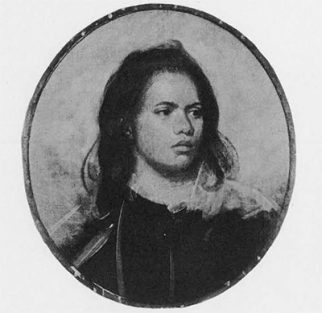
Vol. 1 / No. 2
By: Marianne L. Stoller
Te-moana-nui-o-Kiwa
The second in a series of articles about the finding and naming of some of the islands in the Pacific- […]
View Article
Vol. 1 / No. 2
By: Alfred Kidder, II
Editorial
Anthropologists, archaeologists, and their colleagues in such fields as linguistics, folklore, and ethnomusicology like to get together from time to […]
View Article
By: Froelich Rainey
The Vanishing Art of the Arctic
But of the land on the other side of the bald men none can give any trustworthy account because it […]
View Article
Vol. 1 / No. 2
By: David Crownover
Once and Again
“…During the past summer a large and beautifully lighted room was granted us. Necessary cases were built, and in September […]
View Article
Vol. 1 / No. 2
By: Robert H. Dyson, Jr.
An Iranian Drinking Vessel
The mountains of western Iran are today the home of sheep-herding tribesmen as they have been since animals were first […]
View Article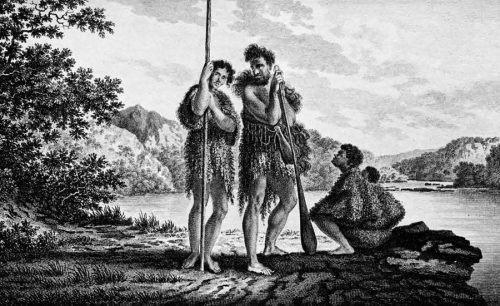
Vol. 1 / No. 3
By: Marianne L. Stoller
Te-moana-nui-o-Kiwa: The final article in a series about the finding and naming of some of the islands in the Pacific--the Maori great sea of Kiwa.
In previous articles we have considered various discoveries made by five nations–Holland, Spain, Britain, France, and the United States. There […]
View Article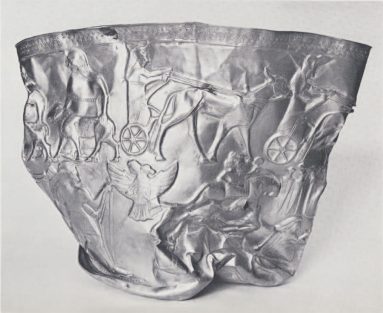
Vol. 1 / No. 3
By: Edith Porada
The Hasanlu Bowl
One glance at the gold bowl from Hasanlu with its varied scenes of gods, heroes, monsters, and men suffices to […]
View Article
Vol. 1 / No. 3
By: Samuel Noah Kramer
A Sumerian Document with Microscopic Cunieform
The Department of Oriental Antiquities in the Louvre in Paris is the fortunate possessor of the remains of a Sumerian […]
View Article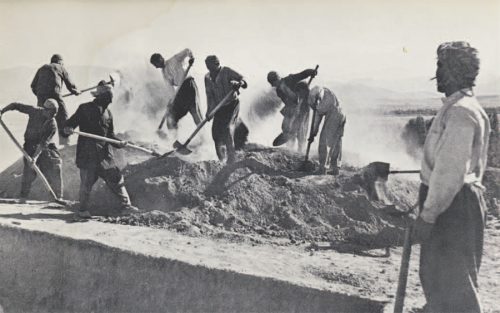
Vol. 1 / No. 3
By: Robert H. Dyson, Jr.
Digging in Iran: Hasanlu, 1958
Expeditions, especially archaeological ones, often produce unexpected results. The last Hasanlu Expedition was no exception. It started slowly with what […]
View Article
Vol. 1 / No. 3
By: Carleton S. Coon
Clever People, These Armenians
Deep in the oven-like summer of 1951 I was obliged, for reasons that have nothing to do with this story, […]
View Article
Vol. 1 / No. 4
By: Alfred Kidder, II
Archaeological Visitors
I first became aware of the archaeological visitors (we called them tourists), in the early twenties, when our family used […]
View Article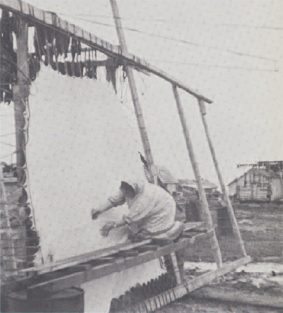
Vol. 1 / No. 4
By: Robert Ackerman
Siberians of the New World: An archaeologist spends the summer on St. Lawrence Island.
Far to the north in the region of the Bering Straits, Russian and American archaeologists working independently of each other […]
View Article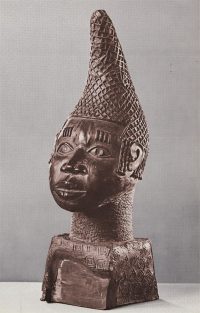
Vol. 1 / No. 4
By: Margaret Plass
The Art of Benin
An evaluation based on discussions with William Fagg, Deputy Keeper of Ethnography in the British Museum. The art of Benin […]
View Article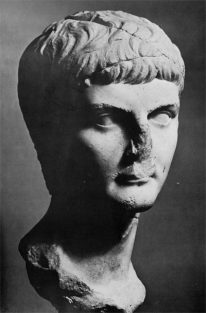
Vol. 1 / No. 4
By: Kenneth D. Matthews, Jr.
Portrait of a Hero
Between 1931 and 1933 workmen under the direction of Jotham Johnson labored for the University Museum at a Roman site […]
View Article
Vol. 1 / No. 4
By: William R. Coe
Tikal 1959
At this Maya site in northern tropical Guatemala the fourth season of field work under the direction of Edwin M. […]
View Article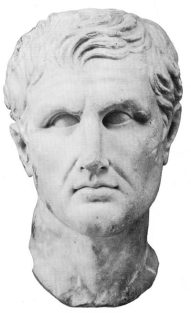
Vol. 1 / No. 4
By: Temple Fay, Jack L. Benson and L. Arnold Post
“The Head” – Menander: A Neurosurgeon's Analysis of a Great Stone Portrait
Preface Undoubtedly the most controversial portrait surviving from antiquity is one which exists in many copies and which has most […]
View Article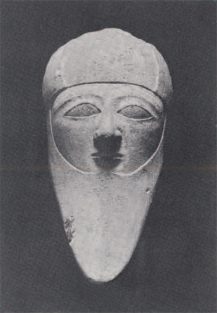
Vol. 1 / No. 4
By: David Crownover
Ancient and Primitive Art in Philadelphia Collections
Art of any period or time has been seen to pass through a life cycle: dynamic in youth, overcome by […]
View Article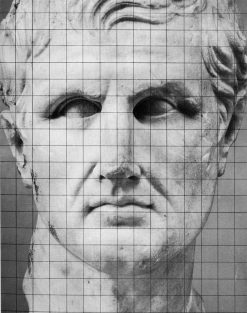
Vol. 1 / No. 4
By: Temple Fay
Relevant Information About Menander
In general we know comparatively little about the life history and personal traits of ancient worthies. The evidence for Menander […]
View Article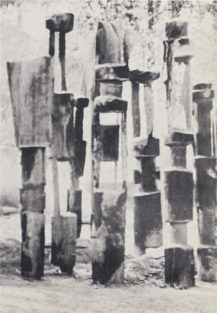
Vol. 2 / No. 1
By: James House, Jr.
Tiwi Burial Poles as Sculpture
Nothing in time so much alters the character of the concretion which is a work of sculpture as technological change, […]
View Article
Vol. 2 / No. 1
By: Froelich Rainey
To the Readers of Expedition
To the Readers of Expedition: Because of the increased interest in archaeology and the study of man, The University Museum decided, […]
View Article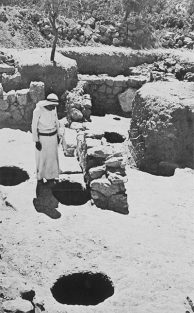
Vol. 2 / No. 1
By: James B. Pritchard
The Wine Industry at Gibeon: 1959 Discoveries
In a Near Eastern country such as Jordan an archaeologist learns quickly that it is usually best to discount, if […]
View Article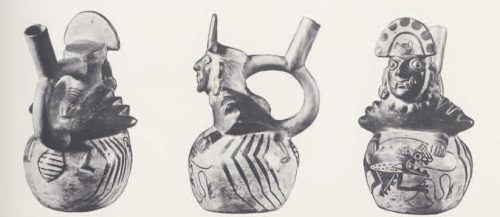
Vol. 2 / No. 1
By: Alfred Kidder, II
A Mochica Diety
This modelled stirrup-spouted vessel, painted in dark red on cream, is the Museum’s most recent acquisition in the field of […]
View Article
Vol. 2 / No. 1
By: William C. Brice
What the British are Doing
This article is the first of a series planned for Expedition to give our readers some knowledge of what other […]
View Article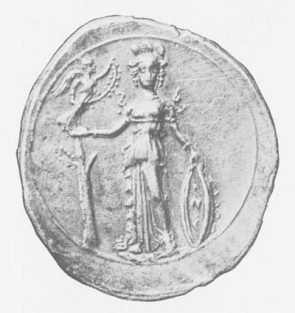
Vol. 2 / No. 1
By: Rhys Carpenter
The Clue of the Missing Feet
In 438 B.C. there was dedicated in the Parthenon at Athens the colossal gold and ivory statue of Athena, one […]
View Article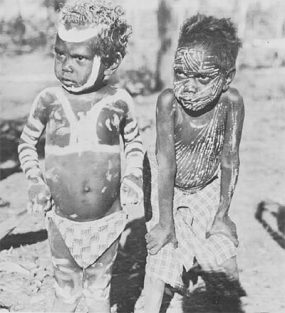
Vol. 2 / No. 1
By: Jane C. Goodale
The Tiwi Dance for the Dead
From April through August 1954, the National Geographic Society sponsored an expedition to Melville Island, Australia, led by Mr. C. […]
View Article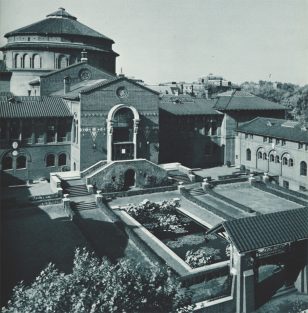
Vol. 2 / No. 2
By: A.V. Kidder
Wanted: More and Better Archaeologists
This article, from The Proceedings of the American Philosophical Society, Vol. 83, and here reprinted under a new title and […]
View Article
Vol. 2 / No. 2
By: Ellen L. Kohler
An Etruscan Tomb-Guardian
The Etruscans are still a mysterious people to us because at the present state of our knowledge we cannot answer […]
View Article
Vol. 2 / No. 2
By: Edwin M. Shook
Tikal Stela 29: The oldest dated Lowland Maya monument is unearthed in the jungles of Guatemala. For a discussion of Maya dates the reader is referred to the accompanying article by Linton Satterthwaite.
Just short of a century ago, in 1864, canal diggers working in the steaming heat of a coastal swamp a […]
View Article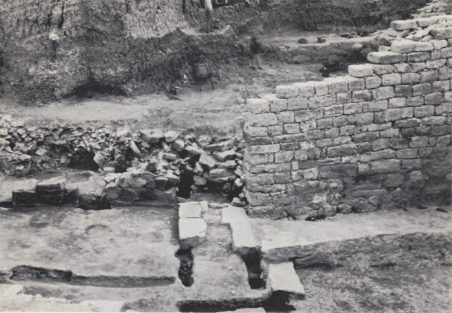
Vol. 2 / No. 2
By: Rodney S. Young
Gordion: Phrygian Construction and Architecture
The traveller in Near Eastern lands cannot help but be struck by the hundreds of ancient mounds–Tels or Tepes or […]
View Article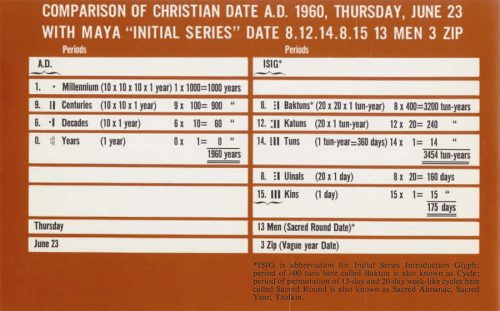
Vol. 2 / No. 2
By: Linton Satterthwaite
Maya “Long Count” Numbers
The new earliest “Long Count” or “Initial Series” date on Tikal Stela 29 is transcribed as “8.12.14.8.15 13 Men 3 […]
View Article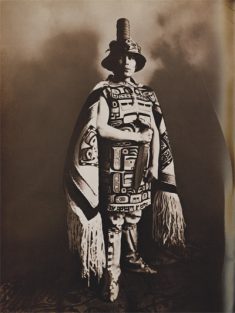
Vol. 2 / No. 2
By: J. Alden Mason
Louis Shotridge
Formerly the Museum made a practice of having an American Indian as Assistant in the American Section. Dressed in his […]
View Article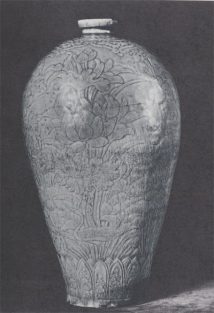
Vol. 2 / No. 3
By: Jean Gordon Lee
A Korean Potter’s Masterpiece
Since 1916 a most unusual celadon vase has been in the Museum’s collection. Bought through Joseph Duveen at the time […]
View Article
Vol. 2 / No. 3
By: Froelich Rainey
The Changing Face of Archaeology
Sweeping in over the roof of the jungle, a twin-engined passenger plane settles down on the landing strip hacked out […]
View Article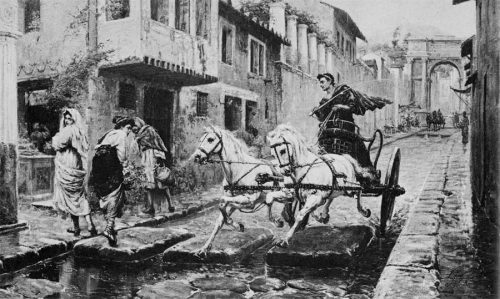
Vol. 2 / No. 3
By: Kenneth D. Matthews, Jr.
The Embattled Driver in Ancient Rome
As a driver do you become annoyed with present-day traffic conditions? Most probably you do and the same may be […]
View Article
Vol. 2 / No. 3
By: John L. Cotter
Digging an Historical Shrine: Philadelphia's Independence Park
Every now and then a sudden gleam comes to an archaeologist’s eye as he searches a palaeolithic cave deposit, or […]
View Article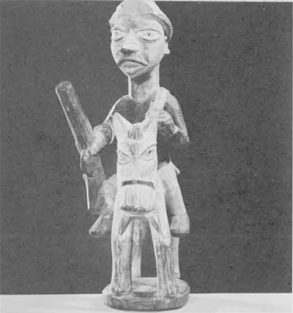
Vol. 2 / No. 3
By: David Crownover
The Pink People
Europeans occur in the tribal art of Nigeria as far back as the 17th century when Portuguese sailors navigated the […]
View Article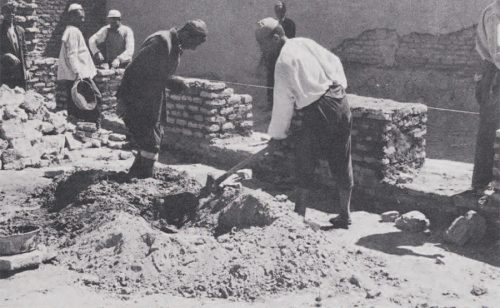
Vol. 2 / No. 3
By: Robert H. Dyson, Jr.
The Death of a City
Or ever the silver cord be loosed, or the golden bowl be broken, or the pitcher be broken at the […]
View Article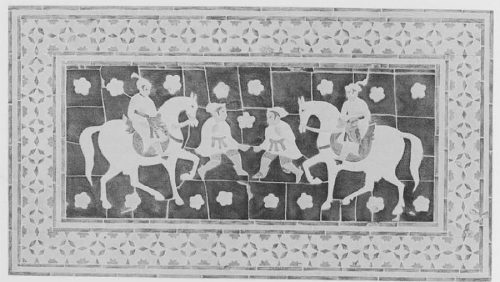
Vol. 2 / No. 4
By: George F. Dales, Jr.
The “Old Fort” at Lahore: Restoration of a Moghul Fortress in West Pakistan
“On Monday, the 9th of the Divine month of Azar…[Nov. 20, A.D. 1620], mounting an elephant of the name of […]
View Article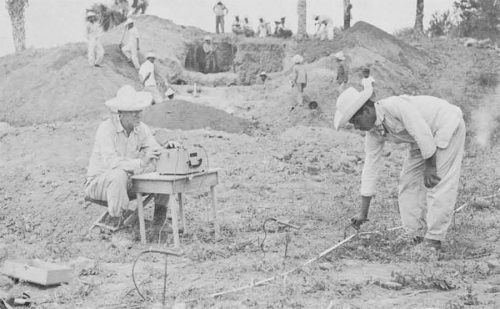
Vol. 2 / No. 4
By: Matthew W. Stirling, Froelich Rainey and Matthew W. Stirling, Jr.
Electronics and Archaeology
For centuries men have dreamed of a “divining rod” or device that would indicate the presence of buried treasure in […]
View Article
Vol. 2 / No. 4
By: Froelich Rainey
Archaeological Salvage in Egypt: Editorial
At a recent meeting in the University Museum, Mrs. Nicholas Roosevelt told us that she remembered with nostalgia Sir Leonard […]
View Article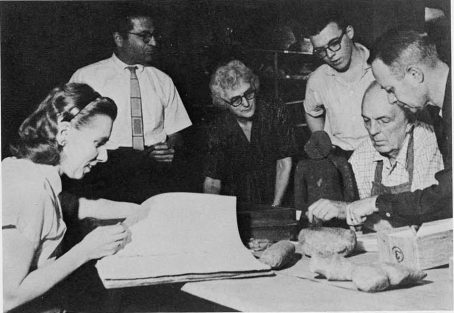
Vol. 2 / No. 4
By: E.N. Brandt
Why I Am a Mummy Duster
This term describes a dozen or two who work one night a week in the University Museum’s workshop and storage […]
View Article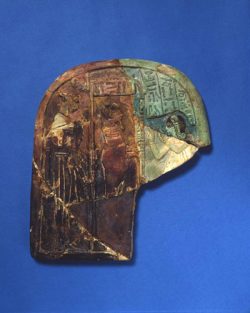
Vol. 2 / No. 4
By: Alan R. Schulman
A Faience Stela from the New Kingdom
Among the unpublished finds of the University Museum’s excavations at ancient Memphis in 1915-1923 is the faience stela shown here. […]
View Article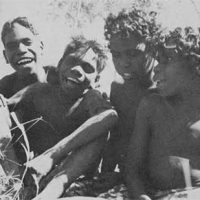
Vol. 2 / No. 4
By: Jane C. Goodale
Sketches of Tiwi Children
Readers of Miss Goodale’s account of Tiwi funeral ceremonies in the Fall 1959 number of EXPEDITION will remember that the […]
View Article
Vol. 3 / No. 1
By: Alfred Bendiner
An Archaeologist’s Sketchbook
When Fro Rainey and his staff asked my wife and me to go to Tikal and make an architectural survey […]
View Article
Vol. 3 / No. 1
By: Joseph A. Barone
Patterns in Music
In the story of Man, music has often provided a key to his artistic growth. It has revealed striking similarities […]
View Article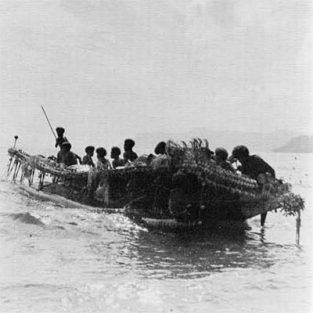
Vol. 3 / No. 1
By: Ann Chowning
Canoe Making Among the Molima of Fergusson Island
At dusk on May 12, 1958, as I sat on the beach talking with my adoptive family, four beautifully decorated […]
View Article
Vol. 3 / No. 1
By: M.E.L. Mallowan
Sir Leonard Woolley
Professor Mallowan, himself a famous archaeologist, writes that in preparing this appreciation of Sir Leonard Woolley for the obituary columns […]
View Article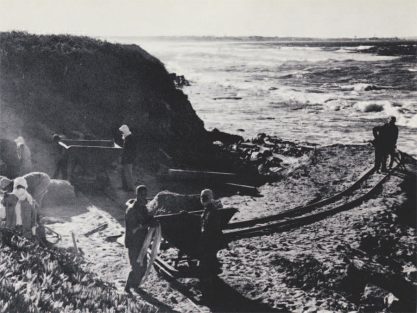
Vol. 3 / No. 1
By: Brandon Barringer
Finding A Phoenician Colony Part I: The Search
The hunt started nearly two years ago when the Government of Tunisia asked the University Museum to investigate the possibilities […]
View Article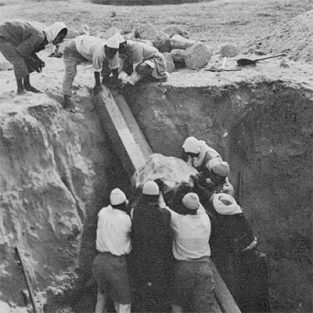
Vol. 3 / No. 1
By: Theresa Howard Carter
Finding a Phoenician Colony Part 2: The Discovery
The very afternoon of the Barringers’ departure two of our three high hopes were shattered. The Lisa Sounding revealed a […]
View Article
Vol. 3 / No. 1
By: David Crownover
A Pair of Twins
This poem translated from the Nigerian language group by Roger Wescott propounds a simple truth: it is a good thing […]
View Article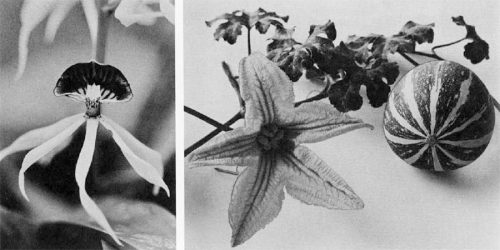
Vol. 3 / No. 2
By: C.L. Lundell
The Flora of Tikal
The popular image of the jungle is one of mystery and romance. Kipling, Conrad, Maugham, and hoses of contemporary and […]
View Article
Vol. 3 / No. 2
By: George F. Bass
A Bronze Age Shipwreck
Just off Cape Gelidonya, on the southwest coast of Turkey, lies a row of five tiny islands, little more than […]
View Article
Vol. 3 / No. 2
By: Rodney S. Young
Footnote on Griffins
Egnatia lay on the Adriatic coast of southern Italy a few miles above Brundisium (Brindisi) and at the point where […]
View Article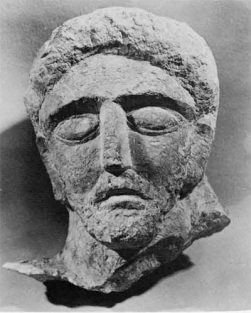
Vol. 3 / No. 2
By: Frances W. James
Beth Shan
The Biblical Book of Samuel tells us that the bodies of Saul and his sons were exposed by the Philistines […]
View Article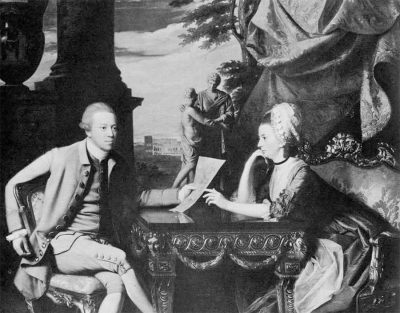
Vol. 3 / No. 2
By: Robert C. Smith
The Ruins of Rome
“Here is to be seen those rare Curiosities that no City in the world can afford the like.” Thus Francis […]
View Article
Vol. 3 / No. 3
By: Robert H. Dyson, Jr.
An Iranian Gold Piece
Herodotus tells us that when the Persian fleet was wrecked off Magnesia in Thessaly in 492 B.C. on its way […]
View Article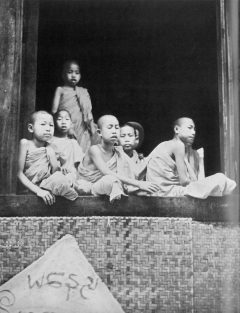
Vol. 3 / No. 3
By: Robbins Burling
Boys of the Yellow Robe
Last spring I spent a few weeks in Hopong, a market town in the Shan States of Burma. The town […]
View Article
Vol. 3 / No. 3
By: Marija Gimbutas
“Timber-graves” in Southern Russia: The Second in a Series on Expeditions Around the World.
As a result of the intrusion of the Kimmerians and Scythians from southern Russia in the late eighth and seventh […]
View Article
Vol. 3 / No. 3
By: G. Roger Edwards
An Ivory Gorgoneion
Of all the sculptural work of Greek antiquity, that in ivory is among the least well known to us from […]
View Article
Vol. 3 / No. 3
By: Margaret L. Arnott
Easter Eggs and Easter Bread of Southeastern Pennsylvania
Among folklorists it is a well known fact that one does not look in the center to find traditions but […]
View Article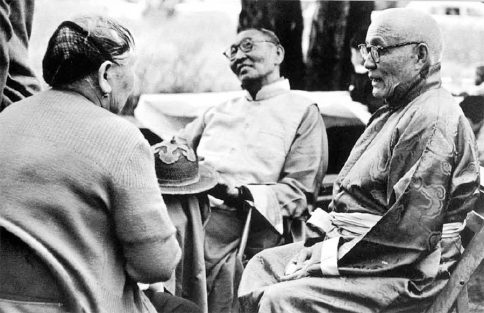
Vol. 3 / No. 4
By: Fred Adelman
The American Kalmyks
After an odyssey of more than three centuries a group of Mongolian Buddhists has come to Philadelphia and nearby New […]
View Article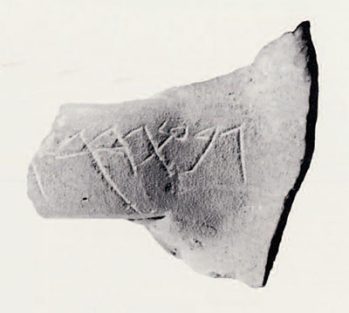
Vol. 3 / No. 4
By: James B. Pritchard
The Bible Reports on Gibeon
A new dimension was added to the archaeological remains at el-Jib by the discovery in 1956 of a handle from […]
View Article
Vol. 3 / No. 4
By: Ina Vanstan
Ancient Peruvian Textile Arts: Patchwork and Tie-dye From Pachacamac
Digging up the past includes more than the actual spade work with the essential on-the-spot record keeping and the basic […]
View Article
Vol. 3 / No. 4
By: William R. Coe
A Sculpture from Mexico
The New World archaeological collections of the University Museum are comprehensive, often superlative. But we are aware of certain shortcomings. […]
View Article
Vol. 3 / No. 4
By: Robert H. Dyson, Jr.
A Visit to a Chittagong Hill Tribe
Much of the initial information gathered on foreign peoples has been derived from the accounts of travelers. Such accounts are […]
View Article
Vol. 3 / No. 4
By: David Crownover
A Mask of Turtle Shell
Between the Cape of York Peninsula in Australia and the southeast tip of land along the Papuan Gulf of New […]
View Article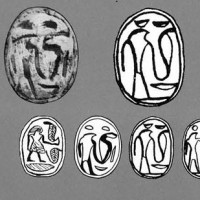
Vol. 3 / No. 4
By: Alan R. Schulman
Three Shipwrecked Scarabs
Among the objects recovered last summer by a University Museum expedition from a Bronze Age ship lost off Cape Gelidonya, […]
View Article
Vol. 4 / No. 1
By: Lee A. Parsons
A Fiji-Iroquois War Club: An Unusual Case of Diffusion
The museum anthropologist occasionally has the unique opportunity of making inferences in regard to cultural process from the study of […]
View Article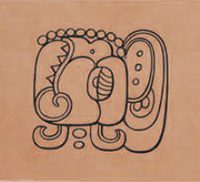
Vol. 4 / No. 1
By: Tatiana Proskouriakoff
The Lords of the Maya Realm
We Mayanists spend an inordinate amount of time deciphering half obliterated hieroglyphic texts. Often it seems that our results are […]
View Article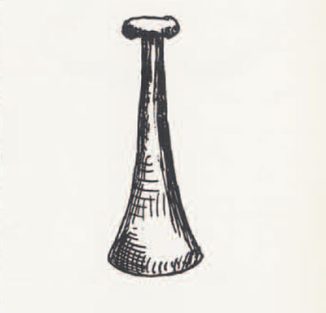
Vol. 4 / No. 1
By: Thor Heyerdahl
Sea Routes to Polynesia
Sea Routes to Polynesia was read by Mr. Heyerdahl at a dinner in honor of The Fellows of The University […]
View Article
Vol. 4 / No. 1
By: Edwin M. Shook and Alfred Kidder, II
The Painted Tomb At Tikal: An important discovery by the Museum's expedition in Guatemala.
One day, perhaps late in March of the year A.D. 457, masons set the final stone in the wall they […]
View Article
Vol. 4 / No. 1
By: MacEdward Leach
The Men Behind the Lore
The folklorist is a prosaic character alongside an archaeologist or ethnologist. Even a handful of arrowheads is likely to arouse […]
View Article
Vol. 4 / No. 1
By: Ruth Linker
Philippine Hats: On northern Luzon a man's suklang told his age, marital status, and village--and, sometimes, whether he was a successful head-hunter.
Sometime in the second decade of this century, the Misses Elizabeth H. and Sarah L. Metcalf made their way through […]
View Article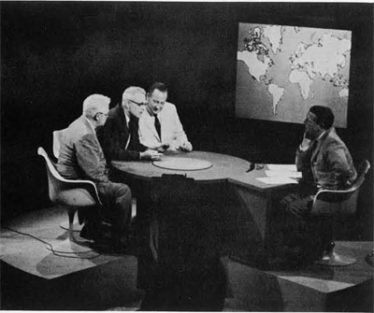
Vol. 4 / No. 1
By: George Dessart
What in the World: A Television Institution
In the realms with which Expedition is normally concerned, eleven years is not a long time. To the anthropologist, it is […]
View Article
Vol. 4 / No. 2
By: Eugene H. Palatsky
Danish Viking Ships
As Scandinavian life is closely related to the surrounding seas, it is natural for museum explorers in these northern countries […]
View Article
Vol. 4 / No. 2
By: Hattula Moholy-Nagy
A Tlaloc Stela From Tikal
Stela 32 was one of the outstanding finds of the 1961 field season at Tikal. The front of this broken […]
View Article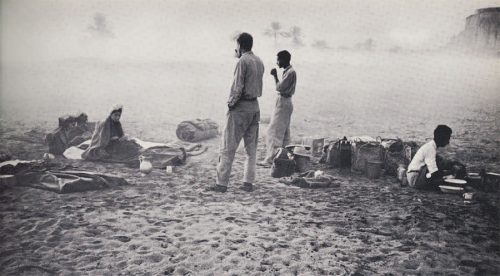
Vol. 4 / No. 2
By: George F. Dales, Jr.
A Search for Ancient Seaports
The three oldest civilizations of the old world were centered along the great river valleys of the Near and Middle […]
View Article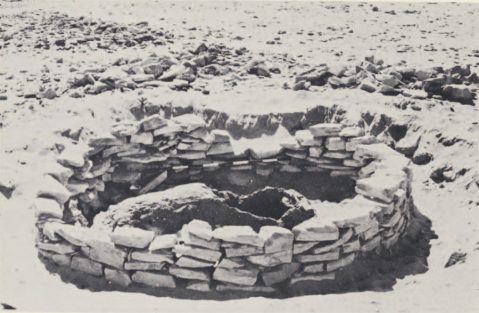
Vol. 4 / No. 2
By: William Kelly Simpson
Nubia: The University Museum - Yale University Expedition
Once before, in the years 1905-1911, the University Museum conducted a series of excavations in Nubia on the occasion of […]
View Article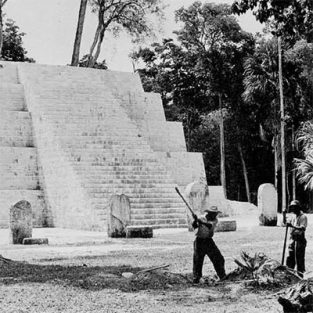
Vol. 4 / No. 2
By: Edwin M. Shook
Tikal: Problems of a Field Director
In 1955 the Guatemala Government reopened the airfield at Tikal, making possible the initiation of large-scale excavation and reconstruction there. […]
View Article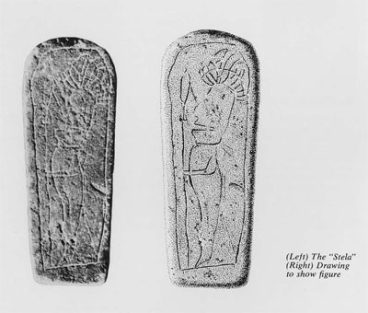
Vol. 4 / No. 3
By: William Haviland, Jr.
A “Miniature Stela” From Tikal
Three seasons of archaeological work at the site of Tikal, located in the rain forest of Guatemala’s department of the […]
View Article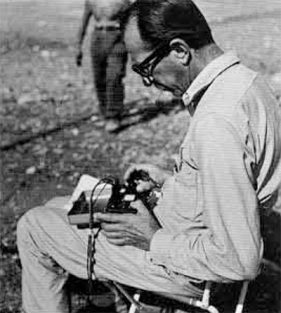
Vol. 4 / No. 3
By: Carlo M. Lerici
New Archaeological Techniques and International Cooperation in Italy
During the last quarter of 1961 an important and extraordinary archaeological survey was carried out in Italy. Its importance lies […]
View Article
Vol. 4 / No. 3
By: J. Eric S. Thompson
Convocation Address
At a special Convocation held in the Irvine Auditorium of the University of Pennsylvania on January 20, 1962, in observance […]
View Article
Vol. 4 / No. 3
By: Froelich Rainey
“This Unique Institution…”: Reflections on the 75th Anniversary of the University Museum
This is the 75th Anniversary of the University Museum. It also happens to be the 75th Anniversary of the Sun […]
View Article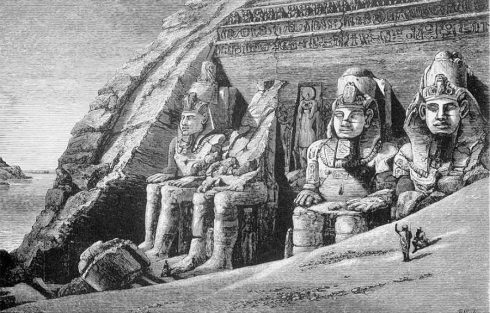
Vol. 4 / No. 3
By: David Crownover
Amelia Edwards and the New Aswan Dam
The second river of Paradise is said to have run through the Biblical land of Kush or Nubia. Modern Nubia […]
View Article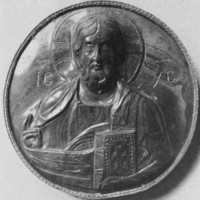
Vol. 4 / No. 3
By: Ljubica D. Popovich
A Byzantine Cameo
One of the most important glyptic collections in the United States is the Maxwell Sommerville Collection at the University Museum. […]
View Article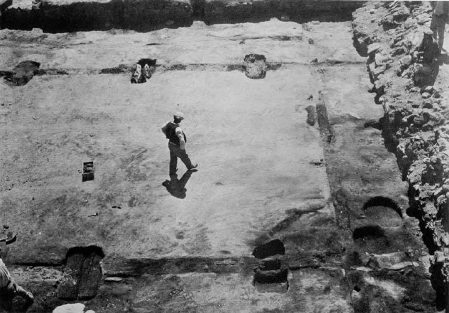
Vol. 4 / No. 4
By: Rodney S. Young
Gordion: Phrygian Construction and Architecture II
An earlier essay in Expedition (Vol. 2, No. 2, Winter 1960) attempted to answer the favorite question of visitors to almost […]
View Article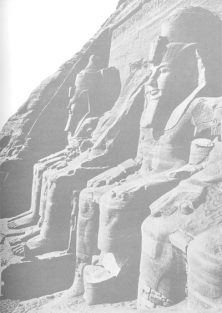
Vol. 4 / No. 4
By: Margaret Lavin
The Pharaoh’s Last Death
(The Egyptian Government plans to inundate Abu Simbel, in Nubia, for irrigation purposes, and the ancient monuments of the kings […]
View Article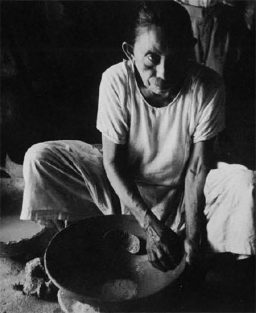
Vol. 4 / No. 4
By: Ruben E. Reina
The Ritual of the Skull in Peten, Guatemala
The history of the Department of Peten in Guatemala has unique features when compared to the rest of Mesoamerica. These […]
View Article
Vol. 4 / No. 4
By: Maurits N. van Loon
A Lion Bowl From Hasanlu
From June to September, 1960, Robert H. Dyson, Jr. led the fifth campaign of excavations at Hasanlu, south of Lake […]
View Article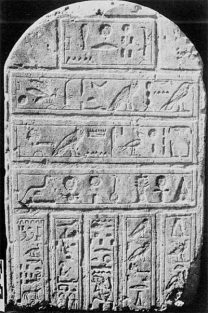
Vol. 4 / No. 4
By: William Kelly Simpson
Nubia: 1962 Excavations at Toshka and Arminna
The excavations of the Peabody Museum of Yale University and the University Museum of the University of Pennsylvania entered their […]
View Article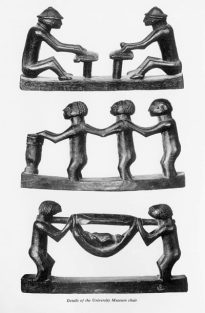
Vol. 4 / No. 4
By: David Crownover
Take the Chair
Only in recent times has the chair become a household necessity. From antiquity the chair was reserved for persons of […]
View Article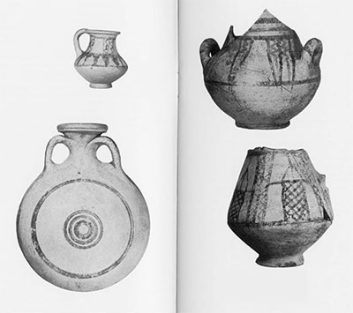
Vol. 5 / No. 1
By: William F. Albright
Recent Advances in Palestinian Archaeology
Palestine was always a very poor country, but at the same time it was a land bridge between continents. As […]
View Article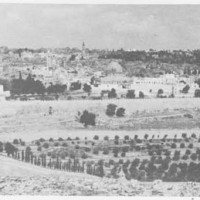
Vol. 5 / No. 1
By: Kathleen M. Kenyon
Biblical Jerusalem
Preface No one will question the statement that the center of Biblical archaeology is Jerusalem. Nearly a hundred years ago, […]
View Article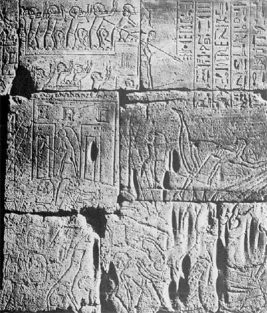
Vol. 5 / No. 1
By: James B. Pritchard
Civil Defense at Gibeon: "Gibeon was a great city...and all its men were mighty" - Joshua 10:2
Defense was the most important single consideration in the planning and building of a city in Biblical Palestine, a land […]
View Article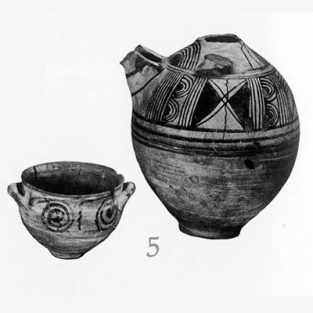
Vol. 5 / No. 1
By: Frances W. James
The Pottery of the Old Testament
From the moment when man is created of dust in the second chapter of Genesis to the moment, shortly before […]
View Article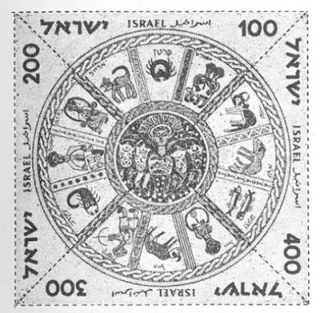
Vol. 5 / No. 1
By: Frances W. James
Lady Mary’s Monastery: An Early Christian church at Beth Shan excavated by a University Museum expedition.
That the Roman Empire enjoyed a long Indian summer in its distant province of Palestine is sometimes overlooked. Even before […]
View Article
Vol. 5 / No. 1
By: E.A. Speiser
Mesopotamian Motifs in the Early Chapters of Genesis
Biblical history proper begins with the call to Abraham to leave his native country and set out for a destination […]
View Article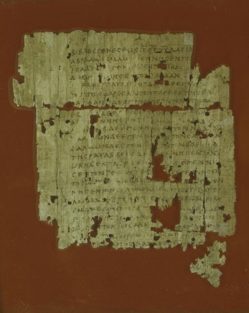
Vol. 5 / No. 1
By: Kenneth D. Matthews, Jr.
A Greek Fragment of the St. Matthew Gospel
On January 11, 1897 the Messrs. Bernard P. Grenfell and A.S. Hunt set a contingent of seventy men and boys […]
View Article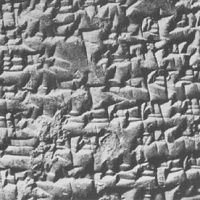
Vol. 5 / No. 1
By: Samuel Noah Kramer
The Biblical “Song of Songs” and the Sumerian Love Songs
The Biblical book commonly known as Solomon’s “Song of Songs” or “Canticles,” is like no other book in the Old […]
View Article
Vol. 5 / No. 1
By: Froelich Rainey
The Museum Expands: Editorial
With this issue of Expedition we are pleased to announce the establishment of a new section on Biblical Archaeology in the […]
View Article
Vol. 5 / No. 2
By: Alfred Kidder, II
A Unique Peruvian Weaver
The Museum has recently acquired a very unusual specimen. It is a pillow on which is seated an effigy of […]
View Article
Vol. 5 / No. 2
By: T. Cuyler Young, Jr.
Dalma Painted Ware
The archaeologist leaves for the field with his mind full of the historical problems he will solve through further excavation. […]
View Article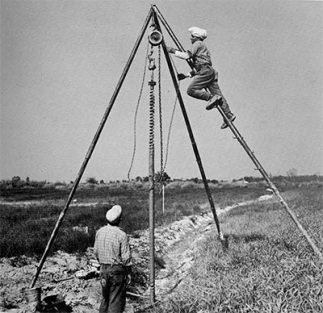
Vol. 5 / No. 2
By: Donald Freeman Brown
In Search of Sybaris: 1962
Down in the foot of Italy, or more accurately under the instep and facing the blue Ionian sea, lies the […]
View Article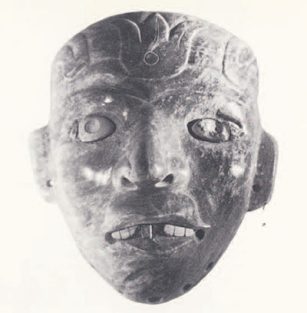
Vol. 5 / No. 2
By: William R. Coe and John J. McGinn
Tikal: The North Acropolis and An Early Tomb
What is it that motivates anticipation of a rich tomb as the trench is cut further and deeper back in […]
View Article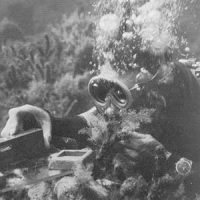
Vol. 5 / No. 2
By: Peter Throckmorton and John M. Bullitt
Underwater Surveys in Greece: 1962
During the winter of 1961-62, Admiral Th. Voutsaras, President of the Federation Hellenique…des Activities Subaquatiques, received reports of a group of […]
View Article
Vol. 5 / No. 2
By: Robert H. Dyson, Jr.
A Babylonian Lion in Toronto
Glazed lions molded in relief on baked brick facades are relatively rare on the North American continent.One of the best […]
View Article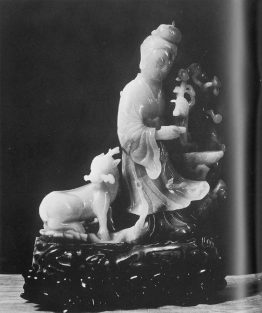
Vol. 5 / No. 2
By: Elisabeth H. West
Jade: Its Character and Occurrence
Jade, considered as the material used for prehistoric tools and objects of art, has numerous aspects of interest. The special […]
View Article
Vol. 5 / No. 2
By: Peter Harrison
A Jade Pendant From Tikal
During the 1962 season at Tikal, field work included investigation of the West Plaza, a large ceremonial group immediately west […]
View Article
Vol. 5 / No. 3
By: Margaret Plass
Above the Salt
The Mediaeval custom, among people of rank, of placing a large saltcellar, called a salt foot, near the middle of […]
View Article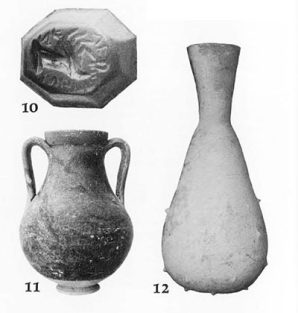
Vol. 5 / No. 3
By: G. Roger Edwards
Gordion: 1962
The account of the excavations at Gordion in 1962 takes up the thread of the narrative of this site’s recovery […]
View Article
Vol. 5 / No. 3
By: Theresa Howard Carter
Reconnaissance in Cyrenaica
Late in August we assembled in the humid oil-bemused town of Benghazi, major city of Libya’s Cyrenaican province. The irrepressible […]
View Article
Vol. 5 / No. 3
By: Robert H. Dyson, Jr.
Archaeological Scrap: Glimpses of History at Ziwiye
Letters are crossing a museum curator’s desk constantly from different and obscure parts of the globe telling of chance discoveries […]
View Article
Vol. 5 / No. 3
By: John H. Young
A Migrant City in the Peloponnesus
The excavations at Porto Cheli (ancient Halieis) are part of the Argolid Exploration Project of the University of Pennsylvania, under […]
View Article
Vol. 5 / No. 3
By: Hattula Moholy-Nagy
The Field Laboratory at Tikal
Archaeologists spend much time and a good deal of money digging. They spend months in the field recovering and recording […]
View Article
Vol. 5 / No. 3
By: David Crownover
Discoveries at Cyrene
“The parts of Libya about Cyrene,” as the King James version of the Acts of the Apostles styles it, at […]
View Article
Vol. 5 / No. 4
By: Frances Eyman
An Unusual Winnebago War Club and An American Water Monster
In 1839, Caleb W. Pusey, scion of a prominent Philadelphia family, was in the Winnebago country of Wisconsin, taking part […]
View Article
Vol. 5 / No. 4
By: Miguel Civil
Sumerian Harvest Time
Busy with important researches such as establishing a tight chronological frame for Mesopotamian history, clarifying the role of the various […]
View Article
Vol. 5 / No. 4
By: Ian Graham
Across the Peten to the Ruins of Machaquila
Any student of the Maya civilization will be aware of how incomplete a record there is of the ancient ceremonial […]
View Article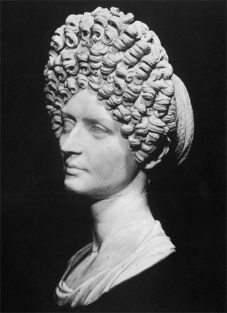
Vol. 5 / No. 4
By: Kenneth D. Matthews, Jr.
Saffron and Swan’s Grease
Beauty may well be in the eye of the beholder but for thousands of years many persons have felt it […]
View ArticleVol. 5 / No. 4
By: Ruben E. Reina
The Potter and The Farmer: The Fate of Two Innovators in a Maya Village
Chinautla is a small Maya town of approximately 1500 people, descendants of the Pokomam-speaking group which once occupied large portions […]
View Article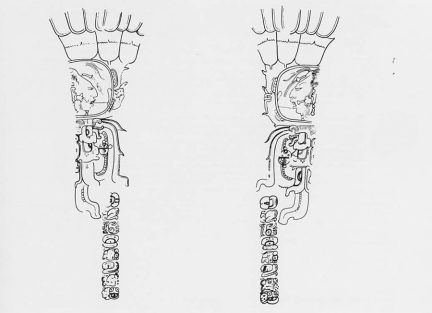
Vol. 6 / No. 1
By: Aubrey S. Trik
The Splendid Tomb of Temple I At Tikal, Guatemala
“Pothunter,” grave-robber,” and “tomb-looter” are not respectable epithets in the vocabulary of archaeology. However, these similar activities are sometimes dignified […]
View ArticleVol. 6 / No. 1
By: Linton Satterthwaite
Note on Hieroglyphs on Bone From the Tomb Below Temple I, Tikal
Hieroglyphs incised on bone artifacts from the spectacular Burial 116 below Temple I, Tikal, constitute a major increment to the […]
View Article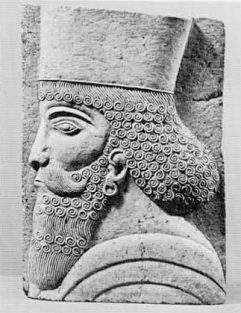
Vol. 6 / No. 1
By: John D. Cooney
Assorted Errors In Art Collecting
In assembling the exhibition of Egyptian forgeries for The Brooklyn Museum to open in November 1963* as The Forger’s Progress it […]
View Article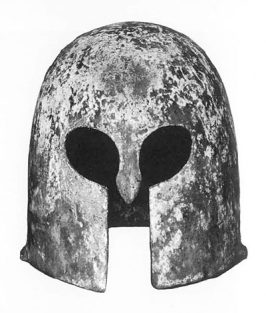
Vol. 6 / No. 1
By: George Radan
Italic Helmets
She found him sweating as he turned there and there to his bellows busily, since he was working on twenty […]
View Article
Vol. 6 / No. 1
By: Froelich Rainey, Rodney S. Young, Samuel Noah Kramer and William R. Coe
Expedition News – Fall 1963
South Asia The Museum’s Director, Dr. Rainey, and Professor W. Norman Brown, Chairman of the South Asia Regional Studies Department […]
View Article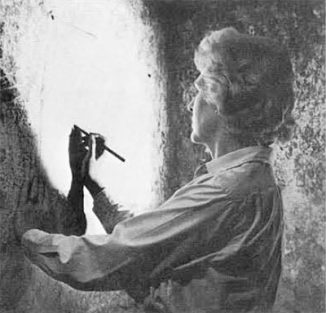
Vol. 6 / No. 1
By: Helen T. Webster
Tikal Graffiti
Visitors to Tikal, the great Maya religious site in the lowlands of Peten, Guatemala, are always intrigued by the many […]
View Article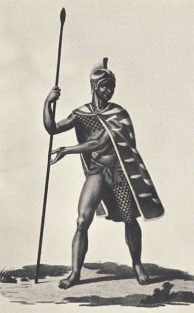
Vol. 6 / No. 2
By: William H. Davenport
Hawaiian Feudalism
When Captain James Cook, greatest of all Pacific explorers, accidentally discovered the Hawaiian Islands in 1778, he also discovered that […]
View Article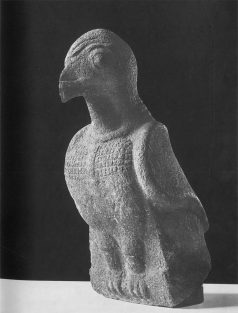
Vol. 6 / No. 2
By: Machteld J. Mellink
A Votive Bird from Anatolia
A stone hawk looks quizzically at the visitors of the special exhibit of the Lipchitz Collection. The label calls him […]
View Article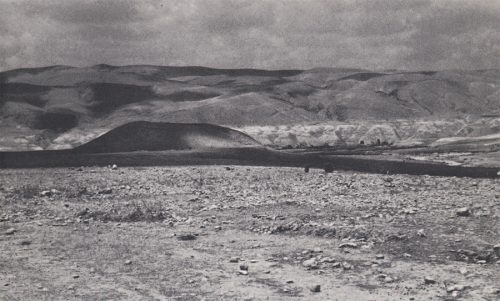
Vol. 6 / No. 2
By: James B. Pritchard
Reconnaissance in Jordan
“How do you go about finding a site for excavation?” is a question frequently put to an archaeologist. With the […]
View Article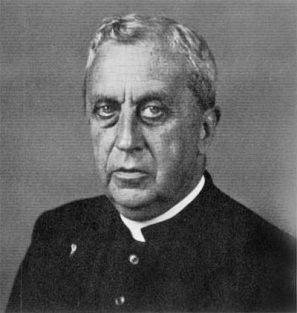
Vol. 6 / No. 2
By: C.J. Gadd
Leon Legrain, D.D., Sc.D.
For over thirty years Dr. Legrain served as Curator of the Babylonian Section in the University Museum, an officer as […]
View Article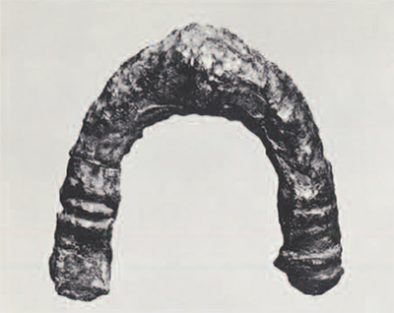
Vol. 6 / No. 2
By: Oscar W. Muscarella
Ancient Safety Pins: Their Function and Significance
One of the most interesting types of archaeological research is that concerned with tracing the history of a particular object […]
View Article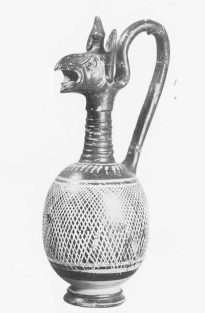
Vol. 6 / No. 2
By: Louise Scott
Wandering Griffin
(On seeing an Italian jug in the University Museum) The Adriatic shore of Italy across the sea from the Illyrian […]
View Article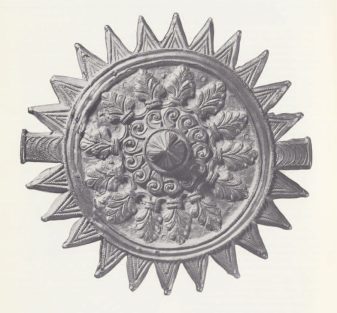
Vol. 6 / No. 2
By: David Crownover
An Ashanti Soul-Washer Badge
“In the beginning God created Black as well as White Men…God having created these two sorts of Men offered two […]
View Article
Vol. 6 / No. 3
By: A. Ghosh
Archaeology in India
Official archaeology in India is now over a century old: in December 1961 the Archaeological Survey of India, a Government […]
View Article
Vol. 6 / No. 3
By: Samuel Noah Kramer
The Indus Civilization and Dilmun, the Sumerian Paradise Land
One of the most significant and impressive archaeological achievements of the twentieth century centers around the discovery of the ancient […]
View Article
Vol. 6 / No. 3
By: Arthur C. Clarke
Ceylon and the Underwater Archaeologist
Ceylon, where I have lived since 1956, is almost a virgin territory for the underwater archaeologist. My partner, Mike Wilson, […]
View ArticleVol. 6 / No. 3
By: Peter Throckmorton
The Great Basses Wreck
When I arrived in Ceylon, a great deal of preliminary research had been done by Arthur Clarke and Mike Wilson […]
View Article
Vol. 6 / No. 3
By: W. Norman Brown
The Indian Games of Pachisi, Chaupar, and Chausar
The Museum of the University of Pennsylvania owns several “boards”–they are actually made of cloth–used for playing the games known […]
View Article
Vol. 6 / No. 3
By: George F. Dales
The Mythical Massacre at Mohenjo-Daro
Nothing delights the archaeologist more than excavating the ruins from some ancient disaster–be it a flood, earthquake, invasion, or massacre. […]
View Article
Vol. 6 / No. 3
By: F.A. Khan
Archaeology in Pakistan
Pakistan has been a cradle of civilizations through the ages. It possesses one of the oldest and most distinguished cultural […]
View Article
Vol. 6 / No. 4
By: James B. Pritchard
Two Tombs and a Tunnel in the Jordan Valley: Discoveries at the Biblical Zarethan
The cutting of the first trench into any large antiquity site is bound to be significant, especially if the mound […]
View Article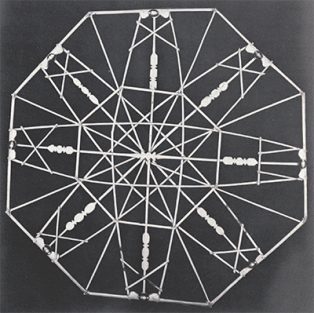
Vol. 6 / No. 4
By: William H. Davenport
Marshall Islands Cartography
Cartography is an invention that is seldom encountered among primitive, that is non-literate, peoples, for it seems to be a […]
View ArticleVol. 6 / No. 4
By: Percy C. Madeira, Jr.
Men In Search of Man: The first seventy-five years of the University Museum of the University of Pennsylvania.
This book, recently published by the University of Pennsylvania Press, is the work of a man whose concern for the […]
View Article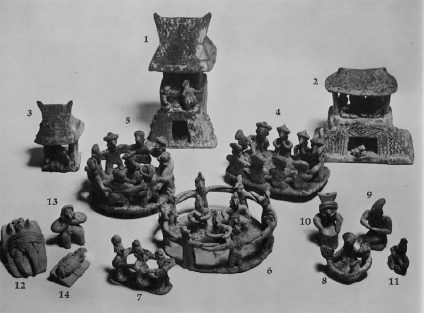
Vol. 6 / No. 4
By: Stephan F. DeBorhegyi
The Enduring Villages of Western Mexico
At the time of the Spanish Conquest, A.D. 1520-1535, the great American civilizations were those of the Pueblo in the […]
View Article
Vol. 6 / No. 4
By: Ina Vanstan
Rags and Tatters Among the Textiles of Peru
The making of reconstructions of various kinds constitutes a large part of any archaeologist’s work. The final aim of such […]
View Article
Vol. 6 / No. 4
By: Frances Eyman
Lacrosse and the Cayuga Thunder Rite
Lacrosse, the great combative team sport among Indians of eastern North America, is today the national sport of canada and […]
View Article
Vol. 6 / No. 4
By: J. Alden Mason
H. Newell Wardle, 1875-1964
With the death of Harriet Newell Wardle in the Taylor Hospital, Ridley Park, on May 20th, at the age of […]
View Article
Vol. 6 / No. 4
By: Froelich Rainey
Al Bendiner
Probably you always remember your friends in odd circumstances. I like to remember Al Bendiner early on a Sunday morning, […]
View Article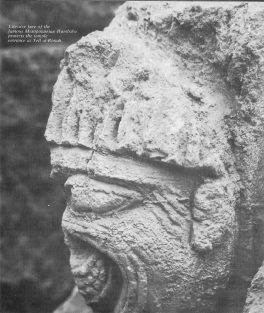
Vol. 7 / No. 1
By: Theresa Howard Carter
Early Assyrians in the Sinjar
The 1964 staff of this expedition consisted of Mrs. Carter of the University Museum and David Oates, Director of the […]
View Article
Vol. 7 / No. 1
By: William H. Davenport
Sculpture from La Grande Terre
From April 10 to May 31, 1964 the University Museum presented an exhibition of sculpture and other objects from the […]
View Article
Vol. 7 / No. 1
By: David Crownover
Some Frit from Northern Mesopotamia
Frit, the word derived from the Italian “fritta,” (fried), is a chemical compound made up of silicate of lime and […]
View Article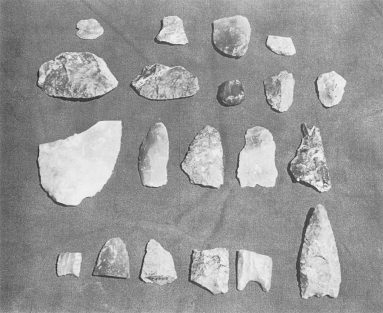
Vol. 7 / No. 1
By: Robert Stuckenrath, Jr.
The Debert Site: Early Man in the Northeast
A few miles inland of the vast tidal flats of Novia Scotia’s Minas Basin lies a wasted field of red […]
View Article
Vol. 7 / No. 1
By: Margaret Plass
The Fetish That Knew Too Much
A powerful fetish that also served as an oracle in the Kra or Tchien tribe of Liberia has recently been […]
View Article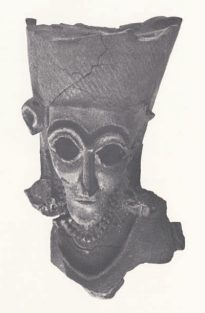
Vol. 7 / No. 1
By: Robert H. Dyson, Jr.
A Stranger From the East
The blank, staring eyes and elongated chin of this portrait have a dark, haunting quality about them which stays in […]
View Article
Vol. 7 / No. 2
By: George F. Bass and Lloyd P. Wells
The Museum Assembles A Fleet: Two Views
By George F. Bass It was surely the most exciting day of my life. When I stepped from the limousine […]
View Article
Vol. 7 / No. 2
By: Emlen Etting
Aghion Oros: An Artist's View of Mount Athos
The visit to the Aegean about which Mr. Etting writes was aboard the yacht Doudouna, chartered by Henry McIlhenny. Other guests were John […]
View Article
Vol. 7 / No. 2
By: Elizabeth K. Ralph
The Electronic Detective and the Case of the Missing City
The expeditions in search of Sybaris, directed by Prof. F. Rainey (University Museum), have been conducted in collaboration with Dr. […]
View Article
Vol. 7 / No. 2
By: Linton Satterthwaite
Maya Practice Stone-Carving At Piedras Negras
The five numbered “Miscellaneous Sculptured Stones” illustrated here were gathered by Museum expeditions to Piedras Negras, Guatemala, in the ’30’s. […]
View Article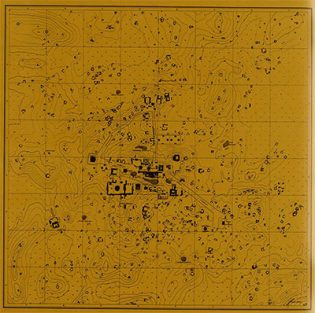
Vol. 7 / No. 3
By: William A. Haviland
Prehistoric Settlement at Tikal, Guatemala
The ancient Maya ruins of Guatemala and Yucatan have held a fascination for layman and scholar alike every since the […]
View Article
Vol. 7 / No. 3
By: Dennis E. Puleston
The Chultuns of Tikal
Modern archaeology in all parts of the world abounds with unsolved mysteries and riddles. The Classic Maya area of Central […]
View Article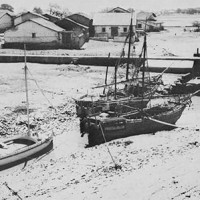
Vol. 7 / No. 3
By: S.R. Rao
Shipping and Maritime Trade of the Indus People
Until recently it was generally believed that the Indus civilization was land-locked and its limited trade route leading to Mesopotamia […]
View Article
Vol. 7 / No. 3
By: Richard C. Bull
The Metamorphosis of One Collector
Collectors are, I am convinced, born and not made. Those who have the instinct will collect something, just as surely […]
View Article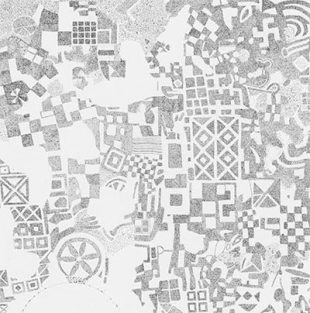
Vol. 7 / No. 3
By: Rodney S. Young
Early Mosaics at Gordion
Few excavators are inclined to utter cries of joy when they happen upon a mosaic floor. Mosaics cannot in good […]
View Article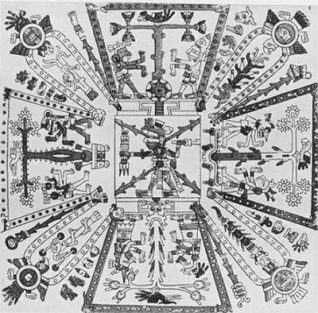
Vol. 7 / No. 4
By: Frances Eyman
American Indian Gaming Arrows and Stick-Dice
Games and gambling seem to be world-wide in their appeal. Only the most archaic of hunting cultures, those of the […]
View Article
Vol. 7 / No. 4
By: George F. Dales
Civilization and Floods in the Indus Valley
In addition to Dr. Dales as Field Director, the official staff included the Museum’s architect Aubrey Trik and Stephen Rees-Jones […]
View Article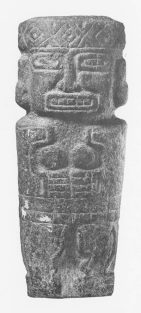
Vol. 7 / No. 4
By: Alfred Kidder, II
Two Stone Figures from the Andes: Question: What Part?
One of the most exasperating but at the same time challenging things that can happen to an archaeologist working in […]
View Article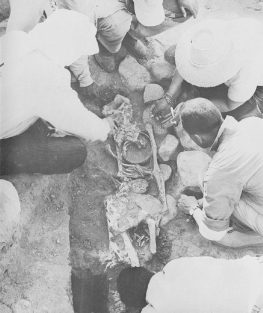
Vol. 7 / No. 4
By: James B. Pritchard
A Cosmopolitan Culture of the Late Bronze Age
Surely them ost surprising and possibly the most significant result achieved from two seasons of digging at Tell es-Sa’idiyeh was […]
View Article
Vol. 7 / No. 4
By: Frances W. James
A Milestone in Palestinian Archaeology
The University Museum takes pleasure in congratulating the Palestine Exploration Fund on its centenary and in recording its appreciation of […]
View Article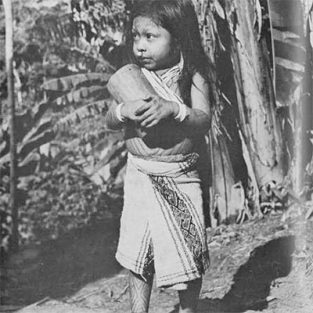
Vol. 7 / No. 4
By: Kenneth M. Kensinger
The Cashinahua of Southeastern Peru
The Cashinahua, classified linguistically as Panoan, live along the Curanja River of southeastern Peru and along upper reaches of the […]
View Article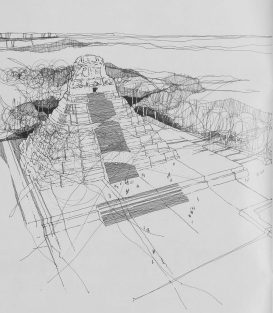
Vol. 8 / No. 1
By: Alfred Kidder, II
Tikal: 1965
As we approach the final year of extensive archaeological work at Tikal it is quite obvious, as the reader of Dr. Coe’s […]
View Article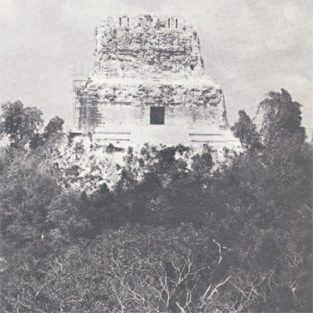
Vol. 8 / No. 1
By: William R. Coe
Tikal: Ten Years of Study of a Maya Ruin in the Lowlands of Guatemala
Introduction By the end of 1966 the fieldwork of the Tikal Project will have ended, though understandable with small sense […]
View Article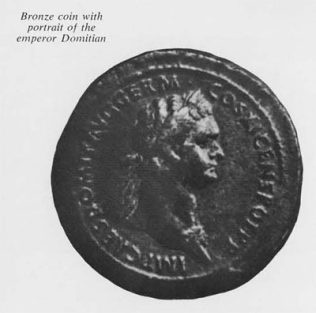
Vol. 8 / No. 2
By: Kenneth D. Matthews, Jr.
Domitian: The Lost Divinity
Titus Flavius Domitianus–a handsome man, graceful of carriage, rather tall in stature, quick witted and intelligent though not well educated […]
View Article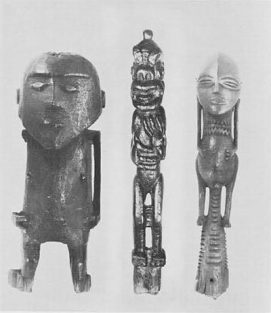
Vol. 8 / No. 2
By: Ernest S. Dodge
Following Captain Cook Around Europe
In the summer of 1957 I had the pleasure of visiting the anchorages of Captain James Cook in the Society […]
View Article
Vol. 8 / No. 2
By: Ross Parmenter
Break-Through on The “Lienzo De Filadelfia”
Research problems, in a way, are like log jams. For a long time they seem to present an unbudgeable wall. […]
View Article
Vol. 8 / No. 2
By: Samuel Noah Kramer
Ephraim Avigdor Speiser
On June 15, 1965, Ephraim Avigdor Speiser, creative scholar, inspiring teacher, gifted writer, died in his Elkins Park home in […]
View Article
Vol. 8 / No. 2
By: Boutau K. Efot
The Tale of Pupily-Eyeballs-Thing: A Truk Ghost Story
Translator’s note: In 1964-65 I spent ten months with my wife and two sons on leave from the University of Pennsylvania […]
View Article
Vol. 8 / No. 3
By: Froelich Rainey
Return to the Arctic
At the camp of Onion Portage on the Kobuk River, I was struck by the number of youngsters who played […]
View Article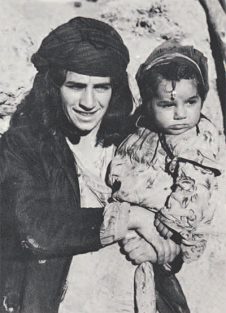
Vol. 8 / No. 3
By: Patty Jo Watson
Clues to Iranian Prehistory in Modern Village Life
In 1956, while both graduate students in anthropology at the University of Chicago, Maxine R. Kleindienst and I wrote a […]
View Article
Vol. 8 / No. 3
By: Jane C. Goodale
Imlohe and The Mysteries of The Passismanua, Southwest New Britain
There was a man called Imlohe, the young man, Gospo, began his story. Imlohe made a very big garden–as big […]
View Article
Vol. 8 / No. 3
By: Frances Eyman
A Grizzly Bear Carving From The Missouri Valley
Some of the most compelling art objects made by the North American Indian are small, and their effect is due […]
View Article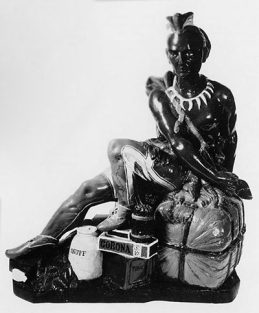
Vol. 8 / No. 4
By: Elisabeth W. Russell
The “Vanished American”
During the summer of 1966 there has been an exhibition at the University Museum of Cigar Store Indians–25 figures borrowed […]
View Article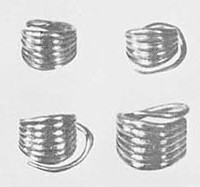
Vol. 8 / No. 4
By: George F. Bass
Troy and Ur: Gold Links Between Two Ancient Capitals
The early Bronze Age in much of the Aegean, Near East, and Eastern Europe might better be called the Early […]
View Article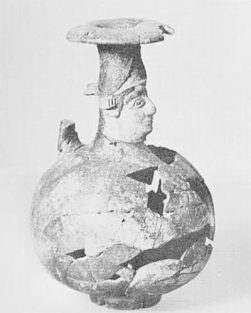
Vol. 8 / No. 4
By: Giorgio Buchner
Pithekoussai: Oldest Greek Colony in the West
The Ischia project, sponsored by the University Museum in close collaboration with the Superintendency of Antiquities of Naples, was started […]
View Article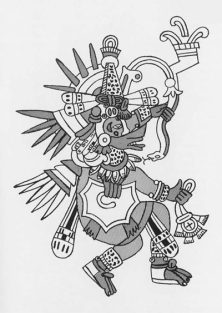
Vol. 8 / No. 4
By: Stephan F. De Borhegyi
The Wind God’s Breastplate
Any student of mythology knows that the many gods in the various religious pantheons of the world, as represented in […]
View Article
Vol. 9 / No. 1
By: Ruben E. Reina
A Peninsula That May Have Been An Island: Tayasal, Peten, Guatemala.
Since the beginning of this century archaeologists and scientists in related disciplines have looked for clues and facts relating to […]
View Article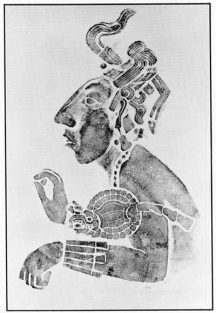
Vol. 9 / No. 1
By: Merle Green
Classic Maya Rubbings
The predominantly monumental art of the ancient Maya civilization in Classic times, from the third to the tenth century A.D., […]
View Article
Vol. 9 / No. 1
By: Vimala S. Begley
The Ganga-Yamuna Basin: In the First Millennium B.C.
Due to the persistent efforts of archaeologists in India one of the most exciting developments which is taking place in […]
View ArticleVol. 9 / No. 1
By: Ann Chowning
Lakalai Revisited
Except for the few who have managed to work in areas virtually unaffected by Western civilization, ethnographers are all too […]
View Article
Vol. 9 / No. 2
By: Ellen L. Kohler
Ultimatum to Terracotta-Forgers
On the shelves of the classical study-storage a remarkably beautiful terracotta figurine has stood for many years. The figure is […]
View Article
Vol. 9 / No. 2
By: George F. Guillemin
The Ancient Cakchiquel Capital of Iximché
Guatemala, when thought of archaeologically, usually recalls rainforests and the ruined temples and palaces of a Piedras Negras or a Tikal. For […]
View Article
Vol. 9 / No. 2
By: Keith A. Dixon
The First Tikal-Inspired Fake: A Stone Sculpture from West Mexico
At Tikal, Guatemala, over the past ten years, the University Museum’s excavations have turned up some of the most spectacular […]
View Article
Vol. 9 / No. 2
By: Alfred Kidder, II
Percy Childs Madeira, Jr.: February 8, 1889 - January 29, 1967
Percy Childs Madeira was a member of the Board of Managers of the University Museum for thirty-six years and served […]
View Article
Vol. 9 / No. 2
By: Kenneth M. Kensinger
Change and the Cashinahua
In the Summer, 1965 number of Expedition, we published a copy of the first letter written by a Cashinahua in his own […]
View Article
Vol. 9 / No. 2
By: Francis E. Johnston, Richard L. Jantz and Geoffrey F. Walker
Physical Anthropology of the Cashinahua
As we have learned from the archaeological record, the American Indian is derived primarily from inhabitants of northeast Asia who […]
View Article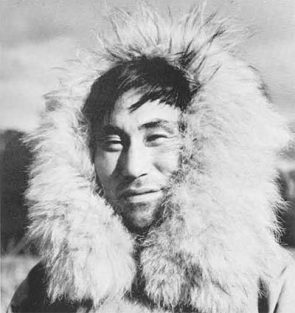
Vol. 9 / No. 3
By: Herbert L. Alexander
Alaskan Survey
An expedition into the wilderness north of the Brooks Range in Alaska, where the nearest people are four days’ walk […]
View Article
Vol. 9 / No. 3
By: Oliver C. Colburn
A Habitation Area of Thurii
The expedition in search of Sybaris and the later colony Thurii, directed by Prof. Froelich Rainey of the University Museum, […]
View Article
Vol. 9 / No. 3
By: Dennis E. Puleston and Donald W. Callender, Jr.
Defensive Earthworks at Tikal
For the weeks, months, and even years one spends carrying out fairly routine work there is always the possibility of […]
View Article
Vol. 9 / No. 3
By: Machteld J. Mellink
Mary Hamilton Swindler: January 1, 1884 - January 16, 1967
Mary Hamilton Swindler, Consulting Fellow of the University Museum, died on January 16, 1967. Mary Swindler, through a long career […]
View Article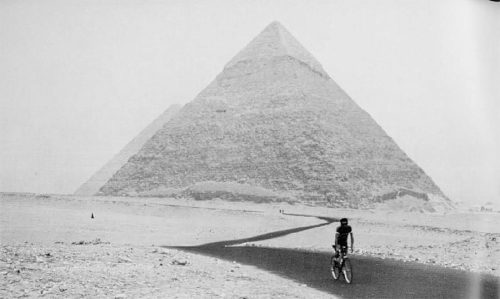
Vol. 9 / No. 3
By: Froelich Rainey
The Archaeology Explosion
A recent issue of Courier published by UNESCO, makes the point that archaeological monuments and museums spark tomorrow’s tourist explosion in […]
View Article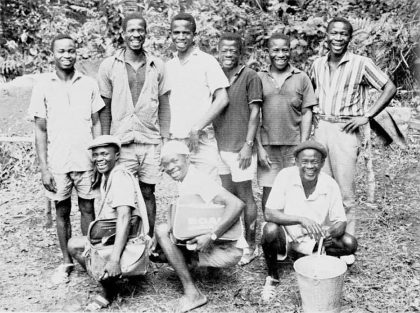
Vol. 9 / No. 3
By: Carleton S. Coon
Yengema Cave
Like other non-professional soldiers during the second World War I made some close friends whom I saw little if ever […]
View Article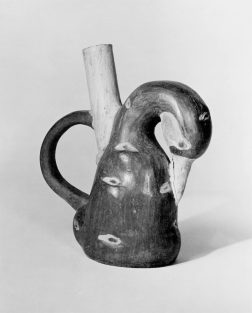
Vol. 9 / No. 4
By: Alfred Kidder, II
A Mochica Potato Bird
Peru is famous for rich, natural resources, animal, vegetable and mineral, that about in its varied geographical zones from the […]
View Article
Vol. 9 / No. 4
By: Froelich Rainey
Marie Lemoine Harrison
We of the University Museum staff are all too sharply reminded by the death of Mrs. Charles C. Harrison, Jr. […]
View Article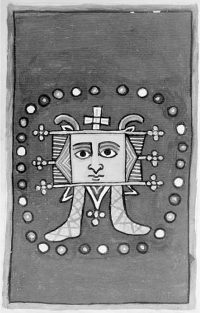
Vol. 9 / No. 4
By: Allan Young
Varieties of Amhara Graphic Art
The Amhara are the politically dominant people of modern Ethiopia. Agriculturalists of the northern highlands, they are the descendants of […]
View Article
Vol. 9 / No. 4
By: Samuel Noah Kramer
Reflections on the Mesopotamian Flood: The Cuneiform Data New and Old
Historiography, the writing of history, was hardly a favorite subject of the ancient Mesopotamian academicians and men of letters. Lacking […]
View Article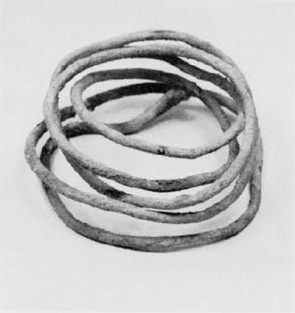
Vol. 9 / No. 4
By: Vimala S. Begley
Archaeological Exploration in Northern Ceylon
In 1926 Hocart wrote that “what is needed for Ceylon archaeology is a stratified site” (A.M. Hocart in Archaeological Survey of […]
View Article
Vol. 9 / No. 4
By: George F. Dales
South Asia’s Earliest Writing: Still Undeciphered
The introduction of the art of writing is recognized as one of the most crucial advances in the history of […]
View Article
Vol. 10 / No. 1
By: Judy Birmingham
Pottery Making in Andros
When in 1966, it seemed likely that an expedition from Sydney might one day undertake archaeological excavations in the Greek […]
View Article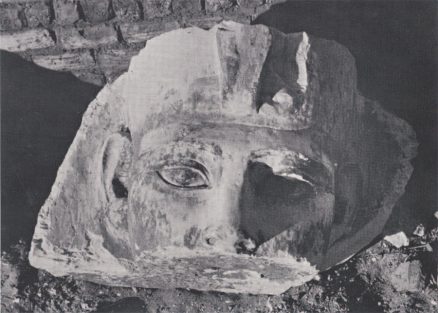
Vol. 10 / No. 1
By: David O'Connor
Abydos: A Preliminary Report of the Pennsylvania-Yale Expedition, 1967
In February, 1967, a combined expedition of the University Museum and Yale University commenced excavations at Abydos in Southern Egypt, […]
View Article
Vol. 10 / No. 1
By: Ray Winfield Smith
The Akhenaten Temple Project
Since October 1966, an expedition of the University Museum has been engaged in a study of polychrome relief-cut blocks from […]
View Article
Vol. 10 / No. 1
By: Brunilde Sismondo Ridgway
The Bronze Lady From the Sea
Visitors to the University Museum between October 16 and November 27, 1966, had the opportunity of admiring one of the […]
View Article
Vol. 10 / No. 2
By: James B. Pritchard
An Eighth Century Traveller
One of the most intriguing artifacts discovered in four seasons of excavation at Tell es-Sa’idiyeh in Jordan is the small […]
View Article
Vol. 10 / No. 2
By: John Witthoft
Flint Arrowpoints: From the Eskimo of Northwestern Alaska
Introduction Knowledge of the Stone Age grows by slow steps. Tools and techniques of ancient men are unfamiliar to us, and we […]
View Article
Vol. 10 / No. 2
By: Lanny Bell
The Work of the University Museum at Thebes
On the west bank of the Nile, across from the town of Luxor and the Great Temple of the god […]
View Article
Vol. 10 / No. 2
By: Alfred Kidder, II and Linton Satterthwaite
J. Alden Mason: January 14, 1885—November 7, 1967
The death of J. Alden Mason brought sadness to all of his colleagues at the University Museum and to many […]
View ArticleVol. 10 / No. 2
By: William H. Davenport
Sculpture of the Eastern Solomons
With the special exhibition from the Eastern Solomon Islands (December 8 – May 31) the University Museum presents a new […]
View Article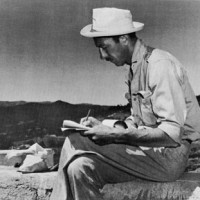
Vol. 10 / No. 3
By: John M. Dimick
Aubrey S. Trik: June 30, 1910—March 11, 1968
The Museum has experienced a grievous loss by the death of Aubrey Trik, leading member of the Technical Staff and […]
View Article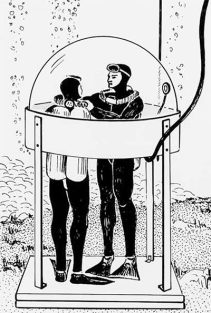
Vol. 10 / No. 3
By: George F. Bass
The Turkish Aegean: Proving Ground for Underwater Archaeology
In the spring of 1960, seven men and women arrived in Turkey to excavate a Bronze Age shipwreck ninety-five feet […]
View Article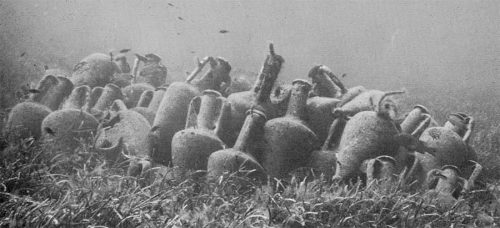
Vol. 10 / No. 3
By: Michael L. Katzev and Susan Womer Katzev
The Search Below
The 1967 survey expedition was made possible through the generous sponsorship of the University Museum; the Cyprus Mines Corporation of […]
View Article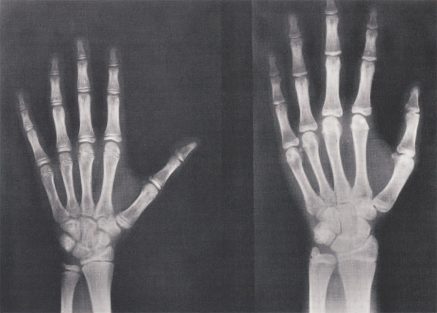
Vol. 10 / No. 3
By: Francis E. Johnston
Anthropological Aspects of Human Physical Growth
As the physical anthropologist seeks to understand the meaning of the striking range of variability which confronts him he is […]
View Article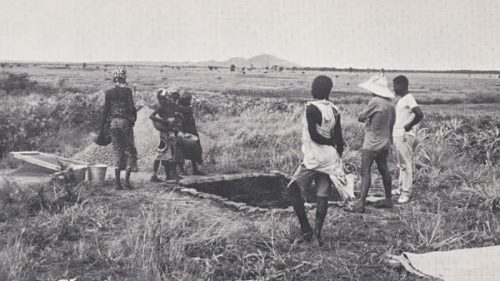
Vol. 10 / No. 3
By: Nicholas David
Archaeological Reconnaissance in Cameroon
In spite of its central location at the hinge of Africa, between the Congo basin and the West, the desert […]
View ArticleVol. 10 / No. 3
By: Maude de Schauensee
Portable Architecture
What is a Bedouin tent but an eminently practical, completely portable house demonstrating all the principal elements of permanent architecture. […]
View Article
Vol. 10 / No. 4
By: Christopher L. Hamlin
A Proto-Elamite Account Tablet from Susa
Among the objects recently acquired by the Museum in its exchange with the Musee du Louvre is the Proto-Elamite account […]
View Article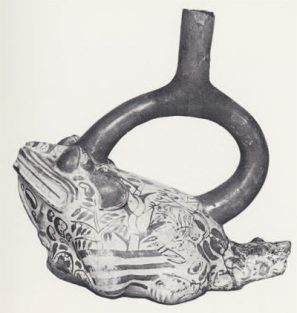
Vol. 10 / No. 4
By: Alfred Kidder, II
Two Peruvian Frogs
On a recent expedition to my optician’s on Chestnut Street I spotted an interesting Peruvian pottery frog effigy (now Museum […]
View ArticleVol. 10 / No. 4
By: Robert Netting
Kofyar Building in Mud and Stone
The Kofyar are a tough, hard working, notably independent people living in Northern Nigeria. They are hill men whose individualism […]
View Article
Vol. 10 / No. 4
By: Robert H. Dyson, Jr.
Early Works on the Acropolis at Susa: The Beginning of Prehistory in Iraq and Iran
In 1859 Rawlinson wrote in the Journal of the Royal Asiatic Society: “It would be particularly interesting to excavate the great […]
View ArticleVol. 10 / No. 4
By: Leslie R. Langton
The Restoration of a Bronze Plaque From Benin
In April 1967 the University Museum of Philadelphia sent me fragments of a Benin Bronze plaque (AF 2069) with a […]
View Article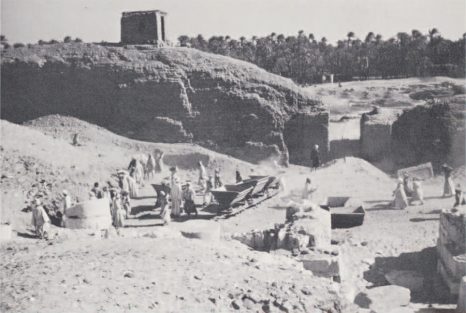
Vol. 11 / No. 1
By: David O'Connor
Field Work in Egypt
The University Museum has at present three field expeditions active in Egypt, continuing a tradition of Egyptological research begun by […]
View Article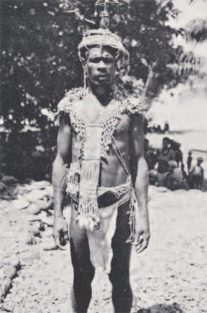
Vol. 11 / No. 1
By: William H. Davenport
Anthropology in the British Solomon Islands
Since 1964 field research in the British Solomon Islands has been primarily concerned with ethnographic studies. Last winter’s special exhibition […]
View Article
Vol. 11 / No. 1
By: Herbert L. Alexander
Alaska: Archaeology in the Atigun Valley
In 1966 the University Museum and the Society of the Sigma Xi supported a three-week survey of the Atigun Valley […]
View Article
Vol. 11 / No. 1
By: George F. Dales
The South Asia Section
The South Asia Section can attribute its genesis in large part to a belief in the traditions of the ancient […]
View Article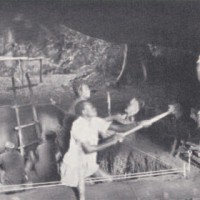
Vol. 11 / No. 1
By: Carleton S. Coon
Excavations at Yengema Cave: Sierra Leone
During November, 1965, Mrs. Coon and I excavated a cave at Yengema, Kono District, Southeastern Province, Sierra Leone. We were […]
View Article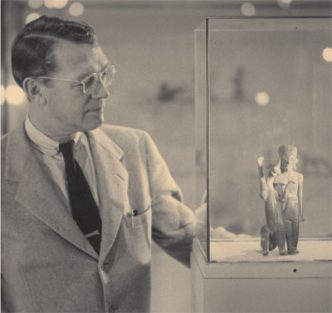
Vol. 11 / No. 1
By: Froelich Rainey
Editorial
All of us who are interested in the story of the world’s many different civilizations must wonder at the ferment […]
View Article
Vol. 11 / No. 1
By: Alfred Kidder, II
The Conservation Program at Tikal
In 1956, when the Museum undertook the tremendous task of making a thorough archaeological study of the ruins of Tikal, […]
View Article
Vol. 11 / No. 1
By: George F. Bass and Laurence T. Joline
Problems of Deep Wreck Identification
Readers of recent numbers of Expedition and the National Geographic are aware already of the University Museum’s search for two specific shipwrecks off […]
View Article
Vol. 11 / No. 1
By: Ward H. Goodenough
Arts and Crafts in Truk
My first field work in the Pacific Islands was for seven months in the great complex atoll of Truk in […]
View Article
Vol. 11 / No. 1
By: Rodney S. Young
Operation Gordion
After nearly twenty years of activity at Gordion it is perhaps well to look back, to recall the reasons for […]
View Article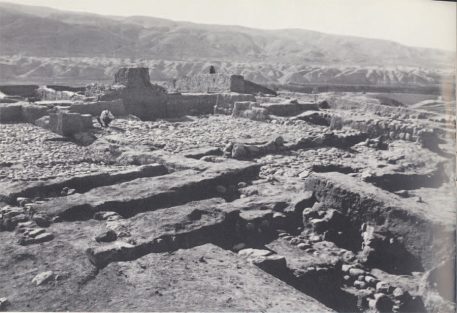
Vol. 11 / No. 1
By: James B. Pritchard
The Palace of Tell es-Sa’idiyeh
Since we began to excavate at Tell es-Sa’idiyeh in 1964 not a season has gone by without our gaining some […]
View Article
Vol. 11 / No. 1
By: Ruben E. Reina
Sixteenth Century Guatemala: Archivos de Indias, Seville
After several decades of archaeological and ethnographic field work in the Maya area, the need to study, from an ethnographic […]
View Article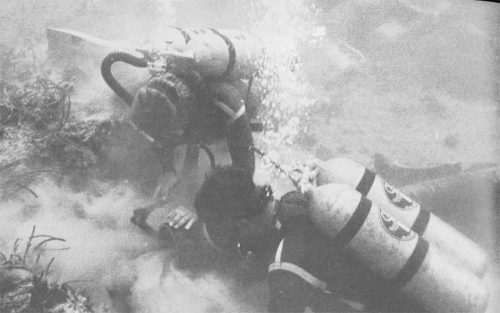
Vol. 11 / No. 2
By: Michael L. Katzev
The Kyrenia Shipwreck
The University Museum’s excavation of the Kyrenia shipwreck in 1968 was carried out with the kind permission of the Department […]
View ArticleVol. 11 / No. 2
By: Sarah Dublin
A Greek Acropolis and Its Goddess
At the southern tip of the Argolid peninsula a sheltered harbor is joined to the Argolic Gulf by a narrow […]
View Article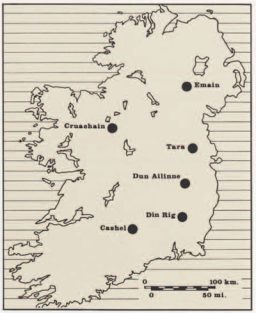
Vol. 11 / No. 2
By: Bernard Wailes
Excavations at Dun Ailinne: County Kildare Republic of Ireland 1968
In June 1967 I was invited to the Republic of Ireland by Mr. John Cohane, of County Limerick, to visit […]
View ArticleVol. 11 / No. 2
By: Kenneth M. Kensinger and Francis E. Johnston
The Cashinahua and the Study of Evolution
Cooperative research by physical and cultural anthropologists among small, isolated populations such as the Peruvian Cashinahua, who are still largely […]
View Article
Vol. 11 / No. 2
By: Froelich Rainey
The Search For Sybaris
In the 8th century B.C. the Greek people began a colonial expansion not unlike that of the British people more […]
View ArticleVol. 11 / No. 2
By: Elizabeth K. Ralph
Archaeological Prospecting
As all readers of Expedition know, the basic technique of archaeology is excavation. But, as labor costs become higher all over […]
View Article
Vol. 11 / No. 2
By: John Witthoft and Frances Eyman
The Wyoming Expedition of 1968
The Shoshone, like many other nomadic peoples of the Plains and the Rockies, are scarcely known to archaeology. Their ways […]
View ArticleVol. 11 / No. 2
By: G. Roger Edwards
Torre Mordillo: 1967
Excavations at Torre Mordillo in Calabria in Southern Italy were undertaken during September and October, 1967, as a joint operation […]
View Article
Vol. 11 / No. 2
By: Robert J. Sharer
Chalchuapa: Investigations at a Highland Maya Ceremonial Center
The archaeological ruins of Chalchuapa lie within a broad, fertile valley in the western portion of seldom-visited El Salvador, the […]
View ArticleVol. 11 / No. 2
By: Robert H. Dyson, Jr.
A Decade in Iran
The establishment of a basic chronology consisting of broadly defined cultural phases from the earliest village settlements to the beginning […]
View ArticleVol. 11 / No. 2
By: Karen L. Mohr-Chavez
Excavations in the Cuzco-Puno Area of Southern Highland Peru
Cuzco, once capital of the grand and extensive Inca empire before the Spanish conquest in 1532, and now justly titled […]
View Article
Vol. 11 / No. 2
By: Bruce Lutz
Archaeological Investigations Near Unalakleet, Alaska
Preliminary excavations were begun near the village of Unalakleet on the coast of Norton Sound this past summer. Several of […]
View ArticleVol. 11 / No. 3
By: Olga Linares De Sapir
Diola Pottery of the Fogny and the Kasa
Separated from the modern capital of Dakar by rivers and difficult roads, the Diola of the Casamance in southern Senegal, […]
View Article
Vol. 11 / No. 3
By: Frances Eyman and John Witthoft
Metallurgy of the Tlingit, Dene, and Eskimo
Tlingit ethnographic collections include large numbers of copper objects in many types, most of them made from the commercial copper […]
View Article
Vol. 11 / No. 3
By: Kenneth D. Matthews
A Boy’s First Shave
Although it is suggested that this marble bust from the University Museum’s collections was found on Cyprus, the pleasant-looking young […]
View ArticleVol. 11 / No. 3
By: Lanny Bell
Return to Dra Abu el-Naga
In the winter of 1968 the staff of the Dra Abu el-Naga Project once more assembled in Egypt, for another […]
View ArticleVol. 11 / No. 3
By: Geoffrey Pearce
The Conservation of Wall Paintings in Tomb 35 at Dra Abu el-Naga
A preliminary examination of the walls and ceiling of Tomb 35 revealed that although its remaining plastered sections have suffered […]
View Article
Vol. 11 / No. 4
By: Froelich Rainey
In Search of Egi Zuma
At the airport in Tripoli I met the three husky young Italians who were to accompany us into the desolate […]
View ArticleVol. 11 / No. 4
By: William H. Davenport
Tahiti and the South Sea Legend
For two centuries popular impressions of Tahiti have been a blend of geographic fact and ethnic fancy concocted to feed […]
View ArticleVol. 11 / No. 4
By: Bengt Danielsson
The Exotic Sources of Gauguin’s Art
Non, mille fois non, l’artiste ne nalt pas tout d’une piece. Qu’il apporte un nouveau maillon a la chaine commencee, […]
View ArticleVol. 11 / No. 4
By: Richard S. Field
Gauguin’s Woodcuts
Like many artists before and after him, Paul Gauguin used the medium of the print to recapitulate and initiate ideas […]
View ArticleVol. 11 / No. 4
By: Kenneth D. Matthews
Scutella, Patella, Paterna, Patina: A Study of Roman Dinnerware
Arranging an old-fashioned Roman orgy is not easy. Aside from certain perhaps awkward moral considerations there are other complications worth […]
View ArticleVol. 12 / No. 1
By: Philip P. Betancourt
The Age of Homer: An Exhibition of Geometric and Orientalizing Greek Art
The Greek Bronze Age ended in violent disarray. Most of the Mycenaean fortresses were burned or abandoned within the space […]
View ArticleVol. 12 / No. 1
By: George F. Dales and Louis Flam
On Tracking Woolly Kullis and the Like
Archaeology is a many-faced deity. It (she?) can smile benevolently upon you and order gold and fame to be rained […]
View Article
Vol. 12 / No. 1
By: Gayle Wever
A Persian Puzzle: A Bronze Sword from Teheran
The ability to recognize modem alterations and outright forgeries is important to all students of archaeology. Consequently, in its training […]
View ArticleVol. 12 / No. 1
By: David O'Connor
Abydos and the University Museum: 1898-1969
After its formation in 1887 the University Museum rapidly developed its role in the exploration of extinct and living cultures […]
View Article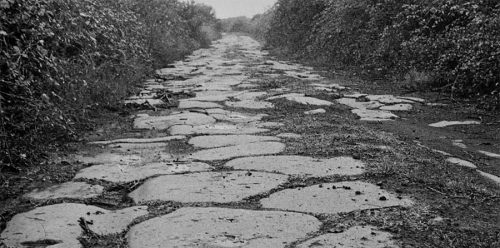
Vol. 12 / No. 2
By: Pamela Hemphill
An Archaeological Survey of Southern Etruria
Southern Etruria lies in the volcanic hills north and west of the Tiber. This region was occupied by the Bronze […]
View Article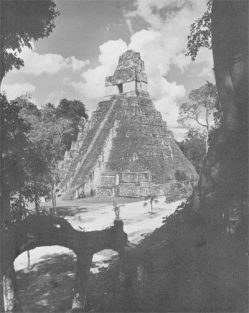
Vol. 12 / No. 2
By: Froelich Rainey
Tikal: A Fourteen Year Program Now Completed
Writing for the Museum Bulletin in December 1956 about our hopes and plans for the clearing, excavation, and consolidation of […]
View Article
Vol. 12 / No. 2
By: Alan McPherron and Elizabeth K. Ralph
Magnetometer Location of Neolithic Houses in Yugoslavia
The first cesium magnetometer survey of prehistoric sites in Yugoslavia was carried out by Elizabeth K. Ralph in June 1969, […]
View ArticleVol. 12 / No. 2
By: Ruben E. Reina, Annette B. Weiner and Edward O'Flaherty, S.J.
Ethnohistory and Archaeology in Colonial Antigua, Guatemala
The visitor to modern Antigua, Guatemala, receives the impression that he is stepping back into the Colonial period. The ruins […]
View Article
Vol. 12 / No. 3
By: Kenneth D. Matthews
The Imperial Wardrobe of Ancient Rome
To protect his Danubian provinces, the Emperor Marcus Aurelius personally led campaigns against the Marcomanni from A.D. 166 to 172 […]
View Article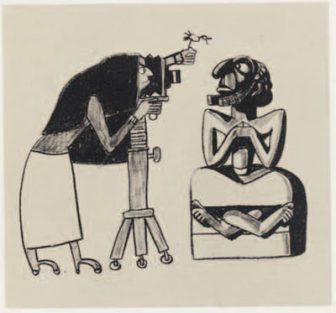
Vol. 12 / No. 3
By: David Crownover
Alfred Bendiner and Iraq
Architect and artist, “Al” Bendiner, as a full generation of The University Museum called him, served at various times on […]
View Article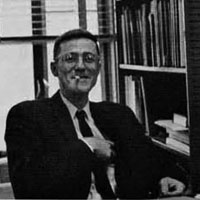
Vol. 12 / No. 3
By: Erle Leichty
A Remarkable Forger
A few years ago Professor Aaboe of Yale University and Professor Sachs of Brown University dedicated an article to a most […]
View ArticleVol. 12 / No. 3
By: Theresa Howard Carter
The Stone Spirits
Early in the 1964 season of excavations at Tell al-Rimah one of our Bedouin excavators, a colorful Shammar tribesman, brought […]
View ArticleVol. 12 / No. 3
By: Emma C. Bunker and Joseph Ternbach
A Variation of the ‘Lost Wax’ Process
Ever since Noel Barnard proved that the ancient Chinese bronze vessels of the Shang and Chou periods could only have […]
View Article
Vol. 12 / No. 4
By: David O'Connor
Jaroslav Cerny: 1898-1970
Among the many scholars who have served the Museum and the University through the years, Jaroslav Cerny was one of […]
View ArticleVol. 12 / No. 4
By: Michael L. Katzev
Kyrenia: 1969
The University Museum undertook the second campaign of excavation on the Kyrenia shipwreck with the very kind permission of the […]
View Article
Vol. 12 / No. 4
By: Ray Anita Slater
Dendereh and the University Museum: 1898-1970
The recent publication of Henry G. Fischer‘s book on Dendereh, more than seventy years after the first excavations at that […]
View ArticleVol. 12 / No. 4
By: Thomas C. Greaves
The Texture of Disaster
The world for some 70,000 Peruvians ended on Sunday afternoon, last May 31st, and to something over a million more, […]
View ArticleVol. 12 / No. 4
By: Sergio J. Chavez and Karen L. Mohr Chavez
Newly Discovered Monoliths From the Highlands of Puno, Peru
The archaeologist must deal with many kinds of evidence from the past, including such obstinate creatures as mute monoliths, those […]
View Article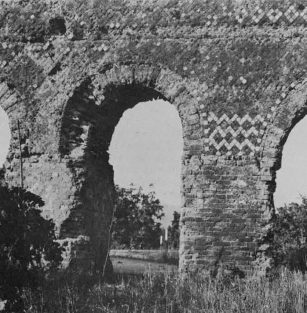
Vol. 13 / No. 1
By: Kenneth D. Matthews
Roman Aqueducts: Technical Aspects of their Construction
The aqueducts of ancient Roman times represent the efforts of government to provide city dwellers with an abundant supply of […]
View Article
Vol. 13 / No. 1
By: Jeffrey Zelitch
The Lakota Sun Dance
Wiwanyag Wacipi, the Gazing-at-the-Sun Dance is now the only public ceremony of the Lakota (Teton-Sioux) religion. It is, however, not […]
View Article
Vol. 13 / No. 1
By: David I. Owen
Picking up the Pieces: The Salvage Excavation of a Looted Fifth Century B.C. Shipwreck in the Straits of Messina
The University Museum underwater excavations in the Straits of Messina were undertaken with a grant from the Geographical Society of […]
View ArticleVol. 13 / No. 1
By: Elizabeth Lyons
Figurines From Chansen
In 1968 and 1969 the University Museum team of George Dales, Bennett Bronson, and Elkins Weatherill in conjunction with members […]
View ArticleVol. 13 / No. 1
By: Peter Throckmorton
More Lost Ships
This article was written before the Throckmortons returned to Greece last spring. We have just received a note from Mr. […]
View ArticleVol. 13 / No. 2
By: Ljubica D. Popovich
An Ethiopian Holy Land
Elevated heavenward by the central mountain massif of Ethiopia, forever tied to the earth with the vein of rock out […]
View Article
Vol. 13 / No. 2
By: Margaret Plass
The Dance of Sigi
The old chief, seventy-five years old by the calendar of the Europeans, two Sigis and ten years by the calendar […]
View ArticleVol. 13 / No. 2
By: Erle Lichty
Demons and Population Control
One of the major problems in the study of dead civilizations is the lack of native informants. Without such informants […]
View Article
Vol. 13 / No. 2
By: Olga Linares De Sapir
Cerro Brujo: A Tiny Guaymi Hamlet of the Past
The provinces of Bocas del Toro and Chiriqui in western Panama are the homeland today of 35,000 Guaymi Indians who […]
View Article
Vol. 13 / No. 3-4
By: Aslan Afshar
Letter from His Excellency, Aslan Afshar, Ambassador of Iran: Letter from His Excellency, Aslan Afshar, Ambassador of Iran
July 27, 1971 The Celebration of the 2500th Anniversary of the Founding of the Persian Empire by Cyrus the Great […]
View Article
Vol. 13 / No. 3-4
By: T. Cuyler Young, Jr.
The Search for Understanding: Excavating the Second Millennium
Iran is a large country with a rich historic and prehistoric past. Archaeologists are making a beginning at understanding that […]
View Article
Vol. 13 / No. 3-4
By: Edith Porada
Aspects of Elamite Art and Archaeology
In Sumerian texts we read about the country NIM, the wondrous mountain area which we call Iran today. The biblical […]
View Article
Vol. 13 / No. 3-4
By: Louis D. Levine
The Iron Age Revealed
The growth of archaeological research in Iran in the last quarter century has been one of the most exciting developments […]
View Article
Vol. 13 / No. 3-4
By: Oscar W. Muscarella
Qalatgah: An Urartian Site in Northwestern Iran
Modern archaeological interest in Urartu and its culture has several phases. The first, which lasted until around 1945, started in […]
View Article
Vol. 13 / No. 3-4
By: Carl Nylander
The Achaemenid Empire
In spite of a long and creative past it is only with the advent of the dynasty named Achaemenid after […]
View Article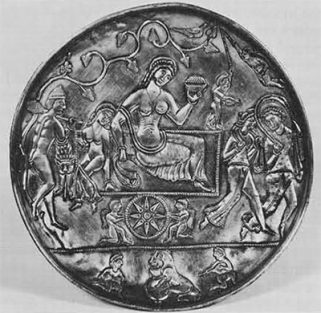
Vol. 13 / No. 3-4
By: Edward Keall
Partho-Sassanian Archaeology: A New Phase
To speak of a discipline of Partho-Sassanian archaeology is really to use a misnomer from the very start. There is […]
View Article
Vol. 13 / No. 3-4
By: Charles K. Wilkinson
Islamic Archaeology in Iran
Islamic archaeology did not fully develop in Iran until after 1930 when the French monopoly of excavation in that country […]
View Article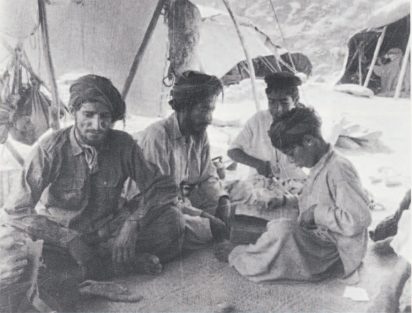
Vol. 13 / No. 3-4
By: Brian I. Spooner
Cultural Anthropology in Iran: Beginnings and Prospects
Ethnographic interest in Iran has a long history. It goes back to the first European travelers in the Middle Ages […]
View Article
Vol. 13 / No. 3-4
By: Robert H. Dyson, Jr.
Iran: Eleven Thousand Years of Cultural History
In October of this year, world attention will be directed toward the achievements of Iran’s ancient civilization through the celebration […]
View Article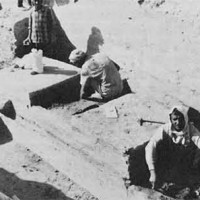
Vol. 13 / No. 3-4
By: Philip E.L. Smith
Iran, 9000-4000 B.C.: The Neolithic
The five millennia between approximately 9000 B.C. and 4000 B.C. were vital ones in the history of the Middle East […]
View Article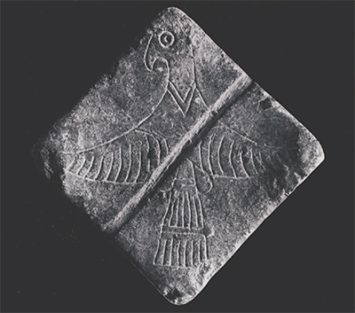
Vol. 13 / No. 3-4
By: C.C. Lamberg-Karlovsky and Philip L. Kohl
The Early Bronze Age of Iran as Seen from Tepe Yahya
The last centuries before 3000 B.C. were of capital importance in Iran and Mesopotamia—for in both there arose contemporary and […]
View Article
Vol. 14 / No. 1
By: David O'Connor
Ancient Egypt and Black Africa: Early Contacts
In 1955 a west African scholar, Marcel Diop, argued vehemently that professional Egyptologists had been concealing a startling fact for […]
View Article
Vol. 14 / No. 1
By: Thomas C. Greaves
Is There a Culture of Poverty?
What, if anything, culture has to do with poverty is one of the great issues of contemporary cultural anthropology. This […]
View ArticleVol. 14 / No. 1
By: James B. Pritchard
The Phoenicians in Their Homeland
The Phoenician expansion westward for three thousand miles across the Mediterranean and beyond to the shores of the Atlantic was […]
View ArticleVol. 14 / No. 1
By: Payson D. Sheets
An Ancient Natural Disaster
Recent geological and archaeological investigations in Chalchuapa, El Salvador, together have provided the probable answer to a question which has […]
View Article
Vol. 14 / No. 1
By: Alfred Friendly
A Doomed Aqueduct
A unique and fascinating portion of one of the finest aqueducts of the Roman world will be lost in the […]
View ArticleVol. 14 / No. 2
By: Ekpo O. Eyo
New Treasures From Nigeria
Recent excavations in western Nigeria conducted by the Department of Antiquities of the Government of Nigeria indicate that the town […]
View ArticleVol. 14 / No. 2
By: Vaughn E. Crawford
Excavations in the Swamps of Sumer
My first visit to Al-Hiba was in November, 1953, when 1 was a member of an archaeological survey led by […]
View ArticleVol. 14 / No. 2
By: B.K. Thapar
The Buried Past of Dehli
According to popular belief there have been eight imperial cities of Delhi of which New Delhi, or Raisina as it […]
View Article
Vol. 14 / No. 2
By: Karen Goodrich-Hedrick and John D. Hedrick
Cruise of the United States Frigate Potomac
Sir Mortimer Wheeler’s dictum, “Dead archaeology is the driest dust that blows” is too often realized in ethnological specimens relegated […]
View Article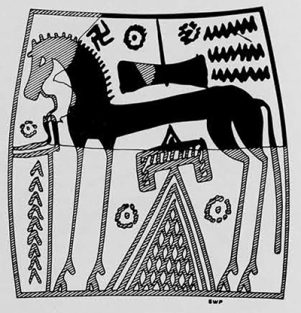
Vol. 14 / No. 2
By: Jeffrey Klein
A Greek Metalworking Quarter: Eighth Century Excavations on Ischia
Ancient notices of the Greek colony of Pithekoussai, the present island of Ischia in the Bay of Naples, are surprisingly […]
View ArticleVol. 14 / No. 3
By: Elizabeth Kennedy Easby
Seafarers and Sculptors of the Caribbean
The original discoverers of the islands we all the Antilles or West Indies came at least 4000 years before Columbus […]
View ArticleVol. 14 / No. 3
By: Ward H. Goodenough
Social Implications of Population Control
The cost of modern technology and of a high material standard of living confronts us with increasing insistence. Jean Mayer […]
View ArticleVol. 14 / No. 3
By: Virginia Wayland
The Indian Looks at the White Man: Playing-card Portraits of the Old West
Anglo artists such as Frederick Remington and George Catlin and writers such as John Gregory Bourke and Josiah Gregg have […]
View Article
Vol. 14 / No. 3
By: Wilhelm G. Solheim, II
Early Man in Southeast Asia
New discoveries by the Thailand Fine Arts Department-University of Hawaii Archaeology Program in Northern Thailand are well on the way […]
View Article
Vol. 14 / No. 3
By: Roger Keesing
The Anthropologist’s Dilemma: Empathy and Analysis Among the Solomon Islanders
Just over a century ago white men in sailing ships began to carry off young Solomon Islanders from the coasts […]
View Article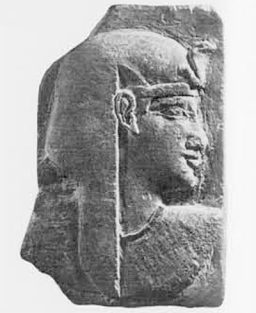
Vol. 14 / No. 4
By: S.A. Goudsmit
Not For the Art Trade
“What you dig up out of the ground is no good for the art trade.” This was the doctrine of […]
View ArticleVol. 14 / No. 4
By: A. Gutkind Bulling
Archaeological Excavation in China: 1949-1966
Much too little is known in this country about archaeological work and excavations carried out in China since the People’s […]
View ArticleVol. 14 / No. 4
By: Margaret L. Arrott
A Unique Method of Making Pottery: Santa Apolonia, Guatemala
From long before dawn on Thursday mornings the narrow dirt road leading from San Jose Poaquil through Santa Apolonia to […]
View Article
Vol. 14 / No. 4
By: Valerio Cianfarani
The Necropolis of Campovalano: Mysteries of Middle Adriatic Culture
Recent excavations at Campovalano, in the Abruzzi region of Italy, have reaffirmed the existence of a little-known culture which flowered […]
View Article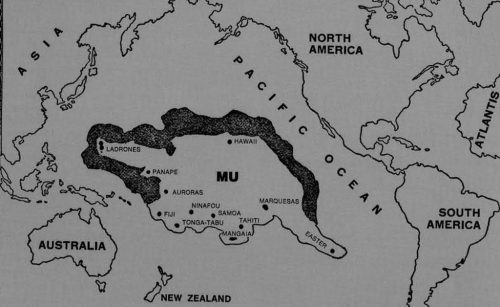
Vol. 14 / No. 4
By: John D. Hedrick and Karen Goodrich-Hedrick
The Problem of Polynesian Origin
Who are the Polynesians? From whom did they derive? How were they able to reach the far-flung islands of the […]
View ArticleVol. 15 / No. 1
By: Loren Eiseley
Flight 857
Loren Eiseley, the well-known author, is Curator of Early Man at the University Museum. This poem “Flight 857” is reprinted […]
View Article
Vol. 15 / No. 1
By: Ann Chowning
Ceremonies, Shell Money and Culture Among the Kove
The Kove (or Kombe) have the reputation of being the most difficult people in the large island of New Britain, […]
View Article
Vol. 15 / No. 1
By: Alfred Friendly and Eleni Karapanayiotis
Nemesis
A remarkable piece of archaeological detective work—in effect the solving of a three-dimensional jigsaw puzzle—has “recovered” one of the few […]
View Article
Vol. 15 / No. 1
By: Solomon H. Katz
Change…On “Top Of the World”
Introduction The Arctic ranks with the highest mountains and the broadest deserts as one of the most severe environments occupied […]
View Article
Vol. 15 / No. 1
By: A. Gutkind Bulling
China: Archaeological Excavations, 1966-1971
When in the spring of 1966 the People’s Republic of China stopped the publication of all archaeological journals all of […]
View Article
Vol. 15 / No. 2
By: Ronald Hicks
Stone and Other Henges
Stonehenge! The name conjures up visions of Druid priests assembling on Salisbury Plain to await sunrise on Midsummer’s Day. But […]
View Article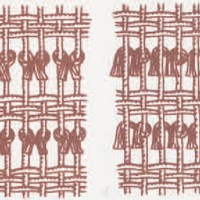
Vol. 15 / No. 2
By: Brian I. Spooner
Afghan Carpets
Weavers and Dealers In the history of international trade. Oriental carpets are something of an anomaly. Although other exotic crafts […]
View Article
Vol. 15 / No. 2
By: Lanny Bell
In the Tombs of the High Priests of Amun
Dira Abu el-Naga, located in the Theban Necropolis at Qurna, across the Nile from Luxor, was the burial place of […]
View Article
Vol. 15 / No. 2
By: Michael M. Eisman
How a Greek Artist Once Painted Himself Into a Corner
I have been working on a study of the Attic kyathos, examining most of the extant examples of this small […]
View Article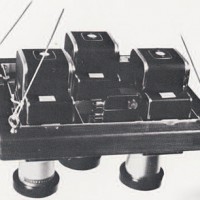
Vol. 15 / No. 2
By: Julian Whittlesey
Balloons, ‘Flying Mattresses,’ and Photography
Aerial photography has rapidly become one of the major weapons in the arsenal of the archaeologist. Man has left marks […]
View Article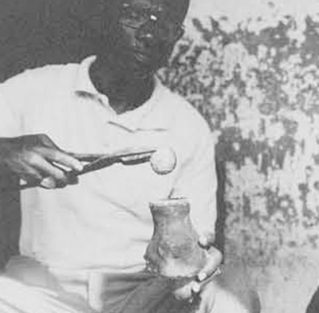
Vol. 15 / No. 3
By: David Crownover
Gold Beads From the Gold Coast
Hutchinson, in his diary, part of Mission from Cape Coast Castle to Ashantee, published by Thomas Bowdich in 1819, paints […]
View Article
Vol. 15 / No. 3
By: Sheila McNally
Digging in Diocletian’s Palace
Since 1968 a team from the Town Planning Institute of Dalmatia and the University of Minnesota has been excavating in […]
View ArticleVol. 15 / No. 3
By: Charles F. Bridgman
The Radiography of Museum Objects
The radiography of museum objects is not a new application of the scientific use of x-rays. In fact, in 1896, […]
View ArticleVol. 15 / No. 3
By: Alfred Friendly
Recent Excavations in Jerusalem
Four years of intensive work by Israeli archaeologists in the Old City of Jerusalem—where professional expertise has been inspired by […]
View Article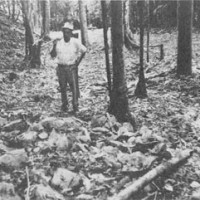
Vol. 15 / No. 4
By: Robert Reinhold
Theft and Vandalism: An Archaeological Disaster
Archaeologists may have done their work just a little too well. They have sung the praises of ancient man so […]
View Article
Vol. 15 / No. 4
By: Hara S. Georgiou
Minoan ‘Fireboxes’ From Gournia
The year 1900 favorably marked the official birth of Minoan Archaeology. A new field in ancient history, art and culture […]
View Article
Vol. 15 / No. 4
By: Marjorie Vandervelde
Moon-children of San Blas Islands
Travelers who visit the San Blas Islands, just off the Atlantic coast of Panama, are surprised at the high incidence […]
View Article
Vol. 15 / No. 4
By: Sabine Hargous-Vogel
Urban Problems, Peruvian Style
In Latin America there never has been a real, total cultural fusion such as occurred in Europe where the Mediterranean […]
View Article
Vol. 15 / No. 4
By: Keith DeVries
East Meets West At Dinner
The excavations and study by the late Erich F. Schmidt at Persepolis and by Machteld J. Mellink at Elmali in […]
View Article
Vol. 16 / No. 1
By: E.V. Wright
The Bronze Age Boats of North Ferriby, Yorkshire
Not many of us are lucky enough to be able to conduct “expeditions” from our own doorstep—although I have a […]
View Article
Vol. 16 / No. 1
By: McGuire Gibson
Nippur 1972-1973
Southern Iraq, ancient Sumer and Akkad, is a land of contrasts. Rapid modernization has brought tractors, new crops, and industrial […]
View Article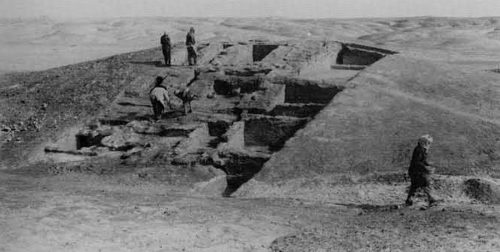
Vol. 16 / No. 1
By: Maurizio Tosi and Marcello Piperno
Lithic Technology Behind the Ancient Lapis Lazuli Trade
In his concise essay on the Urban Revolution, V. Gordon Childe listed the ten basic attributes of any complex, quantitatively […]
View Article
Vol. 16 / No. 1
By: Alfred Friendly
Modern Science and Ancient Egypt
Two of the most interesting archaeological ventures now being conducted in Egypt illustrate at its most dramatic the application of […]
View Article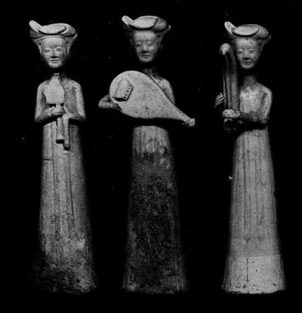
Vol. 16 / No. 1
By: Theodore C. Grame
Sounding Statues: The Symbolism of Musical Instruments
What did he doe with her brest-bone? He made him a violl to play thereupon. What did he doe with […]
View Article
Vol. 16 / No. 2
By: James D. Muhly
The Hittites and the Aegean World
The first thing to realize about the Hittites is that they are not Hittites. The sad fact is that we […]
View Article
Vol. 16 / No. 2
By: Denise Schmandt-Besserat
The Use of Clay Before Pottery in the Zagros
Clay is found abundantly in nature: its remarkable qualities of plasticity when wet and hardness when dry; its imperviousness to […]
View Article
Vol. 16 / No. 2
By: Maria Voyatzoglou
The Jar Makers of Thrapsano in Crete
The Vendema Thrapsano is a village of about 1500 inhabitants in the province of Pediada, 30 kilometers from Herakleion. It […]
View Article
Vol. 16 / No. 2
By: Oscar W. Muscarella
The Third Lion Bowl From Hasanlu
At present there are a few hundred of the popular and well-known group of objects called lion bowls, hand bowls, […]
View Article
Vol. 16 / No. 2
By: Robert S. O. Harding
The Predatory Baboon
Between September 1970 and October 1971, I made a field study of a troop of free-ranging olive baboons near the […]
View Article
Vol. 16 / No. 3
By: Frances W. James
Stone Knobs and Chariot Tracks
Among the Late Bronze materials from the University Museum’s excavation of biblical Beth Shan, 12 miles south of Lake Galilee, […]
View Article
Vol. 16 / No. 3
By: Rodney S. Young
Phrygian Furniture From Gordion
Near the beginning of his history Herodotus tells us that “Midas son of Gordios, king of Phrygia was the first […]
View Article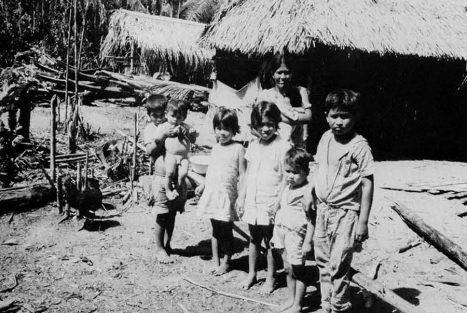
Vol. 16 / No. 3
By: John McDaniel
Professional Healthcare in a Montana Settlement of Peru
The settlement of Concepcion is recently founded, small (a total population of 212), and isolated. Located southeast of the town […]
View Article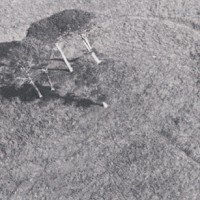
Vol. 16 / No. 3
By: Bernard Wailes
Irish Archaeology
The invitation to write an Expedition article on i was attractive, but reflection showed this to be an intractable task, due […]
View Article
Vol. 16 / No. 4
By: William J. Robson
Peoples Who Perish
Because of ecological and environmental concerns, much attention has been given in the past few years to the erosion of […]
View Article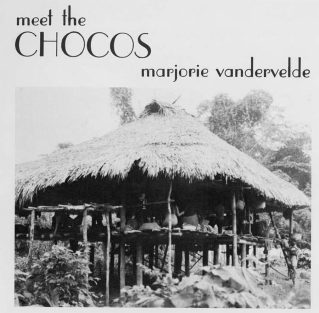
Vol. 16 / No. 4
By: Marjorie Vandervelde
Meet the Chocos
From a small plane we looked down on tangled jungles of Darien Province, Panama. It was a green, undulating carpet […]
View Article
Vol. 16 / No. 4
By: George Milton and Roberto Gonzalo
Jaguar Cult — Down’s Syndrome — Were-Jaguar
The region of the Gulf Coast of Mexico covering parts of the states of Veracruz and Tabasco was known to […]
View Article
Vol. 16 / No. 4
By: H. Bartlett Wells
The Position of the Large Bronze Saws of Minoan Crete in the History of Tool Making
The production of reliable spring-temper steel in early times was a difficult and delicate process, so often attended with failure […]
View Article
Vol. 16 / No. 4
By: McGuire Gibson
The Twelfth Season at Nippur
About the time a report on the eleventh season of the Oriental Institute’s expedition to Nippur was appearing in Expedition […]
View ArticleVol. 17 / No. 1
By: Mildred A. Konan
Calabashes in Northern Nigeria
Several women huddled together in the shade of old trees in a small open market. They sat on the sandy […]
View ArticleVol. 17 / No. 1
By: Jean Silverman
A Lost Notebook From the Excavations at Gournia, Crete
In the spring of 1973 a small notebook, titled “Inventory of Gournia Finds. Gournia, by class,” was presented to the […]
View Article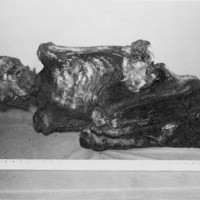
Vol. 17 / No. 1
By: Michael Zimmerman
New Approaches to the Study of Ancient Disease
The elderly Eskimo woman moved aside the notched stones which held down the skin cover on the sod roof and […]
View ArticleVol. 17 / No. 1
By: Leland Meister
Yemen: Breaking With the Feudal Past
Two aspects of the agricultural system in Yemen warrant description: the technology of the farmers and the relationship existing between […]
View ArticleVol. 17 / No. 1
By: Musa Baran
Children’s Games
Child’s play—it is not as simple as we think. Men and even animals begin their lives in play. Grandfathers pass […]
View ArticleVol. 17 / No. 2
By: H.D. Sankalia, Z.D. Ansari and M.K. Dhavalikar
An Early Farmer’s Village in Central India
The first prehistoric farming communities excavated in central India were found at the sites of Nasik, Jorwe and Nevasa (Sankalia […]
View ArticleVol. 17 / No. 2
By: Ahman Hasad Dani
Origins of Bronze Age Cultures in the Indus Basin: A Geographic Perspective
PAST CONCEPTS We have been studying the problems of the Bronze Age Cultures in the Indus Basin for almost half […]
View Article
Vol. 17 / No. 2
By: B.K. Thapar
Kalibangan: A Harappan Metropolis Beyond the Indus Valley
Kalibangan, literally black bangles, from the sight of the countless fragments of weather-stained terracotta bangles strewn over the surface of […]
View ArticleVol. 17 / No. 2
By: Gregory L. Possehl
The Chronology of Gabarbands and Palas of Western South Asia
By far the greater parts of Pakistan and western India are semi-arid climatic zones. Mean annual precipitation for virtually all […]
View ArticleVol. 17 / No. 3
By: John D. Hedrick and Karen Goodrich Hedrick
An Expedition to the New Hebrides
Melanesia—literally the black islands—stretches from New Guinea more than 4,000 kilometers southeastwards to Fiji. Some of the smaller islands in […]
View ArticleVol. 17 / No. 3
By: Elizabeth Reed Dickie
Bislama: Pidgin English in the New Hebrides
New Hebrides is an area in the throes of rapid culture change. Being propelled into articulation with the Western world […]
View ArticleVol. 17 / No. 3
By: Harold G. Levine
The Kafe: A New Guinea Highlands Group
From his ship off the southwest coast of Papua, the Dutch navigator Jan Carstensz observed and noted in his journal […]
View ArticleVol. 17 / No. 4
By: Karen S. Rubinson
Herodotus and the Scythians
The Greek historian Herodotus (490/480-425 B.C.], in his History of the Persian Wars, included an excursus on the ethnography of […]
View ArticleVol. 17 / No. 4
By: Alfred Friendly
Vindolanda
In the past two years British archaeologists have discovered and in some part deciphered more than 240 fragments of 1st […]
View Article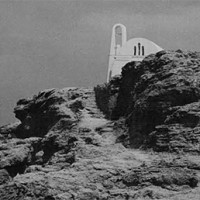
Vol. 17 / No. 4
By: David S. Reese
Men, Saints or Dragons?
“There were giants in the earth in those days…” Genesis 6:4 During the Pleistocene epoch of pre-history (three million to […]
View ArticleVol. 17 / No. 4
By: Tamara Stech Wheeler, Robert Maddin and James D. Muhly
Ingots and the Bronze Age Copper Trade in the Mediterranean: A Progress Report
The last twenty years have seen an increase in scientific studies of archaeological materials resulting from the desire for greater […]
View ArticleVol. 17 / No. 4
By: Donald White
Archaic Cyrene and the Cult of Demeter and Persephone
The rapid outward movement of the ancient Greeks from their mainland homes between the 10th and 6th centuries B.C., first […]
View Article
Vol. 18 / No. 1
By: DeVerne Reed Smith
The Palauan Storyboards: From Traditional Architecture to Airport Art
As tourism has steadily increased in the Pacific, the sale of local handicrafts has become a profitable source of income […]
View Article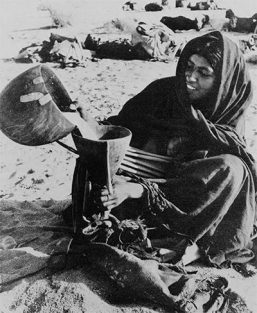
Vol. 18 / No. 1
By: Frances W. James
Yogurt: Its Life and Culture
One of the great puzzles of cultural diffusion is why yoğurt, that greatest of all the gastronomic gifts of Allah, […]
View ArticleVol. 18 / No. 1
By: William H. Davenport
Lyrical Verse and Ritual in the Santa Cruz Islands
In the translation of the lyrics, the material in brackets has been added by the author to clarify the meaning. […]
View ArticleVol. 18 / No. 2
By: Oliver C. Colburn
A Return to Sybaris
The annals of archaeology are replete with “lost” cities, once-flourishing communities which, for one reason or another, have vanished into […]
View ArticleVol. 18 / No. 2
By: Jak Yakar and Jose Louis Garzon
The Survival of Ancient Traditions in the Popular Architecture of North-Central Turkey
This article deals with one of the numerous cultural aspects brought to light during the first excavation campaign at Ikiztepe, […]
View ArticleVol. 18 / No. 2
By: Linny Schenk, Irene F. Bald, Marcia Bloom, Karen Chance, Gerald P. Schaus, Susan Tutweiler, Donald White and Brian R. MacDonald
Seven Recently Discovered Sculptures from Cyrene, Eastern Libya
Readers of this magazine have already been introduced to some features of the University Museum’s Cyrene project, but the focus […]
View ArticleVol. 18 / No. 2
By: Elizabeth Carter and Matthew Stolper
Middle Elamite Malayan
Several lines of scholarly inquiry have recently drawn attention to Tall-i Malyan in south central Iran. The low mounds of […]
View ArticleVol. 18 / No. 3
By: Angeliki Lebessi
A Sanctuary of Hermes and Aphrodite in Crete
In September 1972 a bulldozer opening up a minor road on the southern slopes of Mt. Dikte above the village […]
View Article
Vol. 18 / No. 3
By: Frank L. Lambrecht
The Pastoral Nomads of Nigeria
No matter how far the town, there is another beyond it.” Fulani proverb Little affected by western ideas and technology […]
View ArticleVol. 18 / No. 3
By: Michael A. Hoffman
The City of the Hawk: Seat of Egypt's Ancient Civilization
The origins of civilization have long aroused scientific curiosity and inflamed the popular imagination. At least six different times—in Mesopotamia, […]
View Article
Vol. 18 / No. 3
By: Ann Guinan, Gary Oller and Dorothy Ormsby
Nippur Rebaked: The Conservation of Cuneiform Tablets
“The scribal art is the mother of orators, the father of masters, The scribal art is delightful, it never satiates […]
View ArticleVol. 18 / No. 3
By: Elfriede R. Knauer
Some Aspects of the Classical Heritage in Afghanistan
Afghanistan is a landlocked country, very mountainous and dominated by the Hindukush range which springs from the Pamir knot and […]
View Article
Vol. 18 / No. 4
By: Sir John Pope-Hennessy
The Museum as Forum
This article is based on a talk to the University Museum Fellows on November 6, 1975 by Sir John Pope-Hennessy, […]
View ArticleVol. 18 / No. 4
By: James D. Muhly
University Museum-Thai Fine Arts Department Northeast Thailand Archaeological Project: Introduction
In this issue of Expedition, designed to be some small tribute to Froelich Rainey for his many years of inspired […]
View ArticleVol. 18 / No. 4
By: Chester Gorman and Pisit Charoenwongsa
Ban Chiang: A Mosaic of Impressions from the First Two Years
Only a decade ago, Southeast Asia was regarded as a prehistoric cul-de-sac; that it might have been an important area […]
View ArticleVol. 18 / No. 4
By: William Schauffler
Archaeological Survey and Excavation of Ban Chiang Culture Sites in Northeast Thailand
Human bones, bleached white by the sun or stained black by the soil are scattered about. Large painted pots with […]
View ArticleVol. 18 / No. 4
By: Tamara Stech Wheeler and Robert Maddin
The Techniques of the Early Thai Metalsmith
Archaeological research in Thailand during the past decade has produced evidence of an early bronze metallurgical tradition, the beginnings of […]
View Article
Vol. 18 / No. 4
By: Howard C. Peterson
Froelich Gladstone Rainey
A great period for the University Museum has been the 29-year directorship of Froelich Gladstone Rainey from 1947 to 1976. […]
View Article
Vol. 19 / No. 1
By: David Van Horn
The Archaeological Survey: Chipped Stone
It was very clear from the outset of the Argolid Exploration Project’s first intensive survey season in 1972 that many […]
View Article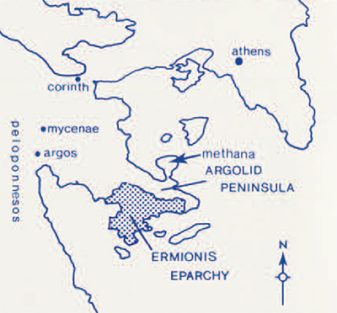
Vol. 19 / No. 1
By: Michael H. Jameson
A Greek Countryside: Reports From the Argolid Exploration Project
Ancient Greece, perhaps more than any other great civilization, was a culture of many small communities closely tied to the […]
View Article
Vol. 19 / No. 1
By: Hamish A. Forbes
The Thrice-Ploughed Field: Cultivation Techniques in Ancient and Modern Greece
Despite occasional pronouncements to the contrary, soil and climate seem to be two of the most changeless aspects of continuity […]
View Article
Vol. 19 / No. 1
By: Mary Clark Forbes
The Pursuit of Wild Edibles, Present and Past
The Present The pursuit of wild edibles has become a popular pastime in these days of organic gardening and macrobiotic […]
View Article
Vol. 19 / No. 1
By: Harold Koster
The Thousand Year Road
As the parched and brittle wheat fields flashed by the window and familiar smells of rock rose, thyme and pine […]
View Article
Vol. 19 / No. 1
By: Joan Bouza Koster
From Spindle to Loom: Weaving in the Southern Argolid
In almost every Greek village black and white kerchiefed women cluster at midday in the cool shade of the stone […]
View Article
Vol. 19 / No. 2
By: Frank L. Lambrecht
Kalahari Desert Trek Notes: From Lobatsi to Tsodilo Hills
Except in relation to the surrounding countries of the Republic of South Africa, Rhodesia and South West Africa, the Republic […]
View Article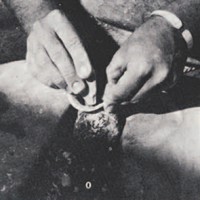
Vol. 19 / No. 2
By: George F. Dales and Jonathan Mark Kenoyer
Shell Working at Ancient Balakot, Pakistan
Balakot is one of four known ancient coastal sites in Pakistan dating to the period of South Asia’s earliest civilization—the […]
View Article
Vol. 19 / No. 2
By: Barbara Klamon Kopytoff
Guerilla Warfare in Eighteenth Century Jamaica
There is a story that when Christopher Columbus, after his second voyage to the New World in 1494, was asked […]
View Article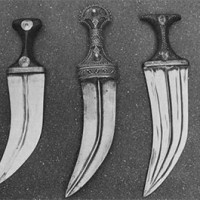
Vol. 19 / No. 2
By: Schuyler V. R. Cammann
Cult of the Jambīya: Dagger Wearing in Yemen
On a recent visit to the Yemen Arab Republic, even before I left the National Airport, I was impressed by […]
View Article
Vol. 19 / No. 2
By: Robert Maddin, Tamara Stech Wheeler and James D. Muhly
Tin in the Ancient Near East: Old Questions and New Finds
Bronze—an alloy of copper and tin—gave its name to one of the periods of antiquity. It is now clear that […]
View Article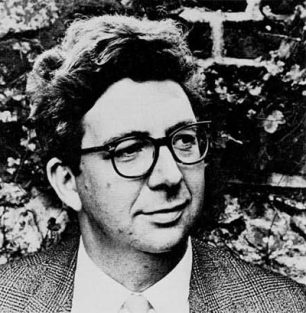
Vol. 19 / No. 2
By: James D. Muhly
From the Editor: Martin Biddle will take over as director of the University Museum.
On October 1, 1977, Martin Biddle, of Winchester, England, will take over as director of the University Museum. He will […]
View Article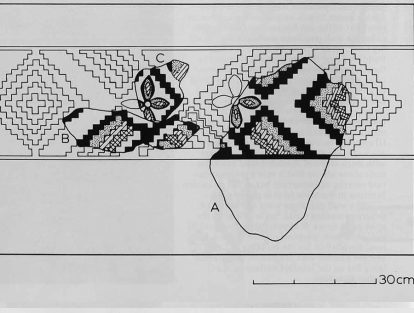
Vol. 19 / No. 3
By: Janet W. Nickerson
Malyan Wall Paintings
In 1971 and 1974 several fragmentary remains of ancient wall paintings were found during the course of excavations at Tall-i […]
View Article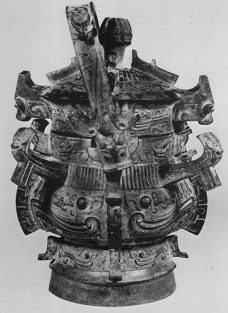
Vol. 19 / No. 3
By: Katheryn M. Linduff
The Incidence of Lead in Late Shang and Early Chou Ritual Vessels
No evidence confirming the general use of bronze in Ancient China, now attested by archaeological remains, can so far be […]
View Article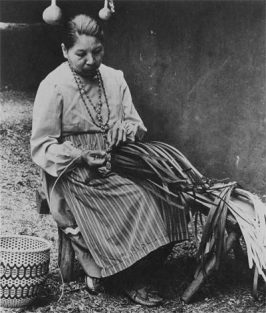
Vol. 19 / No. 3
By: Bonita Freeman-Witthof
Cherokee Indian Craftswomen and the Economy of Basketry
Cherokee, North Carolina did an eighteen million dollar tourist business in 1972. Much of this money went to outsiders who […]
View Article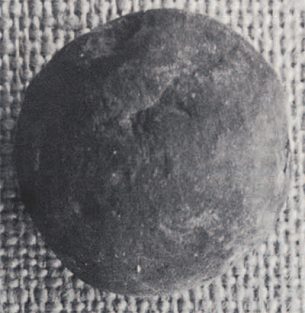
Vol. 19 / No. 3
By: Denise Schmandt-Besserat
The Earliest Uses of Clay in Syria
Clay is a soft and rich earthy substance consisting primarily of hydrated silicates of aluminum. It is a product of […]
View Article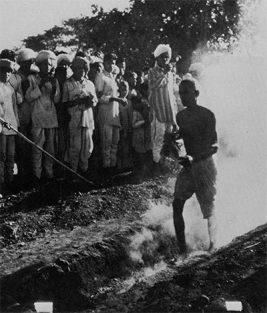
Vol. 19 / No. 3
By: Paul G. Brewster
The Strange Practice of Firewalking
Of all phenomena, the ability of certain individuals to walk barefoot through fire without being burned is perhaps the most […]
View ArticleVol. 19 / No. 4
By: Marija Gimbutas
Varna: A Sensationally Rich Cemetery of the Karanovo Civilization, About 4500 B.C.
The cemetery of Varna on the Black Sea coast in Bulgaria, excavated in 1973-76, is a prime addition to our […]
View Article
Vol. 19 / No. 4
By: A. Gutkind Bulling
A Late Shang Place of Sacrifice and its Historical Significance
In 1959 the Museum in Nanking made a trial dig in a place called Ch’iu-wan in T’ungshan county, in the […]
View ArticleVol. 19 / No. 4
By: James D. Muhly
Editorial
The number of books published in the general field of archaeology seems to increase every year. And every year it […]
View ArticleVol. 19 / No. 4
By: Orhan Aytug Tasyurek
The Urartian Bronze Hoard From Giyimli
Urartians, who appear with the name “Uruadri” in the Assyrian cuneiform inscriptions after the 13th century B.C., had established a […]
View ArticleVol. 19 / No. 4
By: H. Bartlett Wells
Ancient Inventions for Tooling the Surfaces of Objects in Softer Metals
Collectors of ancient Greek copper coins have often been puzzled by central pits that they find in the metal of […]
View ArticleVol. 19 / No. 4
By: Elizabeth Lyons
Southeast Asia: The Changing Scene
In January of this year, 1977, I was in Burma trying to recruit a Burmese archaeologist for the new Ford […]
View Article
Vol. 20 / No. 1
By: Martin Biddle
New Directions – Fall 1977: The Director Writes
At the conclusion of the distinguished directorship of Froelich Rainey, reaching back over some of the most formative years of […]
View ArticleVol. 20 / No. 1
By: Sir Max Mallowan
Recollections of C. Leonard Woolley
On the grounds that I am one of the living survivors of the early seasons at Ur, (1922-1934) the Editor […]
View ArticleVol. 20 / No. 1
By: Robert H. Dyson, Jr.
Archival Glimpses of the Ur Expedition in the Years 1920 to 1926
All expeditions are a complex network of interlocking political and social events involving people, institutions and governments. Among the common […]
View Article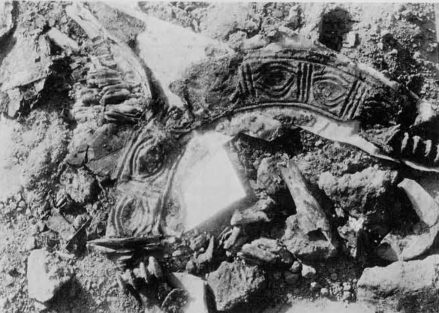
Vol. 20 / No. 1
By: P. R. S. Moorey
What Do We Know About the People Buried in the Royal Cemetery?
Woolley’s excavation of the royal graves at Ur is one of the technical triumphs of Near Eastern field archaeology and […]
View Article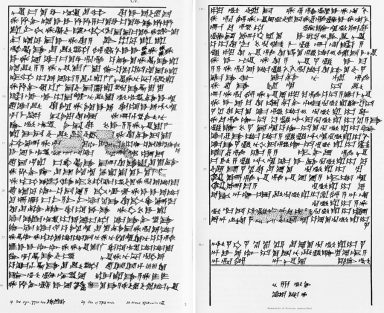
Vol. 20 / No. 1
By: Samuel Noah Kramer
The Ur Excavations and Sumerian Literature
Leonard Woolley’s excavations at Ur have been justly acclaimed for their extraordinary, unexpected, and invaluable archaeological discoveries: the royal cemetery, […]
View Article
Vol. 20 / No. 2
By: John R. Abercrombie
Egyptian Papyri: The University Museum's Collection of Papyri and Related Materials
In a second century A.D. Greek epistle a well-intentioned father offers some free advice to his son, who was probably […]
View Article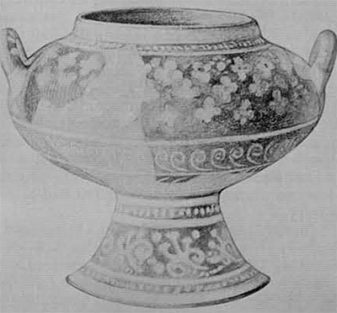
Vol. 20 / No. 2
By: Jeffrey S. Soles
Mochlos: A New Look at Old Excavations: The University Museum's Work on Crete
The island of Mochlos, a large outcropping of rock about 350 meters long, rises from the sea just off the […]
View Article
Vol. 20 / No. 2
By: Martin Biddle
New Directions – Winter 1978: The Director Writes
In the last issue I asked some questions about what sort of institution the University Museum ought to be. In […]
View Article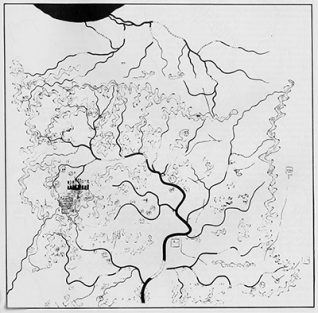
Vol. 20 / No. 2
By: A. Gutkind Bulling
Ancient Chinese Maps: Two maps discovered in a Han Dynasty tomb from the second century B.C.
Among the many important excavations carried out in recent years in the People’s Republic of China three tombs deserve special […]
View Article
Vol. 20 / No. 2
By: James D. Muhly
Ancient Cartography: Man's Earliest Attempts to Represent His World
The remarkable Chinese maps published by Mrs. Bulling in the previous article indicate that in cartography, as in many other […]
View Article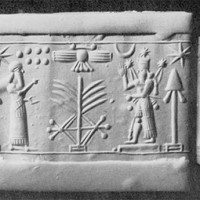
Vol. 20 / No. 2
By: Leonard Gorelick and A. John Gwinnett
Ancient Seals and Modern Science: Using the Scanning Electron Microscope as an Aid in the Study of Ancient Seals
While ancient cylinder seals have been studied and reported in great detail, especially as to their iconography, there have been […]
View ArticleVol. 20 / No. 3
By: Ann Ashmead
Greek Cats: Exotic Cats Kept by Rich Youths in Fifth Century B.C. Athens, as Portrayed on Greek Vases
Some years ago a Greek vase (Figs. 1, 2) that the University Museum had lent to Bryn Mawr College aroused […]
View Article
Vol. 20 / No. 3
By: Martin Biddle
New Directions – Spring 1978: The Director Writes
In the last issue of Expedition I wrote about the University Museum’s existing archives and their care. This time I […]
View ArticleVol. 20 / No. 3
By: Elizabeth Lyons
Chinese Jades: The Role of Jade in Ancient China: An Introduction to a Special Exhibition at the University Museum
For some four thousand years, the Chinese have considered jade to be a unique substance and have held it in […]
View Article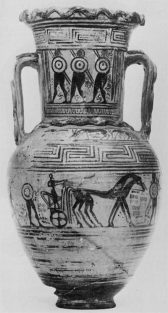
Vol. 20 / No. 3
By: Carol Thomas
Found: The Dorians: Archaeology and Greek Linguistics at the End of the Late Bronze Age
There can be no doubt that the Mycenaean civilization of Bronze Age Greece was destroyed in the course of the […]
View ArticleVol. 20 / No. 3
By: Frank L. Lambrecht
Mabudu: A Report on a Vanishing Culture in the Northeastern Corner of the Congo Basin as it existed in 1948
In the northeastern corner of the Congo Basin rainforest lies a region known as Kibali-Ituri named after the two rivers […]
View Article
Vol. 20 / No. 4
By: Martin Biddle
New Directions – Summer 1978: The Director Writes
The Museum holds some of man’s great works of art—from the world of the Maya, from Burner, from China—but it […]
View Article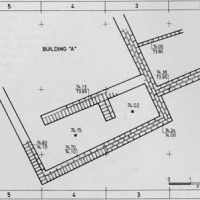
Vol. 20 / No. 4
By: Ram Gophna
En-Bensor: An Egyptian First Dynasty Staging Post in the Northern Negev
The lower part of the Besor Valley (Wadi Ghazza) cut its way through the flat loess lands of the northwestern […]
View Article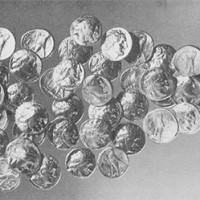
Vol. 20 / No. 4
By: Ze'ev Herzog, Anson F. Rainey, Ora Negbi and Shmuel Moshkowitz
Tel Michal: A Coastal Site in the Sharon Plain
Tel Michal (Makmish) is situated on a kurkar (sandstone) ridge covered with sand dunes in the southern environs of the […]
View Article
Vol. 20 / No. 4
By: Itzhak Beit-Arieh
A Canaanite Site Near Sheikh Mukhsen: Real Discoveries in Southern Sinai
During the past ten years, Israeli archaeologists have been investigating early sites which have been discovered in the wilderness of […]
View ArticleVol. 20 / No. 4
By: Moshe Kochavi
Canaanite Aphek: Its Acropolis and Inscriptions
Excavation of Aphek-Antipatris Since 1972 a two-months excavation season has been carried out each summer at Tel Aphek (Tell Ras […]
View Article
Vol. 20 / No. 4
By: Ze'ev Meshel
Kuntillet ‘Ajrud: An Israelite Religious Center in Northern Sinai
By which routes did the kings of Judah travel to Eilat and Ezion-Geber? And where was the southwestern border of […]
View ArticleVol. 20 / No. 4
By: David Ussishkin
Lachish: Renewed Archaeological Excavations
Lachish and the Previous Excavations Lachish was one of the most important cities of the Biblical era in the Holy […]
View ArticleVol. 20 / No. 4
By: Aharon Kempinski
Tel Masos: Its Importance in Relation to the Settlement of the Tribes of Israel in the Northern Negev.
Tel Masos (Arabic Hirbet eI-Meshash) is situated on the edge of Wadi Beer-sheba, approximately 12 km. east of the modern […]
View ArticleVol. 20 / No. 4
By: A. Horowitz
Human Settlement Pattern in Israel: A Discussion of the Impact of Environment
Israel is situated at the juxtaposition of several major environmental domains: the Euro-Siberian, Irano-Turanian, Mediterranean, Saharian and Sudanese. Longitudinally, the […]
View Article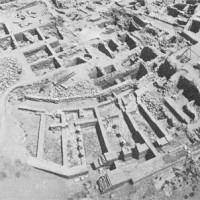
Vol. 20 / No. 4
By: Ze'ev Herzog
Israelite City Planning: Seen in the Light of the Beer-Sheba and Arad Excavations.
Although numerous Israelite cities have been excavated in Israel, the relatively small proportion of the total city area excavated and […]
View Article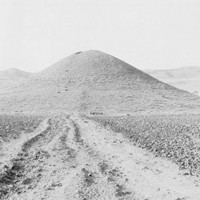
Vol. 20 / No. 4
By: Jak Yakar and Ayşe Gursan-Salzmann
The Provinces of Malatya and Sivas: An Archaeological Survey of Preclassical Sites
The Institute of Archaeology of Tel Aviv University has in recent years promoted the active participation and collaboration of some […]
View Article
Vol. 21 / No. 1
By: Keith DeVries
Diving Into the Mediterranean: Greek and Etruscan Paintings Reveal a Sport of Antiquity
A scattering of representations and ancient written references, ambiguous or unhelpful when studied separately, reveal when brought together a not […]
View Article
Vol. 21 / No. 1
By: Martin Biddle
New Directions – Fall 1978: The Director Writes
In the Summer issue of Expedition, in writing about the University Museum’s collections, I touched on the question of acquisitions […]
View ArticleVol. 21 / No. 1
By: Borislav Jovanovic
The Oldest Copper Metallurgy in the Balkans: A Study of the Diffusion of Copper from Asia Minor to Southeastern Europe.
The flourishing of copper metallurgy during the Eneolithic or Chalcolithic period in the Balkans and Carpathian Basin has led to […]
View ArticleVol. 21 / No. 1
By: Elfriede R. Knauer
Toward a History of the Sleeved Coat: A Study of the Impact of an Ancient Eastern Garment on the West.
“Voici le prince Guillaume, futur prince héritier, il est dans le plus extravagant et le plus complet uniforme de hussards rouges qui […]
View ArticleVol. 21 / No. 1
By: Hamish A. Forbes and Lin Foxhall
“The Queen of All Trees”: Preliminary Notes on the Archaeology of the Olive.
A visitor walking through a village in southern Greece early this winter might well hear ominous rumblings coming from the […]
View ArticleVol. 21 / No. 2
By: Bernard Wailes
Editorial: Archaeological Salvage in Egypt: An Example of International Cooperation
This issue of Expedition is devoted entirely to the involvement of the University Museum in Egyptology, from the 1890’s to […]
View Article
Vol. 21 / No. 2
By: David O'Connor
The University Museum Excavations at the Palace-City of Malkata
Urbanism was an essential element in ancient Egyptian culture, for its predominantly rural society was held together, and its extraordinary […]
View Article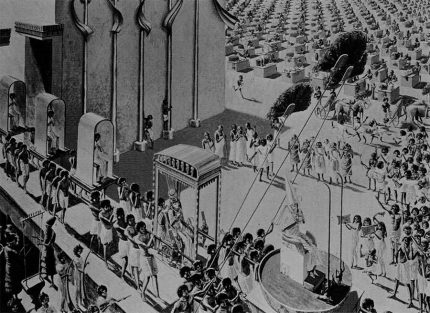
Vol. 21 / No. 2
By: Donald B. Redford
The Akhenaten Temple Project and Karnak Excavations
Scholarly study of the reign of Akhenaten, pharaoh of Egypt (ca. 1375-1357 B.C.), has focused with justification on the last […]
View Article
Vol. 21 / No. 2
By: William Kelly Simpson
The Pennsylvania-Yale Giza Project
The story of the Pennsylvania-Yale Project at Giza takes us back to the beginning of American archaeological work in Egypt. […]
View Article
Vol. 21 / No. 2
By: David O'Connor
Abydos: The University Museum-Yale Expedition
The provincial centers of ancient Egypt were vital elements in its political, economic and religious systems and their remains reflect […]
View Article
Vol. 21 / No. 2
By: Martin Biddle
New Directions – Winter 1979: The Director Writes
In the last issue I wrote about the great size of our collections, the invisible nine-tenths—if not ninety-nine hundredths—of the […]
View Article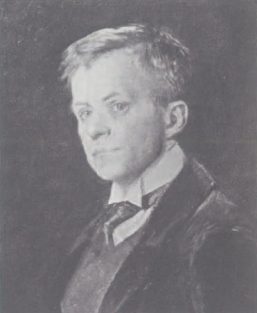
Vol. 21 / No. 2
By: Chester Beatty, IV
Eckley Brinton Coxe, Jr.
Not many men would, some sixty years after their death, be celebrated by a great research institution, but Eckley B. […]
View Article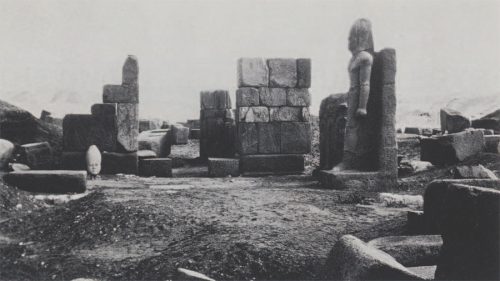
Vol. 21 / No. 2
By: David O'Connor and David Silverman
The University Museum in Egypt: The Past
Introduction “Do not reproach someone older than you, for he has seen the Sun before you.” The Instruction of Amenemope, […]
View Article
Vol. 21 / No. 3
By: Martin Biddle
New Directions – Spring 1979: The Director Writes
It’s all very well to write somewhat owlishly about ‘reserve collections’ and the horizontal’ versus ‘the vertical’ approach to museum […]
View ArticleVol. 21 / No. 3
By: Bernard Wailes
Ireland and Europe: Introduction
Ireland: Archaeology and History The equation of ‘civilization’ with cities centralized government and literacy has long prejudiced us against societies […]
View Article
Vol. 21 / No. 3
By: Sean O Nuallain
The Megalithic Tombs of Ireland: Neolithic Tombs and Their Art.
The earliest evidence of human activity in Ireland occurs mainly in the northeast of the country and has been assigned […]
View Article
Vol. 21 / No. 3
By: Holly Burton
The Arrival of the Celts in Ireland: Archaeology and Linguistics.
When did the Celts arrive in Ireland? The question has plagued linguists and archaeologists alike for a century. By the […]
View ArticleVol. 21 / No. 3
By: Joan J. Taylor
Early Bronze Age Technology and Trade: The Evidence of Irish Gold.
Ireland was the focus of the Western European “Golden Age” by virtue of the impressive quantity of gold ornaments produced […]
View ArticleVol. 21 / No. 3
By: Bella Schauman
Early Irish Manuscripts: The Art of the Scribes.
Ireland’s early books are interesting both in and of themselves and as cultural artifacts. The following pages present an archaeological […]
View Article
Vol. 21 / No. 4
By: Margaret Thompson
Hoards and Overstrikes: The Numismatic Evidence
Coins contribute little to a discussion of Mediterranean trade in the 6th century, for there are no relevant hoards which […]
View Article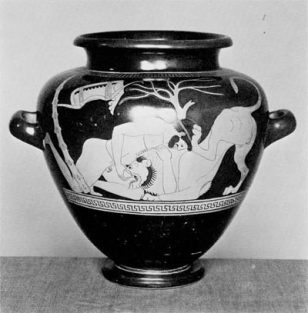
Vol. 21 / No. 4
By: John Boardman
The Athenian Pottery Trade: The Classical Period
Athenian pottery traveled far, and often in quantity. The limits of distribution range from Spain through central Europe, South Russia, […]
View Article
Vol. 21 / No. 4
By: Martin Biddle
New Directions – Summer 1979: The Director Writes
An important—perhaps too important—way of judging a museum’s success or failure is to look at the number of its visitors. […]
View Article
Vol. 21 / No. 4
By: Cynthia Jones Eiseman
The Mediterranean Market: Aspects of Trade in Classical Times
Introduction In this issue of Expedition we publish the proceedings of a symposium entitled “The Mediterranean Market: Aspects of Trade […]
View Article
Vol. 21 / No. 4
By: G. Kenneth Sams
Imports at Gordion: Lydian and Persian Periods
Sometime during the first quarter of the 7th century, invading marauders known to history as the Kimmerians brought to an […]
View ArticleVol. 21 / No. 4
By: Peter S. Wells and Larissa Bonfante
West-Central Europe and the Mediterranean: The Decline in Trade in the Fifth Century B.C.
The Problem Massalia, the Greek city on the site of modern Marseille, was founded about 600 B.C. by Ionian Greeks […]
View Article
Vol. 21 / No. 4
By: Lionel Casson
Traders and Trading: Classical Athens
In the 5th and 4th centuries B.C. Athens fed its population-150,000 by conservative estimates—chiefly on grain imported from south Russia, […]
View ArticleVol. 22 / No. 1
By: Elizabeth Lyons
A Pair of Chinese Grave Urns: A Recent Gift to the Oriental Section of the Museum
The Chinese collection of the University Museum has recently been enriched, and enlivened, by a pair of southern Chinese grave […]
View ArticleVol. 22 / No. 1
By: A. John Gwinnett and Leonard Gorelick
Ancient Lapidary: A Study Using Scanning Electron Microscopy and Functional Analysis
In the chronology of the development of ancient stone tools, drills and drilling were late additions to paleolithic technology. They […]
View Article
Vol. 22 / No. 1
By: Martin Biddle
New Directions – Fall 1979: The Director Writes
The students who come to the Museum as the most distinguished cultural resource on Campus are welcome and fortunate, as […]
View ArticleVol. 22 / No. 1
By: Frances W. James
The Revelation of Jerusalem: A Review of Archaeological Research
Ever since the year 587 B.C. when the Temple was destroyed by Nebuchadnezzar and the 18-year old Jehoiachin of Judah […]
View Article
Vol. 22 / No. 2
By: Martin Biddle
New Directions – Winter 1980: The Director Writes
Over the past two and a half years, I have tried on this page to give a director’s-eye view of […]
View ArticleVol. 22 / No. 2
By: Judith A. Lerner
Three Achaemenid “Fakes”: A Re-evaluation in the Light of 19th Century Iranian Architectural Sculpture
It often happens that forgeries (objects made in a particular style deliberately to deceive) and fakes (genuine works of art […]
View ArticleVol. 22 / No. 2
By: Martin Biddle and Birthe Kjolbye-Biddle
England’s Premier Abbey: The Medieval Chapter House of St. Albans Abbey, and its Excavation in 1978
Twenty miles northwest of London, the great highway of Watling Street passes through the Roman city of Verulamium, the second […]
View ArticleVol. 22 / No. 2
By: Robert Abramson
The Big Drum in the Big City: Creole Enculturation in the Pan West-Indian Community of Brooklyn, N.Y.
In the summertime in New York, you don’t have to wait for the airline commercials to hear the sounds of […]
View ArticleVol. 22 / No. 2
By: Cynthia Jones Eiseman
Greek Lead: Ingots from a Shipwreck Raise Questions About Metal Trade in Classical Times
Metals and metallurgy are of great interest to archaeologists, and much has been written in these pages and elsewhere recently […]
View ArticleVol. 22 / No. 3
By: Schuyler V. R. Cammann
A Rare “Jade” Book: A Manchu Emperor's Edict carved on Panels of Jade
Often a museum exhibition on a special subject will bring to light interesting objects in private hands. A casual visitor […]
View Article
Vol. 22 / No. 3
By: Martin Biddle
New Directions – Spring 1980: The Director Writes
In the next few numbers of Expedition I shall take a look at the Museum’s research in the field now and in […]
View ArticleVol. 22 / No. 3
By: Homer A. Thompson
Stone, Tile and Timber: Commerce in Building Materials in Classical Athens
In a familiar passage of his essay, Ways and Means (1,4) Xenophon lists the natural resources of Attica. He praises […]
View ArticleVol. 22 / No. 3
By: Mauritizio Gualteiri
Roccagloriosa: Excavation of the Site of a Greek Colony in Southern Italy
The problem of the contacts between the Greek colonists settled along the coast and in the fertile valleys of southern […]
View ArticleVol. 22 / No. 3
By: Carl P. Beetz
Caracol Thirty Years Later: A Preliminary Account of Two Rulers
This year marks the beginning of the third decade since the University Museum began its interest in the ancient Maya site of Caracol, […]
View ArticleVol. 22 / No. 3
By: Douglas W. Gould
The Uncertain Fate of a Princely Diversion: An Historical Survey of Tops
Sculptured on the walls of the palace of Ariris (formerly read Araras) at Carchemish, ca. 780 B.C., is the representation […]
View ArticleVol. 22 / No. 4
By: Mary Martin
Making A Living In Turan: Animals, Land and Wages
Ten years ago Sohrab Alavi was home in his Turan village only five or six months of the year. Since […]
View ArticleVol. 22 / No. 4
By: Mary Martin
Pastoral Production: Milk and Firewood in the Ecology of Turan
Pastoral production in Turan focuses on milk. Goats are the major producers because they are in milk from late February […]
View ArticleVol. 22 / No. 4
By: Endre Nyerges
Traditional Pastoralism: An Evolutionary Perspective
Archaeological evidence indicates that the earliest domestication of sheep and goats occurred in the Middle East about 10,000 years ago. […]
View ArticleVol. 22 / No. 4
By: Christopher L. Hamlin
The Temporal Dimension: Monitoring the Changing Ecology of Settlement in Turan
The settlement system in Turan is changing continously. Some of the changes are cyclical, related to such regular processes as […]
View Article
Vol. 22 / No. 4
By: Martin Biddle
New Directions – Summer 1980: The Director Writes
`… nor will they knowingly support this illegal trade by authenticating or expressing opinions concerning such material, and will actively […]
View ArticleVol. 22 / No. 4
By: Brian I. Spooner and Lee Horne
Cultural and Ecological Perspectives from the Turan Program, Iran
Introduction The Historical Significance of Deserts A zone of arid and semi-arid country stretches from the Atlantic through northern Africa […]
View ArticleVol. 22 / No. 4
By: Lee Horne
Dryland Settlement Location: Social and Natural Factors in the Distribution of Settlements in Turan
Settlement in Turan takes three principal forms: year-round permanent villages, summer milking stations, and winter sheep stations. This three-way division […]
View ArticleVol. 22 / No. 4
By: Lee Horne
Village Morphology: The Distribution of Structures and Activities in Turan Villages
The thirteen villages of central Tauran are small, highly nucleated, and irregular in plan. Beginning from the foothills of Mount […]
View ArticleVol. 23 / No. 1
By: Robert J. Sharer
The Quirigua Project, 1974-1979: A brief outline of the development and structure of the research
In December 1973, after over one year of feasibility studies and negotiations in Guatemala, a contract forming the Quirigun Project was […]
View ArticleVol. 23 / No. 1
By: Christopher Jones and Robert J. Sharer
Archaeological Investigations in the Site Core of Quirigua: Epigraphic and archaeological data now provide evidence of an occupation history spanning half a millennium
Quirigua’s dynastic and constructional history was of central concern to the site-core excavations. Since we last considered these topics (Jones […]
View ArticleVol. 23 / No. 1
By: Edward M. Schortman
Archaeological Investigations in the Lower Montagua Valley: Survey and excavations have revealed marked differences between Quirigua and the other major centers in this valley
The lower Motagua valley, situated in the tropical lowlands of Guatemala between the major Maya site of Quirigua and the […]
View ArticleVol. 23 / No. 1
By: Wendy Ashmore
Discovering Early Classic Quirigua: A Unique Opportunity to Examine an Important Sector of the Early Center
The discovery came, one could say, just in the nick of time. The Quirigua Project had been scheduled to run […]
View Article
Vol. 23 / No. 1
By: Martin Biddle
New Directions – Fall 1980: The Director Writes
The Trustees of the University of Pennsylvania voted on 6 December 1887 to send ‘an exploring expedition to Babylon’—perhaps the […]
View ArticleVol. 23 / No. 1
By: Wendy Ashmore
The Classic Maya Settlement at Quirigua: Recent Agricultural Activities Have Helped Reveal the Extent of the Buried Settlement
Ever since the visit of Frederick Catherwood in 1840, scholars and laymen alike have been attracted to the Maya ruins […]
View Article
Vol. 23 / No. 2
By: Martin Biddle
New Directions – Winter 1981: The Director Writes
In the last issue I wrote about the University Museum’s exceptional commitment to field research and listed some of the […]
View ArticleVol. 23 / No. 2
By: William H. Davenport
Male Initiation in Aoriki: Man and the Spirits in the Eastern Solomon Islands
Aoriki, or Santa Catalina Island as it is marked on charts of the southwest Pacific Ocean, is located at the […]
View ArticleVol. 23 / No. 2
By: Kay Ross
Shell Ornaments of Malaita: Currency and Ritual Valuables in the Central Solomons
Malaita is an island in the Solomon chain which lies southeast of New Guinea. Inhabited by about 60,000 Melanesians, it […]
View ArticleVol. 23 / No. 2
By: Leonard Gorelick and A. John Gwinnett
Close Work Without Magnifying Lenses?: A Hypothetical Explanation for the Ability of Ancient Craftsmen to Effect Minute Detail
To many, a puzzling mystery of the ancient world is how minute artifacts or parts of them were made without […]
View ArticleVol. 23 / No. 2
By: James G. Flanagan
Hatmen of the Mountains: Aspects of Ethnic Identity in the New Guinea Highlands
In recent years, anthropologists in Papua New Guinea have begun to work more with ‘peripheral’ peoples; in particular those who […]
View ArticleVol. 23 / No. 3
By: Maria C. Shaw
Sir Arthur Evans At Kommos: A Cretan Village Remembers its Past
The four elderly gentlemen shown in Figs. 3, 7, 9, 10 have a few things in common. Their ages range […]
View ArticleVol. 23 / No. 3
By: Ruben E. Reina and John Monaghan
The Ways of The Maya: Salt Production in Sacapulas, Guatemala
Guatemalans of Maya ancestry, living in rural communities, possess a wide variety of skills and technologies for the manufacture of […]
View ArticleVol. 23 / No. 3
By: Michael Parrington
Medical Archaeology in Philadelphia: A Study of Early Twentieth Century Medicine Bottles Excavated at Bartram's Garden
Introduction Bartram’s Garden, located on the Schuylkill River in Southwest Philadelphia, was the home of John Bartram, the eighteenth century […]
View ArticleVol. 23 / No. 3
By: Ilene M. Nicholas
Investigating An Ancient Suburb: Excavations at the TUV Mound, Tal-e-Malyan, Iran
Archaeology is often described as the science of the human past, a discipline which seeks to explain such complex phenomena […]
View Article
Vol. 23 / No. 3
By: Martin Biddle
New Directions – Spring 1981
For over ninety years The University Museum has been digging ancient sites and studying contemporary traditional communities virtually alI over […]
View Article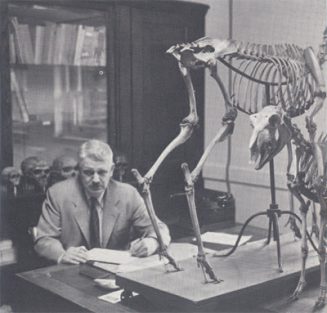
Vol. 23 / No. 4
By: Robert H. Dyson, Jr.
Carleton S. Coon
Carleton Coon was a large bear of a man with a shock of white hair and a devilish sense of […]
View Article
Vol. 23 / No. 4
By: Froelich Rainey
Chester Gorman
The tragic death of Chester Gorman just as he was completing the proof of one of the world’s great archaeological […]
View Article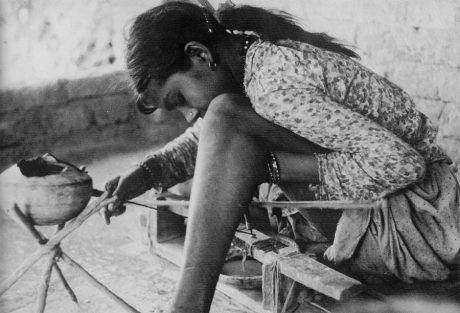
Vol. 23 / No. 4
By: Gregory L. Possehl
Cambay Beadmaking: An Ancient Craft in Modern India
Cambay is a small city, population about 50,000, on the coast of Gujarat state in western India. This name is […]
View ArticleVol. 23 / No. 4
By: Darlene Loding
Lapidaries in the Ur III Period: Written Sources Concerning Stoneworkers (ca. 2000 B.C.)
Evidence for the products manufactured by stoneworkers in Mesopotamia in ancient times is, of course, best displayed by those objects […]
View Article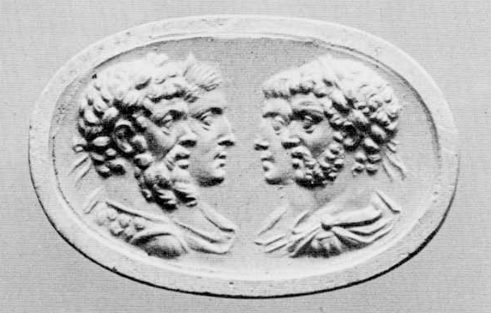
Vol. 23 / No. 4
By: Leonard Gorelick and A. John Gwinnett
Close Work Without Magnifying Lenses?: Discussion of suggestions from readers of Expedition
One of the purposes of our paper in the Winter 1981 issue of Expedition called “Close Work Without Magnifying Lenses?” […]
View ArticleVol. 23 / No. 4
By: Leonard Gorelick and A. John Gwinnett
The Origin and Development of the Ancient Near Eastern Cylinder Seal: A Hypothetical Reconstruction
One purpose of this paper is to discuss and speculate on the origin and development of one of the most […]
View ArticleVol. 23 / No. 4
By: John G. Younger
Creating a Sealstone: A Study of Seals in the Greek Late Bronze Age
Our evidence for the techniques of creating a sealstone in the Greek Late Bronze Age (roughly 1600-1200 B.C.) comes almost […]
View ArticleVol. 24 / No. 1
By: John S. Kopper
Paleolithic Tools: Some Design Considerations
Paleolithic tools have seldom been analyzed from the design viewpoint. We know a great deal about how they were made […]
View ArticleVol. 24 / No. 1
By: A. John Gwinnett
Beadmaking in Iran in the Early Bronze Age: Derived by Scanning Electron Microscopy
Introduction The techniques used to manufacture the ubiquitous bead occupy a significant place in the development of lapidary technology Fashioned […]
View ArticleVol. 24 / No. 1
By: Manuel Keene
The Lapidary Arts in Islam: An Underappreciated Tradition
Islamic Gemstones and Gemology One can hardly think of jewelry without thinking of gemstones so strongly associated are they, both […]
View ArticleVol. 24 / No. 1
By: Leonard Gorelick
The Ancient Craft and Art of the Lapidary
This present issue of Expedition, like the previous one, is a special number devoted to the subject of the ancient […]
View ArticleVol. 24 / No. 1
By: Robert H. Dyson, Jr.
University Museum Announcements
With the return of Martin Biddle to England at the end of June, The University Museum has passed into a […]
View ArticleVol. 24 / No. 2
By: George A. Corbin
Chachet Baining Art: In a Day and Night Dance Celebration at Walmatki Village on the Gazelle Peninsula, East New Britain, Papua New Guinea
The Chachet Baining people live in the northwestern area of the Gazelle Peninsula. They have long been known for their […]
View Article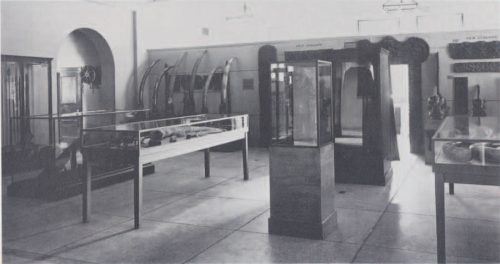
Vol. 24 / No. 2
By: William H. Davenport
A History of the Museum’s Polynesian Collection: The Curators Write
On January 28th the Museum will open a new permanent exhibition called “Polynesia.” The new exhibition replaces one called “Oceania,” […]
View Article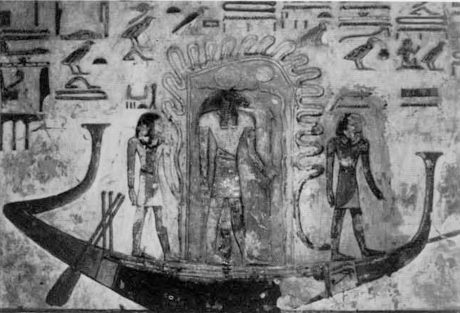
Vol. 24 / No. 2
By: Edward F. Wente
Funerary Beliefs of the Ancient Egyptians: An Interpretation of the Burials and the Texts
Some Egyptologists feel that mummies create a false impression of an ancient people preoccupied with death and morbidity, and therefore […]
View ArticleVol. 24 / No. 2
By: Bernard V. Bothmer
On Realism in Egyptian Funerary Sculpture: Of the Old Kingdom
Among the major arts associated with the funerary cults of ancient Egypt—sculpture, relief and painting—none gives us a deeper understanding […]
View ArticleVol. 24 / No. 2
By: Robert M. Hill, II
Ancient Maya Houses: At Cauinal and Pueblo Viejo Chixoy el Quiche, Guatemala
The unique combination of Maya chronicles, e.g. the Popol Vuh and Annals of the Cakchiquels, descriptions written by Spanish friars […]
View ArticleVol. 24 / No. 3
By: Robert M. Hill, II
Ancient Maya Houses: At Cauinal and Pueblo Viejo Chixoy, el Quiche, Guatemala — II
INTRODUCTORY NOTE The text of this article, with accompanying photographs, was published in the last issue of Expedition: Vol. 24, […]
View Article
Vol. 24 / No. 3
By: Nicholas Freidin
Early Iron Age Luxury Imports: Into the Paris Basin
Introduction The study of Early Iron Age luxury bronze imports in Trans-Alpine Europe has tended to spotlight the better-documented regions […]
View Article
Vol. 24 / No. 3
By: Robert L. Trescher
A New Director of the University Museum: Robert H. Dyson, Jr.
At the end of the decade, the University will celebrate the 100th anniversary of the founding of the Museum, and […]
View Article
Vol. 24 / No. 3
By: Irene Bald Romano
Early Greek Idols: Their Appearance and Significance in the Geometric, Orientalizing and Archaic Periods
For many the sculpture of ancient Greece is almost a synonym for Greek culture itself. Sculpture did indeed play an […]
View ArticleVol. 24 / No. 3
By: Gretchen Anderson Gwynne
Pipestave Hollow Ideography: Possible Calendrical Notations from the Northeast
Alexander Marshack (1972) has argued that some incised designs on Old World artifacts—mainly from the Upper Palaeolithic—were notational and, in […]
View Article
Vol. 24 / No. 3
By: Arthur Miller
Archaeological Looting: A New Approach to the Problem
Introduction On September 18, 1981, Guatemala and its partner in archaeological research, The University Museum, suffered an indirect attack by […]
View Article
Vol. 24 / No. 3
By: Erle Leichty
The Sumerian Dictionary: The Curators Write
Just above the Kress gallery in the northeast corner of The University Museum lies a little frequented area of the […]
View ArticleVol. 24 / No. 4
By: James S. Penny, Jr.
Petchabun Piedmont Survey: An Initial Archaeological Investigation of the Western Margins of the Khorat Plateau
The Petchabun Mountains stand in sharp contrast to the nearly level land which comprises most of the Khorat Plateau, northeast […]
View ArticleVol. 24 / No. 4
By: Charles Higham and Amphan Kijngam
Prehistoric Man and His Environment: Evidence from the Ban Chiang Faunal Remains
The excavations at Ban Chiang have opened a new chapter in our understanding of Southeast Asian prehistory, not only because […]
View ArticleVol. 24 / No. 4
By: Gregory L. Possehl
The Curators Write: The Museum's Ban Chiang Project
It is my privilege, after the untimely death just over a year ago of my friend and colleague Chet Gorman, […]
View ArticleVol. 24 / No. 4
By: Elizabeth Lyons and Froelich Rainey
The Road to Ban Chiang: A Dialogue of Events Leading to The University Museum's Participation in the Expedition
Foreword by Miss Lyons The Ban Chiang Project began in the late 1960s when Dr. Froelich Rainey was Director of […]
View ArticleVol. 24 / No. 4
By: Pisit Charoenwongsa
Ban Chiang in Retrospect: What the Expedition Means to Archaeologists and the Thai Public
Without the accidental discoveries in 1957 by a local villager and the subsequent archaeological work [beginning in 1967), Ban Chiang […]
View ArticleVol. 24 / No. 4
By: Joyce C. White
Natural History Investigations at Ban Chiang: The Study of Natural Resources and Their Use Today Aids Reconstruction of Early Village Farming in Prehistory
Although social scientists have long considered Southeast Asia a cultural backwater of China and India, biologists have noted since the […]
View ArticleVol. 24 / No. 4
By: Joyce C. White, Deborah Wong, Lois Kratz and Cheryl Applebaum
Processing the Ban Chiang Finds: With Particular Reference to Volunteer and Student Work at The University Museum
Following the completion of the 1975 excavation at Ban Chiang, all the material recovered from the two seasons of excavation […]
View ArticleVol. 24 / No. 4
By: John Hastings
Potsherds Into Printouts: The Ban Chiang Computer Project
As a new recruit to the Ban Chiang lab 1 was astonished at the huge quantity and variety of material […]
View ArticleVol. 24 / No. 4
By: Michael Pietrusewsky
The Ancient Inhabitants of Ban Chiang: The Evidence from the Human Skeletal and Dental Remains
Introduction Studies of human skeletal and dental remains excavated at Ban Chiang provide physical anthropologists with some important insights into […]
View ArticleVol. 24 / No. 4
By: Douglas E. Yen
Ban Chiang Pottery and Rice: A Discussion of the Inclusions in the Pottery Matrix
Rice (Oriza sativa) remains are hardly novel discoveries in Asian archaeology. Reported as grain husks or glumes, charred endosperms or […]
View ArticleVol. 25 / No. 1
By: Vincent C. Pigott
Archaeometallurgy and the University of Pennsylvania: Introduction
In December 1982, the Archaeological Institute of America holds its annual meeting, in Philadelphia. Of the various scholarly issues to […]
View ArticleVol. 25 / No. 1
By: Lee Horne
Fuel For The Metal Worker: The Role of Charcoal and Charcoal Production In Ancient Metallurgy
As an accidental by-product of combustion, wood charcoal has certainly been known for as long as fire itself. Very probably […]
View ArticleVol. 25 / No. 1
By: Serge Cleuziou and Thierry Berthoud
Early Tin in the Near East: A Reassessment in the Light of New Evidence from Western Afghanistan
Numerous scholars in different disciplines have devoted considerable thought to the sources of the tin and copper used to make […]
View ArticleVol. 25 / No. 1
By: Vincent C. Pigott
The Innovation of Iron: Cultural Dynamics in Technological Change
Scholars concerned with the phenomenon of ancient iron metallurgy have emphasized the interrelationship between the analytical, historical and archaeological evidence […]
View ArticleVol. 25 / No. 1
By: P.G. Warden, Robert Maddin, Tamara Stech and James D. Muhly
Copper and Iron Production at Poggio Civitate (Murlo): Analysis of Metalworking Archaic Etruscan Site
Since 1966 excavations at Poggio Civitate (Murlo), a site in central Italy about twenty kilometers south of Siena (Fig. 1), […]
View ArticleVol. 25 / No. 1
By: Helen Schenck
The Iron Industry Underground: The Archaeology of Historic American Iron Technology
Introduction The traditional date for the founding of the American iron industry is 1622. In that year the English-based Virginia […]
View Article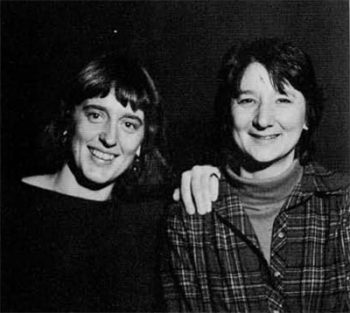
Vol. 25 / No. 2
By: Mary Elizabeth Ruwell and Eleanor M. King
Rediscovering the Eskimo: From the Archives
The University Museum Archives represents a unique resource for researchers in archaeology, anthropology, history, classics and related fields. A preliminary […]
View Article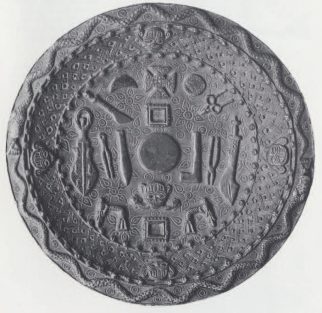
Vol. 25 / No. 2
By: Sandra T. Barnes and Paula Ben-Amos
Benin, Oyo, and Dahomey: Warfare, State Building, and the Sacralization of Iron in West African History
Note This article was intended originally for EXPEDITION 25 no. 1 (Fall 1902), the special issue on Archaeometallurgy. For reasons […]
View Article
Vol. 25 / No. 2
By: Albert J. Ammerman
Early Italian Pottery: Five Vessels from a Neolithic Household in Calabria
Pottery is a standard item for archaeological analysis—it was made by most later prehistoric and historic societies, it displays a […]
View ArticleVol. 25 / No. 2
By: Daniel Martin Virasco
Irrigation in an Arabian Valley: A System of Highland Terraces in the Yemen Arab Rep
The popular image of Arabia is of an arid landscape peopled with nomadic Bedouins riding their camels through the sandy […]
View ArticleVol. 25 / No. 2
By: Roderick J. McIntosh and Susan Keech McIntosh
Forgotten Tells of Mali: New Evidence of Urban Beginnings in West Africa
The regular reader of Expedition and, almost certainly, every professional archaeologist has at one time or another experienced the spell […]
View ArticleVol. 25 / No. 2
By: Robert H. Dyson, Jr.
Volunteers
The many volunteers who participate in the wide range of activities of the University Museum form an indispensable resource in […]
View ArticleVol. 25 / No. 3
By: Arlen F. Chase and Diane Z. Chase
Intensive Gardening Among the Late Classic Maya: A Possible Example at Ixtutz, Guatemala
The low lying areas of the Southern Maya Lowlands of Mexico, Guatemala, and Belize were at one time crisscrossed with […]
View ArticleVol. 25 / No. 3
By: Barbara J. Hayden
Work Continues at Vrokastro 1910-12, 1979-82: A New Plan and Description of the Early Iron Age Settlement
Richard Seager originally identified the early Iron Age settlement of Vrokastro, on a limestone spur (Fig. 1) just south of […]
View ArticleVol. 25 / No. 3
By: Karla Klein Albertson
The Return of The University Museum Demeter: A Greek Goddess Attempts to Establish Her Identity
For more than forty years a graceful marble statuette of a Greek goddess (Figs. 1-3) stood unnoticed in a storage […]
View ArticleVol. 25 / No. 3
By: Carolyn Fleuhr-Lobban
Challenging Some Myths: Women in Shari'a (Islamic) Law in the Sudan
Perhaps no other topic in Islamic law has drawn such attention in the West as that of the purported low […]
View Article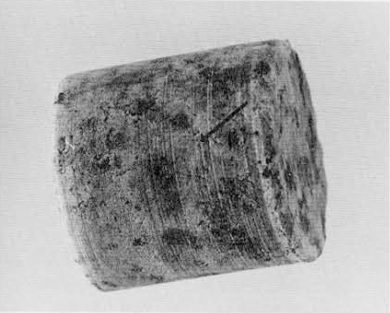
Vol. 25 / No. 3
By: Leonard Gorelick and A. John Gwinnett
Ancient Egyptian Stone-Drilling: An Experimental Perspective on a Scholarly Disagreement
More than most technical procedures in the ancient world, drilling of hard stone such as quartz and granite has evoked […]
View ArticleVol. 25 / No. 4
By: Elfriede Regina Knauer
The Fifth Century A.D. Buddhist Cave Temples At Yün-Kang, North China: A Look at Their Western Connections
The Yün-kang caves belong to a string of early Buddhist cave temples that stretches across northern China from Kansu in […]
View Article
Vol. 25 / No. 4
By: Mary Bert Gutman
The Women’s Committee: Its History, Aims, and Accomplishments
Introduction With the Centennial of the University Museum approaching, various projects on its history are under way, and some may […]
View ArticleVol. 25 / No. 4
By: Elizabeth Simpson
Reconstructing An Ancient Table: The 'Pagoda' Table from Tumulus MM at Gordion
The University Museum excavations at Gordion in central Turkey were begun in 1950 under the direction of Rodney S. Young, […]
View ArticleVol. 26 / No. 1
By: Marilyn Goldberg
Tarquinia Antefixes: A View of the History of an Etruscan City-State
In The University Museum is a collection of architectural fragments from the Etruscan city-state of Tarquinia (Fig. 2), perhaps best […]
View ArticleVol. 26 / No. 1
By: Jordan M. Wright
‘The Highland Show’: Mount Hagen/Goroka, Papua New Guinea
The highland regions of Papua New Guinea were virtually unknown to outsiders until explorations during the 1930s revealed that hundreds […]
View Article
Vol. 26 / No. 1
By: Philip P. Betancourt, Mary G. Ciaccio, Brigit Crowell, Jean M. Donohoe and R. Curtis Green
Ceramic Stands: A Group of Domestic and Ritual Objects from Crete and the Near East
Cylindrical stands for pottery were used by several ancient cultures in the eastern Mediterranean, but their development among the Minoan […]
View Article
Vol. 26 / No. 1
By: Robert J. Sharer
Alfred P. Maudslay: Pioneer Maya Archaeologist: A Review Article
A century ago the splendid ruins of Maya civilization, first made famous by the travel accounts of John Lloyd Stephens […]
View Article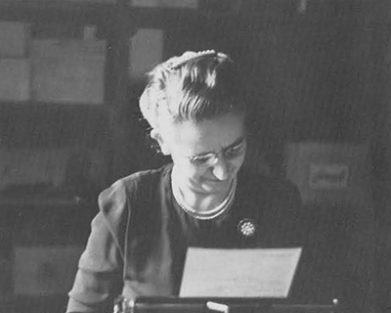
Vol. 26 / No. 1
By: Erle Leichty, James Muhly, Barbara Murray, Martha Phillips, Jennifer Quick and Bernard Wailes
Geraldine Bruckner: An Appreciation by Past and Present Expedition Staff
Geraldine Bruckner, aged eighty-two and Expedition’s Associate Editor, died on 9 August 1983 after a short illness. It would be […]
View Article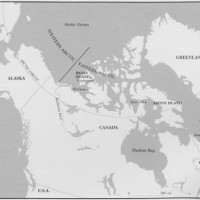
Vol. 26 / No. 2
By: Susan A. Kaplan
Introduction – Winter 1984
Eskimos and North American Indians first came to the attention of Europeans ca. A.D. 1000, when the Norse journeyed to […]
View ArticleVol. 26 / No. 2
By: Mikhail A. Chlenov and Igor I. Krupnik
Whale Alley: A Site on the Chukchi Peninsula, Siberia
In August of 1976, a small group of anthropologists led by M. A. Chlenov discovered on the now uninhabited island […]
View ArticleVol. 26 / No. 2
By: Susan A. Kaplan, Richard H. Jordan and Glenn W. Sheehan
An Eskimo Whaling Outfit From Sledge Island, Alaska
In 1912 William B. Van Valin, an elementary school teacher stationed in Sinuk, Alaska, ushered his students aboard the schooner […]
View ArticleVol. 26 / No. 2
By: William W. Fitzhugh
Images From the Past: Thoughts on Bering Sea Art and Eskimo Culture
Nearly fifty years ago Henry B. Collins completed his now-classic study on the last 2000 years of Eskimo prehistory in […]
View ArticleVol. 26 / No. 2
By: Bernadette Driscoll
Sapangat: Inuit Beadwork in the Canadian Arctic
The advent of European exploration introduced the brightly colored glass bead to the Inuit (Eskimo) seamstresses of the Canadian Arctic. […]
View Article
Vol. 26 / No. 3
By: Arjun Appadurai
Wells in Western India: Irrigation and Cooperation in an Agricultural Society
Introduction The principal purpose of this paper is to decribe the social arrangement surrounding access to water from open-surface wells […]
View Article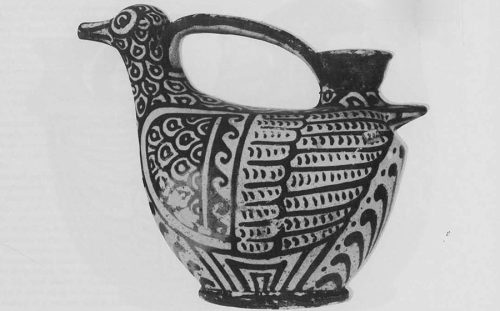
Vol. 26 / No. 3
By: Mario A. Del Chiaro
Etruscan Bird-Askoi: Painted Vases in the Shape of Birds
Vases in the form of animals or birds (askoi; askos, singular) have a remarkably long history in Western and Far […]
View ArticleVol. 26 / No. 3
By: Daniel T. Potts
Northeastern Arabia: From the Seleucids to the Earliest Caliphs
The course of Near Eastern archaeology, as we are seeing very vividly today, is highly susceptible to the winds of […]
View Article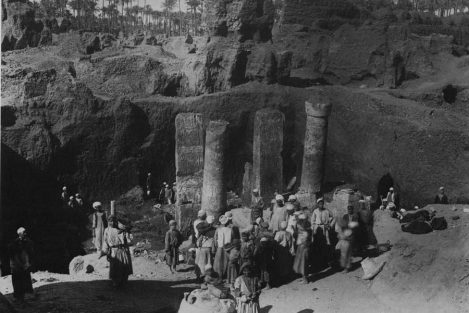
Vol. 26 / No. 3
By: Jay Schwartz, George Brooks and John Herrmann
The Merenptah Palace Project of 1983-84: Museum Briefs
Egypt is famous for its royal tombs and pyramids, but we know surprisingly little about the ceremonial and political activities […]
View ArticleVol. 26 / No. 3
By: Barbara J. Hayden
Late Bronze Age Tylissos: House Plans and Cult Center
Introduction The best-known period of Cretan prehistory is the Minoan Neopalatial or Late Minoan (LM) I period, encompassing approximately one […]
View ArticleVol. 26 / No. 4
By: Bill Donner
Sikaiana: A Contemporary Polynesian Society
Sikaiana is located about 90 miles east of Malaita Island in the Solomon Islands (see Fig. 2). It consists of […]
View Article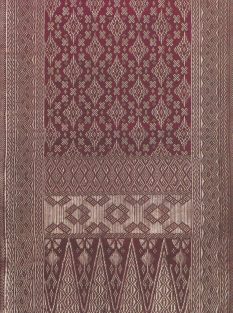
Vol. 26 / No. 4
By: Peggy R. Sanday and Suwati Kartiwa
Cloth and Custom in West Sumatra: The Codification of Minangkabau Worldview
One of the prominent Indonesian ethnic groups, the Minangkabau constitute 3% of the entire Indonesian population and one-quarter of the […]
View ArticleVol. 26 / No. 4
By: Peter Just
Houses and House-Building In Donggo
Throughout the islands of Indonesia a house is more than a home. Traditionally, each of the scores of Indonesian ethnic […]
View ArticleVol. 27 / No. 1
By: Wang Ningsheng
Rock Paintings in Yunnan, China: Some New Light on the Old Shan Kingdom
The southwestern part of Yunnan Province of China, bordered by Laos and Bur¬ma, is a tropical and mountainous region. Many […]
View ArticleVol. 27 / No. 1
By: Ruben E. Reina
A Maya Teacher: A Day of Fieldwork in the Mountains of Guatemala
Dedicated to the memory of Geraldine Bruckner. April days in the year 1955 were extremely dry. Thin dust floated over […]
View ArticleVol. 27 / No. 1
By: Jeffrey A. Blakely and James A. Sauer
The Road to Wadi al-Jubah: Archaeology on the Ancient Spice Route in Yemen
The barren sand track leads south from the ancient silt fields of Marib through the sands of the Rub’ al-Khali, […]
View ArticleVol. 27 / No. 1
By: Mary M. Voigt
Village on the Euphrates: Excavations at Neolithic Gritille in Turkey
Along the northern edge of he Mesopotamian lowlands ies a piedmont zone consisting of rolling plains with grassy steppe vegetation […]
View Article
Vol. 27 / No. 1
By: David O'Connor
In Memoriam: Rudolf Anthes
Dr. Rudolf Anthes died peacefully on January 5th, 1985. in West Berlin: he was 89 years old. Dr. Anthes was […]
View ArticleVol. 27 / No. 1
By: Callum Thompson
Dorset Shamanism: Excavations in Northern Labrador
Introduction In 1977, a Dorset Eskimo site on Shuldham Island in northern Labrador was found by a biologist intent on examining […]
View Article
Vol. 27 / No. 2
By: Donald White
Roman Athletics: Classical Antecedents to the National Mania
I: Contrasting Attitudes “Modern versus the Antique “In the Michaelmas term after leaving school, Tom Brown received a summons from […]
View Article
Vol. 27 / No. 2
By: Murray C. McClellan
“To Play Properly With A Glass Ball”: An Unusual Object in The University Museum
A curious glass ball (Figs. 1, 3, 4) housed in the Mediterranean Section of The University Museum helps us to […]
View Article
Vol. 27 / No. 2
By: Christopher Jones
The Rubber Ball Game: A Universal Mesoamerican Sport
An extremely athletic sport was played by the Aztec, the Maya, and other peoples of Prehispanic Mesoamerica, that area of […]
View ArticleVol. 27 / No. 2
By: Marshall Joseph Becker
Lacrosse: Political Organization in North America as Reflected in Athletic Competition
Introduction The increasing popularity of lacrosse on college playing fields and in other schools and clubs throughout North America reflects […]
View ArticleVol. 27 / No. 2
By: John L. Cotter
The History of Sporting America: Philadelphia Pastimes
Archaeological traces of sports are often ephemeral, especially in North America. The Indians left a few ball courts, notably in […]
View ArticleVol. 27 / No. 2
By: David Gilman Romano
Introduction – Fall 1985
One of the most popular aspects of modern western culture is its universal interest in sports and athletics. Our world […]
View Article
Vol. 27 / No. 2
By: Ake W. Sjoberb
“Trials of Strength”: Athletics in Mesopotamia
Gilgamesh, the king of Uruk (modern Warka in southern Iraq), was on his way to the place where a couch […]
View ArticleVol. 27 / No. 2
By: David Gilman Romano
Boycotts, Bribes and Fines: The Ancient Olympic Games
The modern Olympic Gaines are now one of the most widely publicized events in the world. In 1984, it was […]
View Article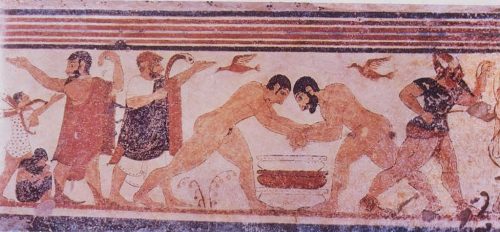
Vol. 27 / No. 2
By: Karen Brown Vellucci
Etruscan Athletics: Glimpses of an Elusive Civilization
Background The Etruscans represent one of the earliest examples of biased media coverage—a problem originating with the authors of antiquity […]
View Article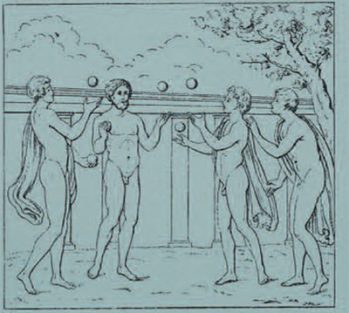
Vol. 27 / No. 2
By: Donald White
The Game of Trigon
From Roman Athletics: Classical Antecedents to the National Mania “All at once we saw a bald old man [Trimalchio–Ed.] in […]
View ArticleVol. 27 / No. 3
By: Mary Ellen Miller
Tikal, Guatemala: A Rationale for the Placement of the Funerary Pyramids
For more than a hundred years, the towering pyramids at Tikal, Guatemala, have captured both popular and scholarly fancy. They […]
View Article
Vol. 27 / No. 3
By: Robert J. Sharer
Introduction – Winter 1985
The civilization created by the ancient Maya is recognized throughout the world as one of the most notable achievements of […]
View ArticleVol. 27 / No. 3
By: Robert J. Sharer
Archaeology and Epigraphy Revisited: An Archaeological Enigma and the Origins of Maya Writing
In a previous paper (Sharer in press), I discussed the question of the origins of Maya civilization and one of […]
View ArticleVol. 27 / No. 3
By: Christopher Jones
Maya Hieroglyphs: A History of the Decipherment
To those familiar with the decipherment of Egyptian hieroglyphs and Babylonian or Assyrian cuneiform, the lack of progress in the […]
View ArticleVol. 27 / No. 3
By: Elin C. Danien
Send Me Mr. Burkitt…Some Whisky and Wine!: Early Archaeology in Central America
At the end of the last century, the pre-Columbian ruins of Mexico and Guatemala attracted adventurers and archaeologists whose names […]
View Article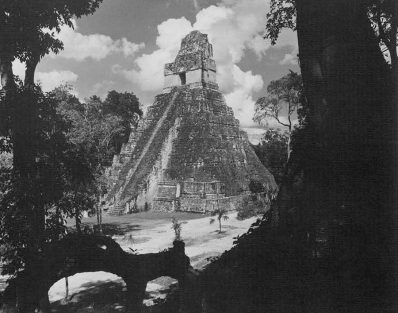
Vol. 27 / No. 3
By: William A. Haviland
Population and Social Dynamics: The Dynasties and Social Structure of Tikal
When dealing with a complex society, whether your own, that of the Maya, or any other, scholars generally adopt one […]
View Article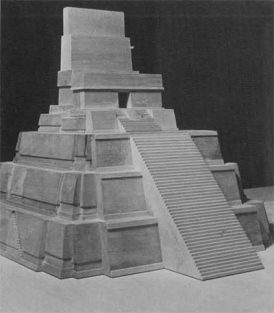
Vol. 27 / No. 3
By: Chris Ray
Rebuilding the Ruins: Making a Scale Model of the Ancient Maya City of Tikal
On February 1984, Dr. Gregory Possehl (Associate Director of The University Museum) asked me if I could make the Museum […]
View Article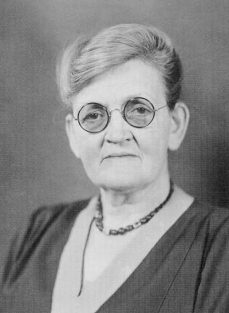
Vol. 27 / No. 3
By: Caroline G. Dosker
Mary Louise Baker and the Maya: From the Archives
An interview in 1908 with Dr. George Byron Gordon, Curator of North American Archaeology at The University Museum, began Mary […]
View ArticleVol. 27 / No. 3
By: Jeff Karl Kowalski
Lords of the Northern Maya: Dynastic History in the Inscriptions of Uxmal and Chichen Itza
During the past thirty years significant advances have been made in the interpretation of Maya hieroglyphic writing. The glyphic inscriptions, […]
View ArticleVol. 28 / No. 1
By: Graeme Henderson and Ian Crawford
Sampans, Belangs, and Junkos: The Pearling Boats of the Aru Islands
The authors of this article had questions to ask about Indonesian boats and boatbuilding Ian Crawford was interested in early Indonesian […]
View ArticleVol. 28 / No. 1
By: Vimala Begley
Rouletting and Chattering: Decoration on Ancient and Present-Day Pottery in India
As the Periplus of the Erythracau Sea and other Classical accounts tell us, there was a thriving sea trade between […]
View ArticleVol. 28 / No. 1
By: Michael Parrington and Janet Wideman
Acculturation in an Urban Setting: The Archaeology of a Black Philadelphia Cemetery
Archaeologists have traditionally been interested in the excavation of cemeteries, an interest spurred by the rich grave goods found in […]
View ArticleVol. 28 / No. 1
By: Genevieve Fisher
Ill-Understood Relics: A Group of Early Anglo-Saxon Artifacts in The University Museum
It was the labour of four long days to cut entirely through the barrow, but we who were not absolutely […]
View ArticleVol. 28 / No. 1
By: Michael Hitchcock
Basket Makers of the Highlands: The Dou Wawo of Bima, Sumbawa
The varied terrain of the Island of Sumbawa is best appreciated from the air. During the wet monsoon one only […]
View ArticleVol. 28 / No. 1
By: Elisabeth Tooker
Fabrics of the Iroquois: The Lewis H. Morgan Collection for the New York State Museum
In The University Museum are a number of Iroquois manufactures collected at various times in various places in New York […]
View ArticleVol. 28 / No. 1
By: Suzanne Richard
Excavations at Khirbet Iskander, Jordan: A Glimpse at Settled Life during the "Dark Age" in Palestinian Archaeology
The site of Khirbet Iskander lies in central Jordan on the Plateau, just north of the famed biblical Plains of […]
View ArticleVol. 28 / No. 2
By: William Davenport
States, Chiefdoms, and Tribes
In social and cultural anthropology, the term “chieftainship” refers to a form of government in which there are fixed political […]
View ArticleVol. 28 / No. 2
By: Robert J. Braidwood
The Origin and Growth of a Research Focus— Agricultural Beginnings: Introduction
Let us first agree that our concern here is only with what happened in southwestern Asia, to its broadest conceivable […]
View ArticleVol. 28 / No. 2
By: Andrew Sillen
Dietary Reconstruction and Near Eastern Archaeology
“One farmer says to me, ‘You cannot live on vegetable foods solely, for it furnishes nothing to make bones with’; […]
View ArticleVol. 28 / No. 2
By: Solomon H. Katz and Mary M. Voigt
Bread and Beer: Bread and Beer: The Early Use of Cereals in the Human Diet
This article has an intellectual history that begins with a fascinating exchange in the early 1950s. Robert Braidwood’s field work […]
View ArticleVol. 28 / No. 2
By: Gil Stein
Herding Strategies at Neolithic Gritille: The Use of Animal Bone Remains to Reconstruct Ancient Economic Systems
Introduction The Neolithic period, spanning the 9th through early 5th millennia B.C., was a time of two fundamental and far-reaching […]
View Article
Vol. 28 / No. 2
By: Walter Fairservis, Jr.
Cattle and the Harappan Chiefdoms of the Indus Valley
The Harappan or Indus Valley culture is one of the world’s earliest civilizations. It was unknown until the early part […]
View ArticleVol. 28 / No. 2
By: Pam Crabtree
Dairying in Irish Prehistory: The Evidence from a Ceremonial Center
Historical sources indicate that cattle have played a primary role in the Irish economy since the days of St. Patrick. […]
View ArticleVol. 28 / No. 2
By: Peter Bogucki
The Antiquity of Dairying in Temperate Europe
The Problem The antiquity of dairying is a problem which has received scant archaeological attention, yet one which is crucial […]
View ArticleVol. 28 / No. 2
By: Charles A. Reed
Wild Animals Ain’t So Wild, Domesticating Them Not So Difficult
Articles on origins of domestication of animals are always written by humans for other humans, usually based in large part […]
View Article
Vol. 28 / No. 3
By: Adria Holmes Katz
The Gilbert Islands
The Gilbert Islands are sixteen coral atolls in that part of the Pacific known as Micronesia (the region of “small […]
View Article
Vol. 28 / No. 3
By: Stuart Fleming
The Mummies of Pachacamac: An Exceptional Legacy from Uhle's 1896 Excavations
While, in the wake of Johann Winkelmaun’s appraisal of the Greek contribution to art and of the scholarship stimulated by […]
View ArticleVol. 28 / No. 3
By: Elizabeth Lyons
Ming Huang’s Journey to Shu: The History of a Painting
During its five-hundred-year history, this painting has been admired, looted, rescued, honored, forgotten, found and restored to esteem. Hanging on […]
View ArticleVol. 28 / No. 3
By: Richard L. Zettler
From Beneath The Temple: Inscribed Objects From Ur
Perhaps the most widely known of the objects in The University Museum’s Near Eastern collection are those from Tell al-Mugaiyar, […]
View ArticleVol. 28 / No. 3
By: Donald White
The Morris Coin: A Masterpiece by Euaenetus
“Somewhere in the misty field if the seas / where Ortygia lies by Thrinakria / Apheiis’s bubbling miuth intermingles / […]
View ArticleVol. 28 / No. 3
By: Bien D. Chiang
Paiwan Qeluz: A Carved Slate Pillar from Taiwan
Standing outside in the Sharpe Circle of The University Museum is a 9- foot slate pillar from the Paiwan peoples […]
View Article
Vol. 28 / No. 3
By: Adria Holmes Katz
Corselets of Fiber: Robert Louis Stevenson's Gilbertese Armor
In November 1914 and January 1915 the Anderson Auction Company of New York offered for sale a collection of letters, […]
View Article
Vol. 28 / No. 3
By: Robert H. Dyson, Jr.
Introduction – Winter 1986
For many people, a museum is a place where interesting “things” can be accumulatcd. displayed, and stored. In the case […]
View ArticleVol. 28 / No. 3
By: Christopher Jones
A Ruler in Triumph: Chocolá Monument 1
At times the lack of a published line drawing will prevent an exquisite piece of sculpture from receiving the attention […]
View ArticleVol. 29 / No. 1
By: Alan Mann and Janet Monge
Technology of Casting
Making a Mold A mold of most fossil bones is made of two or more parts. When the design of […]
View ArticleVol. 29 / No. 1
By: Salah Hassan
The Adrim or “Virginity Disc”: Marking the Passage to Womanhood in Siwah
In 1985 a handsome necklace from the Oasis of Siwah in the Western Desert of Egypt was donated to The […]
View ArticleVol. 29 / No. 1
By: Stephen Epstein
The Sanusi
The Sanusi order, founded by Muhammad Ibn al-Sanusi (ca. 1787-1859), is part of the Sunni or orthodox branch of Islam. […]
View ArticleVol. 29 / No. 1
By: Steven M. Albert
Tubuan: Masks and Men in Southern New Ireland, Papua New Guinea
Two rather obscure axes in The University Museum’s Melanesian collection (Figs. 1, 2) reveal interesting facets of a secret male […]
View ArticleVol. 29 / No. 1
By: David O'Connor
The Earliest Pharaohs and the University Museum: Old and New Excavations: 1900-1987
Although the detailed discussion of a significant ancient art work or archaeological artifact can in itself be a fascinating exercise, […]
View ArticleVol. 29 / No. 1
By: William D. Glanzman
Etruscan and South Italian Bird-Askoli: A Technological View
The pottery vessels of Classical antiquity represent some of the finest ever produced in the Old World. They come in […]
View ArticleVol. 29 / No. 1
By: Jeanny Vorys Canby
A Monumental Puzzle: Reconstructing the Ur-Nammu Stela
The puzzle began with bits and pieces of limestone found in the 1920s at ancient Ur. Now part of the […]
View ArticleVol. 29 / No. 1
By: Richard Zettler
The Empire of Ur-Nammu under His Descendants
Ur-Nammu established an independent state centered on Ur in 2112 B.C. After Ur-Nammu’s death, his son Shulgi expanded the territorial […]
View ArticleVol. 29 / No. 1
By: Elisabeth Tooker
Frank G. Speck
Frank G. Speck In 1951, A. Irving Hallowell wrote an obituary of Frank Speck in American Anthropologist. Following are excerpts […]
View ArticleVol. 29 / No. 1
By: Elisabeth Tooker
The “Speck Iroquois Collection” in The University Museum
Among the objects of Iroquois manufacture in The University Museum are a number collected by Frank G. Speck, some given […]
View ArticleVol. 29 / No. 1
By: Alan Mann and Janet Monge
Reproducing Our Ancestors: The University Museum's Casting Program
A hundred and thirty-one years ago, quarry workers in the Neander Valley (“Tal” in German) came across the mineralized remains […]
View ArticleVol. 29 / No. 2
By: Stephen M. Epstein
“Scholars Will Call it Nonsense”: The Structure of Erich von Däniken's Argument
In 1968 an obscure Swiss hotel manager published a book entitled Erinnerungen an die Zukunft. An English edition appeared under […]
View Article
Vol. 29 / No. 2
By: Philip G. Chase
The Cult of the Cave Bear: Prehistoric Rite or Scientific Myth?
Many of the myths that plague archaeologists come from outside the profession, the product of overly imaginative minds untrained in […]
View ArticleVol. 29 / No. 2
By: Bryce Little
The Misusable Past: Facts and Fantasies in North American Archaeology
Two of the most memorable incidents of my career in anthropology concern unusual visitors to my office. The first appeared […]
View ArticleVol. 29 / No. 2
By: Bryce Little
A New North American Fantasy
Archaeological misidentifications and outright frauds have been relatively common within North America during the past 100 years. The story of […]
View ArticleVol. 29 / No. 2
By: Bryce Little
Adventures on the Eastern Frontier
James Adair was born in county Antrim, Ireland, around 1709, and immigrated to South Carolina in 1735. He initially traded […]
View ArticleVol. 29 / No. 2
By: Marilyn P. Beaudry, J. Mark Kenoyer and Rita P. Wright
Traditional Potters of India: Ethnoarchaeological Observations in America
We stood on a hillside surveying the landscape for just the “right spot.” M. Palaniappan preferred the low, more level […]
View Article
Vol. 29 / No. 2
By: Janice B. Klein
The Life and Times of King Arthur
Arthur has been depicted in many ways. He is most commonly seen as the high Medieval king of 13th, 14th, […]
View ArticleVol. 29 / No. 2
By: David Silverman
The Curse of the Curse of the Pharaohs
“Cursed be those that disturb the rest of Pharaoh. They that shall break the seal of this tomb shall meet […]
View ArticleVol. 29 / No. 2
By: David Silverman
Some Non-Royal Curses
Most genuine Egyptian curses take a particular form, and, once established, the pattern remains intact. Those placed on private tombs […]
View ArticleVol. 29 / No. 2
By: Brian Fagan
Archaeology and Pseudo-Archaeology
This issue of Expedition grew out of a symposium held at The University Museum on October 5, 1985, entitled “Archaeology: […]
View ArticleVol. 29 / No. 2
By: Nicholas Hartmann
Atlantis Lost and Found: The Ancient Aegean from Politics to Volcanoes
In addressing the topic of “Atlantis”, which over the years has become a catch-all term for a number of wildly […]
View ArticleVol. 29 / No. 2
By: Brian Fagan
Madame Blavatsky and Theosophy
One of the more popular recent reincarnations of the legend of Atlantis took place in the United States. During the […]
View ArticleVol. 29 / No. 2
By: Nicholas Hartmann
The Fallout from the Thera Eruption
The effects of the Thera eruption on the island itself were devastating. Estimates of the amount of volcanic material (tephra) […]
View ArticleVol. 29 / No. 2
By: James D. Muhly
Solomon, the Copper King: A Twentieth Century Myth
King Solomon is one of those biblical figures known to almost everyone, regardless of religious persuasion or degree of spiritual […]
View ArticleVol. 29 / No. 3
By: Ward Goodenough and Stephen D. Thomas
Traditional Navigation in the Western Pacific: A Search for a Pattern
Do people learn and mentally organize their experience in similar ways in spite of differences in their cultures and in […]
View ArticleVol. 29 / No. 3
By: David Conwell
On Ostrich Eggs and Libyans: Traces of a Bronze Age People from Bates' Island, Egypt
(The Libyans] schemed to plot rebellion a second time, to finish their lifetime on the frontier of Egypt. They gathered […]
View Article
Vol. 29 / No. 3
By: David Conwell
Ostrich Eggs
The exotic and easily recognized ostrich egg is found surprisingly often by archaeologists working all around the Mediterranean. Evidence for […]
View ArticleVol. 29 / No. 3
By: David O'Connor
Egyptians and Libyans in the New Kingdom: An Interpretation
For Classical authors such as Herodotus (ca. 450 B.C.), all the various independent people inhabiting the huge land mass extending […]
View ArticleVol. 29 / No. 3
By: Lee Horne
Artisans and Archaeologists: A Special Section on the Study of Crafts in India
Observing a skilled artisan at work brings to the viewer an understanding that is bath aesthetic and intellectual, and that […]
View ArticleVol. 29 / No. 3
By: Lee Horne
The Brasscasters of Dariapur, West Bengal: Artisans in a Changing World
In the spring of 1988, Sri Haradhan Karmakar (Figs. 1,2), a brasscaster from West Bengal, came to Philadelphia to participate […]
View Article
Vol. 29 / No. 3
By: Lee Horne
Brasscasting in Dariapur
The following description briefly outlines the stages of dhokra brass-casting as carried out by Dariapuri artisans today. Variations in materials […]
View ArticleVol. 29 / No. 3
By: Rita P. Wright
Traditional Potters of India: Ethnoarchaeological Observations in America
We Stood on a hillside surveying the landscape for just the “right spot”. M. Palaniappan preferred the low, more level […]
View ArticleVol. 29 / No. 3
By: Chandra L. Reedy
Modern Statues and Traditional Methods: A Casting Workshop in Chamba, Himachal Pradesh, Northwest India
Northwest India is renowned among art historians for the Buddhist and Hindu copper alloy statues produced there during the medieval […]
View Article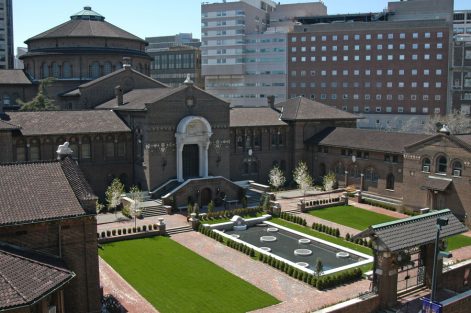
Vol. 30 / No. 1
By: William H. Davenport and Adria Katz
Opening Statement
The opening of the exhibition “The Dayaks: Peoples of the Borneo Rainforest” marks the inauguration of The University Museum’s new […]
View ArticleVol. 30 / No. 1
By: William H. Davenport
Borneo: Introduction
This issue of Expedition contains articles that focus on the island of Borneo and its peoples. It is being published […]
View ArticleVol. 30 / No. 1
By: Adria H. Katz
Borneo to Philadelphia: The Furness-Hiller-Harrison Collections
In the years 1895-1903 William H. Furness 3rd, Hiram M. Hiller and Alfred C. Harrison, Jr., (Fig. 1) traveled extensively […]
View ArticleVol. 30 / No. 1
By: Lucas Chin
Trade Objects: Their Impact on the Cultures of the Indigenous Peoples of Sarawak, Borneo
There are strong archaeological indications that the island of Borneo had begun to draw foreign traders and merchants to its […]
View ArticleVol. 30 / No. 1
By: Herbert L. Whittier and Patricia R. Whittier
Baby Carriers: A Link Between Social and Spiritual Values Among the Kenyah Dayak of Borneo
At first glance, the baby carrier (ba’) used by the Kenyah Dayak of central Borneo appears to be simply a […]
View ArticleVol. 30 / No. 1
By: Donald E. Brown
Tribe-Sulanate Relationships: Traditional Patterns of Rule in Brunei
An Overview The Late 19th century was a period of momentous change in Borneo. Dutch influence—spinning off from Holland’s control […]
View ArticleVol. 30 / No. 1
By: Christine Padoch
Agriculture in Interior Borneo: Shifting Cultivation and Alternatives
Flying over the island of Borneo ( or Kalimantan as it is known to Indonesians), one feature of the landscape […]
View ArticleVol. 30 / No. 1
By: Richard Allen Drake
Ibanic Textile Weaving: Its Enchantment in Social and Religious Practices
The weaving of attractive textiles is one of the freatures that distinguishes the Iabanic peoples of Borneo from neighboring Dayak […]
View ArticleVol. 30 / No. 1
By: Timothy C. Jussup and Andrew P. Vayda
Dayaks and Forests of Interior Borneo
Borneo, largest of the Greater Sunda Islands in the Indonesian archipelago (Fig. 2a,b) and the largest island in the world […]
View Article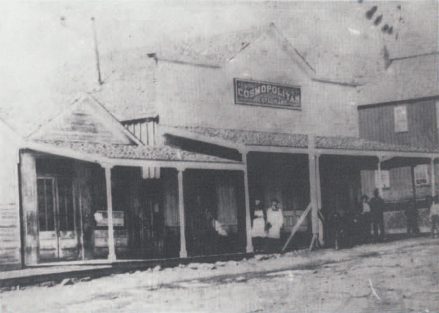
Vol. 30 / No. 2
By: Robert L. Schuyler
Silver Reef Project: Creation of a ‘Historic Ethnography’ for a 19th Century American Mining Town on the Western Frontier: University Museum Research Projects
Since 1981 the American Historical Archaeology Section of The University Museum has been running a project that alternates between digging […]
View ArticleVol. 30 / No. 2
By: Bonita Freeman-Witthof
Formal Games in the Cherokee Ritual Cycle
The Scientific Study of Games The formal games of western civilization have intrigued generations of scholars (see Expedition Vol. 27, […]
View ArticleVol. 30 / No. 2
By: Ruben E. Reina
The Sacred World of the Maya: Costumbre and Religion in Guatelmala
Dedicated to my friend and former student, Edwin C. Buxbaum Nothing is more real than the real; and that is […]
View ArticleVol. 30 / No. 2
By: Ralph M. Rowlett
Titelberg: A Celtic Hillfort in Luxembourg
In southwestern Luxembourg, near the border where Luxembourg, Belgium, and France come together, the site called Titelberg sits astride a […]
View ArticleVol. 30 / No. 2
By: Kyle M. Phillips and Ann H. Ashmead
Undoing the Past: Changing Attitudes Towards the Restoration of Greek Pots
When we first started working on the publication of The University Museum’s Attic red-figure pottery for the Corpus Vasorum Antiquorum, […]
View ArticleVol. 30 / No. 2
By: Karen Polinger Foster
Snakes and Lions: A New Reading of the West House Frescoes from Thera
In the Aegean Bronze Age, palaces and some private houses were richly decorated by murals depicting people, animals, and landscape […]
View ArticleVol. 30 / No. 2
By: Robert H. Dyson, Jr.
Where in the World?
Many people interested in The University Museum ask from time to time about our research activities. To respond to these […]
View ArticleVol. 30 / No. 2
By: Himanshu P. Ray
Early Buddhist Caves of the Western Deccan: Indian Long-Distance Trade in the Early Centuries A.D.
Located along the western coast of India are a series of caves, some of them richly decorated, that were cut […]
View Article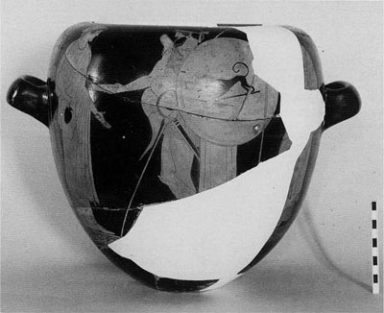
Vol. 30 / No. 2
By: Stephen P. Koob
The Conservation and Restoration of Red-figure Stamnos No. 48-30-3
The conservation and restoration of the red-figure stamnos 48-30-3 (University Museum collection) was undertaken with a view to returning the […]
View ArticleVol. 29 / No. 3
By: A. John Gwinnett and Leonard Gorelick
The Change from Stone Drills to Copper Drills in Mesopotamia: An Experimental Perspective
An important craft in ancient Mesopotamia was that of the lapidary—the maker of stone beads, amulets, figurines, small vessels and […]
View ArticleVol. 30 / No. 3
By: Susan A. Niles
Looking for ‘Lost’ Inca Palaces
The Incas, at the time of the Spanish Conquest in 1532, occupied the largest of the native Precolumbian states, with […]
View ArticleVol. 30 / No. 3
By: Catherine J. Julien
The Squier Causeway at Lake Umayo: Notes on Ancient Travel in the Northern Lake Titicaca Basin
When Ephraim George Squier embarked on his exploration of highland Peru and Bolivia in 1864-65, he rode on muleback across […]
View ArticleVol. 30 / No. 3
By: Denise Carlevato
Late Ceramics from Pucara, Peru: An Indicator of Changing Site Function
In the southern reaches of the Peruvian Andes lies a high, spacious plateau within the northern Lake Titicaca Basin (see […]
View ArticleVol. 30 / No. 3
By: Sergio J. Chavez
Archaeological Reconnaissance in the Province of Chumbivilcas, South Highland Peru
Despite its close proximity to the city of Cuzco, once the capital of the vast Inca empire, the Province of […]
View ArticleVol. 30 / No. 3
By: Karen L. Mohr Chavez
The Significance of Chiripa in Lake Titicaca Basin Developments
Them site of Chiripa is located in Bolivia on the southern shore of Lake Titicaca. A series of structures revealed […]
View ArticleVol. 30 / No. 3
By: Clark L. Erickson
Raised Field Agriculture in the Lake Titicaca Basin: Putting Ancient Agriculture Back to Work
The remains of an extensive ancient agricultural system built and used by Andean peoples centuries ago are found throughout the […]
View ArticleVol. 30 / No. 3
By: Karen L. Mohr Chavez
Alfred Kidder II: 1911-1984
Alfred Kidder II (called Alf, Alfie, Ted, or Teddy by family, friends, and colleagues) was born on August 2, 1911, […]
View ArticleVol. 30 / No. 3
By: Karen L. Mohr Chavez
About This Issue
This special issue of Expedition is published in honor of Dr. Alfred Kidder II ( 1911- 1984 ), former Curator […]
View Article
Vol. 31 / No. 1
By: John Monaghan
The Feathered Serpent in Oaxaca: An Approach to the Study of the Mixteca Codices
The Mixteca region of the Mexican states of Oaxaca, Puebla, and Guerrero is the home of one of the largest […]
View ArticleVol. 31 / No. 1
By: Ward H. Goodenough
The Trukese-English Dictionary: Recording a Language on the Computer
The creation of a dictionary often strikes people as an extraordinary undertaking, although it is more of a commonplace at […]
View ArticleVol. 31 / No. 1
By: Simon Holdaway and Susan A. Johnston
Upper Paleolithic Notation Systems in Prehistoric Europe
The search for an indigenous writing system among the prehistoric cultures of Temperate Europe has a long history which may […]
View ArticleVol. 31 / No. 1
By: Ezat O. Negahban
Persian Calligraphy: The Development of an Art Form
Iran is one of many cultures in which the written word has been transformed into an art form, an extension […]
View Article
Vol. 31 / No. 1
By: Lynn E. Roller
The Art of Writing at Gordion
The impetus to record a previously unwritten language must be powerful, since it requires adaptation to a new kind of […]
View ArticleVol. 31 / No. 1
By: Cheng-mei Chang
Chinese Writing: A System of Characters Rich in Structural Diversity
Chinese writing is a system primarily intelligible to the eyes rather than to the ears. Each written character can be […]
View Article
Vol. 31 / No. 1
By: John Winter
Chinese Ink
Leaving aside such cases as inscriptions incised in stone or cast in bronze, almost all traditional writing in China, as […]
View ArticleVol. 31 / No. 2-3
By: Vincent C. Pigott
The Emergence of Iron Use at Hasanlu
Artifacts of iron constitute one of the single largest classes excavated at Hasanlu. More than 2000 individual iron objects were […]
View ArticleVol. 31 / No. 2-3
By: David S. Reese
Treasures from the Sea: Shells and Shell Ornaments from Hasanlu IVB
Shell is one of the most durable materials in the archaeological record. Shells and shellfish have been used by man […]
View ArticleVol. 31 / No. 2-3
By: Mary Virginia Harris
Glimpses of an Iron Age Landscape: Plants at Hasanlu
On an August evening in 1970 A.D., standing on the top of Hasanlu Tepe, I could see the headlights of […]
View Article
Vol. 31 / No. 2-3
By: Irene J. Winter
The ‘Hasanlu Gold Bowl’: Thirty Years Later
Just over 30 years ago, the extraordinary vessel known as the “Hasanlu Gold Bowl” was discovered in the debris of […]
View ArticleVol. 31 / No. 2-3
By: Robert H. Dyson, Jr.
The Iron Age Architecture at Hasanlu: An Essay
One of the most important results of the excavation of Iron Age Hasanlu is the recovery of well-preserved architectural remains […]
View ArticleVol. 31 / No. 2-3
By: Oscar W. Muscarella
Warfare at Hasanlu in the Late 9th Century B.C.
Warfare in the ancient Near East is abundantly documented by written and archaeological evidence. The use of force to settle […]
View ArticleVol. 31 / No. 2-3
By: Maude de Schauensee
Horse Gear from Hasanlu
The largest collection of contemporaneous, archaeologically documented horse paraphernalia in the Near East comes from the ruins of the town […]
View ArticleVol. 31 / No. 2-3
By: Robert H. Dyson, Jr.
Rediscovering Hasanlu
The unexpected discovery in 1958 of the now famous “Hasalu Gold Bowl” in a burned occupation level at that site led […]
View ArticleVol. 31 / No. 2-3
By: Michelle I. Marcus
Emblems of Authority: The Seals and Sealings from Hasanlu IVB
In the ancient Near East, small stamps and cylinders with carved or molded designs were used as emblems of status […]
View ArticleVol. 31 / No. 2-3
By: Tammi J. Schneider
Assyrian Texts: The Inscriptions of Assurnasirpal II and His Son
The existence of written records at a site is viewed with great joy because texts impart information that cannot be […]
View Article
Vol. 32 / No. 1
By: Patrick E. McGovern
The Ultimate Attire: Jewelry from a Canaanite Temple at Beth Shan
Tells el-Husn, ancient Beth Shari, was the first site to be excavated by The University Museum in what is today […]
View Article
Vol. 32 / No. 1
By: Nancy Micklewright
Looking at the Past: Nineteenth Century Images of Constantinople as Historic Documents
Unlace events in more remote periods (the Bronze Age, Classical Antiquity, or even the Renaissance), the events and people of […]
View ArticleVol. 32 / No. 1
By: Ben Burt
Kwara’ae Costume Ornaments: A Solomon Islands Art Form
One of the things that impressed early European visitors to Solomon Islands was the way the people dressed themselves in […]
View ArticleVol. 32 / No. 1
By: Lorraine V. Aragon
Barkcloth Production in Central Sulawesi: A Vanishing Textile Technology in Outer Island Indonesia
Before the invention or adoption of woven textiles, bark-cloth was used to clothe the human body in many, if not […]
View ArticleVol. 32 / No. 1
By: Karen S. Rubinson
The Textiles from Pazyryk: A Study in the Transfer and Transformation of Artisitc Motifs
Winters are cold and summers brief at the site of Pazyryk in the Altai Mountains of Siberia. Here, in a […]
View Article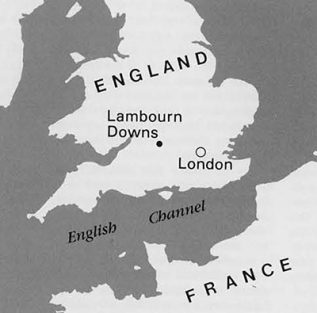
Vol. 32 / No. 2
By: Steve Ford, Mark Bowden, Vince Gaffney and Geoff Mees
Dating Ancient Field Systems on the Berkshire Downs in England
Undisturbed by modern plowing, the remains of ancient fields are still common on the chalk downlands of southern England. Where […]
View Article
Vol. 32 / No. 2
By: Kathryn L. Gleason
Gardens and Landscapes of the Past: Introduction
In the past few years, the results of over two decades of research in the new discipline of landscape archaeology […]
View Article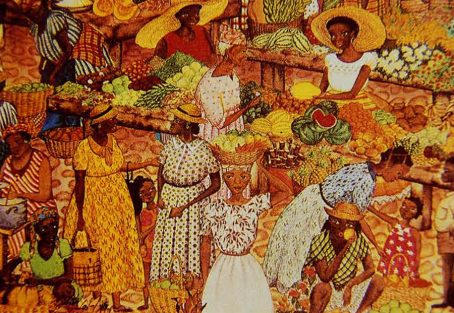
Vol. 32 / No. 2
By: Lydia Mihelic Pulsipher
They Have Saturdays and Sundays to Feed Themselves: Slave Gardens in the Caribbean
They have Saturdays in the Afternoon, and Sundays, with Christmas Holidays, Easter call’d little or Piganinny Christmas, and some other […]
View ArticleVol. 32 / No. 2
By: Kathryn L. Gleason
The Garden Portico of Pompey the Great: An Ancient Public Park Preserved in the Layers of Rome
Rome is thought of as a city for walking. In the coolness of a summer evening, Romans and visitors alike […]
View ArticleVol. 32 / No. 2
By: Naomi F. Miller
Palm Trees in Paradise: Victorian Views of the Ancient Near East Landscape
The significant origin stories of Western civilization take place in the ancient Near East, a fact that provoked interest in […]
View Article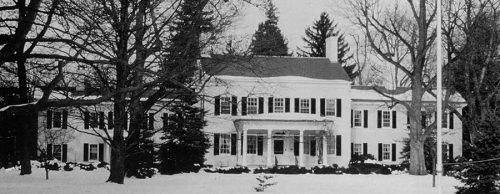
Vol. 32 / No. 2
By: Anne Yentsch
Historic Morven: The Archaeological Reappearance of an 18th Century Princeton Garden
The Family, the House, the Gardens Ink the late 17th century the first Stockton family moved to Princeton, and in […]
View Article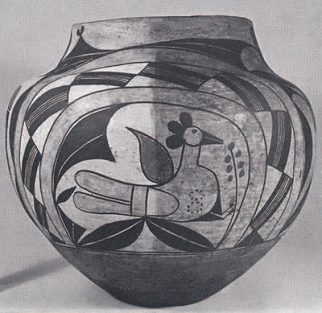
Vol. 32 / No. 2
By: Lynn Grant
Southwest Pottery Artifacts on Tour: A Report from Conservation
Southwest Pottery Artifacts on Tour: A Report from Conservation The University Museum has had an active program of loaning artifacts […]
View ArticleVol. 32 / No. 2
By: Gail E. Wagner
Charcoal, Isotopes, and Shell Hoes: Reconstructing a 12th Century Native American Garden
Corn-based agriculture was established among the Fort Ancient Indians in the central Ohio River valley by the 11th century A.D. […]
View ArticleVol. 32 / No. 3
By: J. Wilson Myers and Eleanor Emlen Myers
Low-Altitude Aerial Photography in Crete
As early as 1930, at the fortress tell of Megiddo, the biblical Armageddon, vertical balloon photographs were used to help […]
View Article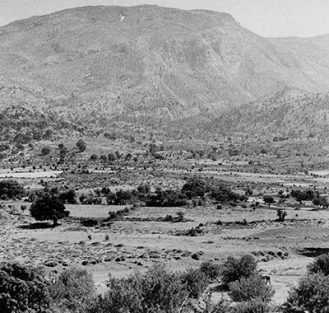
Vol. 32 / No. 3
By: Harriet Blitzer
Pastoral Life in the Mountains of Crete: An Ethnoarchaeological Perspective
Archaeological research in Crete has always maintained a tenuous and sometimes contrary bond with evidence of traditional human activity in […]
View ArticleVol. 32 / No. 3
By: Barbara J. Hayden and Jennifer A. Moody
The Vrokastro Survey Project: Providing a Context for an Early Iron Age Site
Of the most dramatic coastlines in Europe is located along the northern shores of eastern Crete, where sea-weathered rock formations, […]
View ArticleVol. 32 / No. 3
By: Barbara J. Hayden, Jennifer A. Moody and Polymnia Muhly
Introduction – Winter 1990
Generations of historians, archaeologists, anthropologists, and scientists have chosen Crete as the focus of their research. A combination of factors […]
View ArticleVol. 32 / No. 3
By: Joseph W. Shaw
North American Archaeological Work in Crete, 1880 to 1990
The First Phase of Research The island of Crete with its rich Minoan and Classical civilization has been the field […]
View Article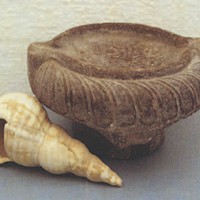
Vol. 32 / No. 3
By: Philip P. Betancourt
The Stone Vessels of Pseira
“Never…have I seen so many stone vases in so short a time.” Richard Seager, letter to Edith Hall from Pseira, […]
View ArticleVol. 32 / No. 3
By: Polymnia Muhly
The Great Goddess and the Priest-King: Minoan Religion in Flux
The discussion of practically every aspect of Minoan civilization begins with the work of Sir Arthur Evans, who, almost half […]
View ArticleVol. 32 / No. 3
By: Geraldine C. Gesell, Leslie Preston Day and William D.E. Coulson
Tombs and Burial Practices in Early Iron Age Crete
Tombs and graves have always been of particular interest to archaeologists for the information they provide about the people buried […]
View ArticleVol. 33 / No. 1
By: Lewis R. Binford
A Corporate Caribou Hunt: Documenting the Archaeology of Past Lifeways
In seeking to understand the archaeological record, one of the most important conditioners of how well we infer a past […]
View ArticleVol. 33 / No. 1
By: Lee Horne
Reading Village Plans: Architecture and Social Change in Northeastern Iran
Architecture plays multiple roles in people’s lives. Dwellings reflect not only how people live, but also how they think about […]
View ArticleVol. 33 / No. 1
By: Warren R. DeBoer and John H. Blitz
Ceremonial Centers of the Chachi
It would seem that archaeologists are forever talking about ceremonial centers, places where people do not reside permanently but where they […]
View Article
Vol. 33 / No. 1
By: Lee Horne
What is Ethnoarchaeology?: Introduction
In the traditional academic division of labor, ethnographers study the present, archaeologists study the past. Both aim to understand and […]
View ArticleVol. 33 / No. 1
By: William A. Longacre, James M. Skibo and Miriam T. Stark
Ethnoarchaeology at the Top of the World: New Ceramic Studies Among the Kalinga of Luzon
I. History of the Project The Kalinga are a tribal society inhabiting the high mountains of Luzon in the northern […]
View Article
Vol. 33 / No. 1
By: Glenn Davis Stone
Settlement Ethnoarchaeology: Changing Patterns Among the Kofyar of Nigeria
Archaeology consists of both reconstructing what happened and explaining it happened. archaeological has always been conducted with an eye towards […]
View ArticleVol. 33 / No. 1
By: Nan A. Rothschild
Incorporating the Outdoors as Living Space: Ethnoarchaeology at Zuni Pueblo, New Mexico
People’s houses both define and are defined by their lives. The material and permanence of houses are related to the […]
View Article
Vol. 33 / No. 2
By: Victoria Lindsay Levine
Feathers in Southeast American Indian Ceremonialism
On May 18, 1539, the Spaniard Hernando de Soto embarked on an expedition to explore what is now the southeastern […]
View ArticleVol. 33 / No. 2
By: Albert H. Schroeder
Early Accounts of Birds and Feathers Used by the Southwest Indians
Interpretation of prehistory is basically dependent upon material culture items recovered in association with features of different time periods and/or […]
View Article
Vol. 33 / No. 2
By: Donald N. Brown
Indians, Feathers, and the Law in Western Oklahoma
In April of 1974, just as the summer powwow dancing season was beginning, twenty-eight residents of central and western Oklahoma, […]
View ArticleVol. 33 / No. 2
By: Marianne L. Stoller
Birds, Feathers, and Hopi Ceremonialism
“When we plant corn we place seven or eight seeds in each hole. Of course, we don’t need to grow […]
View ArticleVol. 33 / No. 2
By: Robert J. Sharer, Loa P. Traxler and Julia C. Miller
The Copan Corte: A Window on the Architectural History of a Maya City: Reports from the Field
Sylvanus G. Morley referred to the river cut through the Acropolis at Copan, Honduras, as “the largest archaeological cross-section in […]
View ArticleVol. 33 / No. 2
By: Lucy Fowler Williams
The Calusa Indians: Maritime Peoples of Florida in the Age of Columbus: Behind the Scenes
The University Museum has an exceptional collection of artifacts from the Calusa site at Key Marco, Florida. The pelican, wolf, […]
View ArticleVol. 33 / No. 3
By: Seetha N. Reddy
On the Banks of the River: Opportunistic Cultivation in South India
From time immemorial river floodplains have been an attractive environment for human exploitation, particularly through agriculture and pastoralism. Well-known examples, […]
View ArticleVol. 33 / No. 3
By: William H. Isbell
Honcopampa: Monumental Ruins in Peru's North Highlands
More than three thousand years ago, a great tradition of stone sculpture and megalithic architecture emerged in Peru’s north highland […]
View ArticleVol. 33 / No. 3
By: Kenneth M. Kensinger
A Body of Knowledge, or, the Body Knows
It was only a brief comment from a father to his young son but it launched me on one of […]
View ArticleVol. 33 / No. 3
By: Eric H. Cline and Martin J. Cline
‘Of Shoes and Ships and Sealing Wax’: International Trade and the Late Bronze Age Aegean
Lewis Carroll, author of Alice in Wonderland and Through the Looking Glass, was no stranger to classical antiquity. It is, […]
View ArticleVol. 33 / No. 3
By: Robert S. O. Harding
Capuchins, Capybaras, and Cattle: Reports from the Field
Many Museum members are familiar with the popular “Reports from the Field” lecture program. In an effort to expand the […]
View ArticleVol. 33 / No. 3
By: David O'Connor
Boat Graves and Pyramid Origins: New Discoveries at Abydos, Egypt
The study of ancient Egypt revolves around a number of questions about major aspects of Egyptian culture, questions not yet […]
View ArticleVol. 34 / No. 1-2
By: Gerald P. Schaus
Pottery from the Sanctuary: A Question of Function
The Sanctuary of Demeter was filled with dedications, special gifts offered by worshipers, likely with the thought that a pact […]
View ArticleVol. 34 / No. 1-2
By: Donald White
Illustrations by the Early Travelers: An Appreciation of a Lost Art
The following 15 North African coastal scenes were executed by four artist-explorers between roughly 1820 and 1865. The geographic region […]
View ArticleVol. 34 / No. 1-2
By: Donald White
Preface: Excavations at The Extramural Sanctuary of Demeter and Persephone at Cyrene, 1969-1981
Ceres, thou most bounteous lady, thy rich leas Of wheat, rye, barley, vetches, oats, and pease; Thy turf y mountains, where live […]
View ArticleVol. 34 / No. 1-2
By: P. Gregory Warden
Gift, Offering, and Reciprocity: Personalized Remembrance and the 'Small Finds'
Small finds are the “grab bag” of archaeology; in this category are all the portable objects—explainable and unexplainable—found on sites. […]
View ArticleVol. 34 / No. 1-2
By: T. V. Buttrey
The Coins and the Cult
For centuries the Sanctuary of Demeter and Persephone at Cyrene attracted the attendance of the faithful, whose dedications included coined […]
View ArticleVol. 34 / No. 1-2
By: Susan Kane
Kore’s Return: Statuary from the Sanctuary
The Thesmophoria are a Greek festival containing mysteries…They are celebrated, according to the more mythical account, because when Kore was […]
View ArticleVol. 34 / No. 1-2
By: Donald White
The Sanctuary’s History and Architecture
Archaeologists know from experience that Demeter sanctuaries can be counted on to warehouse large quantities of objects. The worship of […]
View ArticleVol. 34 / No. 1-2
By: Jaimee P. Uhlenbrock
History, Trade, and the Terracottas
Over 4,500 terracotta figurines spanning some 800 years, from the 7th century B.C. to the 1st century of the Christian […]
View ArticleVol. 34 / No. 1-2
By: Donald White
Statue Breakers and Spirit Exorcists: The Earthquake Destruction and Its Aftereffects
The Sanctuary’s later days are marred by acts of violence that form a disturbing contrast with its apparently tranquil preceding […]
View Article
Vol. 34 / No. 1-2
By: Janet Monge
Victims of the Quake
An almost complete absence of human remains trapped in the destruction level of the Sanctuary argues that effectively nothing in […]
View ArticleVol. 34 / No. 3
By: Randall White
The Earliest Images: Ice Age 'Art' in Europe
The term “Ice Age art” usually evokes images of painted caves. However, by the time the first cave was painted […]
View Article
Vol. 34 / No. 3
By: Philip G. Chase
Introduction – Winter 1992
Ice Age archaeology has a special fascination, for it was during this time that our ancestors became fully human, both […]
View ArticleVol. 34 / No. 3
By: Philip G. Chase
What Were the Ice Ages?
Humans, or at least the first members of our biological family, first arrived in Europe at least 500,000 years ago. […]
View ArticleVol. 34 / No. 3
By: Harold L. Dibble
Paleolithic Archaeology: The Search for our Human Heritage
The Paleolithic, or “Old Stone Age,” is a fascinating period of prehistory for anyone interested in human origins and evolution. […]
View ArticleVol. 34 / No. 3
By: Philip G. Chase
Language in the Ice Ages: When Did Europeans First Speak?
Using language is part of being human, and of all living species, we alone possess this ability. It is crucial […]
View Article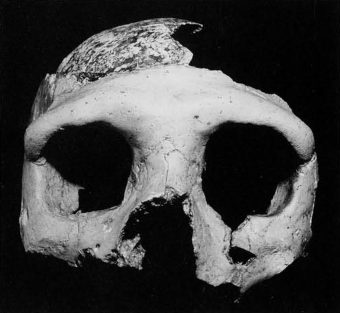
Vol. 34 / No. 3
By: Nancy Minugh-Purvis
The Inhabitants of Ice Age Europe
Early European Origins The first inhabitants of Europe were not native to the region. Some 5 to 6 million years […]
View ArticleVol. 35 / No. 1
By: Christian E. Downum
Southwestern Archaeology: Past, Present, and Future
When the U.S. ended its war with Mexico, it gained a vast new western territory that included most of the […]
View ArticleVol. 35 / No. 1
By: Eric Blinman
Anasazi Pottery: Evolution of a Technology
Pottery is ubiquitous on Anasazi archaeological sites (Figs. 1 and 2), and it is both one of the aesthetic joys […]
View ArticleVol. 35 / No. 1
By: Glen Rice and Charles Redman
Platform Mounds of the Arizona Desert: An Experiment in Organizational Complexity
In the fall of 1989 we began an eight-year project to investigate platform mound communities in the Tonto Basin of […]
View ArticleVol. 35 / No. 1
By: Catherine M. Cameron
Photographic Analysis: A Study of Architectural Change at Oraibi Pueblo
The multistoried pueblos of the Southwest appear ancient, time-less, and unchanging. Most of these villages have been occupied for over […]
View Article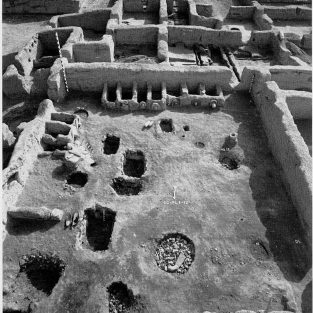
Vol. 35 / No. 1
By: Paul Minnis and Michael Whalen
Casas Grandes: Archaeology in Northern Mexico
“the great difficulty being in determining where the remains of these people [of Cases Grander] ceased, and those of ruder […]
View ArticleVol. 35 / No. 1
By: Stephen H. Lekson
Chaco, Hohokam and Mimbres: The Southwest in the 11th and 12th Centuries
Caesar’s Gaul, the Southwest of the 11th and 12th centuries was divided into three parts (Fig. 2): Anasazi (on the […]
View Article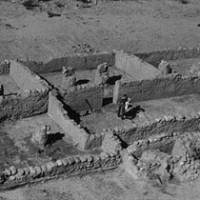
Vol. 35 / No. 1
By: Catherine M. Cameron
Recent Research in the Prehistoric Southwest: Introduction
The Southwest has been long been renowned for its spectacular archaeological sites and for the contemporary Native American groups whose […]
View ArticleVol. 35 / No. 2
By: Samia B. Dafa'alla
Art and Industry: The Achievements of Meroe
The empire of Meroe flourished along the Sudanic Nile valley from approximately 300 B.C. to A.D. 350. Although successors to […]
View ArticleVol. 35 / No. 2
By: John Alexander
Beyond the Nile: The Influence of Egypt and Nubia in Sub-Saharan Africa
A number of developments in human affairs seem to have taken place earlier in the Nile Valley—especially in Egypt—than in […]
View ArticleVol. 35 / No. 2
By: William Y. Adams
Medieval Nubia: Another Golden Age
It is no easy task to review the history of Nubia from A.D. 400 to 1500 in a few pages, […]
View ArticleVol. 35 / No. 2
By: David O'Connor
Chiefs or Kings?: Rethinking Early Nubian Politics
Egypt and Nubia—immediately upstream of Egypt developed the two earliest known of Africa’s many civilizations. Yet Nubia is not found on modern […]
View ArticleVol. 35 / No. 2
By: Frank M. Snowden, Jr.
Images and Attitudes: Ancient Views of Nubia and the Nubians
Ancient Nubia was clearly perceived by its contemporaries as an independent country, rich in coveted resources and inhabited by dark […]
View Article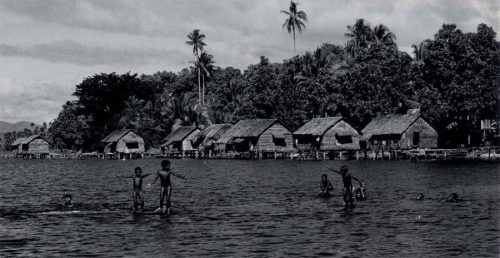
Vol. 35 / No. 3
By: Barbara H. Roll
Pere Village
Pere is the home of the largest and most powerful clan on the south coast of Manus. In 1928 it […]
View Article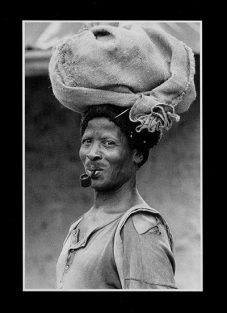
Vol. 35 / No. 3
By: Kris L. Hardin
Representing Africa: Whose Story Counts?
Photographs have long been an important tool of cultural anthropologists. A quick survey of the anthropological literature shows visual images being […]
View ArticleVol. 35 / No. 3
By: Eleanor M. King
Fieldwork in Brazil: Petrullo's Visit to the Yawalapiti
Preface Matto Grosso was tirst entered, by way of the Paraguay river, in the latter part of the sixteenth century […]
View ArticleVol. 35 / No. 3
By: Vincenzo Petrullo
‘Among Friends’: Excerpt from Uni, an Unpublished Manuscript
As the narrative begins, we find Petrullo and his companion, Arthur Rossi, encamped on. the bank of the Kuluene River. […]
View Article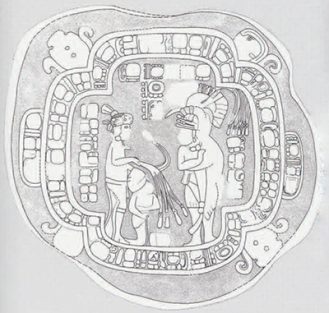
Vol. 35 / No. 3
By: Lee Horne
Return to Caracol: Behind the Scenes
In September of 1951. The University Museum received a 20ton shipment of limestone monuments. most of them in fragments, from […]
View Article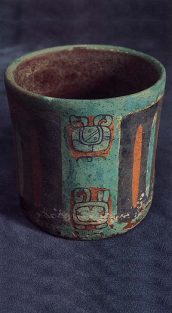
Vol. 35 / No. 3
By: Loa P. Traxler
A New Discovery at Copan: Reports from the Field
In the spring of 1992, University Museum excavators of the ancient Maya city of Copan made the remarkable discovery of […]
View Article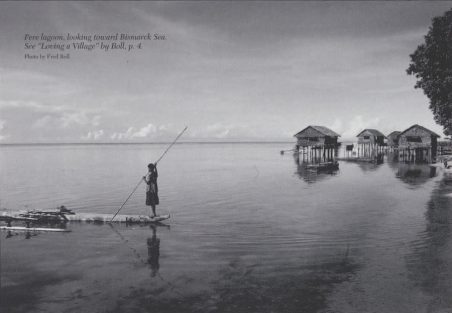
Vol. 35 / No. 3
By: Lee Horne
Focus on Fieldwork: Introduction
This issue of Expedition focuses on five very different kinds of fieldwork projects. All are connected in one way or another […]
View Article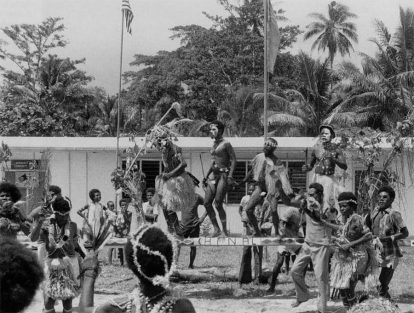
Vol. 35 / No. 3
By: Barbara H. Roll
Loving a Village
In 1928 the newly married young anthropologists Margaret Mead and Reo Fortune lived for six months in a village called […]
View ArticleVol. 36 / No. 1
By: Duffie Westheimer
The Annual MNA Indian Art Exhibitions
In 1984 I was sorting piles of Navajo rugs for the Museum of Northern Arizona’s Navajo Artists Exhibition. I think […]
View Article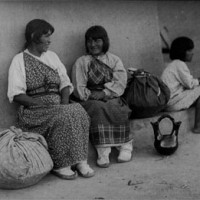
Vol. 36 / No. 1
By: Tessie Naranjo
Pottery Making in a Changing World: Santa Clara Pueblo
About 10 miles from my home in Santa Clara Pueblo, is Puce, the home of my ancestors. Puce sits on […]
View Article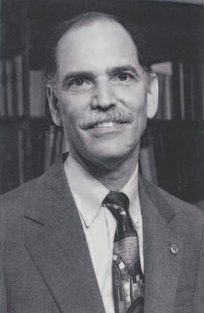
Vol. 36 / No. 1
By: Jeremy A. Sabloff
Musings and Visions from the Director’s Desk – Spring 1994
It is a great privilege and honor for me to be the eleventh Director and the second Charles K. Williams […]
View Article
Vol. 36 / No. 1
By: Lee Horne
Introduction – Spring 1994
This special Expedition on Native Fairs and Markets of the Southwest takes issues of tradition and innovation, preservation and change, […]
View ArticleVol. 36 / No. 1
By: Lea S. McChesney
Producing ‘Generations in Clay’: Kinship, Markets, and Hopi Pottery
In November 1992, “His” or Camille Nampeyo, a 28-year-old great-great-granddaughter of the famous potter Nampeyo, was profiled as one of […]
View ArticleVol. 36 / No. 1
By: Bruce Bernstein
Pueblo Potters, Museum Curators, and Santa Fe’s Indian Market
In 1992 Lonnie Vigil, a potter from the Tewa pueblo of Nambe in New Mexico, almost won Best of Show […]
View ArticleVol. 36 / No. 1
By: Linda B. Eaton
The Hopi Craftsman Exhibition: The Creation of Authenticity
The relationship of the public with American Indians has always been uneasy, and museums are often brokers in the complex […]
View ArticleVol. 36 / No. 2-3
By: Aleksey A. Malyshev and Michail J. Treister
A Warrior’s Burial from the Asiatic Bosporous in the Augustan Age
In antiquity, a significant part of the northern Black Sea coast belonged to the Bosporan state, with its capital in […]
View Article
Vol. 36 / No. 2-3
By: Jeremy A. Sabloff
Musings and Visions from the Director’s Desk – Summer/Winter 1994
While media images of archaeologists come and go, from the pith-helmeted, absent-minded professor poring over piles of potsherds to the […]
View Article
Vol. 36 / No. 2-3
By: Gregory M. Bongard-Levin and Yuri G. Vinogradov
The Northern Black Sea Coast in Classical Antiquity: New Discoveries
THE NORTHERN BLACK SEA LITTORAL was considered by both ancient and contemporary, scholars to exist on the remotest peripheries of […]
View ArticleVol. 36 / No. 2-3
By: Michail J. Treister
A New Example of Ancient Metalwork from a Sarmatian Kurgan
The Sarmatian were Iranian-speaking nomads who, over the course of centuries, dominated vast territories from the Lower Volga area to […]
View ArticleVol. 36 / No. 2-3
By: Yuri G. Vinogradov
A Maiden’s Golden Burial from Berezan, the Island of Achilles
A thanks-offering to Achilles Pontarkhos. O round booty in its glorious support of the gods, 0 island washed round by […]
View ArticleVol. 36 / No. 2-3
By: Nina A. Leypunskaya
Olbia Pontica and the ‘Olbian Muse’
In the southern part of the Ukraine, not far from where the Bug estuary meets the Black Sea, the Ionian […]
View ArticleVol. 36 / No. 2-3
By: Ekaterina M. Alekseyeva
Gorgippia: A Bosporan Polis in Ancient Sindike
In the 6th century B.C., Ionian and Aeolian colonists founded the first Greek poles (city-states) on the shores of the […]
View ArticleVol. 37 / No. 1
By: Monty Roessel
Navajo Voices
I decided to become a photographer because I was tired of outsiders stepping into my community for a few days […]
View ArticleVol. 37 / No. 1
By: Owen Seumptewa
Photographs by Owen Seumptewa
PHOTOGRAPHS BY OWEN SEUMPTEWA
View ArticleVol. 37 / No. 1
By: Victoria Spencer and Marlene Sekaquaptewa
Piki of the Hopi Indians
As the sun rises, spreading light and warmth over the golden landscape of the Hopi mesas, a woman goes to […]
View Article
Vol. 37 / No. 1
By: Jeremy A. Sabloff
Musings and Visions from the Director’s Desk – Spring 1995
The University of Pennsylvania Museum is delighted to have this special issue of Expedition appear in conjunction with the opening […]
View ArticleVol. 37 / No. 1
By: Dorothy K. Washburn
Introduction – Spring 1995
This special issue of Expedition Magazine is designed to accompany the new exhibition “Living in Balance: The Universe of the […]
View ArticleVol. 37 / No. 1
By: Diane Willie
Frank
One night while the icy wind whistled through the cracks of Grandma’s hogan, the owl came and screeched his prophecy. […]
View ArticleVol. 37 / No. 1
By: Hershman John
Two Poems by Hershman John: Navajo
Grandmother Moon Tonight is the Lunar eclipse Tonight the moon blooms Tonight my grandma is home. The cornfield carpets the […]
View Article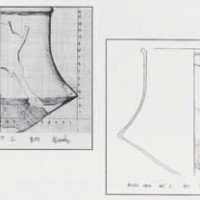
Vol. 37 / No. 2
By: Jeremy A. Sabloff
Musings and Visions from the Director’s Desk – Summer 1995
The University of Pennsylvania Museum recently presented a small but very important temporary exhibit entitled “Illuminating the Past: The Art […]
View ArticleVol. 37 / No. 2
By: Hattula Moholy-Nagy
Shells and Society at Tikal, Guatemala
Thousands of unworked mariner shells, shell artifacts, and fragments of production waste, or debitage, were recovered from the University of […]
View ArticleVol. 37 / No. 2
By: Gary M. Feinman and Linda M. Nicholas
Household Craft Specialization and Shell Ornament Manufacture in Ejutla, Mexico
INTRODUCTION It has been more than 60 years since Alfonso Caso (1932) discovered the spectacular Tomb 7 at the hilltop […]
View ArticleVol. 37 / No. 2
By: Timothy Matney
Re-excavating Cheshmeh Ali: Reviews and Reports
Fainted ceramic traditions were widespread across southwestern Asia in the Early Chalcolithic period (roughly 5500 to 5000 B.C.), distributed from […]
View ArticleVol. 37 / No. 2
By: Steven E. Sidebotham
Routes Through the Eastern Desert of Egypt
Not since the Ptolemaic-Roman-Byzantine era (late 4th century B.C. to 7th century A.D.) have the Eastern Desert and Red Sea coast of Egypt […]
View Article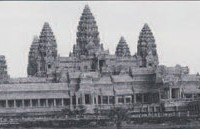
Vol. 37 / No. 3
By: Jeremy A. Sabloff
Musings and Visions from the Director’s Desk – Winter 1995
“museum: an institution devoted to the procurement, care, and display of objects of lasting interest or value.” -Webster’s Third New International […]
View ArticleVol. 37 / No. 3
By: Thierry Zephir
The Angkorean Temple-Mountain: Diversity, Evolution, Permanence
In many ancient religions, mountain tops—from the Greeks’ Mt. Olympus to the highest Himalayas of Hindu mythologywere believed to be […]
View ArticleVol. 37 / No. 3
By: Richard A. Engelhardt
Two Thousand Years of Engineering Genius on the Angkor Plain
Commanding a strategic location on the uppermost tip of Cambodia’s great Tonle Dap lake, the ruins of the Angkor Empire […]
View ArticleVol. 37 / No. 3
By: David Bowden
Angkor: Planning for Sustainable Tourism
Tourism is a commodity supporting a vast industry. Indeed it is claimed to he the biggest industry in the world, […]
View ArticleVol. 37 / No. 3
By: David A. Feingold
The Play of the Gods: A Photo-Essay on Khmer Dance Training
David Feingold has watched the revival of Khmer dance over the past nine years, seeing students start to regain the […]
View ArticleVol. 37 / No. 3
By: Heather A. Peters
Cambodian History Through Cambodian Museums
Museums are more than repositories for the relics of the past; they are also mirrors of a people and society […]
View ArticleVol. 38 / No. 1
By: Richard L. Zettler
Tell es-Sweyhat, 1989-1995: A City in Northern Mesopotamia in the 3rd Millennium B.C.
Tell es-Sweyhat is a large 3rd millennium site on the Euphrates River in northern Syria. Excavations undertaken in the mid-1970s […]
View ArticleVol. 38 / No. 1
By: Jeremy A. Sabloff
Settlement Patterns and Community Organization in the Maya Lowlands
Since the last century the principal emphasis of Maya studies has been on the ancient Maya elite. This fact is […]
View ArticleVol. 38 / No. 1
By: Michael D. Danti
The Tell es-Sweyhat Regional Archaeological Project
The Tell es-Sweyhat project’s research design extends beyond the site-specific level of analysis to cover broader issues, regional and interregional […]
View ArticleVol. 38 / No. 1
By: H. Leedom Lefferts, Jr.
The Ritual Importance of the Mundane:: White Cloth Among the Tai of Southeast Asia
Often, when we consider that something has ritual importance, we imagine it as exotic, strange, and, possibly, wondrously beautiful. We […]
View Article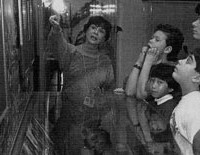
Vol. 38 / No. 1
By: Stephen M. Epstein
Musings and Visions from the Museum – Spring 1996
Perhaps the most self-evident aspect of the University of Pennsylvania Museum’s mission is stewardship of the artifacts in our care. […]
View ArticleVol. 38 / No. 1
By: Jeremiah Dandoy
Astragali, the Ubiquitous Gaming Pieces: Reviews and Reports
The astragalus, or talus, is a uniquely shaped, compact bone (Fig. 2) found in virtually every mammal including humans. It […]
View ArticleVol. 38 / No. 1
By: Peter Peregrine
Geomagnetic Mapping at Tell es-Sweyhat
The premise of the archaeological use of geomagnetic is that archaeological deposits can be recognized as disruptions of the otherwise […]
View ArticleVol. 38 / No. 1
By: Naomi F. Miller and Jill Anne Weber
Botanical and Faunal Remains from Tell es-Sweyhat
Botanical Remains Charred plant remains from ancient sites open a window onto many aspects of ancient Landscape and economy. In […]
View ArticleVol. 38 / No. 2
By: Stuart J. Fleming
Early Imperial Roman Glass at the University of Pennsylvania Museum
Five years ago, when the ideas underlying the forthcoming exhibition Roman Glass: Reflections on Cultural Change were still in embryo, […]
View Article
Vol. 38 / No. 2
By: John Scarborough
Drugs and Medicines in the Roman World
The doctor stepped softly out of the sickroom, where Licinius was breathing his last. Rattling, rasping, wheezing, gasping for air, […]
View ArticleVol. 38 / No. 2
By: Hilary E. M. Cool
The Boudican Uprising and the Glass Vessels from Colchester
In AD 60 the town of Colchester, about 85 kilometers northeast of London (Fig. 2), was burnt to the ground […]
View ArticleVol. 38 / No. 2
By: Jeremy A. Sabloff
Musings and Visions from the Director’s Desk – Summer 1996
It is a great privilege and honor for me to be the eleventh Director (and the second Charles K. Williams […]
View Article
Vol. 38 / No. 2
By: Lee Horne
Glass in the Roman World
In the fall of 1997, more than 180 Roman glass vessels from the University of Pennsylvania Museum will be placed […]
View ArticleVol. 38 / No. 2
By: David Whitehouse
Glass, Gold, and Gold-Glasses
Gold-glasses—objects with gold foil ornament sandwiched between two fused layers of glass—were the first category of Roman glass to attract […]
View Article
Vol. 38 / No. 3
By: Vincent C. Pigott
Musings and Visions from the Associate Director – Winter 1996
The University of Pennsylvania Museum ready to take on the next millennium? This question is prompted by a conference I […]
View ArticleVol. 38 / No. 3
By: Robert McCracken Peck
Nomads of the High Plateau: Photographs of Mongolia
For at least 10,000 years the people of Mongolia have dealt with minimal rainfall, sparse vegetation, and some of the […]
View ArticleVol. 38 / No. 3
By: Dorothy K. Washburn
Social Messages and Cultural Information in the Clothing of Southern Lao Women
Archaeologists typically classify the objects they excavate into “types,” that is, groupings of artifacts that appear similar, generally from the […]
View ArticleVol. 38 / No. 3
By: William H. Davenport
Wogosia: An Annual Renewal Rite in the Eastern Solomon Islands
Each year on the small island of Santa Catalina (locally called Aorilei) in the eastern Solomon Islands, a religious ceremony […]
View ArticleVol. 38 / No. 3
By: Michael W. Meister
Temples Along the Indus
High above the mighty Indus, on hills commonly called the Salt Range, stand important remains of forts with citadels and […]
View Article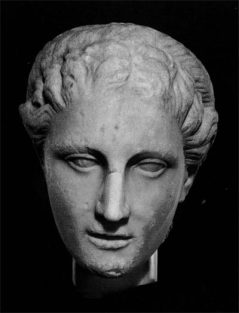
Vol. 38 / No. 3
By: Brunilde Sismondo Ridgway
Is the Hope Head an Italian Goddess?: A Case of Circumstantial Evidence
“Never forget that the most valuable acquisition a man of refined taste can make is a piece of fine Greek sculpture.” This […]
View ArticleVol. 39 / No. 1
By: Helen Schenck
From the Editor – Spring 1997
Once hundred years ago, the University of Pennsylvania Museum put out its first periodical, entitled The Bulletin of the Free […]
View ArticleVol. 39 / No. 1
By: Patrick E. McGovern, Ulrich Hartung, Virginia R. Badler, Donald L. Glusker and Lawrence J. Exner
The Beginnings of Winemaking and Viniculture in the Ancient Near East and Egypt
The origins of winemaking and viniculture are shrouded in the mists of human prehistory. Scenarios of how wine might have […]
View Article
Vol. 39 / No. 1
By: Paul Yule
The Copper Hoards of Northern India
In 1870, while tending cattle, two young boys in the village of Ghangaria in central India noticed a long metal […]
View ArticleVol. 39 / No. 1
By: David R. Starbuck
Military Hospitals on the Frontier of Colonial America
Health care in 18th-century America was radically different from today, and one of the greatest contrasts is in the role played […]
View Article
Vol. 39 / No. 1
By: Adria H. Katz and Jennifer L. White
Betel Chewing Paraphenalia from Asia and the Pacific: Behind the Scenes
From the east coast of Africa through South and Southeast Asia to the islands of Melanesia, wherever the areca palm […]
View ArticleVol. 39 / No. 1
By: Denise Schmandt-Besserat
Animal Symbols at ‘Ain Ghazal
Animal figurines are a familiar find on Near Eastern sites from the 9th to the 3rd millennium BC and from […]
View ArticleVol. 39 / No. 2
By: Michael Vickers
Glassware and the Changing Arbiters of Taste
Collectors and scholars have communicated, through exhibits and auction house sales catalogues, that during the time of the Roman Empire […]
View ArticleVol. 39 / No. 2
By: David West Reynolds
The Lost Architecture of Ancient Rome: Insights from the Severan Plan and the Regionary Catalogues
Much of the urban fabric of ancient Rome is lost to us. The famous monuments offer a powerful testament to […]
View ArticleVol. 39 / No. 2
By: Hugh Elton
Off the Battlefield: The Civilian's View of Late Roman Soldiers
When historians discuss the Roman army, they usually talk about the administration of the army or about the army at […]
View ArticleVol. 39 / No. 2
By: Stuart J. Fleming
Late Roman Glass at the University of Pennsylvania Museum: A Photo Essay
The Roman glassmaking industry took root in the late 1st century BC and became established through the 2nd century AD. […]
View Article
Vol. 39 / No. 2
By: John Scarborough
The Life and Times of Alexander of Tralles
Among early Byzantine physicians, Alexander of Tralles (AD 525-605) attracts the admiration not only of medical historians, but also of […]
View Article
Vol. 39 / No. 2
By: Jeremy A. Sabloff
Musings and Visions from the Director’s Desk – Summer 1997
As I write this column, the President’s Summit on America’s Future is about to take place in Philadelphia. This Summit […]
View Article
Vol. 39 / No. 2
By: Helen Schenck
Introduction – Summer 1997
This is the second issue of Expedition Magazine to focus on Roman topics in the space of a year. Like […]
View ArticleVol. 39 / No. 3
By: Donald White
Of Coffins, Curses, and Other Plumbeous Matters: The Museum's Lead Burial Casket from Tyre
Many have taken voluminous pains to determine the state of the soul upon disunion; but men have been most phantastical […]
View ArticleVol. 39 / No. 3
By: Peggy Reeves Sanday
Eggi’s Village: Reconsidering the Meaning of Matriarchy
There are many living societies in the world today in which women hold positions of significant power and authority in […]
View ArticleVol. 39 / No. 3
By: Elin C. Danien
The Ritual on the Ratinlixul Vase: Pots and Politics in Highland Guatemala
One of the ironies of archaeology is that as it has matured and changed from what was called “antiquarianism” to […]
View ArticleVol. 39 / No. 3
By: John Kantner
Ancient Roads, Modern Mapping: Evaluating Chaco Anasazi Roadways Using GIS Technology
The study of roads can provide archaeologists with information on prehistoric cultures that often cannot be discovered by digging in […]
View Article
Vol. 39 / No. 3
By: Jeremy A. Sabloff
Musings and Visions from the Director’s Desk – Winter 1997
Looking at the rich array and diversity of the articles in this issue of Expedition, I was struck by the […]
View ArticleVol. 39 / No. 3
By: Irene Bald Romano
No Longer the ‘Pitcairn Nike’: A Minerva-Victoria from Cyrene
Until about ten years ago, visitors to the University of Pennsylvania Museum were greeted at the top of the stairs […]
View Article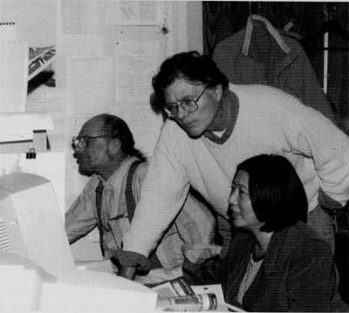
Vol. 40 / No. 1
By: Pamela Hearne Jardine
Exhibition on Pomo Indian Weavers and Basketry
This special issue of Expedition is devoted to Pomo Indian ethnohistory and basketry and accompanies the University of Pennsylvania Museum’s […]
View ArticleVol. 40 / No. 1
By: Victoria Patterson
Change and Continuity: Transformations of Pomo Life
The towns and small cities of Northern California that cluster between San Francisco and Eureka are best known today for […]
View ArticleVol. 40 / No. 1
By: Judith Berman
Building a Collection: Native Californian Basketry at the University of Pennsylvania Museum
One afternoon in April of 1905, a Pennsylvania Dutch mill owner named Henry K. Deisher stopped by the University Museum […]
View Article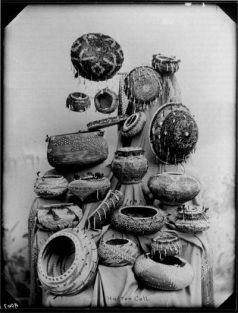
Vol. 40 / No. 1
By: Sherrie Smith-Ferri
The Development of the Commercial Market for Pomo Indian Baskets
“CANASTROMANIA” Term for “basket fever” coined by Smithsonian curator Otis Mason, from the Latin word canistra, meaning basket (1904:187) Attracted […]
View ArticleVol. 40 / No. 1
By: Sally McLendon
Pomo Basket Weavers in the University of Pennsylvania Museum Collections
The Deisher collection in the University of Pennsylvania Museum is the best-documented single collection of California Indian baskets from the […]
View Article
Vol. 40 / No. 2
By: Lee Horne
Ur and Its Treasures: The Royal Tombs
Alder Sumer lay in lower Mesopotamia, an arid land broken by belts of green along the banks of its canals […]
View Article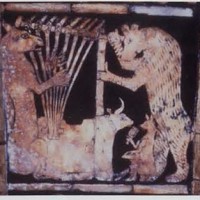
Vol. 40 / No. 2
By: Anne Draffkorn Kilmer
The Musical Instruments from Ur and Ancient Mesopotamian Music
The nearly half million cuneiform tablets excavated from ancient Near Eastern sites provide us with ample evidence for the uses […]
View ArticleVol. 40 / No. 2
By: Maude de Schauensee
The ‘Boat-Shaped’ Lyre: Restudy of a Unique Musical Instrument from Ur
Stringed instruments have probably been around since the first time someone stretched a gut, rawhide, or fiber string over a […]
View ArticleVol. 40 / No. 2
By: Edward Ochsenschlager
Life on the Edge of the Marshes
In 1968, archaeologists digging at the mound of Al-Hiba in Iraq were struck by the fact that the people living […]
View ArticleVol. 40 / No. 2
By: Steve Tinney
Texts, Tablets, and Teaching: Scribal Education in Nippur and Ur
Besides the justly famous treasures of the so-called Royal Cemetery, the site of Ur also yielded up to its excavators […]
View ArticleVol. 40 / No. 2
By: Yelena Rakic
Rescue and Restoration: A History of the Philadelphia 'Ram Caught in a Thicket'
In 1928 Sir Leonard Woolley unearthed a find that has been described by some as the most beautiful object […]
View ArticleVol. 40 / No. 2
By: Tamsen Fuller
A Makeover for the Philadelphia ‘Ram Caught in a Thicket’
PHOTO 1. The “Ram” as it was before the new work began in May 1997. As conservators and curators discovered, […]
View Article
Vol. 40 / No. 2
By: Jeremy A. Sabloff
Musings and Visions from the Director’s Desk – Summer 1998
The University of Pennsylvania Museum of Archaeology and Anthropology’s collection of materials from the excavations in the Royal Cemetery at […]
View Article
Vol. 40 / No. 2
By: Helen Schenck
Introduction – Summer 1998
Few sites possess the lure and mystique of the ancient Near Eastern mound of Ur, with its imposing ziggurat and […]
View ArticleVol. 40 / No. 3
By: Steve Ferzacca
Frederica de Laguna and Her Reunion Under Mount Saint Elias
Anthropologist Frederica de Laguna (“Freddy”) began her anthropological career almost seventy years ago (Fig. 1). In 1930 she led an […]
View Article
Vol. 40 / No. 3
By: Pia Guldager Bilde
‘Those Nemi Sculptures…’: Marbles from a Roman Sanctuary in the University of Pennsylvania Museum
Frothingham’s arrival will be fatal to us. If this American remains in Rome, he will surely get hold of it […]
View ArticleVol. 40 / No. 3
By: David R. Starbuck
New Perspectives on Shaker Life: An Archaeologist Discovers 'Hog Heaven' at Canterbury Shaker Village
I had concluded a conversation. But informal conversations could often be very revealing about the behavior that was (or was not) […]
View ArticleVol. 40 / No. 3
By: Marilyn Norcini
From the New Associate Director for Collections and Exhibitions
I would like to introduce myself to the readers of Expedition and express my vision of museum work. My career […]
View ArticleVol. 40 / No. 3
By: John L. Cotter
Jamestown: A Personal Reminiscence
In conjunction with the 97th Annual Conference of the American Anthropological Association, to be held in Philadelphia in December of […]
View Article
Vol. 40 / No. 3
By: Alex Pezzati
New Additions to the Bonfils Photographic Collection: From the Archives
The Museum Archives has recently received from Drexel University Libraries (Philadelphia) a gift of 120 Bonfils photographic prints to be […]
View Article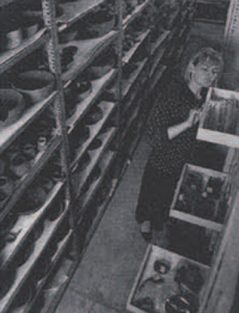
Vol. 41 / No. 1
By: Jeremy A. Sabloff
Musings and Visions from the Director’s Desk – Spring 1999
Readers will note that Expedition has a new, and we hope, inviting look, with the addition of five short departmental […]
View Article
Vol. 41 / No. 1
By: Naomi F. Miller
Date Sex in Mesopotamia!: Science and Archaeology
The Royal Cemetery at Ur, a late 3rd millennium BC site in Iraq (Mesopotamia), was excavated by Sir Leonard Woolley in […]
View Article
Vol. 41 / No. 1
By: Pam Kosty
In the Beginning…: What in the World?
At this, the centennial of the Museum’s building (see article by Douglas Haller, p. 31), we found ourselves wondering: What […]
View Article
Vol. 41 / No. 1
By: Patrick E. McGovern
Searching for the Beginnings of Winemaking: Research Notes
In September 1997, I lectured on “Ancient Wine and the Vine” cup and down the West Coast. In the heartland […]
View ArticleVol. 41 / No. 1
By: Douglas M. Haller
Architectural Archaeology: A Centennial View of the Museum Buildings
While many are familiar with the University of Pennsylvania Museum as an archaeological treasure house, few know about its role in Philadelphia culture, the […]
View ArticleVol. 41 / No. 1
By: William H. Davenport
Vengeful Spirits and Guardian Dieties: Myth and Sculpture in the Eastern Solomon Islands
Traditional sculpture in the Eastern Solomon Islands draws heavily upon mythology for its imagery. One can even say that the […]
View ArticleVol. 41 / No. 1
By: Dietrich Berges
Hidden Treasures from the Vault: Engraved Gems from the Maxwell Sommerville Collection
Jewel and precious stones are normally kept in the Museum vault or behind bullet-proof glass. It is unusual, however, for […]
View ArticleVol. 41 / No. 2
By: Lynn Grant
Conservation at Copan
One of my favorite parts of archaeological conservation is being a field conservator and working with the archaeologists on site […]
View Article
Vol. 41 / No. 2
By: Jennifer Houser Wegner
Lost and Found Fragments of Egyptian Wisdom: Lost and Found Fragments of Egyptian Wisdom
One of the oldest types of ancient Egyptian literature is that known as “instructions” or “wisdom literature”. “Instructions” appeared in […]
View Article
Vol. 41 / No. 2
By: Fredrik T. Hiebert
In Search of Anau’s Past: Research Notes
Before the Russian Revolution, a seventy-year-old American geologist named Raphael Pumpelly headed up one of the first scientific excavations ever […]
View ArticleVol. 41 / No. 2
By: Robert J. Sharer
Archaeology and History in the Royal Acropolis, Copan, Honduras
In a tropical valley on the western edge of Honduras lie the massive ruins of Copan. Here Maya farmers once […]
View ArticleVol. 41 / No. 2
By: David W. Sedat and Fernando Lopez
Tunneling into the Heart of the Copan Acropolis
Around AD 426 K’inich Yax K’uk’ Mo’ achieved preeminence at Copan and founded a dynasty. During his reign, a complex […]
View ArticleVol. 41 / No. 2
By: John F. Harris
Dynasty Founder Yax K’uk’ Mo’ According to the Inscriptions
Inscriptions carved on monuments and structures found at Copan tell of a dynasty of rulers, sixteen in number, that held […]
View ArticleVol. 41 / No. 2
By: Ellen E. Bell, Loa P. Traxler, David W. Sedat and Robert J. Sharer
Uncovering Copan’s Earliest Royal Tombs
The royal tombs found buried deep within the core of the Acropolis are a potent source of information about Early […]
View ArticleVol. 41 / No. 2
By: Stuart J. Fleming
Confounding the Conquistadors: Tumbaga’s Spurious Luster: Science & Archaeology
AD 1519, central Panama: the conquistadors were angry. They had promised the Spanish court a mass of gold in return […]
View ArticleVol. 41 / No. 2
By: Eleanor Coates
Featured Finds from Copan: A Portfolio of Photographs
Eleanor (Bunny) Coates is a graduate student in the Department of Anthropology at the University of Pennsylvania. She has worked […]
View Article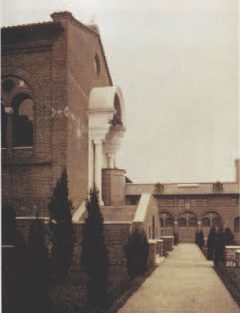
Vol. 41 / No. 2
By: Alex Pezzati and Jennifer Quick
The Flowering of the Museum Gardens: From the Archives
The University of Pennsylvania Museum sits on a plot of land that had been reserved by the City of Philadelphia […]
View ArticleVol. 41 / No. 2
By: Jeremy A. Sabloff
From the Director
The Early Copan Acropolis Program (ECAP) of the University of Pennsylvania Museum has been an extraordinarily successful research endeavor. Under […]
View Article
Vol. 41 / No. 3
By: Janet Monge and Alan Mann
A New View of a Neandertal Fossil Bone Collection: Science & Archaeology
The Neandertals are among the most enigmatic of our earlier relatives. With their large browridges, low foreheads, and projecting faces […]
View ArticleVol. 41 / No. 3
By: Donald White
Renovating the Etruscan and Roman Galleries
What with a total replacement of its fire safety and security system and the imminent addition of the new Mainwaring […]
View ArticleVol. 41 / No. 3
By: Alex Pezzati
Sitio Conte Excavations Come to Life on the Web: From the Archives
J. Alden Mason wrote this unabashed paean to the American Section’s Linton Satterthwaite when he was excavating at Sitio Conte, […]
View ArticleVol. 41 / No. 3
By: Michael C. Howard and Naffi Sanggenafa
Terfo: Survival of a Weaving Tradition in New Guinea
Traditional dress in Irian Jaya, in the Pacific archipelago nation of Indonesia, is usually associated with penis gourds, string bags, […]
View Article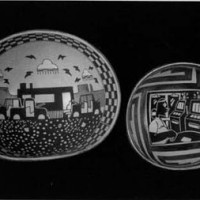
Vol. 41 / No. 3
By: Lucy Fowler Williams and Robert Preucel
The Here and Now of Pueblo Pottery: What in the World
How are contemporary Pueblo people interpreting their rich cultural heritage and how is this affecting their traditional arts? These, and related […]
View Article
Vol. 41 / No. 3
By: Richard Veit
Mastodons, Mound Builders, and Montroville Wilson Dickeson–Pioneering American Archaeologist
The history of archaeology is populated by a varied cast of scholars. showmen, adventurers. and charlatans. This article examines the […]
View ArticleVol. 41 / No. 3
By: Dan Penny
Pollen Grains in Sands of Time
Over the past 30 years or so, a genteel battle has raged over the prehistory of northeast Thailand. Despite a […]
View ArticleVol. 41 / No. 3
By: Fredrik T. Hiebert
On the Track of the Ancient Silk Road
Driving westward from Tashkent (the modern capital of the Republic of Uzbekistan) to the ancient city of Samarkand, way station […]
View ArticleVol. 41 / No. 3
By: Helen Schenck
ODUNDE: An African American Festival on South Street, Philadelphia
Thomas B. Morton has been attending and photographing ODUNDE since 1976. An exhibition of 30 of his black and white […]
View Article
Vol. 41 / No. 3
By: Josef Wegner
Excavating the Residence of an Ancient Egyptian Mayor: Research Notes
For 1000 miles, from the Mediterranean Sea south into Nubia, the Nile Valley is dense with the great buildings of […]
View Article
Vol. 42 / No. 1
By: Dwaune Latimer
Currently on Loan: What in the World
Two masterpieces from the University of Pennsylvania Museum’s African collection are currently on loan to The Metropolitan Museum of Art […]
View Article
Vol. 42 / No. 1
By: Peggy Reeves Sanday
Representations of the Land: Anthropology and Aboriginals: Research Notes
In 1947 my father, Frank Reeves, discovered Wolfe Creek Crater, one of the most acclaimed geological features in Australia. Located […]
View Article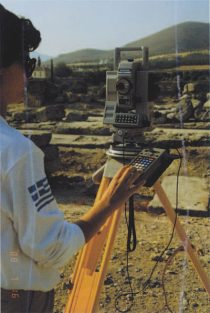
Vol. 42 / No. 1
By: David Gilman Romano
Roman Surveyors in Corinth, Greece: Science & Archaeology
When the Roman army defeated the allied forces of the Greeks near Corinth in 146 BC, this marked the end […]
View Article
Vol. 42 / No. 1
By: Patrick E. McGovern
The Funerary Banquet of ‘King Midas’
Fifty years ago, the University of Pennsylvania Museum of Archaeology and Anthropology began excavations at the ancient Phrygian capital of […]
View ArticleVol. 42 / No. 1
By: Naomi F. Miller
Plants in the Service of Archaeological Preservation
Several years ago Dr. Ilhan Temizsoy, director of the Museum of Anatolian Civilizations, expressed concern about erosion on the Midas […]
View ArticleVol. 42 / No. 1
By: Robert W. Preucel
Living on the Mesa: Hanat Kotyiti, A Post-Revolt Cochiti Community in Northern New Mexico
On August 10, 1680, the Pueblo Indians of the Spanish province of New Mexico, along with their Navajo and Apache allies, […]
View ArticleVol. 42 / No. 1
By: Michael W. Meister, Abdur Rehman and Farid Khan
Discovery of a New Temple on the Indus
Along the Indus River and on the plateau and escarpments of the Salt Range in upper Pakistan, a sequence of […]
View Article
Vol. 42 / No. 1
By: Keith DeVries
Gordion
The year 2000 marks both a month and a 50th anniversary for Gordion. In 1900 the German Koerte brothers conducted […]
View ArticleVol. 42 / No. 1
By: Jeremy A. Sabloff
From the Director
The University of Pennsylvania Museum’s archaeological research at the site of Gordion in central Turkey was launched fifty years ago […]
View Article
Vol. 42 / No. 1
By: Alex Pezzati
Thomas C. Donaldson and the 1890 U.S. Census: From the Archives
The University of Pennsylvania Museum Archives houses thousands of 19th centry photographs documenting people and places all over the world. […]
View Article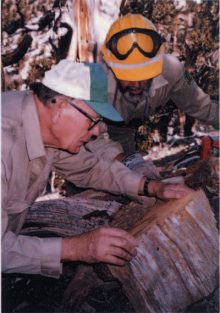
Vol. 42 / No. 2
By: Henry N. Michael
Tree Rings and Radiocarbon Dates: Science & Archaeology
The advent of radiocarbon dating enabled scientists to put ancient organic remains into a far more reliable chronological framework than […]
View Article
Vol. 42 / No. 2
By: Alex Pezzati
A Crowning Achievement: Zelia Nuttall in Czarist Russia: From the Archives
Why was Zelia Nuttall, a well-known Aztec scholar, engaged to travel to Russia as a representative of the University of […]
View ArticleVol. 42 / No. 2
By: Josef Wegner
A Hundred Years at South Abydos: Reconstructing the Temple of Pharaoh Senwosret III
Discovery and Rediscovery of a Royal Mortuary Temple Late in 1899 a young British archaeologist, David Randall-Maclver, was exploring the […]
View Article
Vol. 42 / No. 2
By: Jennifer L. White
A Masterpiece in Clay: A Han House Model Reflects Traditional Chinese Life
For over twenty years a clay model of a three-story structure has stood with little notice among green-glazed ceramic tombwares […]
View ArticleVol. 42 / No. 2
By: Leigh-Ann Bedal
Paradise Found: Petra's Urban Oasis
The ruins of the ancient city of Petra Crock” in Greek) lie in the mountains that form the eastern border […]
View ArticleVol. 42 / No. 2
By: Paul Zimmerman
The City of Petra
Petra, one of the great cities of antiquity, Is nestled in the rugged Shan’ mountains of southern Jordan, halfway between the […]
View ArticleVol. 42 / No. 2
By: Paul Zimmerman
Mapping Petra
In 1993 Martha Joukowsky opened a new excavation at the ancient Nabatean city of Petra in southwest Jordan (see box […]
View Article
Vol. 42 / No. 2
By: Jing Sun
Opening Windows on the Outside World: My Experiences as an International Classroom Speaker
I came to the United States in February 1998 as a visiting scholar to do research on teaching English to minority […]
View Article
Vol. 42 / No. 2
By: Jeremy A. Sabloff
From the Director
This issue of Expedition highlights one of the most renowned strengths of the University of Pennsylvania Museum: our archaeological and […]
View Article
Vol. 42 / No. 2
By: Irene Bald Romano
What Is This Statue Doing Up In the Air?: What in the World
The marble statue of a seated Dionysos with a Lion (MS 5483) has been a familiar landmark in the center […]
View Article
Vol. 42 / No. 2
By: James R. Mathieu
A Tree Falls in Philadelphia: Research Notes
The plunging of a silver shovel into the dirt on April 14, 2000, marked the official groundbreaking for the construction […]
View ArticleVol. 42 / No. 3
By: Pika Ghosh
Kalighat Paintings from Nineteenth Century Calcutta in Maxwell Sommerville’s ‘Ethnological East Indian Collection’
Kalighat paintings, as the name suggests, were created in the Kali Temple area on the ghat (bank) of the Burin […]
View ArticleVol. 42 / No. 3
By: Ellen E. Bell, Robert J. Sharer, David W. Sedat, Marcello A. Canuto and Lynn Grant
The Margarita Tomb at Copan, Honduras: A Research Update
In an earlier issue of Expedition (41[2]), we reported on the first five years of work in an Early Classic […]
View ArticleVol. 42 / No. 3
By: Rebecca Huss-Ashmore
‘The Real Me’: Therapeutic Narrative in Cosmetic Surgery
At 10:25, Kim gets out of her chair and paces across the examining room for at least the tenth time. […]
View ArticleVol. 42 / No. 3
By: William Davenport
A Melanesian Wedding: Santa Cruz Island
Marriage is a social institution that appears to be universal to all human societies, but only some societies mark the […]
View Article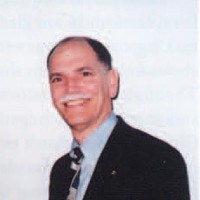
Vol. 42 / No. 3
By: Jeremy A. Sabloff
From the Director
As I write this column, work on our new collections storage and research addition, the Mainwaring Wing, is moving along […]
View Article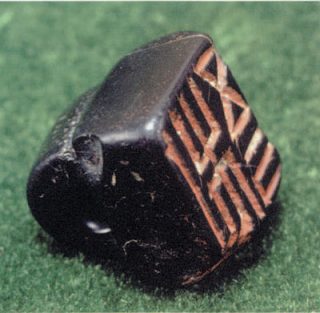
Vol. 42 / No. 3
By: Fredrik T. Hiebert
Unique Bronze Age Stamp Seal Found in Central Asia: What in the World
The University of Pennsylvania Museum Central Asia archaeology project has recently completed its third season of investigation at Anau depe […]
View Article
Vol. 42 / No. 3
By: Alex Pezzati
Painted Walls, Painted Faces: From the Archives
The University of Pennsylvania Museum is not known for its collections of oil paintings, but the Archives displays a few […]
View Article
Vol. 42 / No. 3
By: Julia Lawson
Unraveling Threads: Conservation of the Weaving Lady: Research Notes
In the early 1960s the University of Pennsylvania Museum acquired an unusually precolumbian figural object. It consists of a doll-like […]
View Article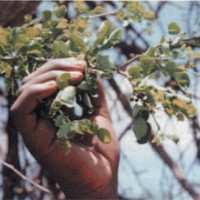
Vol. 42 / No. 3
By: Kathleen Ryan
Edible Wild Plants as Digestive Aids: Ethnoarchaeology in Maasailand: Science & Archaeology
Indigenous cultures around the world retain knowledge of a diversity of plants in their environments, including plants used for medicinal […]
View ArticleVol. 42 / No. 3
By: Lucy Fowler Williams and Melissa Wagner
American Collections Inspire Native Artists and Indian Communities
The American Section of University of Pennsylvania Museum has developed a rewarding relationship with the National Museum of the American […]
View ArticleVol. 43 / No. 1
By: Alex de Voogt
Mancala: Games That Count
Passengers waiting patiently for their luggage in the Toronto airport frowned perplexedly at my dealings with a man from Uganda. […]
View Article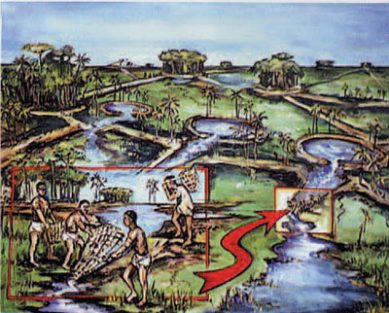
Vol. 43 / No. 1
By: Clark L. Erickson
Precolumbian Fish Farming in the Amazon: Research Notes
Popular images associated with the Amazon today include the towering continuous green forest canopy, Day-Glo poison dart frogs, and native […]
View Article
Vol. 43 / No. 1
By: Fredrik T. Hiebert
Eurasian Archaeology
This issue of Expedition highlights recent research in three distinctly different environments of Eurasia: the Black Sea coastal region, the […]
View Article
Vol. 43 / No. 1
By: Fredrik T. Hiebert
Black Sea Coastal Cultures: Trade and Interaction
Trade and Maritime Space The study of ancient trade has greatly enhanced our understanding of the development of civilizations. In […]
View Article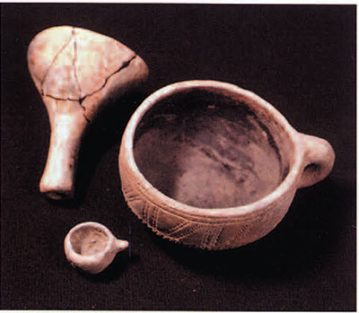
Vol. 43 / No. 1
By: Natalia Shishlina
Early Herders of the Eurasian Steppe
In the broad treeless steppe of Kalmykia, situated almost directly between the Black and Caspian seas, stands a huge burial mound […]
View ArticleVol. 43 / No. 1
By: Alexander Emel'yanov
Forest Hunters of Eurasia
The forest zone of central Eurasia is a territory of continental climates (cold winters and warm summers), with dense temperate […]
View Article
Vol. 43 / No. 1
By: Jeremy A. Sabloff
From the Director
In February 15, 2001, the Museum publicity launched its $55 million The 21st Century Campaign: Preserving the Past, Endowing the […]
View ArticleVol. 43 / No. 1
By: Alex Pezzati
World Photography on the Worldwide Web: From the Archives
The photographic collections of the University of Pennsylvania Museum Archives consist of approximately 300,00o items: glass and film negatives, paper-based […]
View Article
Vol. 43 / No. 1
By: Janet Monge
Researching the Origins of Swahili Coast Inhabitants
The end of the 10th century marked many changes in the way archaeological and physical anthropological research is conducted. Most […]
View Article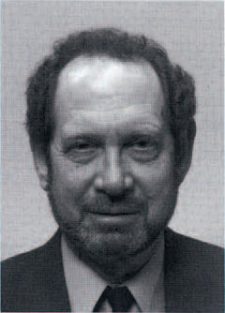
Vol. 43 / No. 2
By: Gerald Margolis
From the Deputy Director for Operations
My introduction to the University of Pennsylvania Museum of Archaeology and Anthropology coincided with my first trip to Philadelphia twenty […]
View Article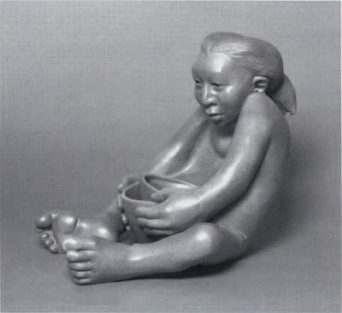
Vol. 43 / No. 2
By: Lucy Fowler Williams
Seeing Through the Eyes of an Artist: What in the World
Roxanne Wentzell, from Santa Clara Pueblo in northern New Mexico, is a highly accomplished artist who specializes in sculpting human […]
View Article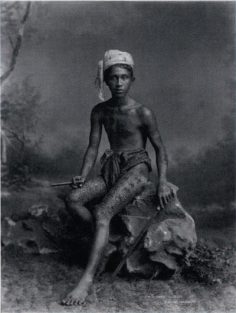
Vol. 43 / No. 2
By: Alex Pezzati
Borneo and Beyond: The Adventures of Furness, Harrison, and Hiller: From the Archives
Between 1895 and 1903, three young men affiliated with the University of Pennsylvania undertook several expeditions to the mysterious world […]
View Article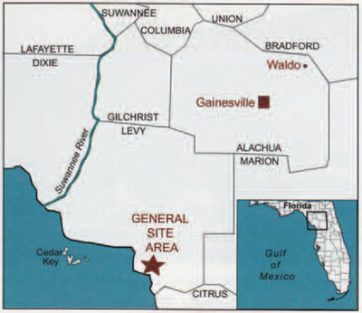
Vol. 43 / No. 2
By: Jeffrey M. Mitchem
The Willcox Copper Plate from Florida: Research Notes
My heart raced when I first saw it. I was in the Museum’s collections area with American Section Assistant Keeper […]
View Article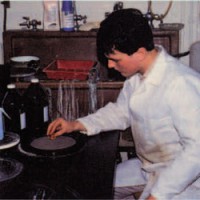
Vol. 43 / No. 2
By: Elizabeth Hamilton
Bronze from Ban Chiang, Thailand: A View from the Laboratory: Science & Archaeology
An American college student’s famous stumble over a tree root that led to the discovery of the Bronze Age culture […]
View ArticleVol. 43 / No. 2
By: Andrew L. Goldman
A Roman Town Cemetery at Gordion, Turkey
King Midas. The Phrygians. Alexander cutting the Gordian Knot. These are among the many subjects ordinarily associated with the site […]
View ArticleVol. 43 / No. 2
By: Adria H. Katz
Decorated Canoe Prow-boards from the Trobriand Islands
The University Museum recently came into possession of three canoe prow-boards (Fig. I) collected in the Trobriand Islands in 1983 […]
View ArticleVol. 43 / No. 2
By: Deborah I. Olszewski, Shannon P. McPherron, Harold L. Dibble and Marie Soressi
Middle Egypt in Prehistory: A Search for the Origins of Modern Human Behavior and Human Dispersal
The word Egypt for many people evokes images of one of the great civilizations of the ancient world and represents […]
View Article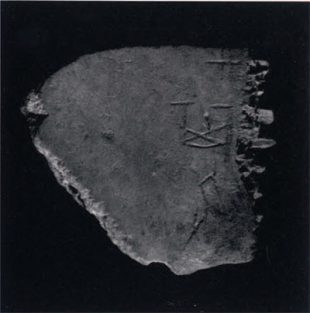
Vol. 43 / No. 2
By: Victor H. Mair
The Case of the Wayward Oracle Bone
Late last summer (2000), when I returned to my office from a research trip to China, a message was waiting for me […]
View ArticleVol. 43 / No. 2
By: Clark L. Erickson
Pre-Columbian Roads of the Amazon
Traditionally, archaeologists have studied “sites.” Sites include monuments, settlements, cities, cemeteries, mounds, and other important places of the past. The […]
View Article
Vol. 43 / No. 3
By: Harold L. Dibble
From the Deputy Director for Curatorial Affairs
In the last issue, Dr. Gerald Margolis introduced himself as the Museum’s new Deputy Director of Operations. I too have […]
View Article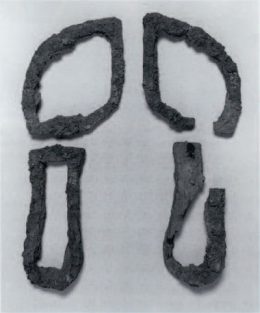
Vol. 43 / No. 3
By: Ann Blair Brownlee and Jean MacIntosh Turfa
Etruscan Sandals: Fancy Footwear from the Sixth Century BC: What in the World
In October of 2002, three new galleries will join “The Ancient Greek World” to form a suite devoted to the […]
View Article
Vol. 43 / No. 3
By: Alex Pezzati
The Hand of Fate in Tatiana Proskouriakoff’s Career: From the Archives
Of all the brilliant minds that have lit up the firmament of ancient Maya studies, there is none that arouses […]
View Article
Vol. 43 / No. 3
By: Mac Marston
The Grass is Always Greener in the Boma: Science & Archaeology
The two main components of archaeological fieldwork are locating sites and then excavating them. Site survey is necessary to locate […]
View Article
Vol. 43 / No. 3
By: Benjamin Pykles
Historic Glass from Block 49, a Mormon Site in the Salt Lake Valley: Research Notes
A hallmark of the Church of Jesus Christ of Latter-day Saints is the strictly observed health code known as the […]
View ArticleVol. 43 / No. 3
By: John H. Walker
Work Parties and Raised Field Groups in the Bolivian Amazon
The Amazon River moves more water and sediment than any other river in the world, and at the mouth of […]
View ArticleVol. 43 / No. 3
By: Ayşe Gursan-Salzmann
The Women of Yassihöyük, Turkey: Changing Roles in a New Economy
It is widely acknowledged that women are the mainstay of household operations. especially in rural agricultural communities, and their contributions […]
View ArticleVol. 43 / No. 3
By: Leslie Guy
Moving the Museum’s Ethnographic Collections: A Conservation Approach
Beginning in January 2002 the Museum will be relocating almost 100,000 ethnographic artifacts from Africa, Asia, the Americas, and Oceania […]
View Article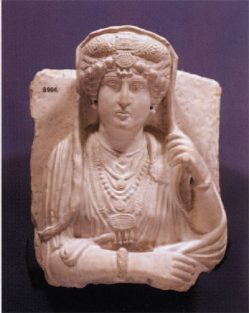
Vol. 43 / No. 3
By: Michael Danti
Palmyrene Funerary Sculptures at Penn
Today, the ancient city of Palmyra, the caravan center and oasis of the Syrian Desert (Fig. I), evokes romantic images […]
View Article
Vol. 43 / No. 3
By: Elin C. Danien
Chicken Soup and Canvas Bags: Advice for the Field
Today when the Internet is almost ubiquitous and air travel is as common as a walk down the lane, it’s […]
View ArticleVol. 44 / No. 1
By: Suzanne Sheehan Becker
From the Director for Development
Every day at the University of Pennsylvania Museum you learn some thing new, something that expands your awareness and challenges your […]
View Article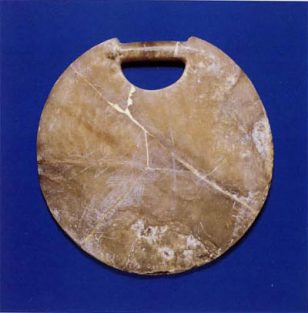
Vol. 44 / No. 1
By: Shannon C. White
An Alabaster Mystery: What in the World?
Did it once hold cosmetics for a Parthian beauty? Or perhaps weight her loom? Or maybe it was a sacred […]
View Article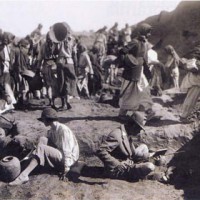
Vol. 44 / No. 1
By: Alex Pezzati
Murder in Mesopotamia: From the Archives
The Setting is an Archaeological expedition to Ur, in Iraq, during the 1930s. The beautiful, intriguing, and temperamental wife of […]
View Article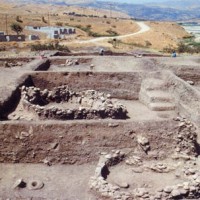
Vol. 44 / No. 1
By: Brian L. Peasnall
Intricacies of Hallan Çemi: Research Notes
Until recently, Southeastern Anatolia (Turkish Asia Minor) was largely written off as a cultural backwater during the Neolithic period, the […]
View ArticleVol. 44 / No. 1
By: Melvyn Hammarberg
The World of the Latter-day Saints–A Life Plan Model
The 2002 Winter Olympics brought worldwide attention to Salt Lake City, headquarters of the Church of Jesus Christ of Latter-day […]
View ArticleVol. 44 / No. 1
By: Deborah I. Olszewski and Nancy R. Coinman
An Ice Age Oasis in Jordan: Pleistocene Hunter-gatherers in the Wadi al-Hasa Region
If you visited the Wadi al-Hasa region of west central Jordan today, you would probably find it hard to picture […]
View ArticleVol. 44 / No. 1
By: Valentina Livi
A Story Told in Pieces: Architectural Terracottas from Minturnae
At the dawn of the third century B.C., Rome was on the move. The upstart city on the Tiber was […]
View ArticleVol. 44 / No. 1
By: Michael D. Danti and Richard L. Zettler
Excavating an Enigma: The Latest Discoveries from Tell es-Sweyhat
An excavation is all the more intriguing when it unveils something totally unexpected. Tell es-Sweyhat in northern Syria has much […]
View Article
Vol. 44 / No. 2
By: Jeremy A. Sabloff
From the Director – Summer 2000
I am delighted to announce that Dr. Beebe Bahrami is the new editor of Expedition. She is the latest in a distinguished […]
View ArticleVol. 44 / No. 2
By: Sharon Aponte Misdea
Museum Mosaic – Summer 2002: : People, Places, Projects
Worlds Intertwined: The Etruscans, Greeks, and Romans will open to the public in Spring 2003. The $3 million project completes the reinstallation of […]
View Article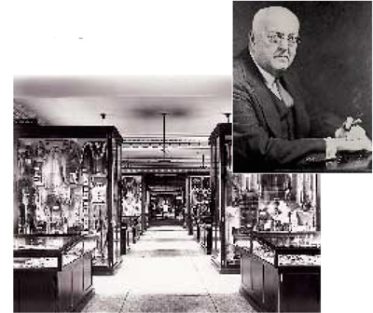
Vol. 44 / No. 2
By: Alex Pezzati
From the Archives: The Big One That Got Away: Heye-day Ends With Loss of Prized American Indian Collection
In the early 20th century, the University of Pennsylvania Museum competed with other museums in the United States and Europe for collections of primitive and ancient […]
View ArticleVol. 44 / No. 2
By: Sharon Nagy and Nabil Abu-Dayyeh
Village Air for Urban Elites: Heritage Cafe Complexes in Jordan
Memorializing everyday life is a common practice that spans cultures and countries. We easily recognize this in theme parks, living-history museums, […]
View ArticleVol. 44 / No. 2
By: Theodore G. Schurr
Book News & Reviews: 500,000 Years in Siberia: Digs Link a Long History of Migrations to Cultural Diversity: The Paleolithic of Siberia: New Discoveries and Interpretations
New archaeological evidence concerning how people lived in Siberia during the Paleolithic period is the subject of this ambitious book. Along with patterns of […]
View Article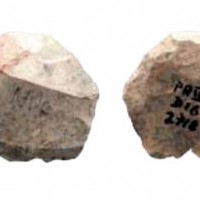
Vol. 44 / No. 2
By: Harold Dibble
Learning More About Neandertals: A Newly Discovered Tool Piques Curiosity: What in the World
From about 250,000 to 35,000 years ago, during the Middle Paleolithic, or Mousterian, period, Neandertals lived in Western Europe. Although we occasionally find bits […]
View Article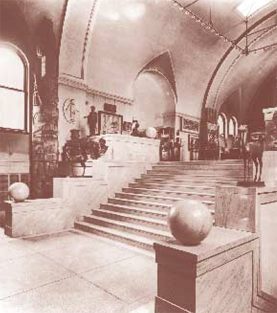
Vol. 44 / No. 2
By: Charles A. Evers and Ann Blair Brownlee
Restoration & Renewal: Museum Readies Mediterranean Section Galleries for the 21st Century
There is a new sense of excitement in the Museum’s Mediterranean Galleries, which are devoted to the cultures of ancient Greece […]
View Article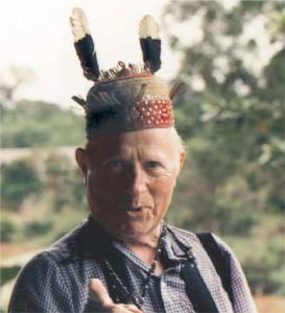
Vol. 44 / No. 2
By: Beebe Bahrami
An Enduring Legacy: Robert L. Trescher Crafted the Modern Museum: Portrait
Robert L. Trescher, Esq., opened many doors for individuals and institutions through-out his life. So it is entirely appropriate that his name is honored at […]
View ArticleVol. 44 / No. 2
By: Melvyn Hammarberg
Research Notes: The Olympic Face of the LDS Church: A Warm Welcome Belies the Low Profile of the 'LDS Olympics'
As part of my research on the Church of Jesus Christ of Latter-day Saints, my wife and I flew to Salt Lake City the day […]
View ArticleVol. 44 / No. 2
By: Matt Glendinning
Recovering the Lost Art of Phrygian Roof Tiling: Practical and Aesthetic Elements Converge in Clay, Reflecting Greek Artistic Temperament
An impressive sight must have greeted a visitor entering the fortified citadel of Gordion in the early sixth century B. C. After suffering devastating destruction by […]
View Article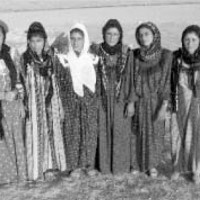
Vol. 44 / No. 2
By: Michael D. Danti
The View from the Tell: Nafila Villagers Make Room for an Expedition: Field Experience
Try as we might to avoid the romantic image of archaeologists roughing it in the field, that ’s precisely what we do each dig […]
View ArticleVol. 44 / No. 2
By: Sharon Aponte Misdea
A Visual History of Archaeology at Tikal
Since its introduction in the mid-19th century, photography has played a prominent role in documenting archaeological sites. Photographs record excavations and artifacts, […]
View ArticleVol. 44 / No. 3
By: Janet Richards
Time and Memory in Ancient Egyptian Cemeteries: The Dynamic History of Ancient Sites
When travelers visit ancient sites in modern Egypt, they experience a static and soften recreated snapshot of a moment time […]
View ArticleVol. 44 / No. 3
By: David R. Starbuck
By Yon Bonnie Banks: An Archaeological Search for Clan MacFarlane
Scotland has traditionally evoked images of plaids, bagpipes, haggis, thrift, hospitality, and sheep as far as the eye can see. […]
View Article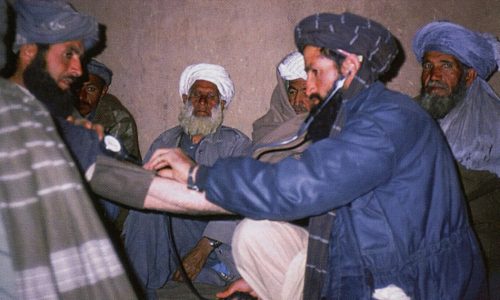
Vol. 44 / No. 3
By: Benedicte Grima
Women, Culture, and Health in Rural Afghanistan
For years women in tribal and rural Afghanistan have received minimal medical attention. The reasons extend far beyond the war […]
View ArticleVol. 44 / No. 3
By: Beebe Bahrami
From the Editor – Winter 2002
I am deeply honored and delighted to be Expedition’s new editor and to help fulfill Expedition’s mission of advancing our […]
View Article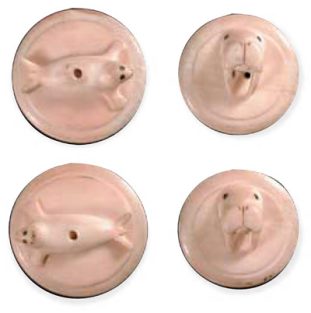
Vol. 44 / No. 3
By: William Wierzbowski
Walrus Ivory Pieces: Eskimo Artistry Unbuttoned: What in the World
Hunting or fishing gear? Amulets or charms? Gaming pieces? These walrus ivory objects, delicately carved bas-reliefs with images of either a seal […]
View ArticleVol. 44 / No. 3
By: Theodore G. Schurr
Exploring Kamchatka’s Indigenous Past: Molecular Anthropology is Sent to Siberia
For much of its history, the Kamchatka Peninsula in remote northeastern Russia has remained largely unknown to the outside world. […]
View Article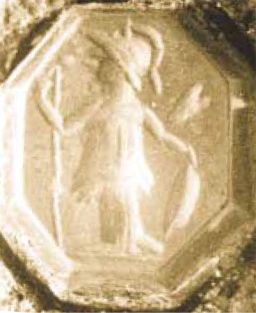
Vol. 44 / No. 3
By: Andrew L. Goldman
A Rare Roman Trio: Octagonal Gemstones Excavated at Gordion: Research Notes
Fascination with collecting Roman gemstones is nothing new. In Roman times, Pompey the Great was an avid collector, as was […]
View ArticleVol. 44 / No. 3
By: Charles Golden and Deward E. Walker, Jr.
Book News & Reviews
Review by Charles Golden It is impossible for anyone — whether an archaeologist or a casual tourist — to explore […]
View Article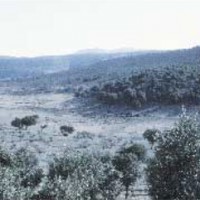
Vol. 44 / No. 3
By: Naomi F. Miller
Food, Fodder, or Fuel?: Harvesting the Secrets of Ancient Seeds: Science & Archaeology
When I was in Southern Iran in the 1970s, I collected charred woods and seed plant remains from the ancient city of Anshan, […]
View Article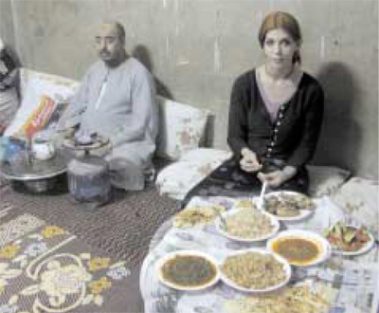
Vol. 44 / No. 3
By: William Hafford
The Taste of a Dig: Cooking up Successful Fieldwork: Field Experience
Many things are necessary for an archaeological project to succeed, but a cook is particularly critical. If you combine hard […]
View ArticleVol. 44 / No. 3
By: Tammi J. Schneider
Through Assyria’s Eyes: Israel's Relationship with Judah
The Hebrew Bible records the history of ancient Israel and Judah, relating that the two kingdoms were united under Saul (ca. 1000 […]
View ArticleVol. 45 / No. 2
By: Gillian Wakely
Serene Spaces: A Letter from the Associate Director for Programs
A Letter from the Associate Director for Programs first arrived in the University of Pennsylvania Museum over 30 years ago. […]
View ArticleVol. 45 / No. 1
By: Elizabeth Hamilton
The Celts and Urbanization: The Enduring Puzzle of the Oppida
Archaeologists have speculated for decades about the role of Celtic settlements called oppida, because they fit only loosely into the […]
View Article
Vol. 45 / No. 1
By: Jeremy A. Sabloff
From the Director – Spring 2003
The readership of Expedition is quite varied, comprising residents of all parts of the United States and the world. While […]
View Article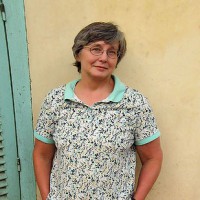
Vol. 45 / No. 1
By: Elizabeth Hamilton
From the Issue Editor
The first written mention of the Celts comes from Herodotus, who in the fifth century B.C. wrote that the Danube […]
View ArticleVol. 45 / No. 1
By: Bernard Wailes
Defining (Kel’tik): The Case of the Insular Celts
In decades past, archaeologists in search of clues to the ori¬gin of ethnic groups like the Celts tended to equate […]
View Article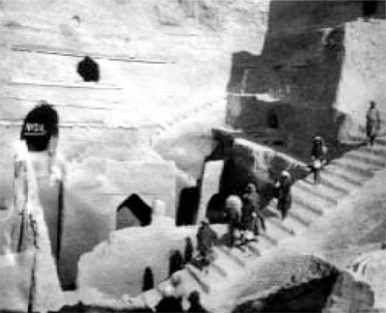
Vol. 45 / No. 1
By: Alex Pezzati
The Inventor and the Sultan: Bright Idea Opens the Way for Excavations in Ancient Nippur: From the Archives
The Museum was in its infancy in 1888 when Rev. Dr. John Punnett Peters was in Constantinople (now Istanbul), then […]
View Article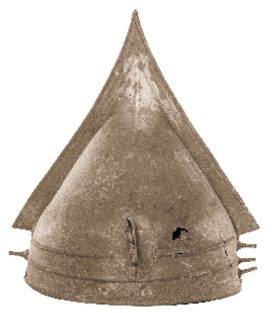
Vol. 45 / No. 1
By: Elizabeth Hamilton
A Celtic Helmet?: Headgear from a Bronze Age Hoard: What in the World?
This sheet bronze helmet, which dates to around 1000 B . C ., was one of a hoard of nine similar helmets found in 1832 in Bernières d’Ailly, Normandy, […]
View ArticleVol. 45 / No. 1
By: Melissa Murphy
From Bare Bones to Mummified: Insights from an Inca Cemetery: Research Notes
Archaeologists moved quickly with the astonishing discovery of an Inca cemetery underneath the village of Tupac Amaru, located six miles outside of Lima, […]
View Article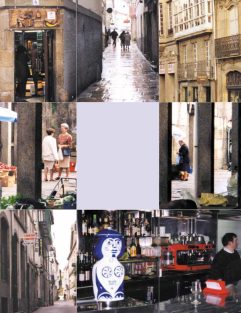
Vol. 45 / No. 1
By: Beebe Bahrami
The Modern Celts of Northern Spain
When I Boarded the bus in Ferrol, Galicia, I asked the driver in Spanish, “Is this the bus to Cedeira?” […]
View ArticleVol. 45 / No. 1
By: Bettina Arnold
Landscapes of Ancestors: Early Iron Age Hillforts and Their Mound Cemeteries
The Celtic-Speaking early Iron Age peoples who lived in Southwest Germany, eastern France, and Switzerland north of the Alps did […]
View ArticleVol. 45 / No. 1
By: Mary M. Voigt
Celts at Gordion: The Late Hellenistic Settlement
In 278 B.C., a group of Celtic immigrants crossed from the Balkans into Anatolia, or present-day Turkey. The long journey […]
View ArticleVol. 45 / No. 1
By: Whitney Azoy
Masood’s Parade: Iconography, Revitilization, and Ethnicity in Afghanistan
What happens when, after two dozen years of chaos, a society begins to get its political act together? What values […]
View Article
Vol. 45 / No. 2
By: Pamela L. Geller
Read My Lips…Ears, Nose, Head, and Teeth: Interpreting Permanent Bodily Ornaments: Research Notes
Tattooing and body piercing are nothing new. The puncturing and painting of skin have long been expressive forms of social communication […]
View ArticleVol. 45 / No. 2
By: Lynn Grant
The Pharaohs Invade Venice: From Museum Galleries to the Palazzo Grassi–Via the Grand Canal: Conservation Notes
Early in 2002, the Palazzo Grassi, an exhibit venue in Venice, Italy, began arranging a major exhibit of Egyptian artifacts […]
View Article
Vol. 45 / No. 2
By: Amy B. Trubek
From the Issue Editor
I remember studying for my first-year comprehensive exams in Penn’s doctoral anthropology program during a typically hot, muggy Philadelphia summer. […]
View Article
Vol. 45 / No. 2
By: Marshall Leroy Smith
Food Notes: Holy Mole: Mexico's Magical Marriage of Chocolate and Chilies
In Mérida, Mexico, the summers are grueling. Even the iguanas — the Yucatan’s version of pigeons — scramble to get […]
View Article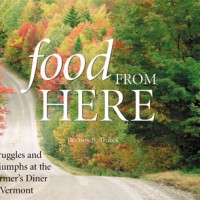
Vol. 45 / No. 2
By: Amy B. Trubek
Food from Here: Struggles and Triumphs at the Farmer's Diner in Vermont
Eating is an agricultural act,” says essayist, novelist, and farmer Wendell Berry. What does this mean? Berry is renowned for […]
View Article
Vol. 45 / No. 2
By: Beebe Bahrami and Naomi F. Miller
Of Wives and Men: Two Debuts from the 12th Philadelphia International Film Festival: Film & Culture
MONDAYS IN THE SUN/ LOS LUNES EN EL SOL SPAIN, 2003, 113 MINUTES DIRECTED BY FERNANDO LEON DE ARANOA. WRITTEN BY […]
View Article
Vol. 45 / No. 2
By: Donald White
Setting the Record Straight: The Contorted History of the Museum's Theseus Mosaic
The Cretans … say that the Labyrinth was only an ordinary prison, having no other bad quality but that it […]
View Article
Vol. 45 / No. 2
By: Christopher Jones
Rafael Morales Fernandez, 1919-2003: Portrait
We of the University of Pennsylvania Museum’s Tikal Project are saddened to hear of the passing of an old friend […]
View Article
Vol. 45 / No. 2
By: Naomi F. Miller
End Notes: Spice and Rice: Dig In—Savor the Flavors of Persia
In June 2002, the Ministry of Culture and Islamic Guidance invited me to Iran as a member of the organizing […]
View Article
Vol. 45 / No. 2
By: Jill Leslie McKeever Furst
Food for the Gods: Or, You Are Who You Eat in Ancient Mexico
Forget grubs, sheep’s eyes, and moss; the ultimate in exotic culinary experience must surely be the eating of human flesh. […]
View Article
Vol. 45 / No. 2
By: Elin C. Danien
Food Notes: Yom Yom Cacao!: A Favorite Maya Drink Lives On
One of the most important chocoholics who ever lived was, arguably, Carl von Linné, the 18th-century Swedish scientist who created the […]
View ArticleVol. 45 / No. 2
By: Michael Hernandez and David Sutton
Hands that Remember: An Ethnographic Approach to Everyday Cooking
“With her sight now gone completely, Yiayia mourns the days when the kitchen was hers. She cries as she recounts […]
View ArticleVol. 45 / No. 2
By: Melford F. Smith
Afield in Abydos: Paleolithic Fieldwork Takes Shape: Field Experience
In the winter of 2002, I had the opportunity to journey with Dr. Harold Dibble, Dr. Deborah Olszewski, and Dr. […]
View Article
Vol. 45 / No. 2
By: Payson Sheets
Uncommonly Good Food Among Commoners: Growing and Consuming Food in Ancient Ceren
Much of northern Central America was devastated by a cataclysmic volcanic eruption, probably during the fourth century A.D. What had […]
View Article
Vol. 45 / No. 2
By: Jennifer Shadel Smith
By Land and by Sea: A Project Awash in Media Attention: A Project Awash in Media Attention
During the summer of 2000, in Sinop, Turkey, a hot noontime sun beat down on a small field crew consisting […]
View Article
Vol. 45 / No. 2
By: Beth D'Addono, Irene Good and Walda Metcalf
Feast for the Eyes: Ancient Music, Women Warriors, and Evolutionary Recipes: Book News & Reviews
Here is a question: If you were going to organize a three-hour dinner party according to the tempo of human […]
View ArticleVol. 45 / No. 3
By: Brian Peasnall and Mitchell S. Rothman
One of Iraq’s Earliest Towns: Excavating Tepe Gawra in the Archives of the University of Pennsylvania Museum
When does excavation not require the diggers to get dirty? Such a riddle may belie most people’s image of archaeology.In […]
View ArticleVol. 45 / No. 3
By: Christine Ward
The Bluff Great House: On the Periphery of the Chaco World
Towering red sandstone cliffs provide a dramatic backdrop to archaeological research at the Bluff Great House in southeastern Utah. The […]
View ArticleVol. 45 / No. 3
By: Karim M. Tiro
Film & Culture: Northern Exposure: The Fast Runner Offers a Native Perspective
In 1922, director Robert Flaherty produced the first documentary film, a movie called Nanook of the North. It was so […]
View ArticleVol. 45 / No. 3
By: Judy C. Voelker, Dana Walrath and Birch Miles
Asian Culinary Magic, Visual Journeys, and Afghan Buzkashi: From Bangkok to Buzkashi: Book News & Reviews
For those who enjoy the delicate combinations of herbs and spices that are hallmarks of Asian cuisine or for those […]
View Article
Vol. 45 / No. 3
By: William Wierzbowski
Matches’s Sketchbook: Native American P.O.W. Art from Fort Marion
In 1891, a small sketchbook with thirty-one drawings entered the collection of the University of Pennsylvania Museum of Archaeology and […]
View ArticleVol. 45 / No. 3
By: Robert W. Preucel, Lucy Fowler Williams, Stacey O. Espenlaub and Janet Monge
Out of Heaviness, Enlightenment: NAGPRA and the University of Pennsylvania Museum of Archaeology and Anthropology
On September 29,2000, John Johnson of the Chugach Alaska Corporation arrived in Philadelphia to take formal possession of ancestral Eskimo […]
View ArticleVol. 45 / No. 3
By: Jeremy A. Sabloff
From the Director
As I write this column, I can look out my office window and admire the beautiful Stoner Courtyard, now in […]
View ArticleVol. 45 / No. 3
By: Beebe Bahrami
From the Editor
In this issue, we explore the Americas with features that reflect the changes in archaeology and anthropology from the nineteenth […]
View ArticleVol. 45 / No. 3
By: Deborah I. Olszewski
Donald White: Meet the Curators
Some of you know a thing or two about our featured museum curator, Donald White, because of his role in […]
View Article
Vol. 45 / No. 3
By: Programs Department
Yarn Paintings of a Huichol Shaman: Exhibit Notes
A new exhibit at the Museum can come about in one of many ways. In the case of our new […]
View ArticleVol. 45 / No. 3
By: Jack Murray
Gone Fishing: James Albert Marion, 1942-2003: Portrait
Getting to know Jim Marion was as easy as falling off your new two-wheeled bike for the first time, without […]
View Article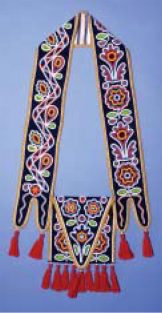
Vol. 45 / No. 3
By: William Wierzbowski
Beaded Bags: The Persisting Power of Beadwork Traditions: What in the World
Since 1998, the American Section of the University of Pennsylvania Museum has been involved with the National Museum of the […]
View ArticleVol. 45 / No. 3
By: Julia A. Hendon
In the House: Maya Nobility and Their Figurine-Whistles
Unspeakable dignity isolates the diminutive nobleman. Dominating the shelf, his regnant nature ignores the bric-a-brac obstructing his view. With arms […]
View ArticleVol. 45 / No. 3
By: James R. Mathieu
Time Travel, Trebuchets, and Atlatls: Playing with the Past Through Experimental Archaeology: Science and Archaeology
Recently I had a chance to read Michael Crichon’s Timeline, a book recommended to me because it combined my interests […]
View Article
Vol. 45 / No. 3
By: Alex Pezzati
Held in the Archives: Famous Jazz Age Artist’s Watercolors in UPM’s Archives: From the Archives
The old cliché that museums and archives are full of undiscovered treasures is true. Though one works constantly to identify and catalog […]
View ArticleVol. 46 / No. 1
By: Dori Panzer
Eddie Lenihan: A Storyteller in Modern Ireland: Research Notes
Over a year ago, Eddie Lenihan was telling me about collecting stories on the fairy faith. He said, “Of all […]
View Article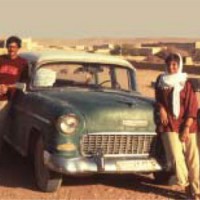
Vol. 46 / No. 1
By: Deborah I. Olszewski
Richard Zettler: Associate Curator-In-Charge, Near East Section: Meet the Curators
Ancient Mesopotamia is Richard Zettler’s research passions. As Associate Curator-in-Charge of the Near East Section, and Associate Professor of Anthropologic, […]
View Article
Vol. 46 / No. 1
By: Edith Turner
Shamanism and Spirit
The word “Shaman” derives from saman, taken from the Tungus of Siberia where it means “spirit healer.” Shamanism, or working […]
View Article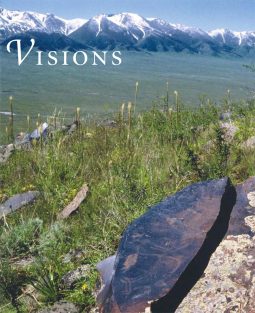
Vol. 46 / No. 1
By: Kenneth Lymer
Shimmering Visions: Shamanistic Rock Art Images from the Republic of Kazakhstan
Between 1998-2000 I visited several important rock art sites within the Republic of Kazakhstan. Kazakhstan is one of several countries […]
View Article
Vol. 46 / No. 1
By: Elin C. Danien
On the Dilemma of a Horn: The Horned Shamans of West Mexico
In one of the Wall cases of the Penn Museum’s Mesoamerican Gallery two small figures curl and turn around each […]
View ArticleVol. 46 / No. 1
By: Peter T. Furst
Visionary Plants and Ecstatic Shamanism
Big Raven, Whale, little earth spirits, and a deity named Vahiyinin, are the actors in a tale a Siberian Koryak […]
View ArticleVol. 46 / No. 1
By: Deborah Kapchan
Moroccan Gnawa and Transglobal Trance: The Medium is the Music
The Gnawa Originally from Sub-Saharan Africa, the Gnawa are ritual musicians who were brought to Morocco mostly as slaves in […]
View ArticleVol. 46 / No. 1
By: Michael Harris, Valentina L. Martinez, WM. Jerald Kennedy, Charles Roberts and James Gammack-Clark
The Complex Interplay of Culture and Nature in Coastal South-Central Ecuador: An Interdisciplinary Work
Interdisciplinary Beginnings One of the most enduring domains of inquiry within anthropology has been that of the human-environment relationship. Here […]
View ArticleVol. 46 / No. 1
By: Irene Bald Romano, Valentine Talland and David Gilman Romano
New Perspectives on the Classics: Book News & Reviews
Portraits of the Ptolemies: Greek Kings as Egyptian Pharaohs, by Paul Edmund Stanwick (Austin: University of Texas Press, 2002), 236 […]
View ArticleVol. 46 / No. 1
By: Jeremy A. Sabloff
From the Director – Spring 2004
This is my last column as Director of the University of Pennsylvania Museum. Soon after this issue of Expedition appears, […]
View ArticleVol. 46 / No. 1
By: Beebe Bahrami
From the Editor – Spring 2004
Key to understanding shamanism is recognizing that it is as much a technique as it is a worldview. What makes […]
View ArticleVol. 46 / No. 1
By: Pam Kosty
Treasures from the Royal Tombs of Ur: Exhibit Notes
The Penn Museum’s nationally traveling exhibit returns home for a limited time this spring and summer, before traveling to additional […]
View Article
Vol. 46 / No. 1
By: Alex Pezzati
Goldberg Variations: Archives Houses Over 16,000 Eclectic Images From Photographer Reuben Goldberg
The Archives is known for its collections of field notes and photographs documenting human cultures and archaeological remains around the world. […]
View ArticleVol. 46 / No. 2
By: Leigh J. Kuwanwisiwma
Ang Kuktota: Hopi Ancestral Sites and Cultural Landscapes
Hopitutskwa—Hopi Land—encompasses everywhere the Hopi people and their ancestors traveled, lived, and were buried during the long migration from the […]
View ArticleVol. 46 / No. 2
By: Nicholas David
Watch or Water Towers?: Stone-built Sites in Northern Cameroon's Mandara Mountains and Their Functions
In 2001-2002, the Mandara Archaeological Project’s survey in the Mandara mountains established the presence of fifteen ruins, known as Diy-Gi’d-Biy, […]
View ArticleVol. 46 / No. 2
By: Andrea Baldeck
Sacred Places in Southeast Asia
A Single Continuous Note, thrums through the sultry air of a tropical afternoon. Concealed in palms, strangler figs, and kapok […]
View ArticleVol. 46 / No. 2
By: James R. Mathieu
From the Editor – Summer 2004
This issue of Expedition marks a transition in more ways than one. First and foremost, we introduce our readers to […]
View ArticleVol. 46 / No. 2
By: Philip Chase and Theodore G. Schurr
Evolution and the Peopling of the Americas: Book News & Reviews
Nature’s Magic: Synergy in Evolution and the Fate of Humankind, by Peter Corning (Cambridge: Cambridge University Press, 2003). 464 pp., […]
View Article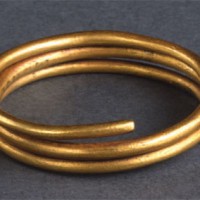
Vol. 46 / No. 2
By: William B. Hafford
Glittering Gold: What in the World
Gold. Through the ages, it has adorned kings and queens and made princes of the common, inspiring greatness and greed […]
View ArticleVol. 46 / No. 2
By: Deborah I. Olszewski
Meet the New Director: Richard M. Leventhal, the Williams Director
On JULY 1, 2004, a new era at the Penn Museum began when Richard M. Leventhal, noted Mesoamerican scholar, officinally assumed […]
View ArticleVol. 46 / No. 2
By: Brenda J. Bowser
The Amazonian House: A Place of Women's Politics, Pottery, and Prestige
Dusk was falling in the Amazonian house. Two men sat silently. The host was dressed for war, his face painted […]
View Article
Vol. 46 / No. 2
By: Phoebe Resnick
Reminiscences: An Appreciation of Mary Virginia Harris: Portrait
Mary Virginia Harris, a devoted volunteer and supporter of the Penn Museum for more than 40 years, died on Monday, […]
View ArticleVol. 46 / No. 2
By: Rosemary A. Joyce
Unprecedented Projects: The Birth of Mesoamerican Pyramids
In 1519, The first Europeans to visit Tenochtitlan saw a massive pyramid supporting twin temples looming over the capital city […]
View ArticleVol. 46 / No. 2
By: Alexandra Mack
The Multiple Landscapes of Vijayanagara: From the Mythic and the Ritual to the Kingly and the Common
Vijayangara, The Capital of an empire that flourished in southern India from the 14th to the 16th centuries AD, has been […]
View ArticleVol. 46 / No. 3
By: James R. Mathieu
From the Editor – Winter 2004
The original impetus behind this special issue on Cultural Anthropology came from my predecessor as editor, Beebe Bahrami. As a […]
View Article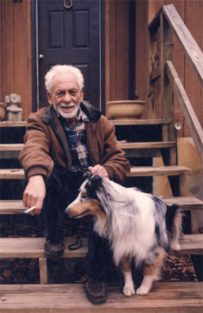
Vol. 46 / No. 3
By: Gulbun O'Connor
William Davenport, Curator Emeritus, Oceanian Section: Portrait
William Davenport Died on March 12, 2004, in Philadelphia. He was a great teacher and friend, and after all these […]
View Article
Vol. 46 / No. 3
By: Deborah I. Olszewski
Robert W. Preucel, Associate Curator, American Section: Meet the Curators
One of the many hats Robert W. Preucel wears as the Gregory Annenberg Weingarten Associate Curator of North America is […]
View ArticleVol. 46 / No. 3
By: Paula L.W. Sabloff
The Value of ‘Culture’: An Example from Mongolia
Cultural Anthropology doesn’t get much respect from the public these days. Archaeology, on the other hand, remains beloved because it […]
View Article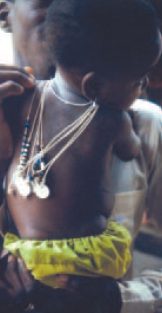
Vol. 46 / No. 3
By: Alma Gottlieb
Babies as Ancestors, Babies as Spirits: The Culture of Infancy in West Africa
Old Souls One Day I was sitting in the shaded compound of a Beng village in the West African rain […]
View ArticleVol. 46 / No. 3
By: Carolyn Behrman
‘The Culture of Reading’ in a Public School: Ethnography, Service-Learning, and Undergraduate Researchers
Scores from a 2002 standardized Reading Proficiency Test for fourth graders surprised the principal of Wensleydale Elementary School (pseudonym). Her […]
View ArticleVol. 46 / No. 3
By: Sarah Strauss
Re-Orienting Yoga
The train pulled out of the station. I was riding in the famed Rajdhani Express, on the way back from […]
View ArticleVol. 46 / No. 3
By: William Davenport
Henri Rey: The Inventor from Tahiti
Imet Henri Rey in Tahiti in 1965. He was living in semi-retirement in the district of Pirae, about three kilometers […]
View Article
Vol. 46 / No. 3
By: Donald White
What Is a Water Trough Where a Horse Can’t Even Get a Drink?: An Abandonded Roman Sarcophagus By the Wissahickon
Now the Wissahiccon is of so remarkable a loveliness that, were it flowing in England, it would be theme of […]
View ArticleVol. 46 / No. 2
By: Brenda J. Bowser
The Amazonian House: A Place of Women's Politics, Pottery, and Prestige
Dusk was falling in the Amazonian house. Two men sat silently. The host was dressed for war, his face painted […]
View ArticleVol. 47 / No. 1
By: Ann Blair Brownlee
What Was There Before the Museum?
It was a “wretched stretch of land” according to Dr. William Pepper’s biography. “One gray March days, in 1894, Dry. […]
View Article
Vol. 47 / No. 1
By: James R. Mathieu
From the Editor – Spring 2005
Welcome to another issue of Expedition. In the following pages you will read about the western highlands of Guatemala and […]
View ArticleVol. 47 / No. 1
By: Peter S. Wells
The Limes and Hadrian’s Wall: Rome's Northern European Boundaries
Every wall demands attention and raises questions. Who built it and why? The Limes in southern Germany and Hadrian’s Wall in […]
View ArticleVol. 47 / No. 1
By: Melissa Vogel
Life on the Frontier in Ancient Peru: Archaeological Investigations at Cerro la Cruz
Recent research on the north coast of Rtlhaoeru is provoking new interest in a lite-known prehispanic culture, the asma. In […]
View ArticleVol. 47 / No. 1
By: Richard M. Leventhal
The Present and Future of the Museum: From the Director
Over the next several issues of Expedition I would like to discuss some ideas related to museums in the modern […]
View ArticleVol. 47 / No. 1
By: Deborah I. Olszewski
Gregory L. Possehl, Curator, Asian Section: Meet the Curators
The Summer of 2004 marked 40 years of archaeological research in India and Pakistan for Gregory L. Possehl, Curator in […]
View ArticleVol. 47 / No. 1
By: Meera Patankar
‘Anthropologists in the Making’: Building Bridges of Cross-Cultural Understanding: Class Notes
Since 1998 Children ages eight through twelve have flocked each summer to participate in the Museum’s popular summer camp. For […]
View ArticleVol. 47 / No. 1
By: Alex Pezzati
Nipper in the Jungle: From the Archives
One of the world’s most recognizable logos is that of Nipper, the little black and white fox terrier, head cocked, […]
View ArticleVol. 47 / No. 1
By: John M. Weeks and Virginia Ramirez Zabala
The Samana Americans: Some Forgotten Philadelphians
Although we have been here so long, we have preserved our feelings as Americans. We try to keep our people […]
View ArticleVol. 47 / No. 1
By: Greg Borgstede
Exploring the Western Highlands of Guatemala: New Perspectives on the Ancient Maya
The Drive from the capital city of Guatemala westward into the modern Maya heartland follows the Pan-merican highway, twisting and […]
View ArticleVol. 47 / No. 1
By: Stuart Fleming
Biowar in Ancient Times: A Discussion with Adrienne Mayor: Book News & Reviews
An October 14, 2004, I had the pleasure of introducing a lecture at the Museum entitled “Poison Arrows and Scorpion […]
View ArticleVol. 47 / No. 2
By: Greg Borgstede, Beebe Bahrami and Vanessa Smith
The Maya, Pashtun, and Egypt: Book News & Reviews
The Maya (seventh edition) The Maya (seventh edition) by Michael D. Coe (New York: Thames and Hudson, 2005). 272 pp., 186 illus, […]
View Article
Vol. 47 / No. 2
By: Xiuqin Zhou
Excavations at Zhaoling, Shaanxi, China: More Light on the Museum’s Chinese Horse Reliefs: Field Experience
In 2003 the Beilin Museum in Xi’an, China, informed the Penn Museum that an excavation was taking place at the […]
View Article
Vol. 47 / No. 2
By: William B. Hafford
Hanging in the Balance: Precision Weighing in Antiquity: Research Notes
Have you ever asked yourself, “Just how accurate was ancient weighing? Probably not, but that is what I ask myself […]
View ArticleVol. 47 / No. 2
By: Michael D. Danti
Returning to Iran: Research Notes
The Penn Museum has had a long and auspicious history of involvement in the archaeology of Iran. Since the Islamic Revolution in […]
View Article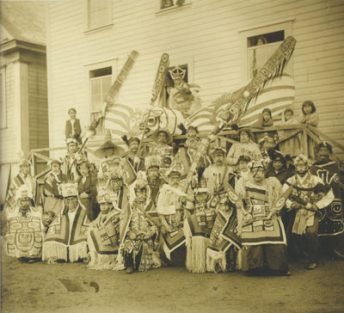
Vol. 47 / No. 2
By: Robert W. Preucel and Lucy Fowler Williams
The Centennial Potlatch
On June 2004, Harold Jacobs, the cultural resource specialist of the Central Council of Tlingit and Haida Indian Tribes of […]
View Article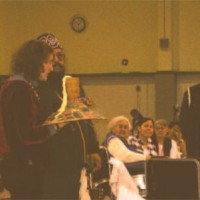
Vol. 47 / No. 2
By: Robert W. Preucel
Sea Monster Hat Repatriation
The Sea Monster hat is a conical wooden hat with the sea monster crest (Gunakadeit), carved by Augustus Bean. The […]
View ArticleVol. 47 / No. 2
By: Alexei Vranich, Paul Harmon and Chris Knutson
Reed Boats and Experimental Archaeology on Lake Titicaca
As much as archaeologists grumble about the scientific merit of Thor Heyerdahl’s Kon Tiki journey from Peru to Polynesia, one […]
View Article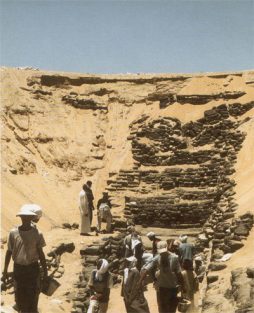
Vol. 47 / No. 2
By: Deborah I. Olszewski
Meet the Curators – Josef Wegner: Associate Curator, Egyptian Section
The Museum’s Josef Wegner, Associate Curator in the Egyptian Section, has been interested in Egyptology since childhood. Growing up in […]
View ArticleVol. 47 / No. 2
By: Mark Aldenderfer and Holley Moyes
In the Valley of the Eagle: Zhang-Zhung, Kyunglung, and the Pre-Buddhist Sites of Far Western Tibet
At the beginning of the 6th century AD, the rulers of the Yarlung clan on the central Tibetan plateau met […]
View Article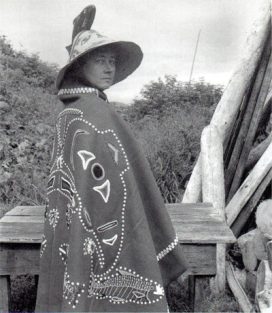
Vol. 47 / No. 2
By: Jean Adelman
Frederica De Laguna: Honorary Curator, American Section
On October 6, 2004, Frederica De Laguna, Honorary Curator in the Museum’s American Section and renowned anthropologist of Alaska’s native […]
View ArticleVol. 47 / No. 2
By: James R. Mathieu
From the Editor – Summer 2005
Welcome to Expeditions summer issue! In the following pages you will read about the Museum’s role in the Centennial Potlatch—a […]
View Article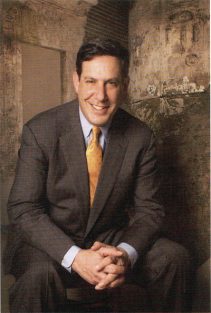
Vol. 47 / No. 2
By: Richard M. Leventhal
The University and the Museum: From the Director
The formal name, the University of Pennsylvania Museum of Archaeology and Anthropology, clearly connects our museum to the larger Penn […]
View Article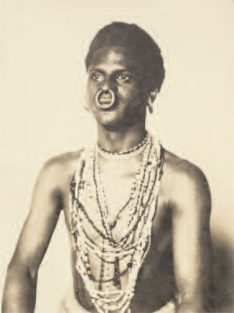
Vol. 47 / No. 2
By: Alex Pezzati
The Scholar and the Impostor: From the Archives
“Real South African at U. of P. Museum” Thus was a new “exhibit” at the Museum announced on January 28, […]
View ArticleVol. 47 / No. 3
By: Deborah I. Olszewski
Harold L. Dibble, Curator, European Archaeology Section: Meet the Curators
HAROLD L. DIBBLE, Curator-in-Charge of the European Archaeology Section at the Museum, has been fascinated with stone tools and archaeology […]
View ArticleVol. 47 / No. 3
By: Timothy Kaiser and Stašo Forenbaher
Archaeological Caving in Croatia: The Illyrian Rituals of Nakovana Cave
From the tip of the strategically important Peljesac peninsula on Croatia’s Dalmatian coast Nakovana Cave overlooks the Adriatic Sea and […]
View ArticleVol. 47 / No. 3
By: Alessandro Pezzati
Mystery at Acámbaro, Mexico: Did Dinosaurs Coexist with Humans?: From the Archives
Beginning in 1950 stories of a large collection of strange ancient figurines surfaced in the American and Mexican press. Waldemar […]
View Article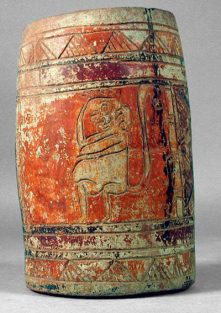
Vol. 47 / No. 3
By: Elin C. Danien
A Ritual Vessel in a Maya Cave: Chocolate-Loving Monkeys and Humans: What in the World
Caves in the Alta Verapaz region of Guatemala were frequently used for rituals and burials by the ancient Maya. This cylindrical […]
View ArticleVol. 47 / No. 3
By: Mark Aldenderfer
Caves as Sacred Places on the Tibetan Plateau
Although most of us think of Tibet as a high plateau riven by high mountain chains wide open to the […]
View Article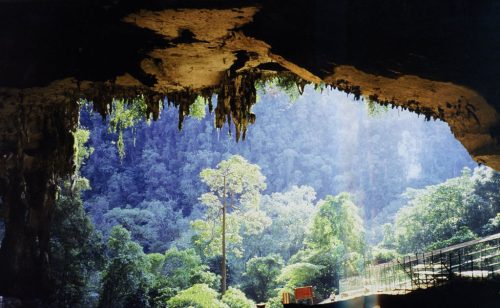
Vol. 47 / No. 3
By: Graeme Barker
Burial Rituals of Prehistoric Forager-Farmers: The Neolithic Cemeteries of Niah Cave, Sarawak
One of the largest and most varied prehistoric cemeteries in Southeast Asia was discovered in the late 1950s in the […]
View ArticleVol. 47 / No. 3
By: Jean Clottes
What Did Ice Age People Do in the Deep Caves?
In our modern Western world, deep caves have lost their supernatural aura, now serving primarily as areas for sport and […]
View ArticleVol. 47 / No. 3
By: Holley Moyes and James E. Brady
The Heart of Creation, the Heart of Darkness: Sacred Caves in Mesoamerica
Caves have been used as sacred spaces for thousands of years throughout the world. Nowhere is this better illustrated than […]
View ArticleVol. 47 / No. 3
By: James R. Mathieu
From the Editor – Winter 2005
This Winter’s Expedition is a special issue on Caves! Spanning the globe from Mesoamerica to Borneo and ranging in time […]
View ArticleVol. 47 / No. 3
By: Richard M. Leventhal
Public Exhibits, Education, and Outreach: From the Director
Two Questions that might be asked about the Penn Museum are: Why should we have a major public focus on […]
View ArticleVol. 47 / No. 3
By: Paul S. C. Taçon
The World of Ancient Ancestors: Australian Aboriginal Caves and Other Realms within Rock
In 1986, while documenting rock painting sites in Kakadu National Park, east of Darwin in northern Australia, I came upon […]
View ArticleVol. 47 / No. 3
By: Kathleen Ryan and Karega-Münene
The Origins of Pastoralism in Eastern Africa: Archaeological Exploration on the Laikpia: Research Notes
How do cattle herders such as the pastoral Maasai of East Africa, manage to survive and often prosper in harsh […]
View Article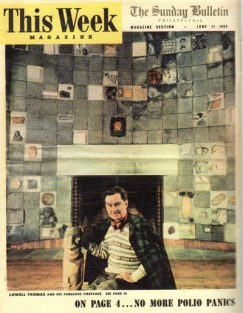
Vol. 48 / No. 1
By: Alex Pezzati
‘So long, until tomorrow’: Lowell Thomas and the ‘History of Civilization’ Fireplace: From the Archives
LOWELL JACKSON THOMAS (1892–1981) was the voice of the news in the U.S. for almost half a century, hosting CBS […]
View ArticleVol. 48 / No. 1
By: Gregory L. Possehl
Shu-ilishu’s Cylinder Seal: What in the World
Some Years Ago, while perusing the great Assyriologist A. Leo Oppenheim’s Ancient Mesopotamia: Portrait of a Dead Civilization, I found […]
View Article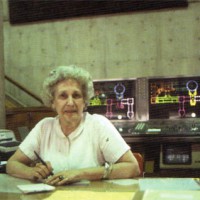
Vol. 48 / No. 1
By: Elin C. Danien
Caroline Dosker: She Dusted the Mummies: Portrait
For many of us who knew her, Caroline Dosker’s death on June 26, 2005, marked the end of a more […]
View ArticleVol. 48 / No. 1
By: Louise Krasniewicz
‘Round Up the Usual Suspects’: Anthropology Goes to the Movies
In 1946, while most anthropologists were exercising their professional skills and curiosities in cultures far from home, Hortense Powdermaker took […]
View ArticleVol. 48 / No. 1
By: Igor Kopytoff
A Short History of Anthropology at Penn
His Brief History of Anthropology at the University of Pennsylvania emphasizes three periods: the Department’s protohistory in the 19th century, […]
View ArticleVol. 48 / No. 1
By: Stuart Kirsch
History and the Birds of Paradise: Surprising Connection from New Guinea
How can a woman’s hat made in New York City (ca. 1915) and decorated with iridescent bird of paradise plumes […]
View ArticleVol. 48 / No. 1
By: James McClelland
King Tut Exhibition Comes to Philadelphia: Penn Museum’s David P. Silverman Is National Curator: Exhibit Notes
The international touring exhibition Tutankhamun and the Golden Age of the Pharaohs will end its tour of the U.S. next […]
View Article
Vol. 48 / No. 1
By: Beebe Bahrami
Bear Daughter: Book News & Reviews
Bear Daughter by Judith Berman (New York: Ace Books, 2005). 422 pp., paper $16.00 ISBN 0441013228. Reviewed by Beebe Bahrami, a […]
View ArticleVol. 48 / No. 1
By: Deborah I. Olszewski and Maysoon al-Nahar
When Stone Is More Than Stone: Clues to Prehistoric Resource Use in Jordan
Scattered Across the world on the surface and in buried deposits are billions of prehistoric stone artifacts the most durable […]
View ArticleVol. 48 / No. 1
By: Olivia Given and Shawn Hyla
Forging Partnerships in Laos: Archaeological Survey Using Mobile GIS: Research Notes
Peoples living in mainland Southeast Asia during the middle Holocene (ca. 6000 – 2000 BC) made some profound subsistence and […]
View ArticleVol. 48 / No. 1
By: Janet Chrzan
Why Study Culinary Tourism?: Answers for a Healthy Life: Research Notes
The first time I heard about the academic study of tourism—an undergraduate course the University of California at Berkeley entitled […]
View Article
Vol. 48 / No. 1
By: James R. Mathieu
From the Editor – Spring 2006
Welcome to the first issue of Expedition for 2006! We are pleased to present an eclectic issue covering a wide […]
View Article
Vol. 48 / No. 1
By: Richard M. Leventhal
Vine Deloria, Jr. (1933–2005): From the Director
In this issue I want to take a break from discussing the Penn Museum and note the passing of an […]
View Article
Vol. 48 / No. 1
By: Deborah I. Olszewski
Rebecca Huss-Ashmore, Associate Curator-in-Charge, Physical Anthropology Section: Meet the Curators
Rebecca Huss-Ashmore, Associate Curator-inCharge of Penn Museum’s Physical Anthropology Section, has traveled nearly full circle in her career. As an […]
View ArticleVol. 48 / No. 2
By: Jennifer Houser Wegner
David Randall-MacIver: Explorer of Abydos and Curator of The Egyptian Section
As a young man of 26, the British-born archaeologist and anthropologist David Randall-MacIver began his career working at Abydos as […]
View Article
Vol. 48 / No. 2
By: Richard M. Leventhal
The Penn Compact and Penn Museum: From the Director
President Amy Gutmann’s vision for the University of Pennsylvania — “the Penn Compact”—articulates a three-part program focused upon the main […]
View ArticleVol. 48 / No. 2
By: Josef Wegner
Beneath the Mountain-of-Anubis: Ancient Egypt's First Hidden Royal Tomb
Ancient peoples throughout the world had sophisticated understandings of their landscape. Specific elements, such as mountains, were often identified as […]
View ArticleVol. 48 / No. 2
By: James R. Mathieu
From the Editor – Summer 2006
Welcome to Expedition’s special issue on Egyptology! Here’s a detailed look at the Museum’s involvement in the archaeology of ancient […]
View ArticleVol. 48 / No. 2
By: Josef Wegner
One Pharaoh, Two Tombs
Most Egyptian pharaohs possessed only a single tomb, leaving little doubt as to where they were buried. But Senwosret III […]
View Article
Vol. 48 / No. 2
By: Dawn McCormack
Borrowed Legacy: Royal Tombs S9 and S10 at South Abydos
After the 12th Dynasty reigns of Senwsoret III (1878–1841 BCE) and Amenemhet III (1858–1812 BCE) the political and economic power […]
View ArticleVol. 48 / No. 2
By: Vanessa Smith
Food Fit for the the Soul of a Pharaoh: The Mortuary Temple's Bakeries and Breweries
Egyptian mortuary temples were more than just religious centers. They also served as the local representative of the state, combining […]
View Article
Vol. 48 / No. 2
By: Josef Wegner
Abydos And The Cult Of Osiris
Ancient Abydos (Abdju) played a lengthy and important role in the development of Egyptian civilization. Located 500 km south of […]
View Article
Vol. 48 / No. 2
By: Josef Wegner
Beautiful-Is-The-KA
Extensively excavated since 1994, the mortuary temple of Senwosret III housed a limestone cult building at its core. Its central […]
View Article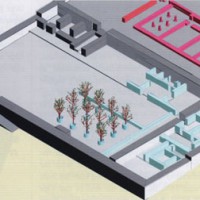
Vol. 48 / No. 2
By: Josef Wegner
Echoes of Power: The Mayor's House of Ancient Wah-Sut
Throughout history, the economic, religious, and social life of settlements has centered on special buildings such as temples, churches, post […]
View ArticleVol. 48 / No. 2
By: Nicholas S. Picardo
Egypt’s Well-to-Do: Elite Mansions in the Town of Wah-Sut
Archaeologists study settlements and households to understand how ancient people organized themselves and how social relationships played out through daily […]
View Article
Vol. 48 / No. 2
By: Stine Rossel
A Tale of the Bones: Animal Use in the Temple and Town of Wah-Sut
Many sources provide evidence of animal use in ancient Egypt. For example, the Egyptians were meticulous in depicting their natural […]
View Article
Vol. 48 / No. 2
By: Kei Yamamoto
Currelly’s Dig House
When Currelly began work at South Abydos in January 1903, Petrie’s main camp was located about 3 km away in […]
View Article
Vol. 48 / No. 2
By: Josef Wegner
The Archaeology of South Abydos: Egypt's Late Middle Kingdom in Microcosm
Some 3,850 years ago a remarkable experiment in architectural and social engineering took place on the edge of the desert […]
View Article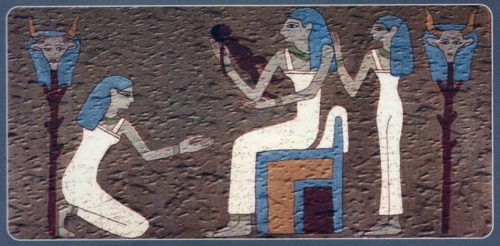
Vol. 48 / No. 2
By: Josef Wegner
The Magical Birth Brick
In 2001 we discovered a unique object for Egyptian archaeology in the mayoral residence at South Abydos—a polychrome magical birth […]
View Article
Vol. 48 / No. 2
By: Josef Wegner
The Areryt
The same clay seal impressions that identified Building A as the mayoral residence also indicated the existence of another structure […]
View Article
Vol. 48 / No. 2
By: Kei Yamamoto
The Excitement of First Discovery: South Abydos 1899-1903
The current expedition to South Abydos follows in the footsteps of earlier explorers and archaeologists. David Randall-MacIver, Arthur C. Mace, […]
View Article
Vol. 48 / No. 2
By: John Henry Rice
Finding the Original Home of the Museum’s Brahmā: Research Notes
As early as 1924 the art historian Ananda K. Coomaraswamy recognized the importance of the Penn Museum’s Brahmā sculpture, now […]
View Article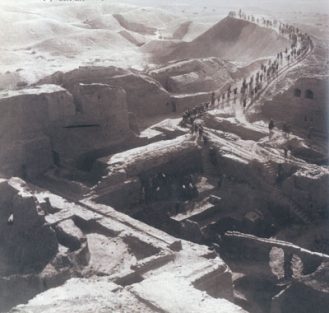
Vol. 48 / No. 3
By: Julia Lawson
The Resurrection of Seven Clay Coffins from Nippur: Conservation Notes
The Mesopotamian clay coffins from Nippur in the Penn Museum’s Near East Section have a long and varied history. They […]
View Article
Vol. 48 / No. 3
By: Jacqueline H. Fewkes
The Meaning of Material Culture
The complex meanings associated with material culture offer many challenges for the study and interpretation of artifacts associated with Ladakh’s […]
View ArticleVol. 48 / No. 3
By: Naomi F. Miller, Kimberly E. Leaman and Julie Unruh
Serendipity: Secrets of the Mudballs: Research Notes
A surprising amount of archaeological discovery consists simply of connecting the disparate bits of information that an average archaeologist holds […]
View Article
Vol. 48 / No. 3
By: Greg Borgstede, Benjamin Porter and James R. Mathieu
Ec(k)s Mark the Spot?: Book News & Reviews
The Olmecs: America’s First Civilization by Richard A. Diehl (New York: Thames & Hudson, 2005) 208 pp., 152 illus, 20 […]
View Article
Vol. 48 / No. 3
By: Barbara J. Hayden, Yannis Bassiakos, Thanasis Kalpaxis, Apostolos Sarris and Metaxia Tsipopoulou
Priniatikos Pyrgos: A Primary Harbor Settlement and Emporium in Eastern Crete
Priniatikos Pyrgos, a coastal settlement in eastern Crete, sits upon a limestone promontory in the center of a broad beach. […]
View Article
Vol. 48 / No. 3
By: Matt Tomlinson
A Consuming Tradition: Kava Drinking in Fiji
Like people in many other times and places, indigenous Fijians are firm believers in a glorious but disappeared past. In […]
View Article
Vol. 48 / No. 3
By: Alessandro Pezzati
Tutankhamun Treasures: The First Tut Show Came to the Museum: From the Archives
As the exhibition Tutankhamun and the Golden Age of the Pharaohs travels around the United States before opening at Philadelphia’s […]
View Article
Vol. 48 / No. 3
By: Deborah I. Olszewski
Robert L. Schuyler: Associate Curator-in-Charge, Historical Archaeology Section: Meet the Curators
Robert L. Schuyler, Associate Curator-in-Charge of the Museum’s Historical Archaeology Section, remembers a fascination with the past as a 4-year-old living […]
View Article
Vol. 48 / No. 3
By: Richard M. Leventhal
The Amarna Exhibit: From the Director
On November 12, 2006, Penn Museum opened a new exhibit, Amarna, Ancient Egypt’s Place in the Sun. It is an […]
View Article
Vol. 48 / No. 3
By: James R. Mathieu
From the Editor – Winter 2006
Welcome to expedition’s final issue for 2006! Once again, we offer an eclectic range of articles presenting anthropological and archaeological […]
View Article
Vol. 48 / No. 3
By: Daniel W. Gade
Albert A. Giesecke (1883-1968): A Philadelphian in the Land of the Incas
A University of Pennsylvania graduate born in Philadelphia played a largely unrecognized but important part in recovering and promoting Peru’s […]
View Article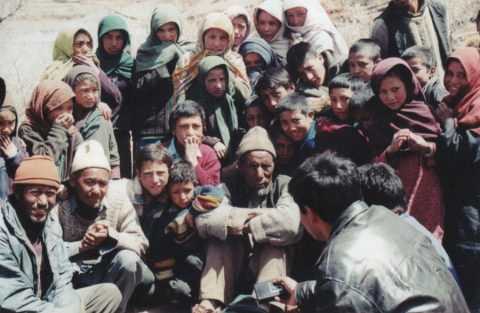
Vol. 48 / No. 3
By: Jacqueline H. Fewkes
Trade at the Crossroads of Continents: Northern India's Ladakh Region
Historical trade routes across Asia brought together diverse peoples and created markets that were highly cosmopolitan areas of intercultural contact. […]
View Article
Vol. 49 / No. 1
By: Stephen Batiuk and Mitchell S. Rothman
Early Transcaucasian Cultures and Their Neighbors: Unraveling Migration, Trade, and Assimilation
Much of what happens in our modern world depends on how people define their identity (and their loyalties), how they […]
View Article
Vol. 49 / No. 1
By: Russell D. Greaves
The Ethnoarchaeology of Hunting and Collecting: Pumé Foragers of Venezuela
It is a common anthropological fallacy to think that people who forage for their subsistence are living remnants of simpler […]
View ArticleVol. 49 / No. 1
By: Jan Olofsson and Egil Josefson
The Frontier of Archaeological Reconstruction: Horse Sacrifice at Eketorp Fort, Sweden
In 1978 the archaeological remains of Eketorp Fort were reconstructed on Öland Island in the Baltic Sea, establishing the first […]
View ArticleVol. 49 / No. 1
By: Ivor Jankovic and Ivor Karavanic
Digging Up Neandertals at Mujina Pećina?: A Mousterian Cave Site in Croatia
Neandertals are everyone’s favorite image of a classic “caveman.” We know more about them than we do about any other […]
View Article
Vol. 49 / No. 1
By: James R. Mathieu
From the Editor – Spring 2007
In this first issue of Expedition for 2007 we are excited to present feature articles highlighting a wide variety of […]
View Article
Vol. 49 / No. 1
By: Jeremy A. Sabloff
From the Director – Spring 2007
As Penn Museum celebrates its 120th year of activity, we still take seriously our original trifold mission of cutting-edge archaeological […]
View Article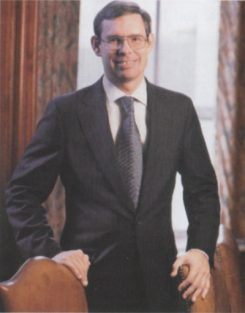
Vol. 49 / No. 1
By: Deborah I. Olszewski
Meet the New Board Chair: Michael J. Kowalski: Chairman of the Museum's Board of Overseers
Penn museum welcomed Michael J. Kowalski as Chairman of the Museum Board of Overseers on July 1, 2006. Kowalski graduated […]
View ArticleVol. 49 / No. 1
By: Chris Knutson
The “Tired Stones” of Lake Titicaca: Field Experience
On the morning of August 7, 2002, my colleagues and I crossed the border from Bolivia into Peru. Just past […]
View Article
Vol. 49 / No. 1
By: Gregory L. Possehl
The Middle Asian Interaction Sphere: Research Notes
In the early 1920s Sir John Marshall’s investigations of the ancient cities of Mohenjo-daro and Harappa (now located in Pakistan) […]
View Article
Vol. 49 / No. 1
By: Stephen Batiuk and Mitchell S. Rothman
What Defines the ETC?
ETC cultures were first identified on the basis of their pottery in the Transcaucasus area between the Kura and Araxes […]
View ArticleVol. 49 / No. 1
By: Jan Olofsson and Egil Josefson
The Development of Eketorp Fort
Eketorp Fort—a prehistoric ring fort—was completely excavated between 1964 and 1974. The first fort (Eketorp I) was built during the […]
View ArticleVol. 49 / No. 2
By: Anne Schiller
Borneo Families in this Life and the Next: Adherents of Kaharingan among the Nagaju Dayaks
After days of hard travel on a weather-beaten boat named Font of Prosperity, I was happy to arrive at the […]
View ArticleVol. 49 / No. 2
By: Philip Lieberman and Robert McCarthy
Tracking the Evolution of Language and Speech: Comparing Vocal Tracts to Identify Speech Capabilities
In 1973 Theodosius Dobzhansky wrote that “nothing in biology makes sense except in the light of evolution.” This dictum applies […]
View Article
Vol. 49 / No. 2
By: Matt Tomlinson
Reversing Anthropology: Book News & Reviews
Reverse Anthropology: Indigenous Analysis of Social and Environmental Relations in New Guinea by Stuart Kirsch (Palo Alto, CA: Stanford University Press, […]
View Article
Vol. 49 / No. 2
By: James R. Mathieu
From the Editor – Summer 2007
Anthropology is a very broad field, encompassing the subfields of archaeology, biological anthropology, cultural anthropology, and linguistic anthropology. In this […]
View ArticleVol. 49 / No. 2
By: Daniel A. Meyer and Jason Roe
Archaeology Along Canada’s Rocky Mountain Eastern Slopes: Excavations at the Upper Lovett Campsite, Alberta
Canada’s rocky mountains and the foothills of the Eastern Slopes are, archaeologically speaking, among the least-known areas in North America. […]
View Article
Vol. 49 / No. 2
By: Daniel A. Meyer and Jason Roe
A Brief Culture History of the Eastern Slope
During the last Ice Age the glaciers in west-central Alberta reached their maximum extent about 20,000 years ago, forming a […]
View ArticleVol. 49 / No. 2
By: George F. Bass
Nautical Archaeology: From Its Beginnings at Penn to Today's INA
It all began nearly half a century ago at the University of Pennsylvania Museum of Archaeology and Anthropology. In 1959, […]
View ArticleVol. 49 / No. 2
By: Janet Chrzan
Dreaming of Tuscany: Pursuing the Anthropology of Culinary Tourism
If you were to think of a place you have visited, especially a well-known tourist destination like San Francisco or […]
View Article
Vol. 49 / No. 2
By: Holly Pittman
From the Deputy Director for Academic Programs – Summer 2007
For more than a century a core mission of the University of Pennsylvania Museum of Archaeology and Anthropology has been […]
View Article
Vol. 49 / No. 2
By: Deborah I. Olszewski
Barry L. Eichler: Associate Curator-in-Charge, Babylonian Section: Meet the Curators
A fascination with the human condition and the problems that society attempts to solve is the driving force behind the […]
View Article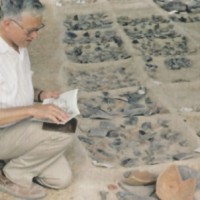
Vol. 49 / No. 2
By: Gareth Darbyshire
Keith DeVries: Associate Curator Emeritus, Mediterranean Section: Portrait
Keith Devries, Associate Curator Emeritus in the Mediterranean Section, passed away at the age of 69 on July 16, 2006, […]
View Article
Vol. 49 / No. 2
By: Aubrey Baadsgaard
Imaging Ur’s Sacrificial Dead: An Archaeological CAT Scan: Science & Archaeology
Some 4,600 years ago processions of royal courtiers—including soldiers, musicians, ladies-in-waiting, ox- cart and chariot drivers, and animal grooms—accompanied their […]
View ArticleVol. 49 / No. 3
By: Nicholas S. Picardo
The Dig House at Abydos: Field Experience
During the latter part of ancient Egypt’s Middle Kingdom in the 18th century BCE, a royal edict forbade the placement […]
View ArticleVol. 49 / No. 3
By: Herbert Poepoe
REU Student Herbert Poepoe
As a native Hawaiian, I was fortunate to have been able to participate in the REU-NSF program during both the […]
View ArticleVol. 49 / No. 3
By: Nanibaa Beck
REU Student Nanibaa Beck
Sitting on a couch on the first floor of one of Penn’s dormitory high-rises, the REU students waited patiently for […]
View ArticleVol. 49 / No. 3
By: Sonya Ashley
REU Student Sonya Ashley
Like my friend Herbert Poepoe, I was fortunate to participate in the REU program twice (2006, 2007). Having just graduated […]
View Article
Vol. 49 / No. 3
By: Tim Powell and Larry Aitken
A Digital Partnership: Penn Museum and Ojibwe Tribal Historians: Research Notes
Gi Bugadin-a-maa Goom (Ojibwe: “To Sanction, to Give Authority, to Bring to Life”)—offers an exciting glimpse into how digital technology […]
View Article
Vol. 49 / No. 3
By: Jennifer Houser Wegner
From Fiction to Festchrift: Book News & Reviews
Nefertiti by Michelle Moran (New York: Crown, 2007). 480 pp., 1 map, 1 family tree, cloth, $24.95, ISBN 978-0-307-38146-0. Reviewed by Jennifer Houser Wegner, Research […]
View Article
Vol. 49 / No. 3
By: Andrew L. Goldman
From Phrygian Capital to Rural Fort: New Evidence for the Roman Military at Gordion, Turkey
At the age of 20, Tritus, the son of Bato, joined the Roman army as a soldier of the VII […]
View ArticleVol. 49 / No. 3
By: Elizabeth G. Hamilton
Adventures in Experimental Smelting: Iron the Old-fashioned Way
It was a perfect October day to play with fire. The sun shone brightly on the barnyard of the Peters […]
View ArticleVol. 49 / No. 3
By: Lucy Fowler Williams, Isabel C. Gonzales and Shawn Tafoya
WaHa-belash adi Kwan tsáawä / Butterflies and Blue Rain: The Language of Contemporary Eastern Pueblo Embroidery
Pueblo people of the American Southwest say that as long as there is Pueblo religion there will be handmade cloth. […]
View Article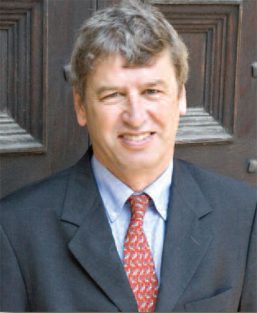
Vol. 49 / No. 3
By: Richard Hodges
My First Encounter with Philadelphia: From the Director
Philadelphia and the Penn Museum have long held a special place in my heart. In 1980, renowned British archaeologist Colin […]
View Article
Vol. 49 / No. 3
By: Deborah I. Olszewski
C. Brian Rose: Curator-in-Charge, Mediterranean Section: Meet the Curators
The spark that led to a career in the archaeology of the Mediterranean world for C. Brian Rose, Curator-in-Charge of […]
View ArticleVol. 49 / No. 3
By: Abigail Seldin, Herbert Poepoe, Nanibaa Beck and Sonya Ashley
Building Bridges with “Native Voices”: Reflections on the REU-NSF Program, 2005-2007: Class Notes
In 2003 the National Science Foundation (NSF) awarded Jeremy A. Sabloff, then Williams Director of the Penn Museum, and Janet […]
View ArticleVol. 50 / No. 1
By: Amelia Rosenberg Weinreb
Cuba in the Shadow of Change: Daily Life in the Twilight of the Revolution
Cuba’s unique anachronisms—crumbling colonial architecture, vintage American cars, and the same Commander-in-Chief for nearly half a century—hold an allure for […]
View Article
Vol. 50 / No. 1
By: David R. Starbuck
The “Massacre” at Fort William Henry: History Archaeology, and Re-enactement
The clash of cultures on the colonial frontier of 18th century America pitted British against French and Indian against Indian, creating […]
View ArticleVol. 50 / No. 1
By: Benjamin W. Porter and Athna May Porter
“Taking in the Waters” at LaDuke Hot Springs Resort: Early 20th Century Medical Tourism in Montana
Hot Springs Found all over the world, on land and under the ocean, hot springs are wells of geothermal-heated groundwater. […]
View ArticleVol. 50 / No. 1
By: Ann Blair Brownlee and David B. Brownlee
Penn in the World: Twelve Decades at the University of Pennsylvania Museum: Exhibit Notes
In the fall of 2006, we assembled a marvelously diverse group of undergraduate and graduate students from the Departments of […]
View ArticleVol. 50 / No. 1
By: Lynn Grant
What Do You Think of That?: Museum Staffers Blog about Museums: Conservation Notes
Most of us who work in museums usually entered the field because of a love for museums. One of the […]
View Article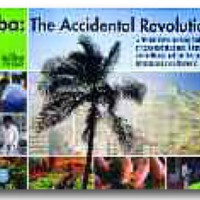
Vol. 50 / No. 1
By: Amelia Rosenberg Weinreb
Cuba: The Accidental Revolution: Film News & Reviews - Spring 2008
Cuba: The Accidental Revolution Written and Directed by Ray Burley. (Produced by CBC’s The Nature of Things, 2006). 90 min, color, […]
View ArticleVol. 50 / No. 1
By: Alex Pezzati
Charles R. Sheeler, Jr.: A Famous Artist Photographs the Museum: Charles R. Sheeler, Jr.: A Famous Artist Photographs the Museum
Charles R. Sheeler, jr. (1883–1965), a pioneer of American modernism, was one of the most important American artists and photographers […]
View ArticleVol. 50 / No. 1
By: Deborah I. Olszewski
Meet the New Director: Richard Hodges, The Williams Director
On October 1, 2007, Penn Museum welcomed its new Williams Director, Dr. Richard Hodges, O.B.E. His archaeological career began in […]
View Article
Vol. 50 / No. 1
By: Richard Hodges
Giving to the Museum: From the Director
Philanthropic giving is at the heart of modern American museums—it exists on a scale that makes a European blush with […]
View ArticleVol. 50 / No. 1
By: Debbie Tsarfati
Bringing Excitement to the Classroom: A Sabbatical at the Museum: Class Notes
“Why do we have to learn this?” and “How will I ever use this in my life?” Each September new […]
View Article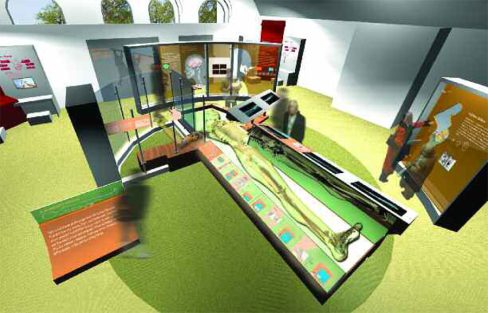
Vol. 50 / No. 1
By: Janet Monge and Alan Mann
Surviving: A Lightning Rod: Exhibit Notes
“The exhibition promises to break new ground as the first of its kind to address aspects of human evolution in […]
View Article
Vol. 50 / No. 1
By: James R. Mathieu
From the Editor – Spring 2008
Welcome to the first issue of Expedition’s 50th volume! Once again, we present three feature articles—two on historical archaeological research […]
View ArticleVol. 50 / No. 2
By: Louise Krasniewicz
Veni, Vidi, Vici: Taking a Chance on Chance
In the popular video slot machine called “Pompeii,” a chorus of male voices chants, “Veni, Vidi, Vici,” when gold coins consecutively […]
View Article
Vol. 50 / No. 2
By: Allison Lewis
Conservator Education at the Museum: An Intern’s Experience: Conservation Notes
Conservators are responsible for the care of museum collections, making sure that objects are stored, transported, handled, studied, and exhibited […]
View Article
Vol. 50 / No. 2
By: Elin C. Danien
Treasure in the Stable: The Long Lost Papers of Robert Burkitt: Field Experience
Eccentrics abound among the explorers, adventurers, and archaeologists who have contributed to Mesoamerican archaeology. One who has intrigued me for […]
View ArticleVol. 50 / No. 2
By: Melvyn Hammarberg
Ritual Drama of Leadership Transition among Latter-day Saints: Research Notes
Since the 1960s, anthropologists Clifford Geertz and Victor Turner have emphasized ritual as a cultural performance that employs symbolic actions […]
View Article
Vol. 50 / No. 2
By: Niklas Hultin
A Morality Tale: Children and the Social Processes of Human Rights in the Gambia
My friend Ibrahima and I are visiting a school for the visually impaired just outside Banjul, the capital of the […]
View Article
Vol. 50 / No. 2
By: Abigail Seldin, Robert Red Hawk Ruth and Shelley DePaul
Fulfilling a Prophecy: The Past and Present of the Lenape of Pennsylvania: Exhibit Notes
Once the undisputed lords of southeastern Pennsylvania, the Lenape Indians disappear from the state’s history after their forcible removal westward […]
View Article
Vol. 50 / No. 2
By: James R. Mathieu
From the Editor – Summer 2008
It’s here—the summer issue of Expedition—your triennial 48 pages of popularly accessible archaeological and anthropological scholarship! As usual, we present […]
View Article
Vol. 50 / No. 2
By: Richard Hodges
The Museum in a “Flat” World: From the Director
The financial crises across the globe during the past year have under- lined what a small world we live in. […]
View Article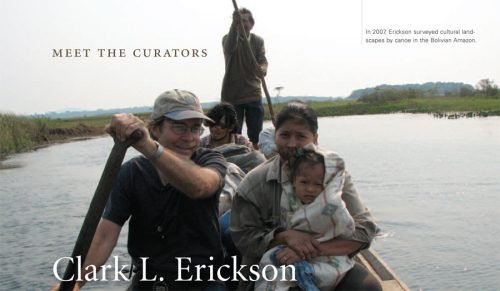
Vol. 50 / No. 2
By: Deborah I. Olszewski
Clark L. Erickson: Meet the Curators
Growing up surrounded by his mother’s books and framed travel photos of archaeological sites and places such as Lebanon, Egypt, […]
View Article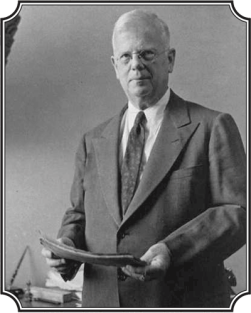
Vol. 50 / No. 2
By: Gregory L. Possehl
W. Norman Brown – Americans Excavating in British India: Research Notes
A scholar with many interests, including the archaeology of the Indian subcontinent, University of Pennsylvania Professor W. Norman Brown (1892–1975) […]
View Article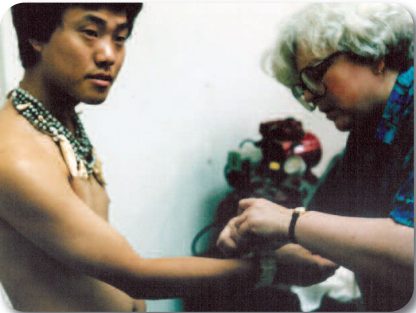
Vol. 50 / No. 2
By: Lynn Grant
Virginia Greene: Conservation Notes
Virginia Greene, the Museum’s Senior Conservator, retired this year after an illustrious career at the University of Pennsylvania Museum of […]
View Article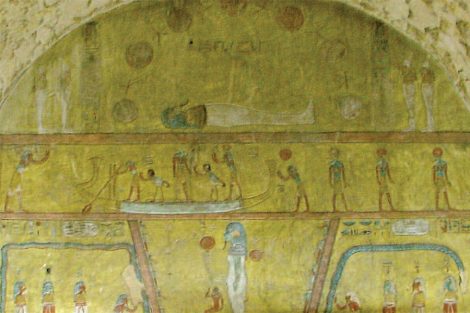
Vol. 50 / No. 2
By: Joshua Roberson
The Rebirth of the Sun: Mortuary Art and Architecture in the Royal Tombs of New Kingdom Egypt
Images and texts found in ancient Egyptian burials present a highly complex vision of the afterlife. In particular, the specialized […]
View Article
Vol. 50 / No. 3
By: Richard Hodges
Fifty Years On: From the Director
Fifty years ago, when Expedition was launched in 1958, globalization was a dream as the world enjoyed an era of […]
View Article
Vol. 50 / No. 3
By: Alex Pezzati and James R. Mathieu
Is Your Mind Ready for Adventure?: From the Archives
“EXPEDITION—for the adventurous mind. If you’re puzzled about man’s fate, about his potential for greatness or failure in this sometimes […]
View Article
Vol. 50 / No. 3
By: Stephen J. Tinney
From Clay to Computers: The Genesis of the Electronic Pennsylvania Sumerian Dictionary
Almost 4,000 years ago, a young scribe sat in a sunny courtyard in the ancient city of Nippur holding a […]
View Article
Vol. 50 / No. 3
By: Emily S. Renschler and Janet Monge
The Samuel George Morton Cranial Collection: Historical Significance and New Research
Update on the Morton collection For updates on the Museum’s work towards the repatriation and burial of the Morton Collection, […]
View Article
Vol. 50 / No. 3
By: Harold L. Dibble, Shannon P. McPherron, Deborah I. Olszewski, Jennifer R. Smith, Utsav Schurmans and Laurent Chiotti
Prehistoric Abydos: Africa's Gateway to the World
Most Expedition readers will be familiar with the Museum’s longstanding Egyptian research project at Abydos, which focuses on Abydos’s ancient […]
View Article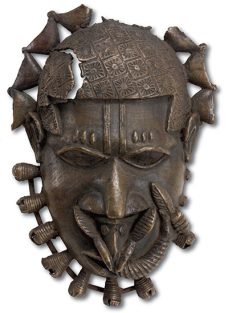
Vol. 50 / No. 3
By: Kathy Curnow
Splendor and Tension in Benin’s Palace Theatre: Exhibit Notes
“The closer you get to Benin City, the further away it is.” This Edo proverb speaks to the complexity of […]
View Article
Vol. 50 / No. 3
By: Jennifer Houser Wegner
Penn Museum’s Youngest Egyptologist Alexander Wegner: Field Experience
Fans of Elizabeth Peter’s Amelia Peabody novels, which are set in late-19th century Egypt, might be familiar with a husband […]
View Article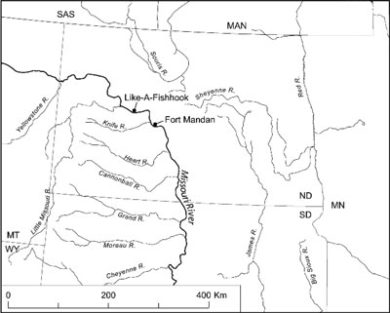
Vol. 50 / No. 3
By: Mark D. Mitchell
A Unique Northern Plains Ceramic Vessel in the Museum’s Lewis and Clark Collection: What in the World
Even well-known artifacts can yield surprising new discoveries. Scholars have long believed that fragments of pottery in the Penn Museum’s […]
View Article
Vol. 50 / No. 3
By: Janet Monge
The Morton Collection and NAGPRA
Update on the Morton collection For updates on the Museum’s work towards the repatriation and burial of the Morton Collection, […]
View Article
Vol. 50 / No. 3
By: Janet Monge
ORSA: The Open Research Scan Archive
Update on the Morton collection For updates on the Museum’s work towards the repatriation and reburial of the Morton Collection, […]
View Article
Vol. 50 / No. 3
By: Emily S. Renschler
A Historical Osteobiography of the African Crania in the Morton Collection
Update on the Morton collection For updates on the Museum’s work towards the repatriation and burial of the Morton Collection, […]
View Article
Vol. 50 / No. 3
By: James R. Mathieu
From the Editor – Winter 2008
Welcome to the 50th anniversary issue of Expedition—originally launched in the fall of 1958! This commemorative issue looks back on Expedition’s […]
View Article
Vol. 50 / No. 3
By: Deborah I. Olszewski
Nancy S. Steinhardt, Curator of Chinese Art, Asian Section: Meet the Curators
Penn museum’s curator of Chinese Art in the Asian Section, Nancy S. Steinhardt, began studying Chinese while attending the Mark […]
View Article
Vol. 51 / No. 1
By: Richard Hodges
From the Director – Spring 2009: A New Position To Help Define A New Age
The dramatic global economic crisis could have a major impact on the public’s perception and value of the Penn Museum. […]
View Article
Vol. 51 / No. 1
By: Allen J. Christenson
The Popol Vuh
“These books were seen by our clergy, and even I saw part of those which were burned by the monks, […]
View ArticleVol. 51 / No. 1
By: Eleanor M. King
From Mules to Lasers: Maya Fieldwork Over the Years: Field Experience
IN MORLEYANA—The affectionate posthumous tribute to noted Mayanist S. G. Morley—friends reminisced about his days in the field, recalling mule […]
View Article
Vol. 51 / No. 1
By: Sarah Kurnick
Crossing Boundaries: Maya Censers from the Guatemala Highlands
The ancient Maya universe consists of three realms—the earth, the sky, and the Underworld. Rather than three distinct domains, these […]
View ArticleVol. 51 / No. 1
By: Elin C. Danien
Painted Metaphors: Politics and Pottery of the Ancient Maya
Pottery and Politics of the Ancient Maya features a unique collection of Maya artifacts, including the Chama polychrome ceramic cylinders, […]
View Article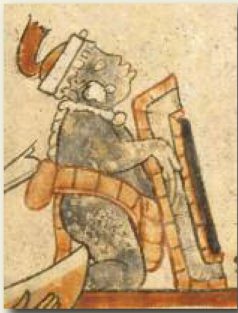
Vol. 51 / No. 1
By: Judith A. Storniolo
Out of the Past and Into the Night: Ancient Mythical Dwarfs in Modern Yucatan
In his book, The Maya’s Own Words, Thomas Ballantine Irving translates a passage in the Popol Vuh, the creation myth […]
View Article
Vol. 51 / No. 1
By: Allan Meyers
Bullfights in Mayaland: How Rural Yucatecans Reinvented "Death in the Afternoon"
The “lover of the bullfight,” Ernest Hemingway once observed, is “one who has this sense of the tragedy and ritual […]
View Article
Vol. 51 / No. 1
By: Allen J. Christenson
“Who Shall be Our Sustainer?”: Sacred Myth and the Spoken Word
Nearly all contemporary highland Maya ceremonies and mythic tales focus on creation, or how things first came to be. How […]
View Article
Vol. 51 / No. 1
By: Elin C. Danien
Maya Home and Hearth: From the Archives
Robert Burkitt, who was Penn Museum’s “man in Guatemala” from 1912 to 1937, had an insatiable curiosity bout all […]
View Article
Vol. 51 / No. 1
By: Deborah I. Olszewski
Robert J. Sharer: Meet the Curators
Robert J. Sharer, Curator-in-Charge of the Museum’s American Section, became interested in archaeology as an undergraduate when he took a […]
View Article
Vol. 51 / No. 1
By: Elin C. Danien
Mirroring the Maya: From the Guest Editor
Not too long ago the Maya were thought of as an enigmatic people who had inhabited a large portion of […]
View Article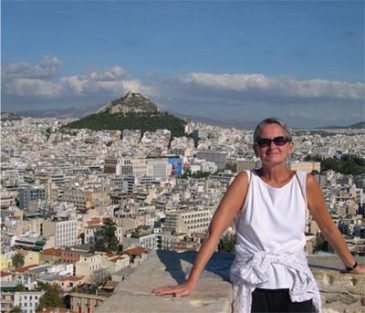
Vol. 51 / No. 2
By: Jane Hickman
From the Editor – Summer 2009
For well over a century, the Penn Museum has sponsored archaeological excavations throughout the world, from Mesopotamia to Thailand to […]
View Article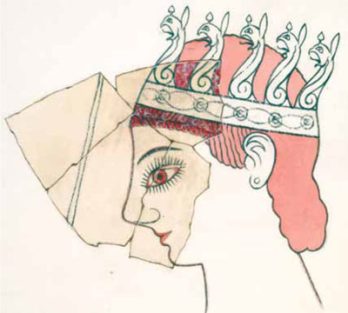
Vol. 51 / No. 2
By: Ann Blair Brownlee
His Golden Touch: The Gordion Drawings of Piet de Jong
In 1957, the renowned archaeological illustrator, Piet de Jong (1887–1967), made his way to Gordion. Well known for his work […]
View Article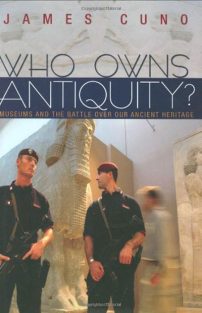
Vol. 51 / No. 2
By: Praveena Gullapalli
Who Owns Antiquity?: Book News & Reviews
Who Owns Antiquity? Museums and the Battle over Our Ancient Heritage by James Cuno (Princeton, NJ: Princeton University Press, 2008). […]
View Article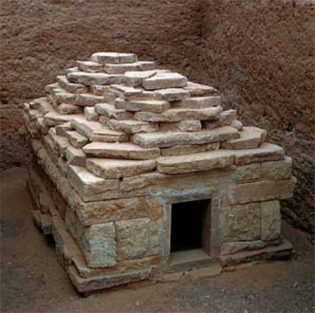
Vol. 51 / No. 2
By: Gareth Darbyshire and Gabriel H. Pizzorno
Gordion in History
According to ancient writers, Gordion is the place where, in 334/3 BCE, Alexander the Great cut the famous Gordian Knot […]
View Article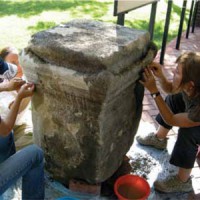
Vol. 51 / No. 2
By: Gareth Darbyshire, Kenneth W. Harl and Andrew L. Goldman
To the Victory of Caracalla: New Roman Altars at Gordion
Ask any archaeologist whether chance finds are a crucial source of information and the answer you will receive—if he or […]
View Article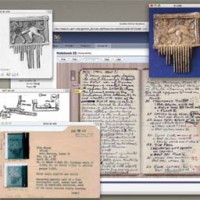
Vol. 51 / No. 2
By: Gareth Darbyshire and Gabriel H. Pizzorno
Building Digital Gordion: Coping with the Past in the 21st Century
Ever since the Penn Museum began excavations there in 1950, Gordion has remained a key site for the archaeology of […]
View Article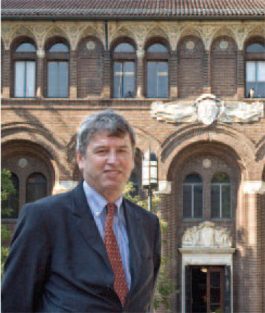
Vol. 51 / No. 2
By: Richard Hodges
King Midas and Rodney Young: From the Director
When Rodney Young opted to excavate at Gordion in modern Turkey, he must have hoped he would have the Midas […]
View Article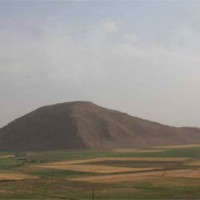
Vol. 51 / No. 2
By: Deborah I. Olszewski
Lauren Ristvet: Meet the Curators
Lauren Ristvet, the Robert H. Dyson, Jr. Assistant Curator in the Museum’s Near East Section, became interested in archaeology while […]
View Article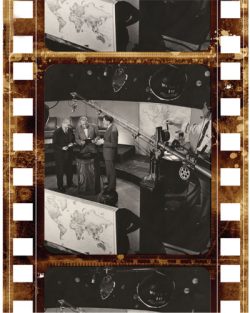
Vol. 51 / No. 2
By: Alessandro Pezzati
Now a Major Motion Picture: Penn Museum’s Film Collection is Online: From the Archives
The pervasiveness of moving images in human communication today is indisputable. Film and video fill our theater, television, and computer screens. […]
View Article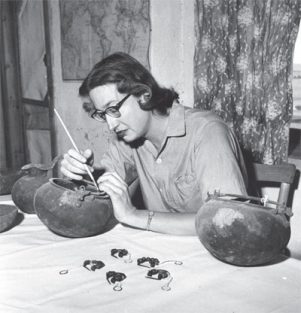
Vol. 51 / No. 2
By: Gareth Darbyshire
Ellen L. Kohler: Portrait
At Gordion I was told that, if ever I managed to visit the Gordion Archive in the Penn Museum, it […]
View Article
Vol. 51 / No. 3
By: Margaret R. Spencer
Meet the Associate Deputy Director – Loa P. Traxler: Andrew W. Mellon Associate Deputy Director
In June 2009, Loa P. Traxler was named the Andrew W. Mellon Associate Deputy Director of the University of Pennsylvania […]
View Article
Vol. 51 / No. 3
By: James G. Schryver
Unraveling Butrint: Putting Together a City’s History by Studying Its Walls
Puzzles and Pieces “You like a good puzzle, don’t you?” These were the words with which Richard Hodges, the Scientific […]
View Article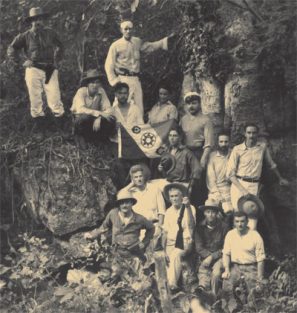
Vol. 51 / No. 3
By: Alessandro Pezzati and Darien Sutton
The Present Meets the Past: Edith and Sasha Siemel: From the Archives
People we had known only from old photographs and letters suddenly came to life with Edith Siemel’s visit to the […]
View Article
Vol. 51 / No. 3
By: Richard Hodges
Nikita Khrushchev’s Visit to Butrint: May 1959
Enver Hoxha’s post-war communist regime in Albania had close ties with Stalin’s Soviet Union. Even young Albanian archaeologists were trained […]
View Article
Vol. 51 / No. 3
By: Richard Hodges and Nevila Molla
Decoding Butrint’s Fortifications: Excavations and Surveys, 2005-2009
The painter Edward Lear, visiting Butrint in 1857, was evidently fascinated by its powerful fortifications. Unlike previous visitors, drawn here […]
View Article
Vol. 51 / No. 3
By: Jane Hickman
From the Editor – Winter 2009
The Winter issue of Expedition begins with a special section on Butrint, an archaeological site and national park located on […]
View Article
Vol. 51 / No. 3
By: Teagan Schweitzer
The Turtles of Philadelphia’s Culinary Past: An Historical and Zooarchaeological Approach to the Study of Turtle-based Foods in the City of Brotherly Love ca. 1750 –1850
“Oh! That turtle soup! How it sticks to the ribs and how it leaves a taste in the mouth that […]
View Article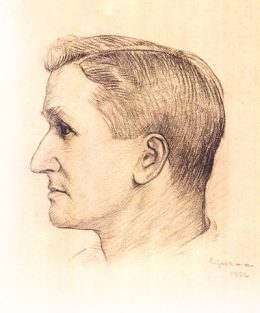
Vol. 51 / No. 3
By: James G. Schryver
Ugolini’s Presentation of Butrint to the Italian Public: Exploration, Poetics, and Politics
For those interested in past civilizations, archaeological sites have a special value based on the physical connection that they provide […]
View Article
Vol. 51 / No. 3
By: Richard Hodges
Creating a Sustainable Butrint: From the Director
Archaeologists make places. Butrint was largely unknown when Luigi Maria Ugolini set out, in 1928, to discover if it really […]
View Article
Vol. 51 / No. 3
By: Kathleen Ryan, Williams Fitts, Mulu Muia, Nina Johnson and Hannah Lau
Tracking East African Cattle Herders from Prehistory to the Present
The herding of domesticated animals permits food production to be extended into many areas of the world too arid for […]
View Article
Vol. 52 / No. 1
By: Teresa P. Raczek and Namita S. Sugandhi
In the Heart of the Village: Exploring Archaeological Remains in Chatrikhera Village, Rajasthan, India
It was a sweltering day in June of 2009. We were walking in the sun, striving to finish our survey […]
View Article
Vol. 52 / No. 1
By: Teresa P. Raczek and Namita S. Sugandhi
Time Periods in Southeastern Rajasthan
The Mewar Plain has been occupied since the Paleolithic; as a result, sites of various time periods can be found […]
View ArticleVol. 52 / No. 1
By: Carol Hendrickson
Ethno-Graphics: Keeping Visual Field Notes in Vietnam
It was five thirty in the morning on my second day in Vietnam. Propelled by jet lag and an interest […]
View Article
Vol. 52 / No. 1
By: Richard Hodges
Off the Beaten Path in England and Spain: Book News & Reviews
The Isle of Thanet from Prehistory to the Norman Conquest by Gerald Moody (Stroud: Tempus, 2008). 188 pp., 103 illus., cloth, […]
View Article
Vol. 52 / No. 1
By: Ayşe Gursan-Salzmann and Evin H. Erder
A Conservation Management Plan for Preserving Gordion and Its Environs: Field Notes
In 1950 a Penn Museum team under Rodney Young’s direction began excavations at the site of Gordion in central Turkey, […]
View Article
Vol. 52 / No. 1
By: Robert Sharer
Remembering Bill Coe (1926-2009): Portrait
Dr. William R. Coe, Curator Emeritus of the American Section and Professor Emeritus in the Anthropology Department, was something of […]
View Article
Vol. 52 / No. 1
By: Jane Hickman
From the Editor – Spring 2010
The spring 2010 issue of Expedition takes you from Greece to India to Vietnam. Our first feature describes an on-going […]
View Article
Vol. 52 / No. 1
By: David Gilman Romano and Mary E. Voyatzis
Excavating at the Birthplace of Zeus: The Mt. Lykaion Excavation and Survey Project
In the 3rd century BCE, the Greek poet Callimachus wrote a Hymn to Zeus asking the ancient and most powerful […]
View Article
Vol. 52 / No. 1
By: Richard Hodges
Birthe Kjølbye-Biddle, 15 July 1941–16 January 2010: From the Director
The recent deaths of Birthe Kjølbye-Biddle and William R. Coe have robbed the Museum of two of its most distinguished […]
View Article
Vol. 52 / No. 1
By: Gregory L. Possehl
Ernest J. H. Mackay and the Penn Museum: Research Notes
In 2008, I published an article in Expedition on Penn’s first professor of Sanskrit, W. Norman Brown (1892–1975), and his […]
View Article
Vol. 52 / No. 2
By: Elizabeth Hamilton
Penn Museum in Laos: Penn Museum in Laos
The Middle Mekong Archaeological Project (MMAP), a pioneering archaeological project led by Penn Museum staff member Dr. Joyce White, wrapped […]
View ArticleVol. 52 / No. 2
By: Marinus Anthony Van Der Sluijs and Anthony L. Peratt
Astronomical Petroglyphs: Searching For Rock Art Evidence for an Ancient Super Aurora
For tens of thousands of years, humans have expressed themselves artistically on their surroundings—painting, etching, carving, and molding designs, decorations, […]
View Article
Vol. 52 / No. 2
By: Robert G. Ousterhout
Archaeologists and Travelers in Ottoman Lands: Three Intersecting Lives
2010 marks the centennial of the deaths of two notable individuals and the demise of a career for a third. […]
View ArticleVol. 52 / No. 2
By: Marinus Anthony Van Der Sluijs and Anthony L. Peratt
Stickman: Excerpt from Astronomical Petroglyphs
The so-called “Stickman” is the world’s most prevalent petroglyph. Found everywhere, the stickman can be carved as a stick-like figure […]
View Article
Vol. 52 / No. 2
By: Richard Hodges
Introducing Penn Undergraduates to Archaeology: From the Director
Penn Museum has launched a new expedition. Explicitly for undergraduates of the University, it is a summer school based in […]
View Article
Vol. 52 / No. 2
By: Alessandro Pezzati
The Pennsylvania Declaration: From the Archives
Forty years have passed since Penn Museum Director Froelich Rainey presented the famous Pennsylvania Declaration, giving our Museum the distinction […]
View Article
Vol. 52 / No. 2
By: Heather Hughes
A Hidden Gem at the Penn Museum: What in the World
Thanks to the voracious collecting habits of Maxwell Sommerville (1829–1904), the Penn Museum boasts an impressive collection of engraved gems. The former […]
View Article
Vol. 52 / No. 2
By: Thanik Lertcharnrit
An Early Ivory Bracelet from Central Thailand: From the Field
A piece of an ancient ivory bracelet was recently discovered during the fourth excavation season at the Late Prehistoric/ Early Historic […]
View ArticleVol. 52 / No. 2
By: Erin Jensen and Jennifer Reifsteck
Summer in the City: Around the Museum
Squeals of laughter fill the air. Campers swarm their counselors asking them to sign their t-shirts. Art projects are taken […]
View Article
Vol. 52 / No. 2
By: Jane Kauer
The World of Soy: Book News & Reviews
The World of Soy edited by Christine M. Du Bois, Chee-Beng Tan, and Sidney Mintz (Champaign, IL: University of Illinois Press, […]
View Article
Vol. 52 / No. 2
By: Jane Hickman
From the Editor – Summer 2010
The Curatorial faculty of The University Museum today reached the unanimous conclusion that they would purchase no more art objects […]
View Article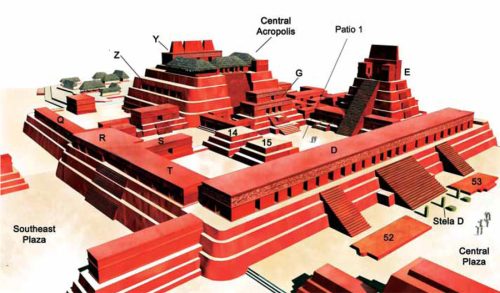
Vol. 52 / No. 2
By: Jarosław Zrałka and Wiesław Koszkul
New Discoveries about the Ancient Maya: Excavations at Nakum, Guatemala
Deep in the jungle of northeastern Guatemala, in the Department of the Petén, lies a Maya site that has only […]
View Article
Vol. 52 / No. 3
By: Victor H. Mair
The Mummies of East Central Asia
In 1988, while visiting the Ürümqi Museum in China, I came upon an exhibition which changed the course of my […]
View Article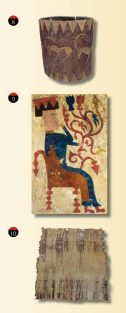
Vol. 52 / No. 3
By: Angela Sheng
Textiles from the Silk Road: Intercultural Exchanges among Nomads, Traders, and Agriculturalists
Silk was one of the most luxurious commodities traded along the many routes of the Silk Road. But one should […]
View Article
Vol. 52 / No. 3
By: J. P. Mallory
Bronze Age Languages of the Tarim Basin
The earliest accounts of the Tarim Basin depict a society whose linguistic and ethnic diversity rivals the type of complexity […]
View Article
Vol. 52 / No. 3
By: Jane Hickman
From the Editor – Winter 2010
Travel the Silk Road with the Penn Museum in this special expanded edition of Expedition magazine. This issue was created […]
View Article
Vol. 52 / No. 3
By: Richard Hodges
Extraordinary Discoveries along the Silk Road: From the Director
Looking back over the last half-century as archaeology has become more scientific, there have been paradoxically few truly great discoveries. […]
View Article
Vol. 52 / No. 3
By: Donald White
Dr. Elfriede R. (Kezia) Knauer: 3 July 1926– 7 June 2010 - Portrait
Penn Museum has lost a highly regarded authority on the Silk Road just months before the appearance of this special […]
View Article
Vol. 52 / No. 3
By: E. N. Anderson
Ancient and Modern Foods from the Tarim Basin: What in the World?
Walking through the exhibition Secrets of the Silk Road, one is amazed at the well-preserved mummies and colorful textiles. But […]
View Article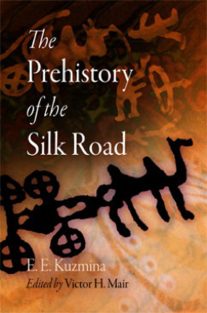
Vol. 52 / No. 3
By: Mandy Chan
Before the Silk Road: Book News & Reviews
The Prehistory of the Silk Road by E. E. Kuzmina. Victor H. Mair, ed. (Philadelphia, PA: University of Pennsylvania Press, 2007). […]
View Article
Vol. 52 / No. 3
By: Nancy Shatzman Steinhardt
The Luohan that Came from Afar: Research Notes
Among the myriad objects of world art, there are always some that continue to captivate the viewer and haunt the […]
View Article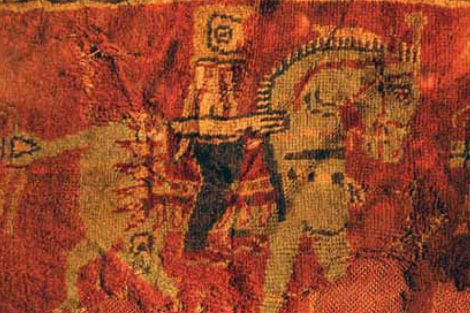
Vol. 52 / No. 3
By: Daniel C. Waugh
The Silk Roads in History
There is an endless popular fascination with the “Silk Roads,” the historic routes of economic and cultural exchange across Eurasia. […]
View Article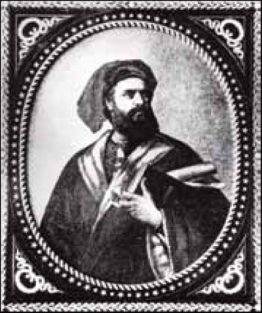
Vol. 52 / No. 3
By: Daniel C. Waugh
Marco Polo’s Travels: Myth or Fact?
In his own lifetime and even today, Marco Polo’s account of his travels has been branded a falsification. A late […]
View Article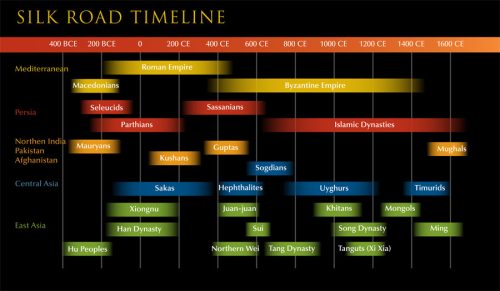
Vol. 52 / No. 3
By: Daniel C. Waugh
The Silk Road – Chronology of Selected Travelers
136–125, 119–115 BCE. Zhang Qian, emissary sent by Han Dynasty Emperor Wu Di to the “Western Regions,” who supplied important […]
View Article
Vol. 53 / No. 1
By: Jane Hickman
From the Editor – Spring 2011
Over the last several decades, Afghanistan has suffered from invasion, revolution, and civil war. Although we frequently read about the […]
View ArticleVol. 53 / No. 1
By: Lucy Fowler Williams
Guerilla Fashion: Textiles in Motion Push Change in Indian Art: From the Field
Patricia Michaels is not new to fashion, but she is new to Santa Fe’s celebrated Southwest Indian Art Market, a […]
View Article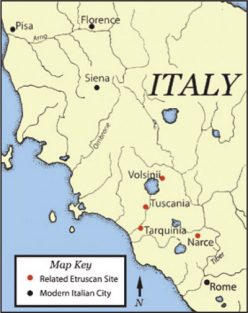
Vol. 53 / No. 1
By: Jean MacIntosh Turfa
Telmu and Petrui: A Rediscovered Romance?: What in the World?
Some rare evidence for social change in ancient Etruria reposes in the Penn Museum’s Mediterranean Section, in two large ovoid […]
View Article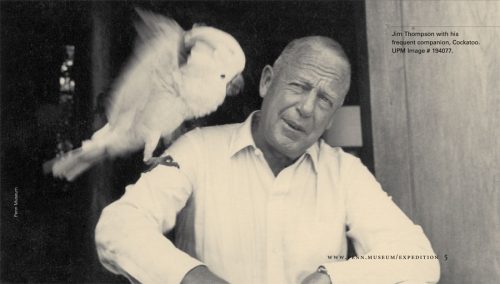
Vol. 53 / No. 1
By: Alessandro Pezzati
Jim Thompson, the Thai Silk King: From the Archive
Younger generations may not know Jim Thompson (1906-1967?), but in the 1950s and 1960s he was famous throughout the world […]
View Article
Vol. 53 / No. 1
By: Richard Hodges
Penn Museum and Afghanistan: From the Director
Penn Museum has long had a part in revealing Afghan archaeological history. In 1953, at Director Froelich Rainey’s instigation, Rodney […]
View ArticleVol. 53 / No. 1
By: Brian Spooner
Afghan Wars, Oriental Carpets, and Globalization
The Afghan war rugs on exhibit at the Penn Museum from April 30 to July 31, 2011, raise a number […]
View Article
Vol. 53 / No. 1
By: Brian Spooner
Afghanistan’s War Experience
Afghanistan entered history in 1747. Nadir Shah, the Iranian ruler of the region, had been assassinated in Meshed (now northeastern […]
View ArticleVol. 53 / No. 1
By: Frank G. Matero and C. Brian Rose
Resurrecting Gordion: Preserving Turkey’s Phrygian Capital
Archaeology and heritage conservation have become important partners in the excavation, preservation, and display of archaeological sites around the world. […]
View ArticleVol. 53 / No. 1
By: Stefano Campana, Michelle Hobart and Richard Hodges
In Search of San Pietro d’Asso
The Via Cassia was one of the main arteries connecting Rome to its northwest provinces. It crossed the rolling hills […]
View Article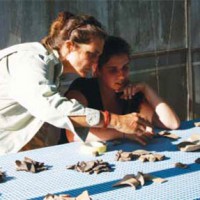
Vol. 53 / No. 1
By: Adrianna de Svastich and Jennifer McAuley
A Month in Montalcino
Led by Richard Hodges, Stefano Campana, and Michelle Hobart, 14 undergraduates joined the excavations at San Pietro d’Asso in July […]
View ArticleVol. 53 / No. 1
By: James D. Muhly
Archaeometry and Shipwrecks: A Review Article
From Mine to Microscope: Advances in the Study of Ancient Technology edited by Andrew J. Shortland, Ian C. Freestone, and […]
View Article
Vol. 53 / No. 2
By: Alessandro Pezzati
Looking Back – Minturnae
The city of Minturnae, 50 miles from Naples, was built by the Romans in 295 BC as a fortified commercial […]
View ArticleVol. 53 / No. 2
By: Giovanna Bianchi
The Silver Rush in Tuscany’s Wild West: Medieval Archaeology in the Metal Hills
Tuscany is not only a land of gentle hills and Chianti-bearing vineyards. In the southwest is an area little known […]
View ArticleVol. 53 / No. 2
By: Giovanna Bianchi
The Hungry Archaeologist – Metal Hills
Throughout the Metal Hills, it is easy to find a restaurant where one can enjoy food that is both delicious […]
View Article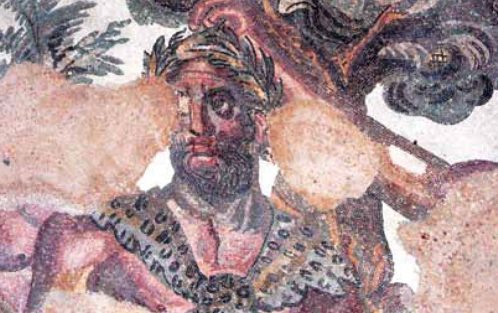
Vol. 53 / No. 2
By: Patrizio Pensabene and Enrico Gallocchio
The Villa del Casale of Piazza Armerina
The Villa del Casale, near Piazza Armerina in south-central Sicily, is arguably one of the best-preserved and best-known Roman villas, […]
View Article
Vol. 53 / No. 2
By: Giuliano Volpe
Rediscovering the Heel: Archaeology and History in Northern Apulia
Daunia, the ancient territory that occupied the modern province of Foggia in northen Puglia, is extraordinarily rich in cultural heritage. […]
View ArticleVol. 53 / No. 2
By: Giuliano Volpe
The Hungry Archaeologist – Daunia
Daunia’s cuisine is like its archaeology, close to the land, and many dishes are based on peasant food that varies […]
View ArticleVol. 53 / No. 2
By: Patrizio Pensabene and Enrico Gallocchio
The Hungry Archaeologist – Piazza Armerina
In Piazza Armerina, one should not miss the many pastry shops, where Sicilian specialties such as cannoli and cassate are […]
View Article
Vol. 53 / No. 2
By: Richard Hodges
Penn Museum and Italy: From the Director
The archaeology of Italy, the bel paese or beautiful country, has long held a deep attraction for archaeologists and members […]
View Article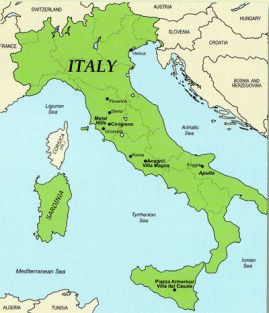
Vol. 53 / No. 2
By: Kim Bowes
Reimagining Ancient Italy: New Directions in Italian Archaeology: From the Guest Editor
In the modern imagination, Italy is a land of rolling vineyards, dramatic coastal vistas, and of course, extraordinary food— infinite […]
View Article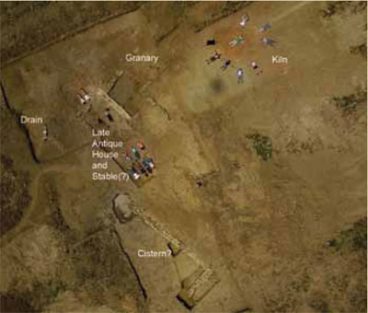
Vol. 53 / No. 2
By: Kim Bowes, Mariaelena Ghisleni, Cam Grey and Emanuele Vaccaro
Excavating the Roman Peasant
We view the Roman world through the eyes of the wealthy—the lettered elite who penned ancient history and literature, and […]
View Article
Vol. 53 / No. 2
By: Elizabeth Fentress, Caroline Goodson and Marco Maiuro
Wine, Slaves, and the Emperor at Villa Magna
Writing to his tutor Fronto in about AD 141, the future emperor Marcus Aurelius describes his stay at the imperial […]
View Article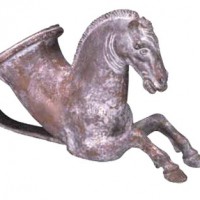
Vol. 53 / No. 3
By: Donald White
A View of the Horse from the Classical Perspective: The Penn Museum Collection
Equus caballus is handsomely stabled in the University of Pennsylvania Museum of Archaeology and Anthropology. From the Chinese Rotunda’s masterpiece […]
View Article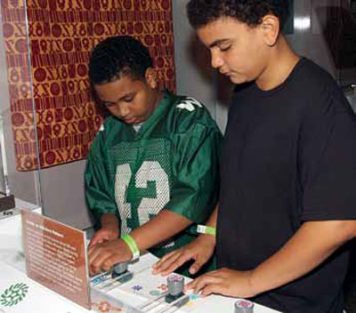
Vol. 53 / No. 3
By: Richard Hodges
Imagine Africa with the Penn Museum: From the Director
Penn museum has been changing, gallery by gallery. The old Museum presented glorious objects in an often dry and uninspiring […]
View Article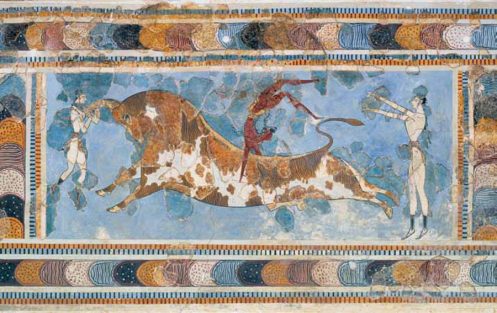
Vol. 53 / No. 3
By: Jeremy McInerney
Bulls and Bull-leaping in the Minoan World
In cretan culture, the bull is everywhere. Horns of consecration adorned the top of Minoan shrines and may have decorated […]
View Article
Vol. 53 / No. 3
By: Jane Hickman
Animals in Antiquity: From the Editor
The winter 2011 issue on animals in antiquity began with a suggestion by Donald White two years ago. White, Curator […]
View Article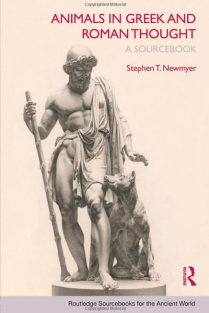
Vol. 53 / No. 3
By: Jacob Morton
Animals and Ethics: Book News & Reviews
Reviewed by Jacob Morton, Ph.D. student in the Graduate Group in Ancient History at the University of Pennsylvania. This valuable book […]
View Article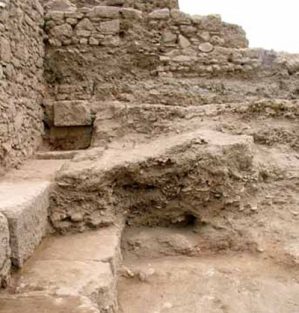
Vol. 53 / No. 3
By: Charles K. Williams, II
The Corinth Excavations of 2011: From the Field
The greek theater of ancient Corinth was reconstructed by the Romans when they re-established the destroyed city as Colonia Laus […]
View Article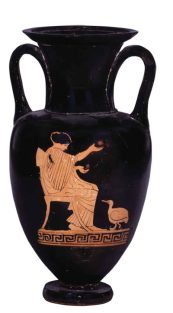
Vol. 53 / No. 3
By: Kenneth Kitchell
Penelope’s Geese: Pets of the Ancient Greeks
Most people are familiar with the strong character of Penelope, who waited at Ithaca while her husband Odysseus was away […]
View Article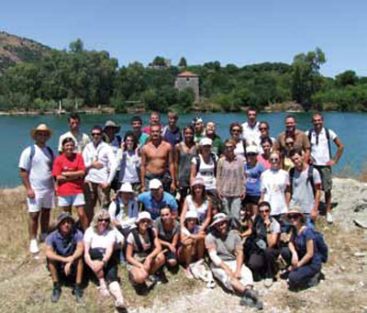
Vol. 53 / No. 3
By: Oliver Gilkes and Valbona Hysa
Butrint, Albania: In the Shadow of Butrint: From the Field
Butrint is a place of contrasts. The main archaeological site with its forum and public buildings—described by Virgil as “Lofty […]
View Article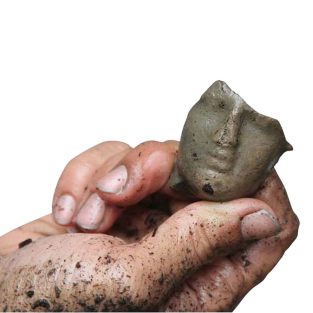
Vol. 53 / No. 3
By: David R. Hernandez
The Refuse of Urban History: Excavating the Roman Forum at Butrint
For at least eight centuries, Roman generals marched in triumphal celebrations through the forum Romanum, the central town square of […]
View Article
Vol. 54 / No. 1
By: Richard Hodges
The Wonders of Copan at the Penn Museum: From the Director
On my visit to Copan last summer to attend a meeting dedicated to the Penn Museum’s MAYA 2012: Lords of […]
View Article
Vol. 54 / No. 1
By: Simon Martin
Maya Calendars: An Overview
To read any Maya date one must first understand their numerical system. Unlike the ten Arabic symbols we use (0, […]
View Article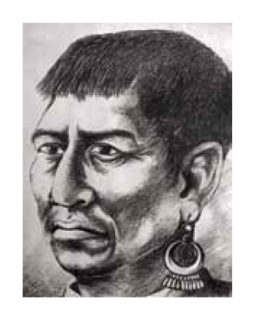
Vol. 54 / No. 1
By: Richard M. Leventhal, Carlos Chan Espinosa and Cristina Coc
The Modern Maya and Recent History
The Maya are generally thought of in relation to their distant past—a past of great cities with towering stone pyramids […]
View Article
Vol. 54 / No. 1
By: Jane Hickman
From the Editor – Spring 2012: Maya 2012: Myth and Reality
Travel through 4,000 years of Mesoamerican history with the Penn Museum in this special expanded edition of Expedition magazine. This […]
View Article
Vol. 54 / No. 1
By: Alessandro Pezzati
The Excavation of the Hieroglyphic Stairway at Copan: From the Archives
The ancient Maya city of Copan is a jewel of a ruin, a beautifully proportioned city situated in a verdant […]
View Article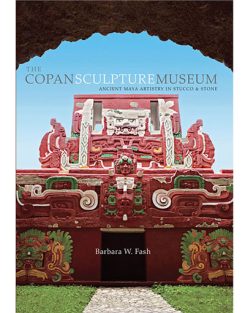
Vol. 54 / No. 1
By: Sarah Kurnick
Bringing Maya Sculpture to Life: Book News & Reviews
The Copan Sculpture Museum: Ancient Maya Artistry in Stucco & Stone by Barbara W. Fash (Cambridge: Peabody Museum Press, 2011). […]
View Article
Vol. 54 / No. 1
By: Alessandro Pezzati
Looking Back
Alfred P. Maudslay (1850–1931) was a British explorer credited with the first systematic excavations of Maya ruins. Between 1881 and 1894 […]
View Article
Vol. 54 / No. 1
By: Robert Sharer
Time of Kings and Queens
The origins of maya kings can be traced back to the Middle Preclassic period (ca. 1000–500 BCE). Archaeology reveals the […]
View Article
Vol. 54 / No. 1
By: Anthony F. Aveni
Why Maya 2012 Fascinates Us
Apocalyptic ideas have always been popular in the United States. We have long conceived of our country as the land […]
View Article
Vol. 54 / No. 1
By: Loa Traxler
Time Beyond Kings
Profound changes within maya society ended the time of kings. Traditionally, kings monopolized the political, economic, and religious power within […]
View Article
Vol. 54 / No. 1
By: Robert Sharer
Who Were the Maya?
The ancient Maya created one of the world’s most brilliant and successful civilizations. But 500 years ago, after the Spaniards […]
View Article
Vol. 54 / No. 1
By: Loa Traxler
2012 and Beyond
Did the Maya Predict an Apocalypse in 2012? In a Word: No. With clear evidence to the contrary, we return […]
View Article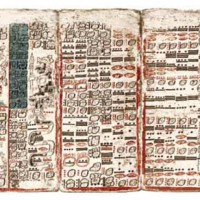
Vol. 54 / No. 1
By: Simon Martin
Time, Kingship, and the Maya Universe Maya Calendars: An Overview
In 1832 constantine Samuel Rafinesque a polymath who made contributions to the fields of botany, zoology, linguistics, meteorology, and geology […]
View Article
Vol. 54 / No. 1
By: Robert Sharer
Copan Altar Q
Altar Q was dedicated by Copan’s 16th ruler, Yax Pasaj Chan Yopaat in 776 CE. The four sides of this […]
View Article
Vol. 54 / No. 2
By: Lucy Fowler-Williams
Louis Shotridge and the Penn Museum
Penn Museum’s first and only indigenous curator was Stuwukáa, also known as Louis Shotridge, a talented and ambitious Tlingit native […]
View Article
Vol. 54 / No. 2
By: Peter D. Harrison
Midden Finds
The most surprising finds in the kitchen garbage dump were fragmented, burned, and gnawed human bones, recovered among burned animal […]
View Article
Vol. 54 / No. 2
By: Lawrence Rosen
A New Look at What in the World?
Sometime in the early 1950s I stumbled upon a strange television show that featured objects emerging from a cloud of […]
View Article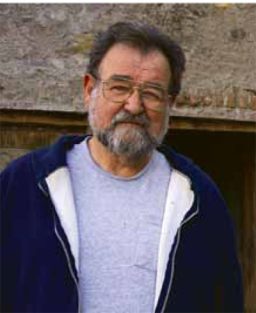
Vol. 54 / No. 2
By: Peter Bogucki and Uzma Z. Rizvi
Greg Possehl: A Portrait
I always knew when Dr. P was in his office at the Penn Museum. His car with the license plate […]
View Article
Vol. 54 / No. 2
By: Peter Cobb
The Father of American Archaeological Photography: Book News & Reviews
John Henry Haynes: A Photographer and Archaeologist in the Ottoman Empire 1881–1900 by Robert G. Ousterhout (Istanbul: Kayık Yayıncılık; Hawick, […]
View Article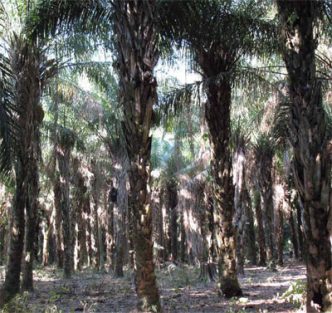
Vol. 54 / No. 2
By: John H. Walker
Hidden Earthworks in the Forests of the Bolivian Amazon
The Andes and the coast of Peru are famous for spectacular places and things: the mountaintop city of Machu Picchu, […]
View Article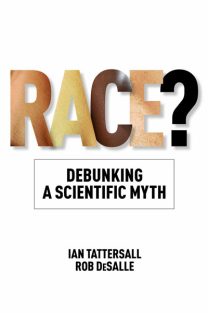
Vol. 54 / No. 2
By: Paul Mitchell
Analyzing Race: Book News & Reviews
Race? Debunking a Scientific Myth by Ian Tattersall and Rob DeSalle (College Station, Texas: Texas A&M University Press, 2011). 256 pp., […]
View Article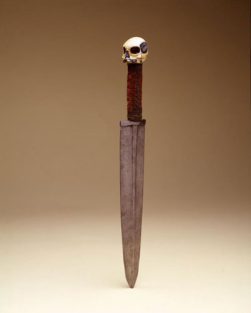
Vol. 54 / No. 2
By: Lucy Fowler Williams
The Ghost of a Courageous Adventurer
Tlingit art holds Tlingit histories and, as Louis Shotridge insisted, the native point of view enables us to understand its […]
View Article
Vol. 54 / No. 2
By: Peter Bogucki, Genevieve Fisher, Ron Hicks, Susan A. Johnston, Tom McCulloch, Bailey Young and Pam Crabtree
Remembering Bernard Wailes: A Portrait
Dr. Bernard Wailes was Associate Professor Emeritus of Anthropology and Associate Curator Emeritus of the Penn Museum’s European Archaeology Section. […]
View Article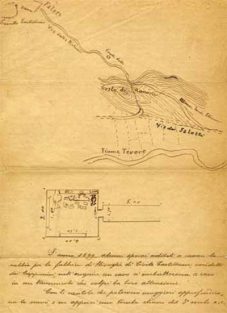
Vol. 54 / No. 2
By: Jean MacIntosh Turfa
Buried in the Height of Fashion: Research Notes
“Lock of hair from the skull of the skeleton” was penned in a bold 19th century hand across the lid […]
View Article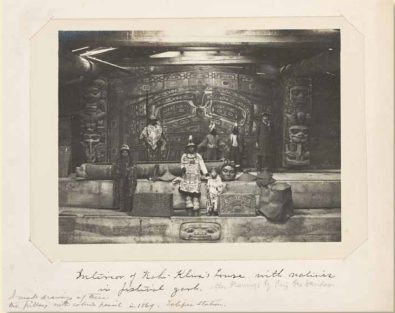
Vol. 54 / No. 2
By: John Cloud
The Tlingit Map of 1869: A Masterwork of Indigenous Cartography
In July 1869, George Davidson of the US Coast Survey and a small party of men climbed into several large […]
View Article
Vol. 54 / No. 2
By: Peter D. Harrison
A Marvel of Maya Engineering: Water Management at Tikal
Maya structures are often described as great feats of engineering. Perhaps no site in the Maya Lowlands illustrates this more […]
View Article
Vol. 54 / No. 3
By: Alessandro Pezzati
Furness in Borneo and East Asia
William Henry Furness III, scion of a notable Philadelphia family that included architect Frank Furness and Shakespearean scholar Horace Howard […]
View Article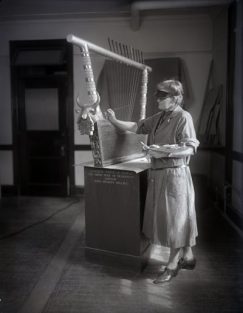
Vol. 54 / No. 3
By: Alessandro Pezzati
The Importance of Conservation at the Museum
In the early years, restoration or reconstruction work was carried out by curators and their assistants, whether it was baking […]
View Article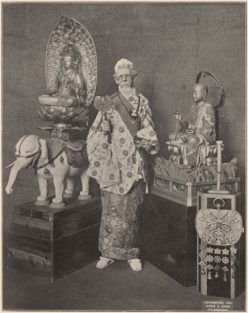
Vol. 54 / No. 3
By: Alessandro Pezzati
The Eccentric Maxwell Sommerville
Maxwell Sommerville (1829–1904) was one of the most colorful characters associated with the early days of the Museum. The first […]
View Article
Vol. 54 / No. 3
By: William Wierzbowski
The Beaver Bowl
This wooden bowl was collected among the Kaskaskia (a sub-group of the Miami people) by George Turner, a judge in […]
View Article
Vol. 54 / No. 3
By: Alessandro Pezzati
The Accidental Mayanist: Tatiana Proskouriakoff
Of all the brilliant minds that have lit up the firmament of ancient Maya studies, there is none that arouses […]
View Article
Vol. 54 / No. 3
By: Alessandro Pezzati
William Farabee, Martyr to Science
William Curtis Farabee (1865–1925) is one of the great forgotten American explorers and anthropologists. He obtained his Ph.D. from Harvard […]
View Article
Vol. 54 / No. 3
By: Alessandro Pezzati
Moroccan Pottery in the African Collection
Talcott Williams, one of the early officers of the Museum, was an editor of the Philadelphia Press for 30 years. […]
View Article
Vol. 54 / No. 3
By: Alessandro Pezzati
Big Game at the Museum
Natural history specimens collected by Arthur Donaldson Smith were on display in 1898 in the University Library, now the Fine […]
View ArticleVol. 54 / No. 3
By: Alessandro Pezzati, Jane Hickman and Alexandra Fleischman
A Brief History of the Penn Museum
The founding of the University of Pennsylvania Museum of Archaeology and Anthropology was part of the great wave of institution-building […]
View Article
Vol. 54 / No. 3
By: Alessandro Pezzati
An Angu Funeral in New Guinea
Born in 1919, Ward Goodenough is a world-renowned linguist and anthropologist, who has studied the connection between language and culture […]
View Article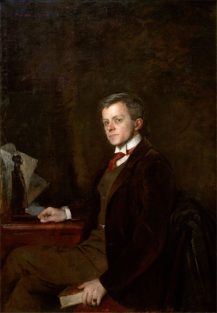
Vol. 54 / No. 3
By: Alessandro Pezzati
Eckley Brinton Coxe, Jr.: Patron Saint of the Museum
His frail body sheltered the spirit of a courteous gentleman of high culture and lovable and gentle character. There are […]
View Article
Vol. 54 / No. 3
By: Alessandro Pezzati
George Byron Gordon and the Chinese Collection
George Byron Gordon (1870–1927) was born of Scottish-English ancestry on Prince Edward Island, Canada. After obtaining his Ph.D. at Harvard, […]
View Article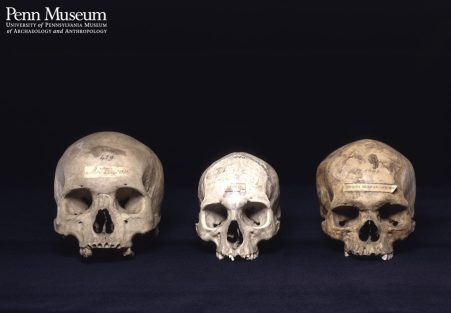
Vol. 54 / No. 3
By: KC Boas
The Curious Cabinet of Dr. Morton
Update on the Morton collection For updates on the Museum’s work towards the repatriation and burial of the Morton Collection, […]
View Article
Vol. 54 / No. 3
By: Alessandro Pezzati
Nippur and Hamdi Bey
The 1889–1900 excavations at Nippur in Mesopotamia led to the founding of the Penn Museum. They were immortalized on canvas […]
View Article
Vol. 54 / No. 3
By: Alessandro Pezzati
The Purchase, Theft, and Recovery of the Crystal Ball
The Chinese crystal sphere, on display in the Harrison Rotunda, has been an iconic object in the Museum since 1927, […]
View Article
Vol. 54 / No. 3
By: Alessandro Pezzati
John Cotter, Archaeologist of Philadelphia
Though based in Philadelphia, the Penn Museum has often neglected the American past to search for places more distant in […]
View Article
Vol. 54 / No. 3
By: Alessandro Pezzati
The Controversial Carleton Coon
Carleton S. Coon (1904–1981) was a Curator and Professor at the University of Pennsylvania until his retirement in 1963. He […]
View Article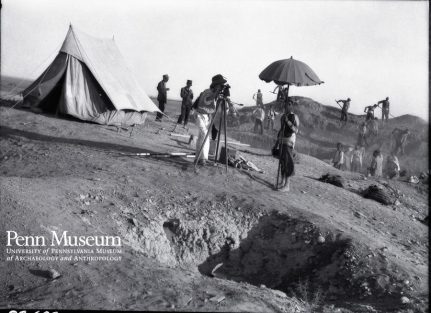
Vol. 54 / No. 3
By: Alessandro Pezzati
Schmidt at Tepe Hissar
In 1931 Museum archaeologists were the first Americans to excavate in Persia (Iran), at the site of Tepe Hissar, under […]
View Article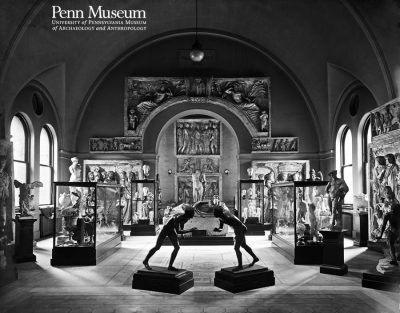
Vol. 54 / No. 3
By: Alessandro Pezzati
Replicas of Famous Monuments of the Past
Reproductions of famous monuments were an important part of the Museum’s educational mission in its early years, before the increasing […]
View Article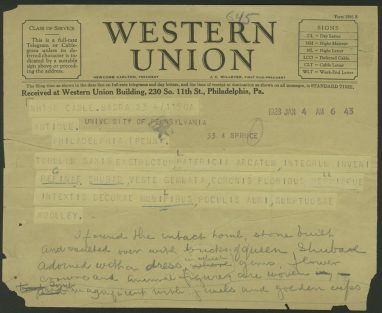
Vol. 54 / No. 3
By: Alessandro Pezzati
A Telegram of Discovery from Ur
On January 4, 1928, the Museum received a telegram from Leonard Woolley announcing his great find of the tomb of […]
View Article
Vol. 54 / No. 3
By: Jennifer H. Wegner
The Granite Sphinx of Ramesses II
Excavated by W. M. Flinders Petrie in 1913 near the Ptah Temple at Memphis, the Penn Museum’s twelve-ton sphinx is […]
View Article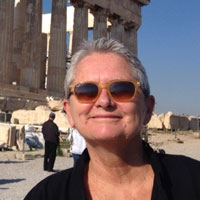
Vol. 54 / No. 3
By: Jane Hickman
Every Picture Tells a Story: From the Editor
When I began editing Expedition almost four years ago, I was unaware of the many wonderful stories associated with those […]
View Article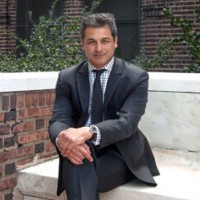
Vol. 54 / No. 3
By: Julian Siggers
The Adventure Continues: From the Director
A major anniversary is a wonderful reason for an institution to reflect on the people, events, and achievements that have […]
View Article
Vol. 54 / No. 3
By: Alexandra Fleischman
Women Archaeologists in the Early Days of the Museum
A portrait of Sara Yorke Stevenson (1847–1921) hangs in the Penn Museum Archives, a tribute to this dynamic woman’s crucial […]
View Article
Vol. 55 / No. 1
By: Daira Nocera
The Round Church at Beth Shean
A visitor to the Penn Museum may fail to notice two orphaned Corinthian columns tucked away in the Egypt (Sphinx) […]
View Article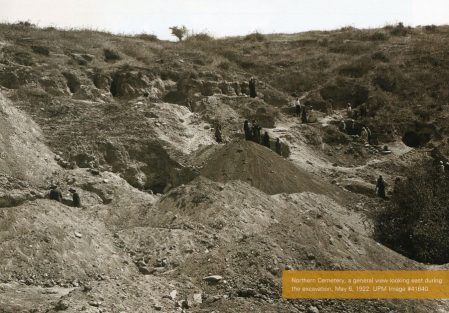
Vol. 55 / No. 1
By: Emerson Avery
Life and Death at Beth Shean
Objects associated with daily life also found their way into the tombs, either as offerings to the deceased, implements for […]
View Article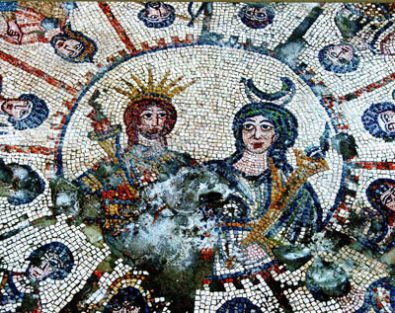
Vol. 55 / No. 1
By: Gabriel Mazor
The Visits of St. Sabas to Beth Shean
What did Beth Shean look like in Late Antiquity? We have a much more complete image of the city following […]
View Article
Vol. 55 / No. 1
By: Robert Ousterhout
From the Guest Editor – What Lies Beneath
I like to compare the Penn Museum to an iceberg. What you see in the galleries is merely the tip, […]
View Article
Vol. 55 / No. 1
By: Jordan Pickett
Contextualizing Penn’s Excavations at Beth Shean: (1921–1933)
When the dust had cleared from the devastation of World War I, the San Remo Conference of 1920 divided he […]
View Article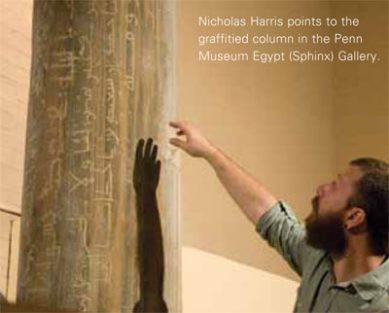
Vol. 55 / No. 1
By: Nicholas Harris
Beth Shean Columns in Lower Egypt
The marble columns, majestic in their own right, contain a further curiosity: they are criss-crossed with Arabic and Hebrew graffiti. […]
View Article
Vol. 55 / No. 1
By: Geoffrey Shamos
New Light on Daily Life at Beth Shean
The Roman city of Scythopolis extended to the south of the tell, with broad colonnaded streets and large public buildings, […]
View Article
Vol. 55 / No. 1
By: Robert Ousterhout
Beth Shean Revisited: Reexamining a Late Antique City in Transition
Beth Shean (“house of ease”), ancient NysaScythopolis, sits on an important crossroads in the Galilee and is watered by abundant […]
View Article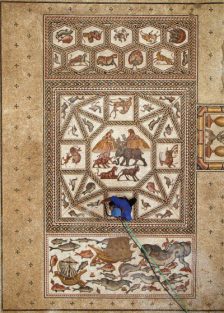
Vol. 55 / No. 1
By: Rina Talgam
Unearthing a Masterpiece – A Roman Mosaic from Lod Israel: Now in the Galleries
The renowned Lod Mosaic, excavated in 2009, is on exhibit at the Penn Museum through May 12, 2013. This is […]
View Article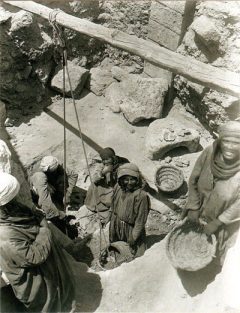
Vol. 55 / No. 1
By: Jordan Pickett
Domestic Devotions in Late Antique Beth Shean
A variety of objects found in the residential quarter testify to the expression of the Christian religious identity of the […]
View Article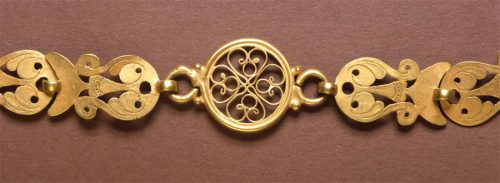
Vol. 55 / No. 1
By: Jane Hickman
Treasure Beneath the Floor
Although the Monastery of Lady Mary is best known for its fine mosaics, another discovery awaited Fitzgerald’s team as they […]
View Article
Vol. 55 / No. 1
By: Julian Siggers
From the Director – Crossroads of History: Beth Shean, Israel
My first glimpse of Beth Shean occurred in the 1990s. I was a graduate student at the University of Toronto […]
View ArticleVol. 55 / No. 2
By: Richard Hodges
Rodney Young, his noblesse oblige, and the OSS in Greece
Classical Spies: America n Archaeologists with the OSS in World War II Greece by Susan Heuck Allen (Ann Arbor: University […]
View Article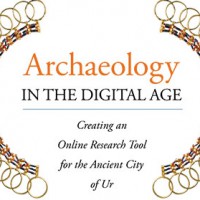
Vol. 55 / No. 2
By: W. B. Hafford
Archaeology in the Digital Age: Creating an Online Research Tool for the Ancient City of Ur
One of the first true cities in the world and probably the site described in the Bible as the home […]
View Article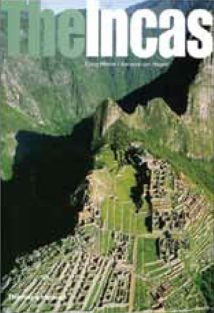
Vol. 55 / No. 2
By: Thomas J. Hardy
An Introduction to the Inca Empire
The Incas by Craig Morris and Adriana von Hagan (New York: Thames & Hudson Inc., 2012). 256 pp., 189 illustrations […]
View Article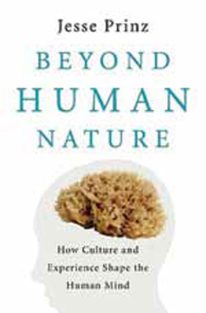
Vol. 55 / No. 2
By: Paul Mitchell
Nature or Nurture?
Beyond Human Nature: How Culture and Experience Shape the Human Mind by Jesse Prinz (New York: Norton, 2012). 416 pp., […]
View Article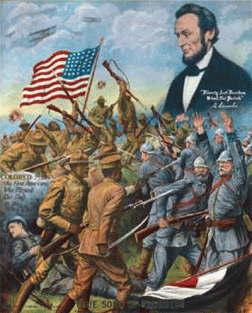
Vol. 55 / No. 2
By: Tukufu Zuberi
Art During Wartime: Recruitment of Black Soldiers from the U.S. Civil War through African Independence Movements
Military posters are designed to be highly visible in public spaces. They become iconic images for those who remember wars […]
View Article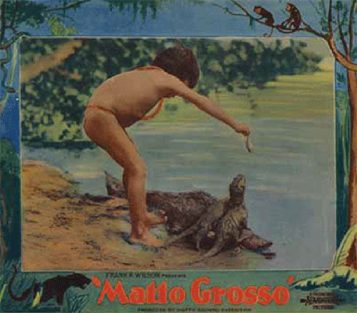
Vol. 55 / No. 2
By: Kate R. Pourshariati
Expedition to the Amazon: The First Documentary Film with Sound
For almost 80 years, the 49-minute film Matto Grosso: The Great Brazilian Wilderness lay in the Penn Museum Archives, waiting […]
View Article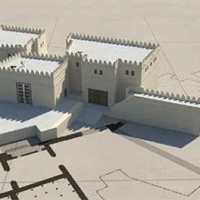
Vol. 55 / No. 2
By: Gareth Darbyshire and Gabriel H. Pizzorno
Taming the Beast: The Digital Gordion Mapping Project
Gordion, in central Turkey, is the largest and longest-running of the Penn Museum’s many excavation projects. An ancient site of […]
View Article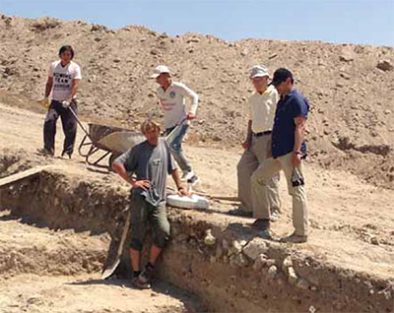
Vol. 55 / No. 2
By: Julian Siggers
Telling the Human Story: From the Director
It has now been a year since I took up the post of Williams Director here at the Penn Museum—a […]
View Article
Vol. 55 / No. 2
By: Jane Hickman
From the Editor – A New Expedition
As you read through this issue of Expedition, you will see many changes in design as well as in content. […]
View Article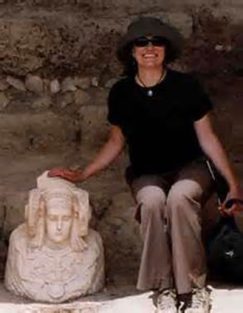
Vol. 55 / No. 2
By: Beebe Bahrami
Past/Present – Overwhelmed by Time
A big part of the magic of visiting a museum or archaeological site is the feeling of time shifting, of […]
View Article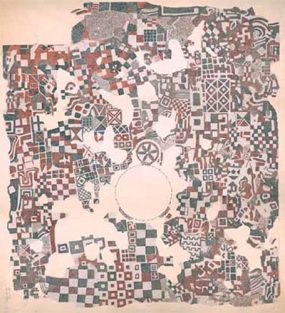
Vol. 55 / No. 2
By: Gareth Darbyshire and Alessandro Pezzati
From the Archives – The Missing Piece
Organizing collections of records to make them available for research is not straightforward. The ease or difficulty in sorting through […]
View Article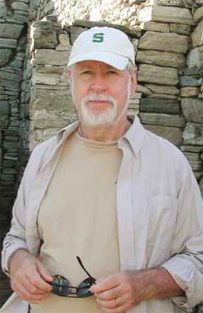
Vol. 55 / No. 2
By: Ellen E. Bell
Portrait – Remembering Robert J. Sharer (1940-2012)
Dr. Robert J. Sharer was the Sally and Alvin Shoemaker Professor Emeritus of Anthropology at the University of Pennsylvania and […]
View Article
Vol. 55 / No. 3
By: Doug Kiel
Rebuilding Indigenous Nations: Native American Activism and the Long Red Power Movement
For more than a century, Native Americans have been rebuilding their Indigenous nations through a variety of activist networks, but […]
View Article
Vol. 55 / No. 3
By: Margaret M. Bruchac
New Native American Studies Initiative at Penn
In January of 2013, the University of Pennsylvania welcomed Assistant Professor Dr. Margaret M. Bruchac (Abenaki) as the first Native […]
View Article
Vol. 55 / No. 3
By: Tina Pierce Fragoso
Recruiting Native American Students to Penn
When I was eight years old I marched on the Bridgeton, New Jersey, courthouse wearing a homemade t-shirt that said, […]
View Article
Vol. 55 / No. 3
By: Alessandro Pezzati
Edward Sapir and Tony Tillohash
Although Edward Sapir (1884–1939) is a famous figure in American anthropology and linguistics, his early career at the Penn Museum […]
View Article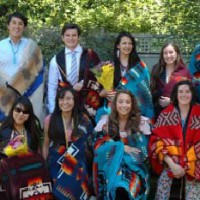
Vol. 55 / No. 3
By: John E. Echohawk
Understanding Tribal Sovereignty: The Native American Rights Fund
One of the most difficult problems that Native Americans face is the lack of public knowledge about Native American legal […]
View Article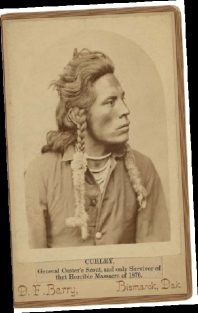
Vol. 55 / No. 3
By: Eric W. Schnittke
Looking Back – December 2013
Editor’s note: This photograph and the story behind it recall an era of violence when Native American voices were silenced. […]
View Article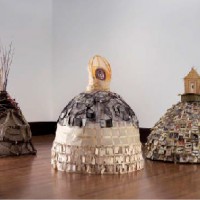
Vol. 55 / No. 3
By: C. Maxx Stevens
Seeing One’s Creative Process
Artist and professor C. Maxx Stevens examines her method of visual storytelling. Because objects can “speak” in the same way […]
View Article
Vol. 55 / No. 3
By: Suzan Shown Harjo
Threatened and Damaged: Protecting Sacred Places
Eagles disappear into the sun surrounded by light from the face of Creation then scream their way home with burning […]
View Article
Vol. 55 / No. 3
By: John E. Echohawk
A History of Government Policies
Domestic Dependent Nations In 1831, the U.S. Supreme Court held that an Indian nation was not a foreign nation but […]
View Article
Vol. 55 / No. 3
By: Joseph R. Aguilar
Researching the Pueblo Revolt of 1680
On August 10, 1680, the Pueblo people, along with their Navajo and Apache allies, orchestrated what is arguably the most […]
View Article
Vol. 55 / No. 3
By: Patty Talahongva
Being Hopi: When does a child realize her ethnicity?
I never saw myself as separate or different as a child growing up in Denver, Colorado. Perhaps it was because […]
View Article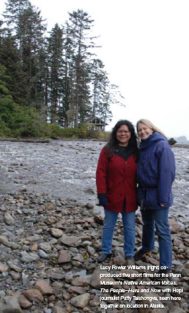
Vol. 55 / No. 3
By: Lucy Fowler Williams
Native American Voices Today: From the Guest Editor
This special issue of Expedition is an extension of our new exhibition, Native American Voices: The People—Here and Now, and […]
View Article
Vol. 55 / No. 3
By: Julian Siggers
Transforming Understanding of the Native American Experience: From the Director
In the last issue of Expedition, I introduced our new mission statement: The Penn Museum transforms understanding of the human […]
View ArticleVol. 56 / No. 1
By: Eric W. Schnittke
Looking Back
In 1929, the Penn Museum appointed Alan Rowe field director for excavations at Meydum, Egypt. Rowe, an Englishman, had previously […]
View Article
Vol. 56 / No. 1
By: Alessandro Pezzati
From the Archives: The Discovery of the Palace of Merenptah at Memphis
Memphis, Egypt was one of the largest cities of antiquity. According to tradition, it was founded by the mythical king […]
View Article
Vol. 56 / No. 1
By: David O'Connor
The Last Partage: Dividing Finds from the 1960s Excavations
In 1967 a new team of excavators arrived at Abydos, a site of great extent located on the western side […]
View Article
Vol. 56 / No. 1
By: Molly Gleeson
Saving History: The Conservation of Painted Coffin Fragments from Abydos
Archaeologists from the Penn Museum are currently searching for tombs related to the Middle Kingdom community at South Abydos. In […]
View Article
Vol. 56 / No. 1
By: Jennifer Houser Wegner
Hidden Treasures: Abydos in the Basement
At the turn of the last century, long before the Penn Museum began its work at Abydos under David O’Connor […]
View Article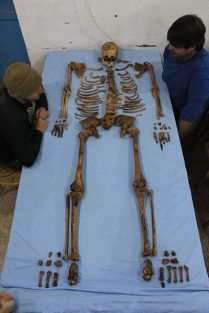
Vol. 56 / No. 1
By: Paul Verhelst and Matthew Olson
The Remains of Senebkay: First Glimpse of a New Pharaoh
On January 6, 2014, sunlight fell upon the visage of a pharaoh whom history had forgotten for over three and […]
View Article
Vol. 56 / No. 1
By: Josef Wegner
Discovering Pharaohs Sobekhotep & Senebkay: An Update from the 2013–2014 Field Season
Archaeology can change quickly in the face of new data produced through excavation. In this issue of Expedition we have […]
View Article
Vol. 56 / No. 1
By: Kevin M. Cahail
Their Memory Lives On: Domestic Funerary Commemoration at Wah-sut
To the ancient Egyptian mind, the worlds of the living and the dead were inextricably intertwined. The speech of one […]
View Article
Vol. 56 / No. 1
By: Kevin M. Cahail
Taking It With You: The South Abydos Tomb Census
As part of the ongoing excavations in the Middle Kingdom town of Wah-sut, a pressing question has arisen: where were […]
View Article
Vol. 56 / No. 1
By: Josef Wegner
The Palatial Residence of Wah-Sut: Modeling the Mayor’s House at South Abydos
It was the summer of 1994. Our first season of excavation was underway on the temple of Senwosret III. Walking […]
View Article
Vol. 56 / No. 1
By: Josef Wegner and Kevin M. Cahail
Ancient Reuse: The Discovery of a Royal Sarcophagus Chamber
During June 2013, excavations were underway near the base of the Mountain-of-Anubis. The search was on for private cemeteries belonging […]
View Article
Vol. 56 / No. 1
By: Dawn McCormack
Fragments of a Difficult Era: Excavations of Tomb S9 at South Abydos
The 13th Dynasty of ancient Egypt, roughly 1800–1630 BCE, was a politically turbulent period with more than 50 kings coming […]
View Article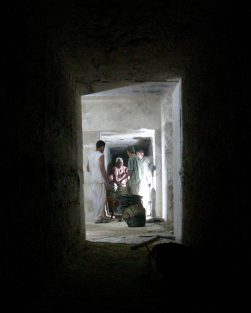
Vol. 56 / No. 1
By: Josef Wegner
Revealing a Hidden Tomb: A Look at Excavations inside the Tomb of Senwosret III
Beneath the sands of South Abydos is an astonishing monument: a gigantic tomb, one of the largest in Egypt, and […]
View Article
Vol. 56 / No. 1
By: Josef Wegner
Abydos and the Penn Museum
Abydos in southern Egypt is one of the great sites of ancient Egyptian civilization. At the dawn of Egyptian history, […]
View Article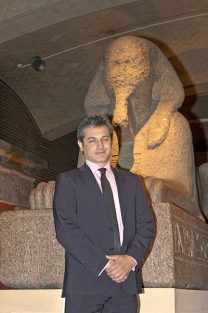
Vol. 56 / No. 1
By: Julian Siggers
From the Director: The Thrill of Discovery
Since arriving at the Penn Museum in July 2012, it has been one of my great privileges as Williams Director […]
View Article
Vol. 56 / No. 2
By: Julian Siggers
Building Transformation: The Heart of the 2013–2020 Penn Museum Strategic Plan
The Penn Museum has been committed to public engagement since it was founded. Great strides have been made in a […]
View Article
Vol. 56 / No. 2
By: Julian Siggers
From the Director – Fall 2014: Transforming the Penn Museum
Last summer, I wrote to our membership and readers from a redesigned Expedition with added Penn Museum departments and content, […]
View Article
Vol. 56 / No. 2
By: James D. Muhly
Looking Back at Fifty Years of Nautical Archaeology: A Review Article of Archaeologist Beneath the Sea
In recent decades nautical archaeology and George Bass have tended to be almost synonymous. To consider one was to engage […]
View Article
Vol. 56 / No. 2
By: Gareth Darbyshire and Christopher Ray
Modelling Gordion’s Citadel
In 2016, a spectacular new exhibition of Anatolian archaeology will open at the Penn Museum. The show’s theme is the […]
View Article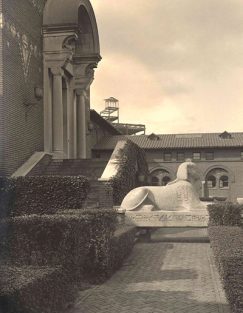
Vol. 56 / No. 2
By: Jennifer Houser Wegner
Sphinx: Celebrating a Centennial in Philadelphia
We have had raised at Memphis a colossal sphinx of Rameses II about 11 feet long, 11 ton weight. The […]
View Article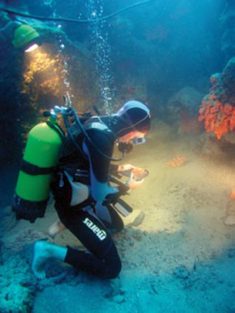
Vol. 56 / No. 2
By: Cynthia Jones Eiseman
Underwater Archaeology & George F. Bass
From its beginnings at Penn in the 1960s to today’s Institute of Nautical Archaeology (INA), the discipline of underwater archaeological […]
View Article
Vol. 56 / No. 2
By: Simon Martin
Reports from the Field: City of the Serpent Kings: Calakmul, Mexico
If you were to fly low over the forests of southeastern Mexico, about 35 km from the border with Guatemala, […]
View Article
Vol. 56 / No. 2
By: Janet Simon
From the Archives: The Old Guatemala Trotters: A Friendship Deepened through War
This is the story of two individuals drawn together through their work in Maya archaeology, who later developed a friendship […]
View Article
Vol. 56 / No. 2
By: Jennifer Chiappardi
The Children of Maasailand: A Photographer’s Perspective
On a recent trip to Kenya, Dr. Kathleen Ryan of the Penn Museum, along with Paul Mitchell, Louise Hansen, and […]
View Article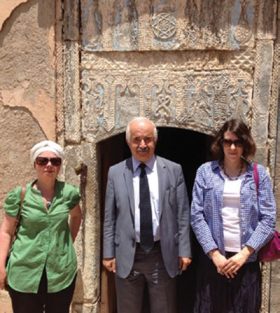
Vol. 56 / No. 2
By: Lauren Ristvet and Cinzia Pappi
Reports from the Field: Illuminating a Dark Age: New Work at Satu Qala, Iraq
In 1177 BCE, the armies of Ramses III, the pharaoh of Egypt, fought pitched battles on land and sea against […]
View Article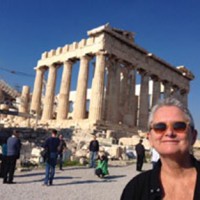
Vol. 56 / No. 2
By: Jane Hickman
From the Editor – Fall 2014: Expedition Travels the World
The Fall 2014 issue of Expedition is truly an international edition, with stories and photographs from Iraq, Kenya, Egypt, Turkey, […]
View Article
Vol. 57 / No. 2
By: Jane Hickman
Stories from the Americas and Egypt: From the Editor - Fall 2015
The Fall 2015 issue opens with an article by Meg Kassabaum, Weingarten Assistant Curator ofthe American Section and Assistant Professor […]
View Article
Vol. 56 / No. 3
By: Alessandro Pezzati
William L. Potter and Joanne S. Truckel Photograph Collection: New Acquisitions
The Archives is the administrative memory of the Penn Museum, as well as the repository for the scientific records of […]
View Article
Vol. 56 / No. 3
By: Philip Jones
An Elamite Inscribed Brick: New Aquisitions
The Babylonian Section’s newest acquisition, a large baked brick with a stamped inscription, illuminates an era of social and religious […]
View Article
Vol. 56 / No. 3
By: Alessandro Pezzati
The Art of Archaeology: From the Archives
The 1839 invention of photography was revolutionary, and instantly useful to archaeologists, changing the nature of documenting the past. Yet […]
View Article
Vol. 56 / No. 3
By: Tessa De Alarcón and Sara Levin
Conservation Fellows Evaluate Cypriot Artifacts: Conserving the Past
Excavations sponsored by the University of Pennsylvania unearthed an array of important finds in Cyprus beginning in the 1930s. After […]
View Article
Vol. 56 / No. 3
By: Richard Hodges and John Mitchell
The Forty Saints Reconsidered
Spectacularly situated above the Straits of Corfu in southern Albania, this large, complex church was built in Late Antiquity- probably […]
View Article
Vol. 56 / No. 3
By: Brian Rose and Marianna Lovink
Recreating Roman Wax Masks
When we think of the Roman aristocrats who lived 2,000 years ago, one of the most vivid traditions that comes […]
View Article
Vol. 56 / No. 3
By: Grant Frame
Sargon’s March: A New Translation
In the eighth year of his reign (714 BC), the king of Assyria, Sargon II (721–705 BC), led a campaign […]
View Article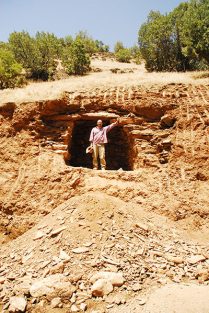
Vol. 56 / No. 3
By: Michael D. Danti
Searching for the Kingdom of Musasir: The Rowanduz Archaeological Program
Near Eastern archaeologists generate compelling headlines and grab attention searching for lost kingdoms, temples, and palaces, but most everyone knows […]
View Article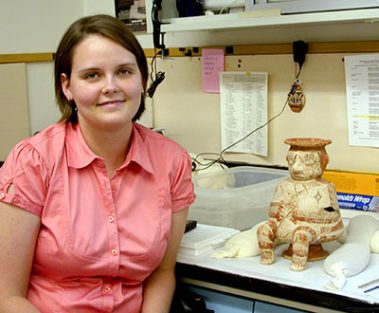
Vol. 56 / No. 3
By: Lynn Grant
A Treasure Among the Sherds: Beneath the Surface
The treatments done by Penn Museum conservators usually relate to a current exhibition or loan. For our interns, however, we […]
View Article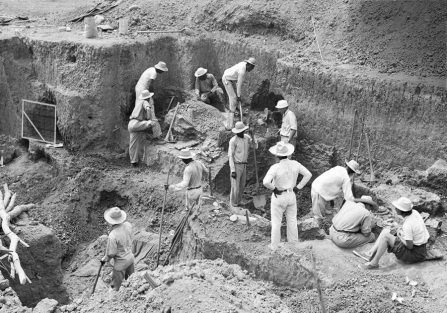
Vol. 56 / No. 3
By: Lucy Fowler Williams
The Excavations at Sitio Conte: Beneath the Surface
The Penn Museum’s excavations at Sitio Conte began in 1940 with an invitation from private landowner, Miguel Conte. Since discovering […]
View Article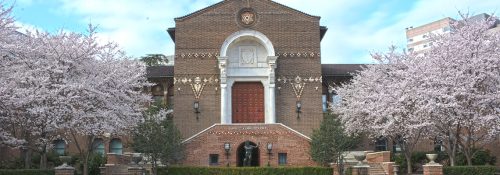
Vol. 56 / No. 3
By: Richard M. Leventhal and Brian I. Daniels
Saving Syria’s Cultural Heritage: Past/Present
The news from Syria is unbearable. Over 200,000 Syrians have been killed and the country’s population has been largely displaced. […]
View Article
Vol. 56 / No. 3
By: Steve Tinney
New CAAM Labs and Classrooms Open for Fall Semester: From the Deputy Director
When students swipe their Penncards at the blue door and walk down the corridor to the Penn Museum’s newly reopened […]
View Article
Vol. 56 / No. 3
By: Julian Siggers
Connections that Last a Lifetime: From the Director
We frequently hear from people who first encountered the Penn Museum during the formative years of their childhood or adolescence. […]
View Article
Vol. 56 / No. 3
By: Jane Hickman
A Research Institution: From the Editor
The Penn Museum’s 2013–2020 Strategic Plan includes four foundational pillars: research, teaching, collections stewardship, and public engagement. In addition to […]
View Article
Vol. 57 / No. 1
By: Alessandro Pezzati
Jessie Tarbox Beals: From the Archives
In January 1905, photographer Jessie Tarbox Beals stopped at the Penn Museum on a tour of East Coast cities. She […]
View Article
Vol. 57 / No. 1
By: Lynne Farrington
Souvenirs of the Past: Ephemera From World’s Fairs and Expositions
The University of Pennsylvania houses a collection of world’s fairs and expositions materials, given to the Kislak Center for Special […]
View Article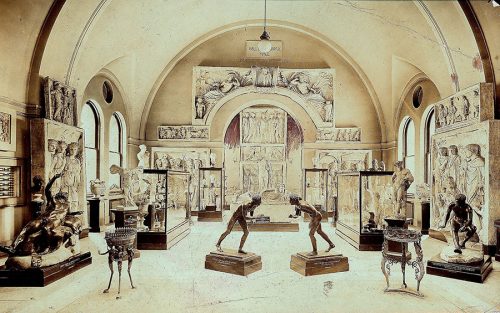
Vol. 57 / No. 1
By: Ann Blair Brownlee and Lynn Makowsky
“…Very Best Inspirations of the Past”: The Wanamaker Bronzes
For more than 50 years, visitors to the Penn Museum have been welcomed by a large bronze classical statue, a […]
View Article
Vol. 57 / No. 1
By: David P. Silverman
From Saqqara to St. Louis to Philadelphia: The Chapel of Kaipure
Having worked at the 1964 New York World’s Fair when I was a teenager, I thought that I knew a […]
View Article
Vol. 57 / No. 1
By: William Wierzbowski
Yupi Dazi: Fish-Skin Tartars of the Amur River Delta
The Amur, or “great river,” is one of the longest in the world with its source deep in the interior […]
View Article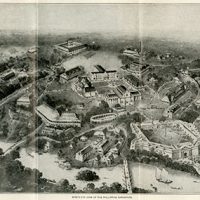
Vol. 57 / No. 1
By: Adria H. Katz
Curiosities & Commodities: Oceanian Objects From Two World’s Fairs
In the fall of 2003, the Oceanian Section of the Penn Museum acquired materials from New Caledonia and the Philippines […]
View Article
Vol. 57 / No. 1
By: Dwaune Latimer
The People & Products of Colonization: Africa at the Chicago and Paris Expositions
Arican exhibits at world’s fairs— including both native peoples and the objects of their daily life— provided American and European […]
View Article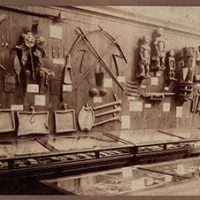
Vol. 57 / No. 1
By: Alessandro Pezzati
Gold Medals & Grand Prizes: World's Fairs and The Penn Museum
The 1876 Centennial International Exposition in Philadelphia—the first world’s fair held in the United States—was an international success and demonstrated […]
View Article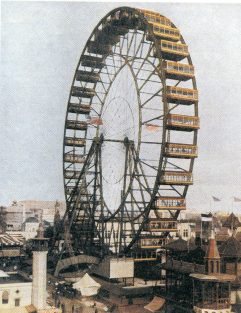
Vol. 57 / No. 1
By: Xiuqin Zhou
After the Fairs: World’s Fairs and the Development of Museums
World’s fairs—also called exhibitions, expositions, or more recently expos— have had a great impact on the development of museums as […]
View Article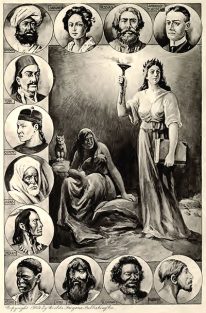
Vol. 57 / No. 1
By: Louise Krasniewicz
All the World in One Place: Educating Visitors About the Changing World
In 1876, the President of the United States, Ulysses S. Grant, and the reigning Emperor of Brazil, Dom Pedro II, […]
View Article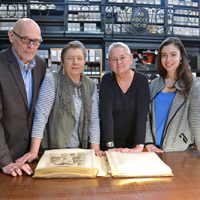
Vol. 57 / No. 1
By: Jane Hickman
The Wonder of World’s Fairs: From the Editor
“…this is a World’s Fair and all the world is here, to exhibit and see.” From The Worlds Fair, 1891 […]
View Article
Vol. 57 / No. 1
By: Julian Siggers
Preserving Cultural Heritage: From the Director
In recent years, the preservation of cultural heritage has moved to the forefront of archaeological and anthropological concerns. The need […]
View Article
Vol. 55 / No. 3
By: Caroline Kee
Planting New Seeds: The Lenape Garden at Penn
Tucked behind Penn’s Greenfield Intercultural Center (GIC) at 37th and Chestnut is a small, narrow lot. For many years, it […]
View Article
Vol. 57 / No. 2
By: Alessandro Pezzati
Looking Back
“The Historic Fans of the Pope Now at the University of Pennsylvania” Thus was announced to the arrival, on December […]
View Article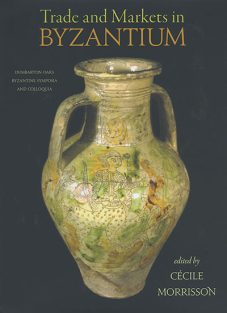
Vol. 57 / No. 2
By: Victoria Fleck
Exchange in the Byzantine World: Book News + Reviews
TRADE AND MARKETS IN BYZANTIUM (Dumbarton Oaks Byzantine Symposia and Colloquia) by Cécile Morrisson, ed. (Washington, DC: Dumbarton Oaks, 2012), […]
View Article
Vol. 57 / No. 2
By: Susannah G. Fishman
Resilience in Early Iron Age Communities: Book News + Reviews
COMPLEX COMMUNITIES by Benjamin W. Porter (Tucson, Arizona: University of Arizona Press, 2013), 203 pages, 5 maps, 14 illustrations, $50.00 […]
View Article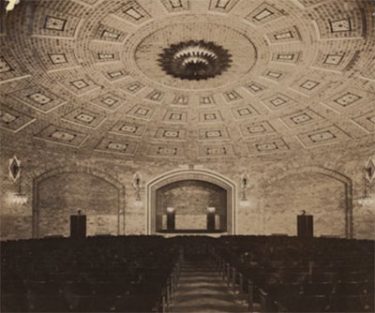
Vol. 57 / No. 2
By: Alessandro Pezzati
The First Century of the Harrison Rotunda: From the Archives
The Harrison Rotunda, consisting of the Hall and the Auditorium, turns 100 this year. The iconic dome of the Penn […]
View Article
Vol. 57 / No. 2
By: Katherine M. Moore
Food and Fire in the New Labs: In the Labs
Classes were already in full swing when CAAM was dedicated last September. Fourteen students were enrolled in the freshman seminar […]
View Article
Vol. 57 / No. 2
By: Marie-Claude Boileau
Engaging Students in Original Scientific Research: In the Labs
Last spring, the Ceramics Laboratory in the new Center for the analysis of archaeological Materials (CAAM), was a hotspot for […]
View Article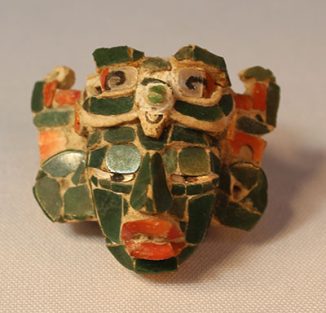
Vol. 57 / No. 2
By: Stuart D. Scott
Mrs. Scaife & The Jade Mask: A Memoir of Tikal
On the warm spring morning of March 5, 1959, as the sun first appeared over the tiered rainforest canopy of […]
View Article
Vol. 57 / No. 2
By: Leslie Anne Warden
Webs of Power: Identifying Royal and Private Power in Old Kingdom Egypt
The Old Kingdom (ca. 2600–2200 BCE) was the first major florescence of the Egyptian state. This period is often de […]
View Article
Vol. 57 / No. 2
By: Joshua Aaron Roberson
A Season in Hell (with Apologies to Arthur Rimbaud): The Annihilation of the Damned in Ancient Egypt
“I will tear the veils from every mystery: mysteries of religion or of nature, death, birth, the future, the past, […]
View Article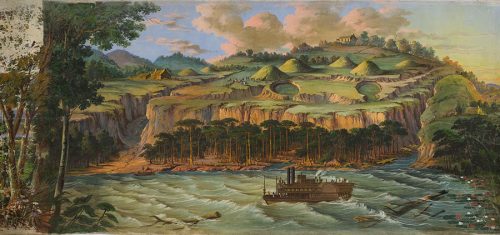
Vol. 57 / No. 2
By: Megan C. Kassabaum
Monumental Grandeur of the Mississippi Valley: The Mounds of Native North America
Earthen mounds have been constructed in the eastern United States for well over 5,000 years. From early beginnings in the […]
View Article
Vol. 57 / No. 2
By: Julian Siggers
The Transformation Continues: From the Director - Fall 2015
This time last year, I wrote you about our ambitious plans to transform the Penn Museum into an institution worthy of […]
View Article
Vol. 57 / No. 3
By: Alessandro Pezzati
John Franklin Daniel III: The Director Who Never Was: From the Archives
In December 1948, John Franklin Daniel III and Rodney S. Young surveyed the site of Gordion, one of the fabled […]
View Article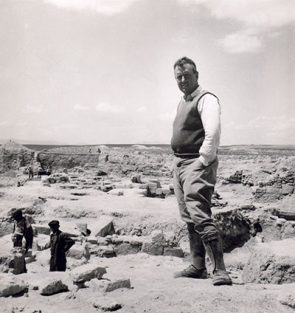
Vol. 57 / No. 3
By: Susan Heuck Allen
Rodney Young’s Other Career: Portrait
Mussolini’s invasion of Greece on October 28, 1940 prompted American archaeologists excavating there to act. Rodney Young, a recent Ph.D. […]
View Article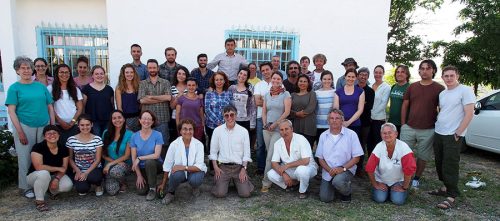
Vol. 57 / No. 3
By: C. Brian Rose
The Next Decade at Gordion
Given the fact that fieldwork at Gordion has been ongoing for over six decades, it may seem surprising that so […]
View Article
Vol. 57 / No. 3
By: Ayşe Gursan-Salzmann
A Day in the Life: The 2015 Field Season
Any description of life at Gordion must begin with the dig house, the center of archaeological activity now just as […]
View Article
Vol. 57 / No. 3
By: Gareth Darbyshire
The Role of Science: in Gordion’s Archaeology
Gordion is an unusually large and complex archaeological site, the product of its over 4,000-year occupation history. Rising 16 meters […]
View Article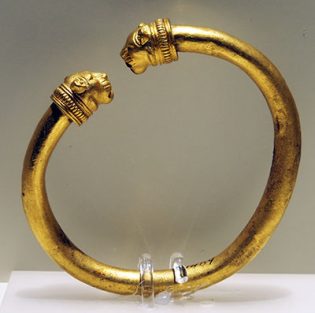
Vol. 57 / No. 3
By: Anastasia Amrhein, Patricia Kim, Lucas Stephens and Jane Hickman
The Myth of Midas’ Golden Touch
Gold has been used to create objects of beauty across the ages, conferring a high level of status on those […]
View Article
Vol. 57 / No. 3
By: Elisa Del Bono
Architectural Conservation at Gordion
Following the preservation policy of many Mediterranean countries, the Ministry of Culture and Tourism in Turkey requires the directors of […]
View Article
Vol. 57 / No. 3
By: Kathryn R. Morgan, C. Brian Rose, Sam Holzman and Patricia Kim
The Legacy of Phrygian Culture
The impact of Midas’ reign on the political configuration of Asia Minor is well known; less obvious is the impact […]
View Article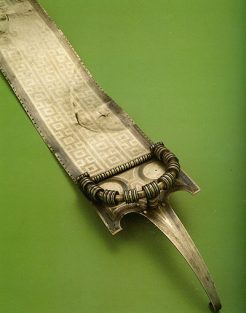
Vol. 57 / No. 3
By: Richard Liebhart and Lucas Stephens
Tumulus MM: Fit for a King
For several thousand years, anyone entering the valley of the ancient Sangarius (modern Sakarya) River near the site of Gordion […]
View Article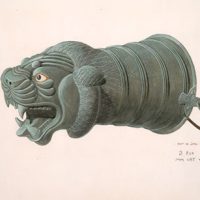
Vol. 57 / No. 3
By: Anastasia Amrhein, Sophie Crawford Waters, Sam Holzman and Kurtis Tanaka
The Interaction of Empires
Much of the richness of Gordion’s history lies in its interaction with the other great kingdoms of the Near East […]
View Article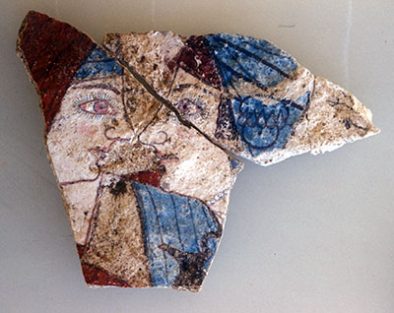
Vol. 57 / No. 3
By: C. Brian Rose
Gordion and the Penn Museum
Like many great archaeological discoveries, the site of Gordion was encountered by accident. Engineers working on the construction of the […]
View Article
Vol. 57 / No. 3
By: Julian Siggers
A Tradition of Discovery through Fieldwork: From the Director
In 1887, a group of Philadelphians, including University of Pennsylvania Provost William Pepper, established the Penn Museum to house artifacts […]
View Article
Vol. 57 / No. 3
By: Jane Hickman
The Penn Museum and the Kingdom of Midas: From the Editor
This special expanded issue of Expedition was created to accompany The Golden Age of King Midas. This extraordinary exhibition—with objects […]
View Article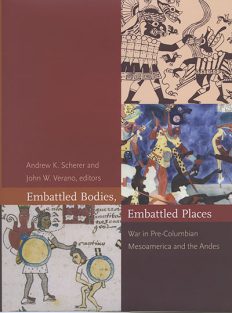
Vol. 58 / No. 1
By: Whittaker Schroder
Changing Perceptions about Warfare: Book News + Reviews
Embattled Bodies, Embattled Places: War in Pre-Columbian Mesoamerica and The Andes By Andrew K. Scherer and John W. Verano, eds. […]
View Article
Vol. 58 / No. 1
By: Tiffany C. Cain
Returning to the Study of Things: Book News + Reviews
Ruin Memories: Materialities, Aesthetics, and the Archaeology of the Recent Past By Bjørnar Olsen and Þóra Pétursdóttir, eds. (Oxon and […]
View Article
Vol. 58 / No. 1
By: Alessandro Pezzati
Stewart Culin and the Study of Games: From the Archives
Self-trained anthropologist Stewart Culin was eclectic in his interests. A master of exhibition design and a collector of ethnic and […]
View Article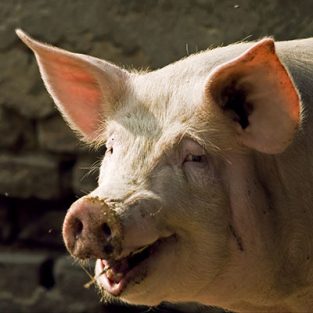
Vol. 58 / No. 1
By: Katherine Moore
The Evolution of Pigs: In the Labs
A recent student project in the Center for the Analysis of Archaeological Materials (CAAM) uses animal bones from the Penn […]
View Article
Vol. 58 / No. 1
By: Jerolyn E. Morrison
Kos: A First Stop in the Refugee Crisis: Past/Present
Each day our humanitarian efforts on Kos begin after our work in the museum ends. It starts with an eight-pound […]
View Article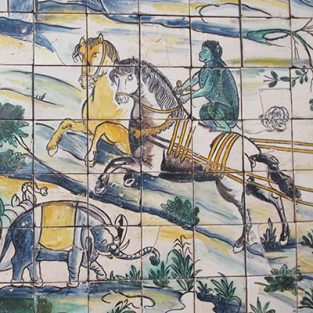
Vol. 58 / No. 1
By: Janet Simon
Lisbon: Rich in History and Culture: Fieldtrip
Today’s visitors to the Portuguese capital city of Lisbon see striking evidence of a glorious past. At the height of […]
View Article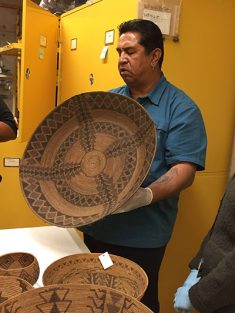
Vol. 58 / No. 1
By: Lucy Fowler Williams, Stacey O. Espenlaub and Janet Monge
Finding Their Way Home: Twenty-five Years of NAGPRA at the Penn Museum
On November 2, 2015, Mr. Lalo Franco and Mr. Pete Alanis of the Tachi Yokut Tribe of the Santa Rosa […]
View Article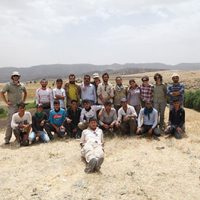
Vol. 58 / No. 1
By: Steve Renette
Traders of the Mountains: The Early Bronze Age in Iraqi Kurdistan
Within the imaginations of people inhabiting the dense cities that dotted the Mesopotamian plains, the Zagros Mountains to the east […]
View Article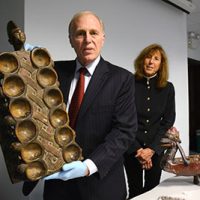
Vol. 58 / No. 1
By: Kristen Pearson
Sowing the Seeds of Competitive Play: The Enduring Legacy of Mancala
Mancala has been popular in the United States since a commercialized version was intro- duced in the 1940s under the […]
View Article
Vol. 58 / No. 1
By: Kate Murphy and Cynthia Susalla
Secrets of Ancient Magic: The Power of Spells, Curses, & Omens
In ancient Egypt, Mesopotamia, Greece, and Rome, practitioners of magic exploited symbolic words, images, and rituals to achieve desired outcomes […]
View Article
Vol. 58 / No. 1
By: Julian Siggers
Renovation & Innovation: From the Director
This is a time of tremendous excitement and anticipation in the Penn Museum as we prepare to transform our keystone […]
View Article
Vol. 58 / No. 1
By: Jane Hickman
Stories from the Penn Museum: From the Editor
The Spring 2016 issue includes four articles related to the work of the Penn Museum. We open with “Secrets of […]
View Article
Vol. 58 / No. 2
By: Moritz Jansen
In the Labs – Spring 2016: Archaeometallurgy at the Penn Museum: Then and Now
Archaeometallurgy is the scientific investigation of the technology and provenance of ancient metals. The study of the production, processing, and […]
View Article
Vol. 58 / No. 2
By: Paul Mitchell
Tangled Afterlives: How an Egyptian Papyrus Became the Mormon Book of Abraham
After 2,000 years of repose, 11 mummified human corpses and a few scrolls of papyrus entombed at Thebes became entangled […]
View Article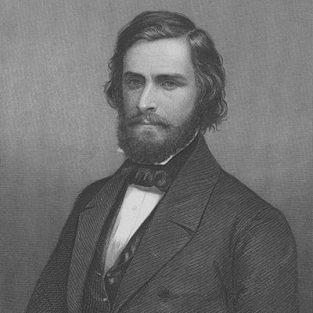
Vol. 58 / No. 2
By: Anna N. Dhody
The Curious Case of Mrs. Ellenbogen: Saponification and Deceit in 19th-Century Philadelphia
Old and probably ugly, with a nut-cracker profile. That is how Joseph McFarland, M.D., referred to the Soap Lady, one […]
View Article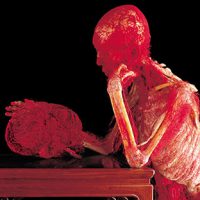
Vol. 58 / No. 2
By: Page Selinsky
The Marvels of Body Worlds: Modern Mummies and the Exhibition of Human Anatomy
The Body Worlds exhibitions of plastinated human bodies and anatomical specimens by German anatomist Gunther von Hagens are in many […]
View Article
Vol. 58 / No. 2
By: Page Selinsky and Paul Mitchell
Journeys of the Mummy Scientist: An Exclusive Interview with Dr. Ronald G. Beckett
Doctor Ronald Beckett is a pioneer in using minimally invasive imaging techniques, particularly endoscopy (examining the inside of the body […]
View Article
Vol. 58 / No. 2
By: Frank W. Clements and with captions and photography by Shayne Dahl
The Buddhas of Mount Yudono: Sacred Self-Mummification in Northern Japan
A skeletal figure draped in brightly colored robes is not what one usually pictures when asked to describe a Buddha, […]
View Article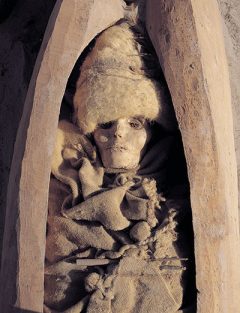
Vol. 58 / No. 2
By: Victor H. Mair
Ancient Mummies of the Tarim Basin: Discovering Early Inhabitants of Eastern Central Asia
The mummies of Eastern Central Asia (hereafter ECA) first entered my consciousness in the summer of 1988. I had heard […]
View Article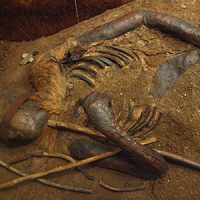
Vol. 58 / No. 2
By: Sabine Eisenbeiss
Preserved in Peat: Decoding Bog Bodies from Lower Saxony, Germany
Bog bodies—human corpses naturally mummified in the cool, acidic, and low-oxygen environments of peat bogs—have been found in Lower Saxony, […]
View Article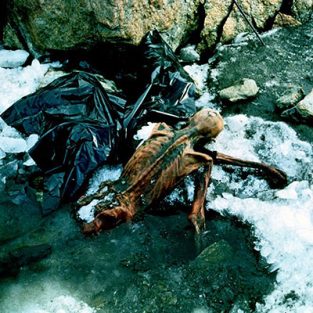
Vol. 58 / No. 2
By: M. Vidale, L. Bondioli, D.W. Frayer, M. Gallinaro and A. Vanzetti
Ötzi the Iceman: Examining New Evidence from the Famous Copper Age Mummy
The Iceman mummy, nicknamed Ötzi, was discovered in 1991 amidst sheets of melting ice on the Tisenjoch pass of the […]
View Article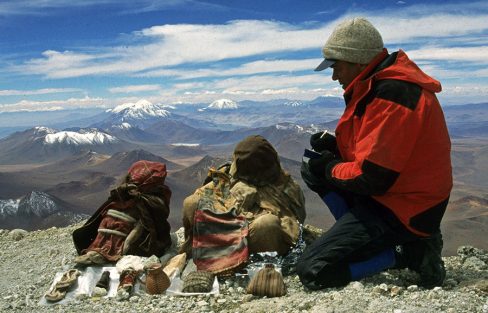
Vol. 58 / No. 2
By: Johan Reinhard
Frozen Mummies of the Andes: Human Sacrifices in the Sacred Landscape of the Inca
The Incas are renowned for massive carved stone structures, the construction of thousands of miles of roads, and the establishment […]
View Article
Vol. 58 / No. 2
By: Janet Monge
Mummies Beyond the Grave: An Introduction to Mummy Studies around the World
Over 20 years ago, I got hooked on mummies. It began when we first x-rayed the many South and North […]
View Article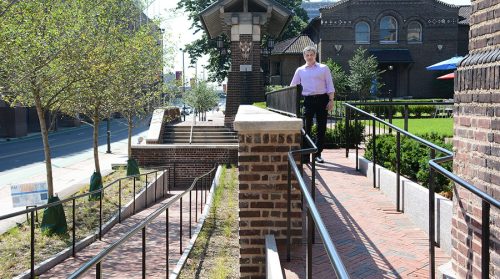
Vol. 58 / No. 2
By: Julian Siggers
Accessible to All: From the Director
We want the Penn Museum to be accessible to all visitors. This is a priority of our mission—after all, the […]
View Article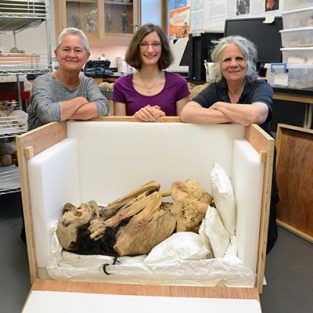
Vol. 58 / No. 2
By: Jane Hickman and Page Selinsky
Mummies: Unraveling History’s Mysteries: From the Editor
To many school children and their families, the Penn Museum is known as the “Mummy Museum.” Although visitors are fascinated […]
View Article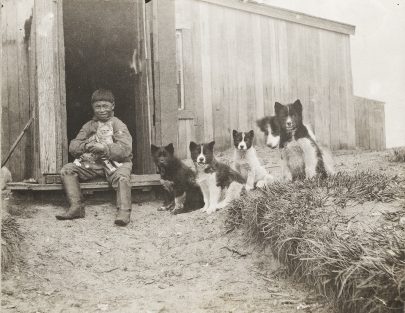
Vol. 58 / No. 3
By: Alessandro Pezzati
Looking Back
George Byron Gordon met Suzanne Rognon Bernardi (later Jeffery) in 1905 while in Alaska for the Penn Museum. Bernardi was […]
View Article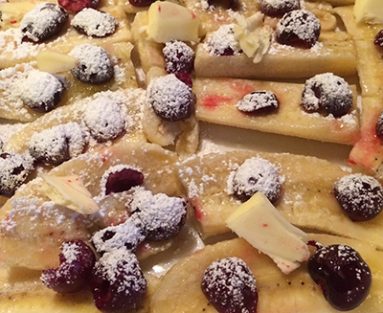
Vol. 58 / No. 3
By: Alessandro Pezzati
Banana Recipes from West Africa,1937: From the Archives
Henry Usher Hall (1876–1944), Curator of the General Ethnology Section from 1915 to 1935, undertook two expeditions for the Penn […]
View Article
Vol. 58 / No. 3
By: Grant Frame
Remembering Erle Verdun Leichty, 1933–2016: Portriat
Doctor Erle Verdun Leichty, Curator Emeritus of the Babylonian Section of the Penn Museum, Clark Research Professor Emeritus of Assyriology […]
View Article
Vol. 58 / No. 3
By: Marie-Claude Boileau and Katherine M. Moore
Highschoolers Take Over the CAAM Labs: In the Labs
For two weeks last summer, the Center for the Analysis of Archaeological Materials (CAAM) and the Museum’s Learning Programs Department […]
View Article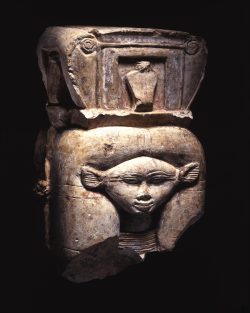
Vol. 58 / No. 3
By: Charlotte Rose
Childbirth Magic: Deciphering Bed Figurines from Ancient Egypt
Ancient Egyptians welcomed childbirth with ritual, using medico-magical spells, amulets, and various other objects to help ensure the survival of […]
View Article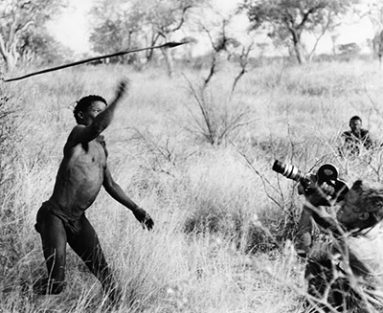
Vol. 58 / No. 3
By: Ilisa Barbash
Kalahari Adventures: Bob Dyson's Travels in Africa
BEFORE DR. ROBERT H. DYSON, JR. became Williams Director of the Penn Museum in 1981, he established himself as an […]
View Article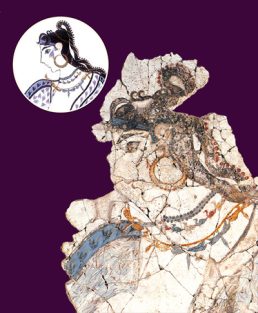
Vol. 58 / No. 3
By: Marie Nicole Pareja, Philip P. Betancourt, Vili Apostolakou, Thomas M. Brogan and Andrew J. Koh
Aegean Dyes: Unearthing the Colors of Ancient Minoan Textiles
Bronze Age Clothing in Minoan Crete was multicolored and made from intricately woven textiles. Until now, our only evidence related […]
View Article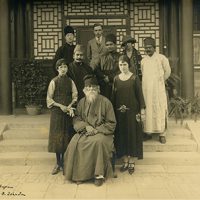
Vol. 58 / No. 3
By: Fangyi Cheng
Chinese Nomadic Art and the Journey to Collect: The Legacy of the Mayer Collection
For foreigners in China, the 1920s and ’30s were the golden age for collecting artifacts. Professional curators and dealers sent […]
View Article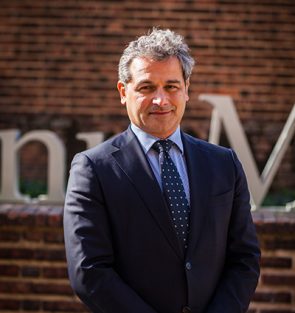
Vol. 58 / No. 3
By: Julian Siggers
The Digital Penn Museum: From the Director
The Penn Museum has extraordinary collections and resources. Now, they are more easily available than ever before: we have launched […]
View Article
Vol. 58 / No. 3
By: Jane Hickman
Stories from China, Greece, the Kalahari, and Egypt: From the Editor
The Winter 2016 issue of Expedition opens with an article by Fangyi Cheng on the legacy of the Museum’s Mayer […]
View Article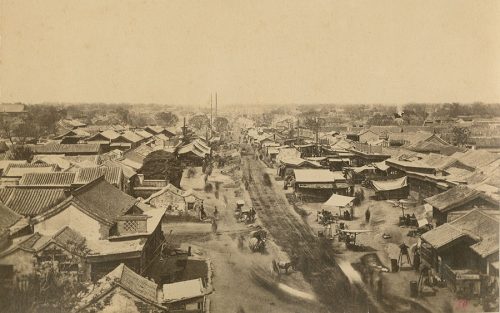
Vol. 59 / No. 3
By: Alessandro Pezzati
Early Photographs of China: In the Archives
Photography has been central to archaeological and ethnographic documentation since its invention in 1839. Almost all Penn Museum expeditions took […]
View Article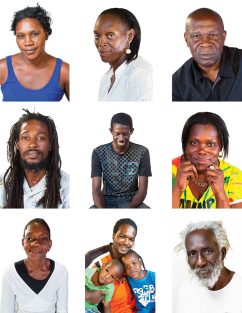
Vol. 59 / No. 3
By: Deborah A. Thomas
Bearing Witness: Four Days in West Kingston
The new Penn Museum exhibition Bearing Witness had its genesis in a disturbing event that took place in Jamaica in […]
View Article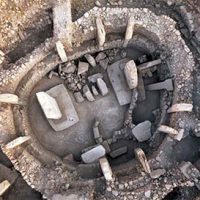
Vol. 59 / No. 3
By: Oliver Dietrich, Laura Dietrich and Jens Notroff
Cult as a Driving Force of Human History: A View from Göbekli Tepe
As we arrive at the site in the mountains of southeastern Turkey, a pale moon still hangs in a sky […]
View Article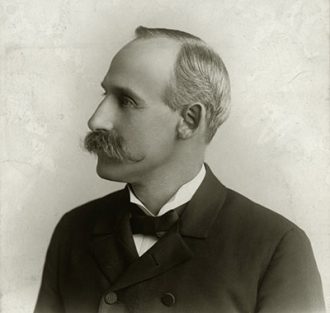
Vol. 59 / No. 3
By: Robert Ousterhout
Palmyra 1885: The Photographs of John Henry Haynes
“We pitched our tent by the little sun temple,” wrote John Henry Haynes, as his party arrived at Palmyra in […]
View Article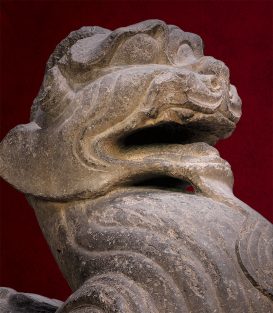
Vol. 59 / No. 3
By: Adam Smith and Qin Zhongpei
Marking the Spirit Road: Funerary Stone Sculpture in China
The two winged lions that confront each other across the span of the Rotunda are the oldest and most massive […]
View Article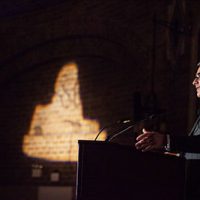
Vol. 59 / No. 3
By: Julian Siggers
Welcoming New Audiences: Renovating the Harrison Auditorium: From the Director
On November 1, we marked the kickoff of our Building Transformation project with a groundbreaking—or, rather, seat removal— event in […]
View Article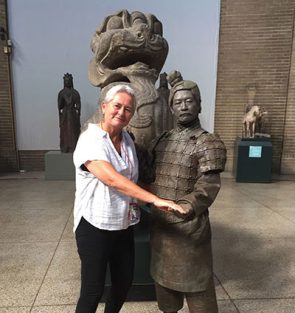
Vol. 59 / No. 3
By: Jane Hickman
Ancient & Modern: From the Editor
Our Winter issue includes stories of the ancient and modern world. We begin with an amazing archaeological site in southeastern […]
View Article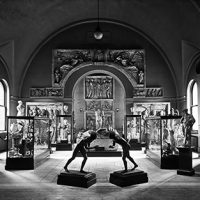
Vol. 59 / No. 1
By: Alessandro Pezzati
Museum Exhibitions, 1890–1990: From the Archives
Known Worldwide for its pioneering fieldwork, the Penn Museum surprises the visitor with its beautiful building, extensive collections, and impressive […]
View Article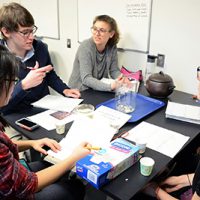
Vol. 59 / No. 1
By: Chantel White
In the Labs – Identifying Ancient Cooking Practices and Ingredients: A New Database for Archaeobotany
Over the past academic year, a new research project has begun in the Center for the Analysis of Archaeological Materials […]
View Article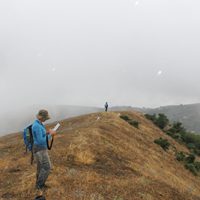
Vol. 59 / No. 1
By: Susannah Fishman, Jeyhun Eminli, Lara Fabian and Emil Iskenderov
Report from the Field – In the Mountains, between Empires: Notes From the Lerik in Antiquity Archaeological Project
The first season of the collaborative Azerbaijani-American Lerik in Antiquity Archaeological Project (LAAP), co-directed by Ph.D. student Lara Fabian (Penn […]
View Article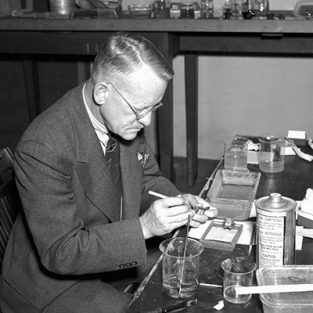
Vol. 59 / No. 1
By: David A. Schwartz
John Alden Mason: Life of a Renaissance Anthropologist
This is the story of Dr. John Alden Mason (1885–1967), one of the last of the great generalist anthropologists of […]
View Article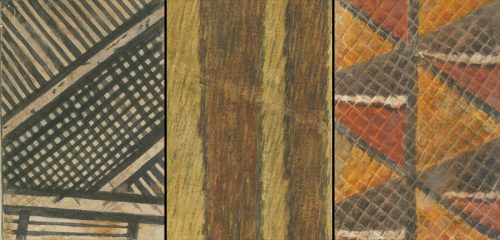
Vol. 59 / No. 1
By: Billie Lythberg
Captain Cook’s Barkcloth Books: A Tale of Three 18th-Century Sample Books
In the Summer of 1919, George Byron Gordon, the Director of the University of Pennsylvania Museum of Archaeology and Anthropology, […]
View Article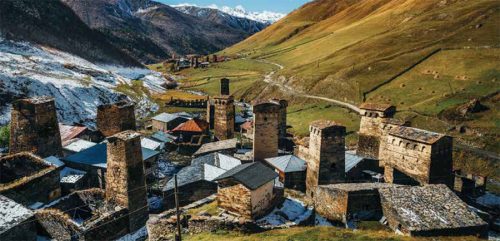
Vol. 59 / No. 1
By: Aram Yardumian, Theodore G. Schurr, Ramaz Shengelia, Davit Chitanava, Shorena Laliashvili, Lia Bitadze and Irma Laliashvili
Ancient Lineages: Reconstructing the Genetic History of Svaneti, Northwest Georgia
At the dawn of the common era, the Greek historian and geographer Strabo composed brief descriptions of the numerous tribes […]
View Article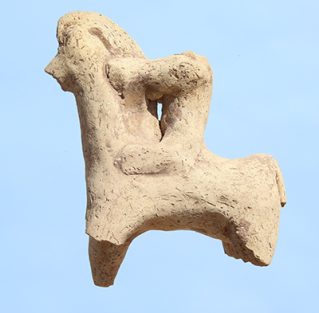
Vol. 59 / No. 1
By: William B. Hafford
City of the Moon: New Excavations at Ur
The ancient city of Ur was dedicated to the Sumerian moon god—today it resembles a lunar landscape. From 1922 to […]
View Article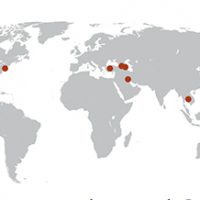
Vol. 59 / No. 1
By: Julian Siggers
An Active Research Museum: From the Director
As an active research museum, the Penn Museum’s knowledge of the human story is ever-evolving. Continued exploration of sites around […]
View Article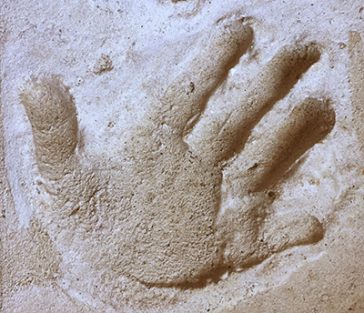
Vol. 59 / No. 1
By: Jane Hickman
The Trace of a Child: From the Editor
When I was two years old, my father gently pressed my hand into cement to create a record of my […]
View Article
Vol. 59 / No. 2
By: Alessandro Pezzati
The Lost Explorer
The Disappearance of Colonel Percy H. Fawcett in the jungles of Mato Grosso*, Brazil in 1925 is still headline news. […]
View Article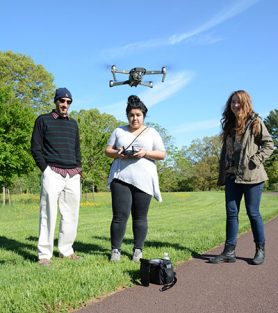
Vol. 59 / No. 2
By: Peter J. Cobb
CAAM’s Virtual Lab: Learning Digital Archaeology at the Museum
Computers are integral to everything we do in archaeology today. In Fall 2016, the Center for the Analysis of Archaeological […]
View Article
Vol. 59 / No. 2
By: Page Selinsky
Lovers, Friends, or Strangers?: New Thoughts on a Museum Icon
Archaeology is compelling, in part, because it provides a connection to people of times past. It allows us to step […]
View Article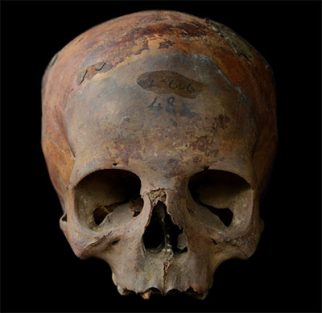
Vol. 59 / No. 2
By: Kate Quinn
When Museums Tackle Tough Topics: New Public Programs Foster Community Dialogue
Update on the Morton collection For updates on the Museum’s work towards the repatriation and burial of the Morton Collection, […]
View Article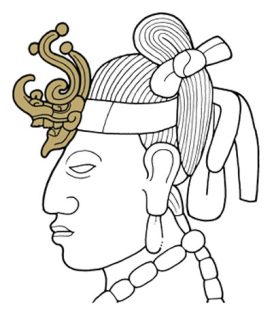
Vol. 59 / No. 2
By: Joanne Baron
The Mystery Queen of La Florida-Namaan
During the 2016 field season at La Florida, a fascinating discovery was made. A large stela with the carved image […]
View Article
Vol. 59 / No. 2
By: Daniel Bauer
From Plague to Profit: Chambira Weaving in Amazonian Peru
Global integration, through tourism and conservation efforts, has shaped resource use in rural Amazonia. The chambira (chahm-BEE-ra) palm (Astrocaryum chambira), […]
View Article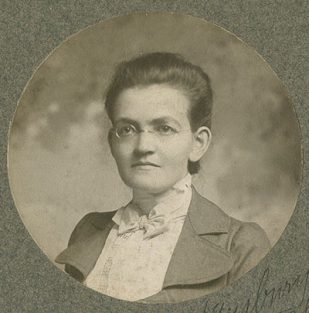
Vol. 59 / No. 2
By: Janet Simon
Mary Louise Baker: A Woman of Uncommon Talent
Mary Louise Baker worked at the Penn Museum as an artist and restorer for 28 years, from 1908 until 1936, […]
View Article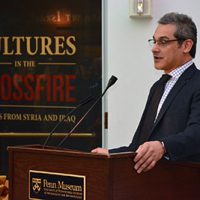
Vol. 59 / No. 2
By: Julian Siggers
The Power of Programming: From the Director
As the November groundbreaking for renovations to our Coxe and Harrison Wings approaches, we have been spending an enormous amount […]
View Article
Vol. 59 / No. 2
By: Jane Hickman
Unsung Heroes: From the Editor
For 130 years, men and women have worked on excavations and expeditions for the Penn Museum, sometimes under extraordinary and […]
View ArticleVol. 60 / No. 1
By: Alessandro Pezzati
Looking Back
Alfred Bendiner (1899-1964) was a Philadelphia architect and artist best known for his caricatures, which for many years appeared weekly […]
View Article
Vol. 60 / No. 1
By: Marie-Claude Boileau
Analyzing Slipper Coffins from Nippur: In the Labs
The opportunity to analyze, with my students, amazing glazed ceramic coffins from Nippur—some of the iconic objects featured in the […]
View Article
Vol. 60 / No. 1
By: Jessica Bicknell and Ellen Owens
From the First Cities to Our City: Connecting Philadelphians to The Past, One Tablet at a Time
Aspects of our everyday lives as city denizens have been shaped by—and in some cases, stem directly from—the first cities […]
View Article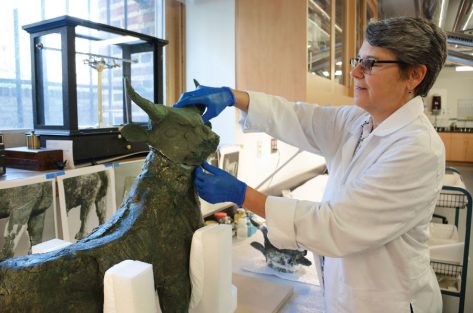
Vol. 60 / No. 1
By: Lynn Grant
Foundational Work: Conservation and The Middle East Galleries
Conservation is involved very early in the process of creating new Penn Museum galleries and exhibitions. When the curators and […]
View Article
Vol. 60 / No. 1
By: Brian Spooner
Nomads in The Middle East
Nomads are mobile tent-dwelling pastoralists in areas of the arid zone (which stretches from Morocco to China, with the area […]
View Article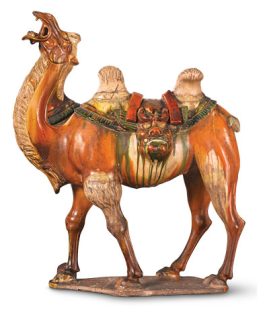
Vol. 60 / No. 1
By: Brian Spooner
Globalization and The Ancient World
Globalization began in the Middle East. It is the story of larger and larger numbers of people connecting and interacting […]
View Article
Vol. 60 / No. 1
By: Renata Holod
Locus of Civilization: Cities of the Islamic and Persianate World
Ibn Khaldun, the great 14th-century CE historian and philosopher, stated that without the city (Arabic: madina) there can be no […]
View Article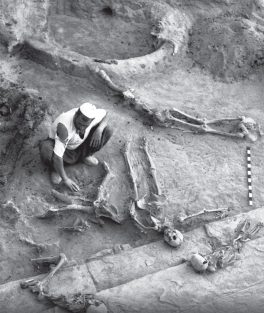
Vol. 60 / No. 1
By: Katherine Burge and Lauren Ristvet
Last Day at Hasanlu: An Iron Age City Frozen in Time
In the summer of 1958, a young archaeologist by the name of Robert H. Dyson, Jr., led a team from […]
View Article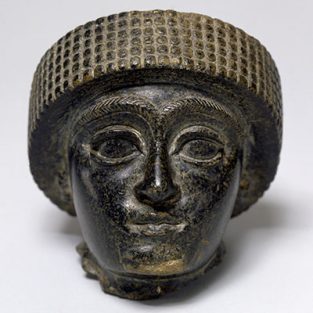
Vol. 60 / No. 1
By: Holly Pittman
Highlands and Lowlands: The Interaction of Communities
As it is today, southern Mesopotamia (modern Iraq), in the deep past, was a distinctive landscape. It provided, in abundance, […]
View Article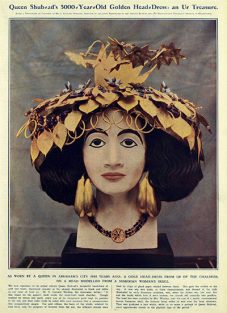
Vol. 60 / No. 1
By: William B. Hafford
A Spectacular Discovery: Burials Simple and Splendid
Of more than 2,000 total graves, only 16 had the structure, wealth, and evidence of human sacrifice that convinced the […]
View Article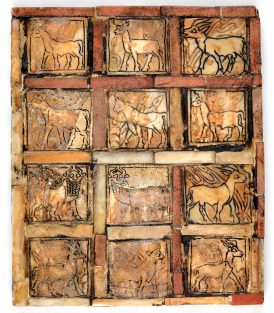
Vol. 60 / No. 1
By: William B. Hafford
Mesopotamian City Life: Four Thousand Years Ago
Modern cities have neighborhoods, shops, factories, religious centers, and cemeteries. They have transportation networks along streets and alleyways, and drainage […]
View Article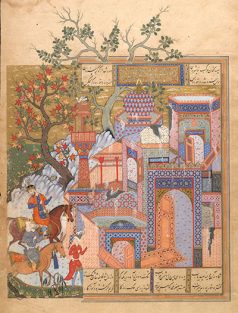
Vol. 60 / No. 1
By: Steve Tinney
The Uses of Writing: Inscribed Objects and Texts in the Middle East Galleries
Written texts and inscribed objects are an essential part of the stories told in the Middle East Galleries and feature […]
View Article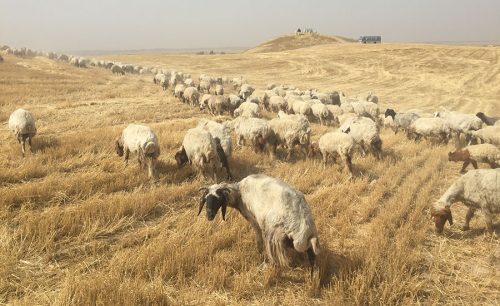
Vol. 60 / No. 1
By: Naomi F. Miller
Adaptation and Change: The Development of Agriculture in the Ancient Middle East
The geography of the Middle East provided both challenges and opportunities for the people who lived there. Most of the […]
View Article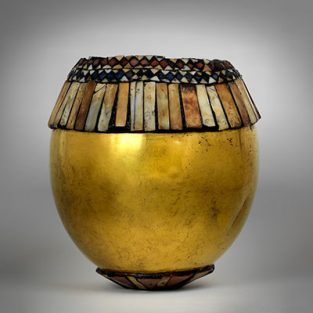
Vol. 60 / No. 1
By: Richard L. Zettler and William B. Hafford
The Thrill of Discovery: Penn Museum Excavations in Iraq and Iran
England and France have done a noble work of exploration in Assyria and Babylonia. It is time for America to […]
View Article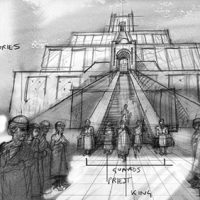
Vol. 60 / No. 1
By: Jane Hickman
Making the Middle East Galleries: A Conversation with Julian Siggers, Dan Rahimi, and Steve Tinney
Julian Siggers, Ph.D., is Williams Director of the Penn Museum; Dan Rahimi is Executive Director of Galleries; Steve Tinney, Ph.D., […]
View Article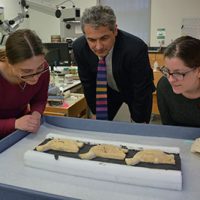
Vol. 60 / No. 1
By: Julian Siggers
Telling the Human Story: From the Director
Dear Friends, This issue of Expedition celebrates the opening of the Penn Museum’s new Middle East Galleries. These Galleries trace […]
View Article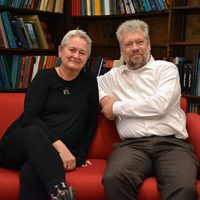
Vol. 60 / No. 1
By: Jane Hickman and Steve Tinney
Over a Century of Exploration in the Middle East: From the Editor
The Middle East Galleries, opening on April 21, 2018, celebrate the Penn Museum’s long history of excavation and research in […]
View Article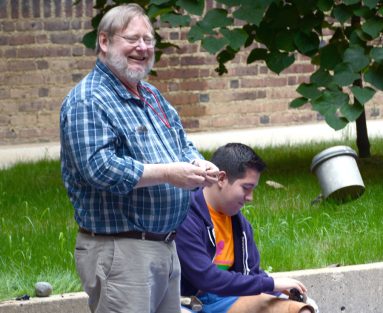
Vol. 60 / No. 2
By: Deborah I. Olszewski
Harold Dibble: Scientist and Mentor, 1951-2018
Harold L. Dibble, preeminent paleoanthropologist, passed away on June 10, 2018, age 66. He was first and foremost a scientist […]
View Article
Vol. 60 / No. 2
By: Chantel E. White
In Search of Emily Dickinson’s Gardens
A sepal, petal, and a thorn Upon a common summer’s morn— A flask of Dew—A Bee or two— A Breeze—a […]
View Article
Vol. 60 / No. 2
By: Katherine Moore
Creating Object Biographies: Penn Students Explore the Museum Collection
When the Center for the Analysis of Archaeological Materials (CAAM) offered its first classes in September 2014, the Teaching Specialists […]
View Article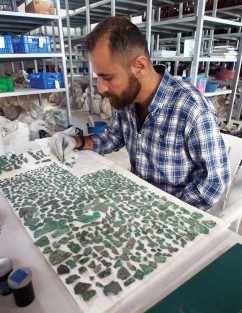
Vol. 60 / No. 2
By: Jessica S. Johnson
Saving Iraq’s Cultural Heritage: Training Iraqi Conservators at Gordion, Turkey
Over the past four years, the Penn Museum’s Gordion Archaeological Project has hosted three Iraqi cultural heritage professionals during our […]
View Article
Vol. 60 / No. 2
By: Hans De Zeeuw
The Ottoman Tanbûr: Introducing the Long-Necked Lute of Ottoman Classical Music
The Ottoman Empire emerged in the early 14th century in Anatolia as a result of the disintegration of the Seljuk […]
View Article
Vol. 60 / No. 2
By: Kristen Pearson
The Philadelphia Mint: A Coinage Legacy
Congress passed the The Coinage Act on April 2, 1792, establishing the United States Mint and setting the U.S. dollar […]
View Article
Vol. 60 / No. 2
By: Jane Sancinito
Like a Bad Penny: Ancient Numismatics in the Modern World
Numismatics (pronounced nu-mis-MAT-ics) is the study of coins, paper money, tokens, and medals. More broadly, numismatists (nu-MIS-ma-tists) explore how money […]
View Article
Vol. 60 / No. 2
By: Julian Siggers
The Transformation Continues: From the Director
Dear Friends, Our Building Transformation is truly underway. Among the many new experiences visitors will en-counter next fall will be, […]
View Article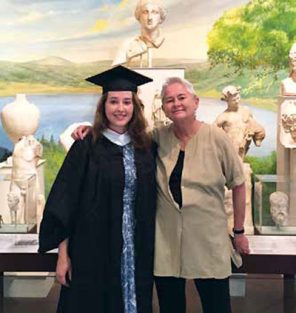
Vol. 60 / No. 2
By: Jane Hickman
An Eclectic Fall Issue: From the Editor
The Fall 2018 issue of Expedition includes four articles on various topics: a primer on how to read and understand […]
View ArticleVol. 60 / No. 3
By: Gareth Darbyshire
Professor G. Kenneth Sams, 1943-2018: Portrait
G. Kenneth Sams, former director of Penn’s long-lived Gordion Project, and Professor of Classical Archaeology at UNC Chapel Hill, has […]
View ArticleVol. 60 / No. 3
By: Fiona Jensen-Hitch
From Artist to Exhibition: Research Notes: Listening to the Voice of the Storyteller
As soon as I set eyes on the photograph in the Penn Museum’s online catalog, I knew the ceramic figure […]
View ArticleVol. 60 / No. 3
By: Paul Verhelst
Stone that Flows: Researching Ancient Egyptian Faience and Glass
Of all the materials used to craft objects in ancient Egypt, nothing catches the eye quite like Egyptian faience (thnt […]
View ArticleVol. 60 / No. 3
By: Jane Hickman
Statue of a Cat: Favorite Object
Cats in Ancient Egypt were kept as pets and as sacred animals dedicated to Bastet, the goddess of fertility and […]
View ArticleVol. 60 / No. 3
By: Anne Schiller
Survivors of San Lorenzo: Heritage and Change in a Florentine Market
As globalization propels people and commerce across international borders, landmark destinations like the San Lorenzo Market in Florence, Italy, are […]
View ArticleVol. 60 / No. 3
By: Alessandro Pezzati
The Matto Grosso Expedition: Brazil, 1931
Few expeditions of the Penn Museum have been as colorful as the Matto Grosso Expedition of 1931. Organized by Captain […]
View Article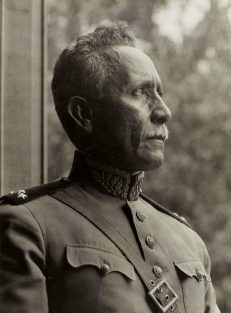
Vol. 60 / No. 3
By: Eric H. Hobson
Brazil From Above: General Rondon and the Matto Grosso Expedition
In 1931, the Penn Museum’s Matto Grosso Expedition landed a serendipitous opportunity to court the celebrated Brazilian Army general who […]
View ArticleVol. 60 / No. 3
By: Christina Griffith
Dogs and Cats and Birds, Oh My!: The Penn Museum's Egyptian Animal Mummies
While most visitors to the Museum are drawn to the mummified people from Ancient Egypt, humans are not alone in […]
View Article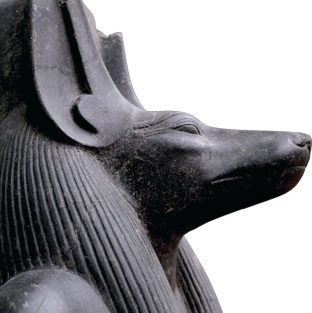
Vol. 60 / No. 3
By: Salima Ikram and Paul Nicholson
Sacred Animal Cults in Egypt: Excavating the Catacombs of Anubis at Saqqara
A recent excavation at Saqqara, Egypt, is exposing an ancient bustling economy associated with pilgrims and animal cults. Catacombs dedicated […]
View Article
Vol. 60 / No. 3
By: Julian Siggers
The Transformation Continues: From the Director
Dear Friends, The start of this new year seems a good time to reflect on the exciting changes that the […]
View ArticleVol. 60 / No. 3
By: Jane Hickman
Searching for Stories: From the Editor
I am often asked how I find stories for Expedition. Some are written by Museum curators and keepers as well […]
View Article
Vol. 61 / No. 1
By: Brian Rose
Portrait: Donald White
One of the Penn Museum’s most prominent archaeologists, Donald White, passed away on November 21 after a tragic car accident. […]
View Article
Vol. 61 / No. 1
By: Elizabeth G. Hamilton and Joyce C. White
An Abandoned City in Laos: Research Notes
Laos is one of the least archaeologically explored countries in the world, largely because geopolitics of Southeast Asia through much […]
View Article
Vol. 61 / No. 1
By: Olivia Hayden
Investigating Metallurgical Knowledge in the Iron Age Eastern Mediterranean: In the Labs
The transformation of raw metal into finished objects consists of an intense cycle of heating, cooling, and hammering, and, when […]
View Article
Vol. 61 / No. 1
By: Andrew Williams
Survey in Vayots Dzor, Armenia: From the Field
A team from the University of Pennsylvania, headed by Dr. Peter J. Cobb, recently the Kowalski Family Teaching Specialist at […]
View Article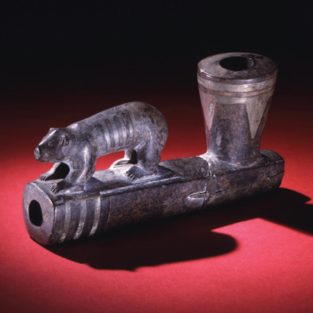
Vol. 61 / No. 1
By: Christina Griffith
The Bear Pipe Bowl: Favorite Object
Most people have a favorite animal that they identify with in some way or in spirit. For me, the bear […]
View Article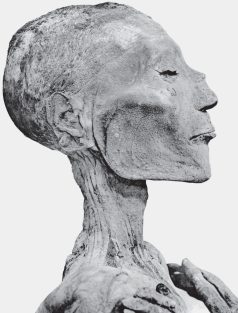
Vol. 61 / No. 1
By: Michael R. Zimmerman
A Journey Into the Human Body: Studying Mummies to Understand Ancient Disease
As an anthropologist and retired pathologist, Dr. Michael Zimmerman’s research focuses on mummy paleopathology. He details what can be accomplished […]
View Article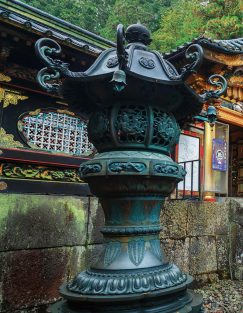
Vol. 61 / No. 1
By: Yoko Nishimura
The Tale of the Tokugawa Artifacts: Japanese Funerary Lanterns at the Penn Museum
A bronze dedicatory lantern that previously stood at the back of the quiet inner courtyard of the Penn Museum waited […]
View Article
Vol. 61 / No. 1
By: Christina Griffith
Halley’s Comet: A Frequent Guest in Earth’s Cosmic Backyard
Every 75 years or so, Halley’s Comet, also known as Comet Halley, passes through Earth’s neighborhood along its orbit. Since […]
View Article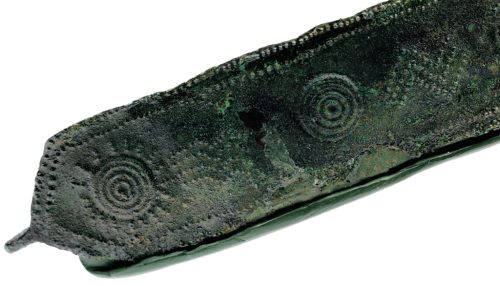
Vol. 61 / No. 1
By: Jean Macintosh Turfa
A Comet Shall Shine Forth: A Bronze Belt From an Etruscan Tomb
A depiction of a comet may have been discovered on an artifact in the Museum’s Etruscan collection. This rare narrative […]
View ArticleVol. 61 / No. 1
By: Julian Siggers
The Sphinx Is On The Move: From the Director
Dear Friends, It is my great pleasure to share the monumental news: our iconic Sphinx of Ramesses II is on […]
View ArticleVol. 61 / No. 1
By: Jane Hickman
Sixty Years of Expedition: From the Editor
In the fall of 1958, the first issue of Expedition magazine was published by the Penn Museum. Contents included an […]
View Article
Vol. 61 / No. 2
By: Alessandro Pezzati
The Last Step in a Long Journey: Moving Monuments From Piedras Negras Into the Penn Museum, 1933; Looking Back
IN 1930, J. Alden Mason, American Section Curator, arranged for an unprecedented loan from the Government of Guatemala of Maya […]
View ArticleVol. 61 / No. 2
By: Jane Hickman
Portrait: Elin Danien (1929-2019)
—To the memory of my hero, my co-conspirator, and my very good friend. ELIN DANIEN was more than a force […]
View Article
Vol. 61 / No. 2
By: Heather J. Sharkey
A Famous Queen Mother from Benin: Favorite Object
THE QUEEN MOTHER, or “Iyoba,” was a powerful figure in the Edo kingdom of Benin, which ruled parts of the […]
View Article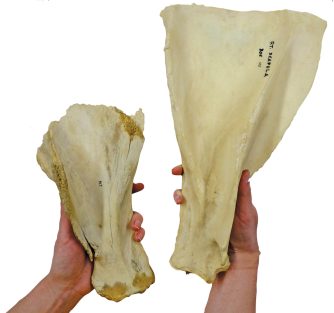
Vol. 61 / No. 2
By: Marie-Claude Boileau, Moritz Jansen, Janet Monge, Katherine Moore and Chantel White
In the Labs: Celebrating Five Years of CAAM
AS A JOINT ENDEAVOR between the Penn Museum and the University of Pennsylvania School of Arts and Sciences, the Center […]
View ArticleVol. 61 / No. 2
By: Christina Griffith
The Lost Wax Casting Technique: A Step-By-Step Guide
THE PROCESS FOR CASTING GOLD objects like ornaments and jewelry is the same as that for casting Asante brass weights. […]
View Article
Vol. 61 / No. 2
By: Christina Griffith
The Asante Gold Weights: Practical, Unique, Artistic Tools of the Trade
Within the glass cases in the Africa Galleries, they appear as miniaturized trophies, toys, or jewelry, but these beautifully crafted […]
View Article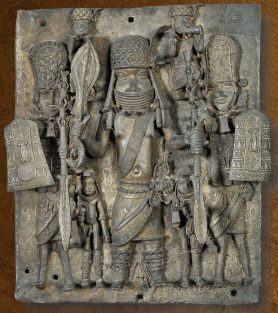
Vol. 61 / No. 2
By: Jane Hickman, Lauren Cooper, Dwaune Latimer, Alioune Diack and Jessica Bicknell
A Selection of Objects from Our Africa Galleries
THE AFRICA COLLECTION at the Penn Museum includes objects that were purchased by or gifted to the Museum or collected […]
View Article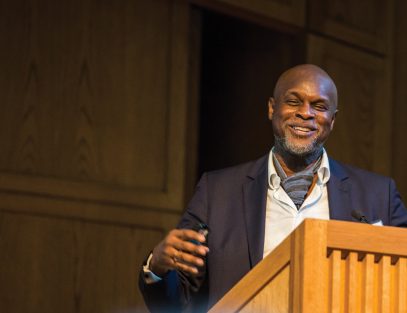
Vol. 61 / No. 2
By: Jane Hickman and Alyssa Connell Haslam
Making the Africa Galleries: A Conversation with Tukufu Zuberi
TUKUFU ZUBERI, PH.D., is the Curator of the Africa Galleries. He is the Lasry Family Professor of Race Relations, and […]
View Article
Vol. 61 / No. 2
By: Lucy Fowler Williams
A Continuous Thread: Subversion and Solidarity in Maya Cloth
FOR 1,500 YEARS, MAYA WOMEN HAVE WOVEN cotton garments with designs that depict the Maya cosmos and supernatural beings that […]
View Article
Vol. 61 / No. 2
By: Simon Martin
Divinity and Power in the Ancient Americas: The Reimagine Mexico and Central America Gallery
November 2019 marks the opening of the transformed Mexico and Central America Gallery. The new space displays some of the […]
View ArticleVol. 61 / No. 2
By: Julian Siggers
Welcome to the New Penn Museum: From the Director
Dear Friends, In 1926, the Coxe (Egyptian) Wing opened, and visitors thronged the lower gallery to see the great Sphinx […]
View Article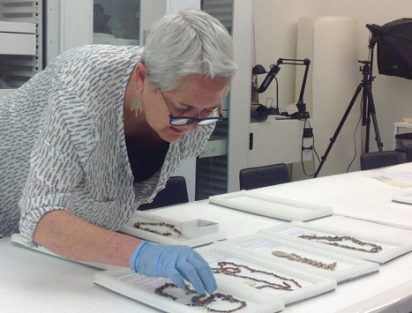
Vol. 61 / No. 2
By: Jane Hickman
Ten Years as Editor: From the Editor
I began as Editor of Expedition in 2009, just after I finished graduate school at Penn. Issue 51.2 that year […]
View Article
Vol. 62 / No. 1
By: Jill Meyer
Meet Our Members: Member News
Jill Meyer is a docent for the Asia Galleries and a member of the Museum. I BECAME A DOCENT in […]
View Article
Vol. 62 / No. 1
By: Asiyah Ball and Hoang Vu
High School Students Intern at CAAM: In The Labs
Asiyah’s Experience This summer I was given the amazing opportunity to work under Dr. Marie-Claude Boileau in the Center for […]
View Article
Vol. 62 / No. 1
By: Sheridan Small
Collecting for Philadelphia Museums: The Story of Robert H. Lamborn
Collecting for Philadelphia Museums The Story of Robert H. Lamborn [authors] Many names in history go unrecorded, but not always […]
View Article
Vol. 62 / No. 1
By: Allan Meyers and Megan Adams
Contours of Inequality: Landscapes of Colonial Slavery on a Bahama Island
Contours of Inequality Landscapes of Colonial Slavery on a Bahama Island [authors] TOPOGRAPHIC RELIEF—the rise and fall of the land—may […]
View Article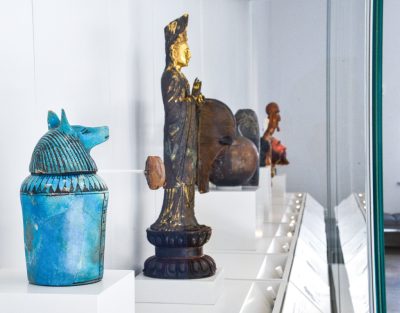
Vol. 62 / No. 1
By: Jane Hickman
Artifacts from Around the World: Welcome to the New Sphinx Gallery
Artifacts from Around the World Welcome to the New Sphinx Gallery By: Jane Hickman and Penn Museum Curators and Keepers […]
View Article
Vol. 62 / No. 1
By: Julian Siggers
More Reasons to Visit the Museum: From the Director
Dear Friends, 2019 was a year of celebrations. In June, we moved a Sphinx. In November, we completed the first […]
View Article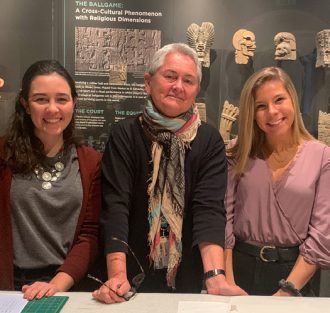
Vol. 62 / No. 1
By: Jane Hickman
Teamwork: From the Editor
The last few years have been a whirlwind of activity at the Museum, with ongoing renovations leading to the opening […]
View Article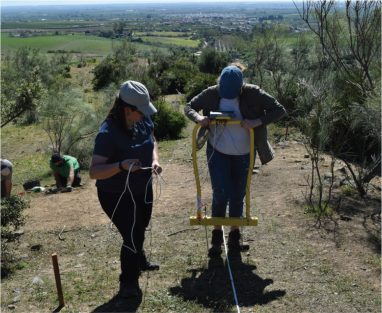
Vol. 62 / No. 2
By: Jason T. Herrmann
In The Labs: Teaching Geophysical Survey
IN THE FALL OF 2019, the Center for the Analysis of Archaeological Materials (CAAM) Digital Archaeology Lab acquired three new […]
View Article
Vol. 62 / No. 2
By: C. Brian Rose
Field Trip: A Penn Adventure in Turkey
IN THE SECOND WEEK of March 2020, during Penn’s Spring Break, my colleague Bridget Murnaghan and I took a group […]
View Article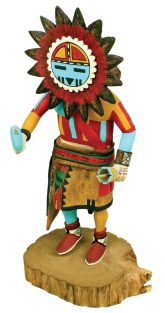
Vol. 62 / No. 2
By: Dan Lomastro, Jessica Carmine and Lucy Fowler Williams
Research Notes: High Volume Digitization: Bringing Southwest Collections to Light
OVER 17,130 Southwest archaeological and ethnographic objects in the Penn Museum’s American collection are now visible and accessible online to […]
View Article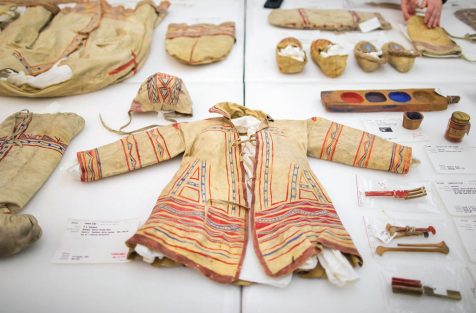
Vol. 62 / No. 2
By: Louisa Shepard
Connecting the Present to the Past: Silent Objects Speak to Naskapi Visitors
Connecting the Present to the Past Silent Objects Speak to Naskapi Visitors By Louisa Shepard THE AMERICAN SECTION collection is […]
View Article
Vol. 62 / No. 2
By: Christina Griffith
Revealing Ancient Faces: The Reconstruction of a Neandertal
Revealing Ancient Faces The Reconstruction of a Neandertal [authors] POST-MORTEM facial reconstruction is a technique that uses anatomical knowledge of […]
View Article
Vol. 62 / No. 2
By: Julian Siggers
A Source of Inspiration: From the Director
Dear Friends, I hope that this issue of Expedition finds you well. While the Museum’s building has been closed during […]
View Article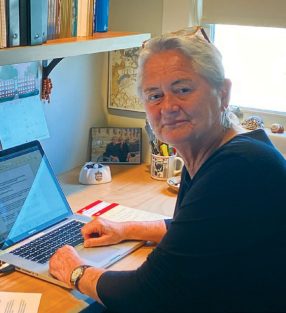
Vol. 62 / No. 2
By: Jane Hickman
Working Remotely: From the Editor
The Summer 2020 issue of Expedition was edited and designed entirely in our homes. Thanks to Remy, Alyssa, Alex, Page, […]
View Article
Vol. 62 / No. 3
By: Brian I. Daniels
The Pennsylvania Declaration at 50
ARCHAEOLOGICAL SITE LOOTING is an ancient problem, but one that intensified after World War II as museums and collectors sought […]
View Article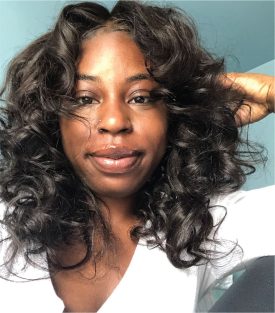
Vol. 62 / No. 3
By: Khayla Saunders
Summer Internships—Virtually: Working Remotely
“HI, MY NAME IS ____, I am from ____, I attend Delaware/Georgia/Tuskegee/Syracuse/Penn, and I want to be an anthropologist/foreign policy […]
View Article
Vol. 62 / No. 3
By: Yupeng Wu
A Miao Baby Carrier from China: Favorite Object
THIS EMBROIDERED MIAO BABY CARRIER is typical of those made in Zhijin (织金), a county in Guizhou province in southwest […]
View Article
Vol. 62 / No. 3
By: Karen M’Closkey
Seeds of Change: A View From Philly's Rivers
Plants are on the move. Of course, they always have been—whether dispersed as seeds in the droppings of birds or […]
View Article
Vol. 62 / No. 3
By: Kathryn Butler Reber
Changes in a Penn Campus Oasis: A View From Kaskey Park
James G. Kaskey Memorial Park is a small garden on the southwest end of Penn’s campus that was set aside […]
View Article
Vol. 62 / No. 3
By: Anthony S. Aiello, Timothy A. Block and C. Skema
Public Gardens and Climate Change: A View From The Morris Arboretum
People must be convinced that if we want to continue to exist as a species, it is imperative that we […]
View Article
Vol. 62 / No. 3
By: Miranda E. Mote
The Art of Gardening in a Pennsylvania Woods: The Garden of Francis D. Pastorius
SEVERAL CITY BLOCKS separate what is today 6019 Germantown Avenue and the green space of the Awbury Arboretum. At one […]
View Article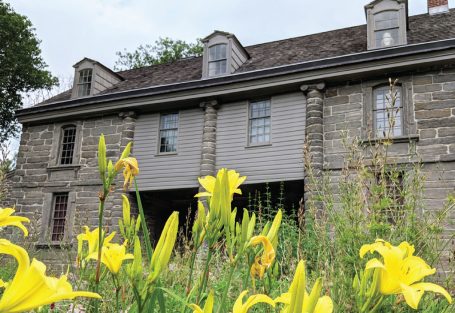
Vol. 62 / No. 3
By: Chantel White, Elizabeth Coulter, Bevan Pearson and Juliet Stein
A Botanical Discovery at Bartram’s Garden: Evidence for Preserved Plant Material
TODAY, visitors to Bartram’s Garden, located along the Schuylkill River in southwest Philadelphia, are greeted by a green terraced landscape […]
View Article
Vol. 62 / No. 3
By: Alexandria Mitchem
Unearthing the Roots of the Past: Archaeology at Historic Bartram's Garden
ESTABLISHED around 1728, Bartram’s Garden is the oldest surviving botanical garden in the United States. John Bartram (1699–1777) was a […]
View Article
Vol. 62 / No. 3
By: Marie-Claude Boileau, Justin Lynch and Yuyang Wang
Late 18th- to Early 19th- Century Flowerpots at The Woodlands
FLOWERPOTS—earthenware pots that are built to contain plants, not to be confused with ornamental urns—have a long history that dates […]
View Article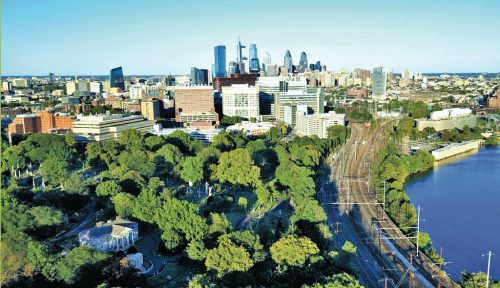
Vol. 62 / No. 3
By: Jason Herrmann, Kacie Alaga and Katie Breyer
Reconstructing a Historic Landscape: Geophysical Prospection at the Woodlands
THE COUNTRY ESTATE of native Philadelphian William Hamilton (1745–1813), known as The Woodlands, included much of the land now occupied […]
View Article
Vol. 62 / No. 3
By: Robert McCracken Peck
A Lucky Find: Seed Packets Shed Light on Philadelphia's Horticultural History
BECAUSE OF the ephemeral nature of gardens and the plants they contain, the history of horticulture is generally studied through […]
View Article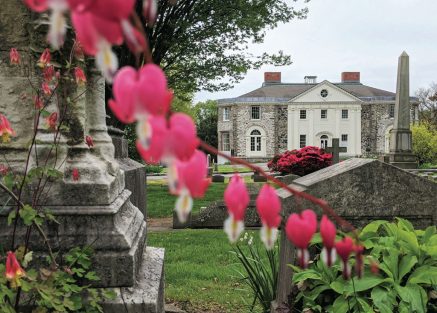
Vol. 62 / No. 3
By: Chantel White
An Introduction to the Garden History of Philadelphia
ONE OF THE GREATEST GIFTS offered by gardens is the enduring way they connect the living world to the past. […]
View Article
Vol. 62 / No. 3
By: Steve Tinney, Melissa Smith and Amanda Mitchell-Boyask
From the Co-Interim Directors
Dear Friends, Our gardens are part of the Penn Museum experience. All year, the Warden Garden and Stoner Courtyard invite […]
View Article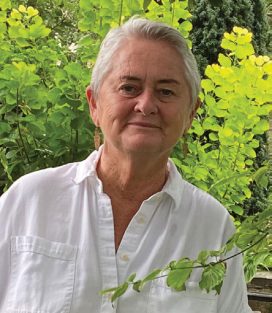
Vol. 62 / No. 3
By: Jane Hickman
From the Editor
We are fortunate to have many public gardens in the Philadelphia region that are wonderful places to visit in all […]
View Article
Vol. 63 / No. 1
By: Gabriel Jermaine Vanlandingham-Dunn
Blood In A Box: Wrestling with Skin and History Through an Mbila
Artifact Perspective As a black American child growing up in West Baltimore, Maryland during the 1980s, I was fortunate enough […]
View Article
Vol. 63 / No. 1
By: Kevin A. Schott and Raquel Quinones
Steps Towards Decolonizing a Museum: Sharing Diverse Voices
Learning Lessons Serving Our Public Audiences The year 2020 has brought many changes to museums. Among the most important are […]
View Article
Vol. 63 / No. 1
By: Katherine M. Moore
Pivoting in CAAM: Getting Hands-On-Learning to Remote Students
In The Labs This has been a year of teaching remotely in the Center for the Analysis of Archaeological Materials […]
View Article
Vol. 63 / No. 1
By: Stephen Lang
Identifying an Ancient Script
One of the ongoing projects in the Asian Section is an attempt to identify, transcribe, and translate any text found […]
View Article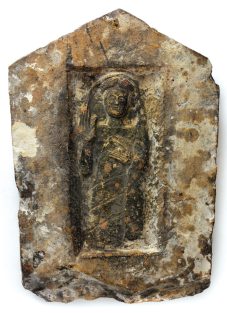
Vol. 63 / No. 1
By: Jean Macintosh Turfa
Fragments of Carthage Rediscovered: Discoveries From Our Museum Storerooms
Fragments of Carthage Rediscovered Discoveries From Our Museum Storerooms [authors] The objects in the Penn Museum store rooms—many collected more […]
View Article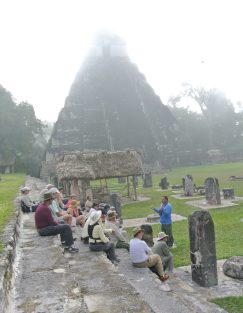
Vol. 63 / No. 1
By: Lucy Fowler Williams and Fernando Madrid
Tikal—Oasis in Time and War
Tikal—Oasis in Time and War [authors] Fernando Madrid was born 20 miles from Tikal in El Remat Village at the […]
View Article
Vol. 63 / No. 1
By: Marshall Joseph Becker
Understanding the Ancient Maya: Contributions of the Penn Museum’s Excavations at Tikal
Understanding the Ancient Maya Contributions of the Penn Museum’s Excavations at Tikal [authors color=”white”] Over the years, Expedition has provided […]
View Article
Vol. 63 / No. 1
By: Megan C. Kassabaum and Austin J. Bell
From Lantern Slides to Snapchat: The Key Marco Collection Rediscovered
From Lantern Slides to Snapchat The Key Marco Collection Rediscovered [authors color=”white”] The Penn Museum holds an exceptional collection of […]
View ArticleVol. 63 / No. 1
By: Amanda Mitchell-Boyask
Diverse Perspectives: From the Publisher
In the last issue of Expedition I was, with my co-interim directors Melissa Smith and Steve Tinney, on the other […]
View Article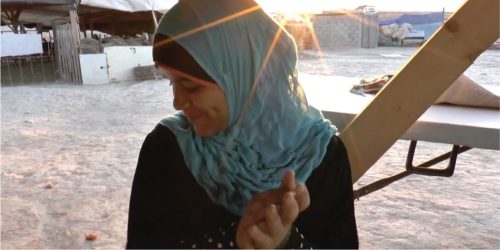
Vol. 63 / No. 2
By: Kate Pourshariati
From the Archives: Second Sunday Culture Films
Documentaries Without Borders SECOND SUNDAY CULTURE FILMS began in 2010, after I proposed a film series connecting the Wolf Humanities […]
View Article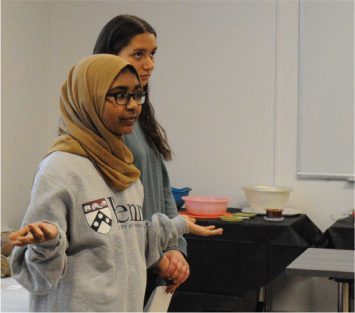
Vol. 63 / No. 2
By: Anne Tiballi, Sabirah Mahmud, Zahra Rice and Sophie Roach
Learning Lessons: Engaging Our University Community
Jazz Combos Student Exhibition Interns Explore Jazz Past, Present, and Futures WHEN PENN CLOSED ITS CAMPUS in March 2020, the […]
View Article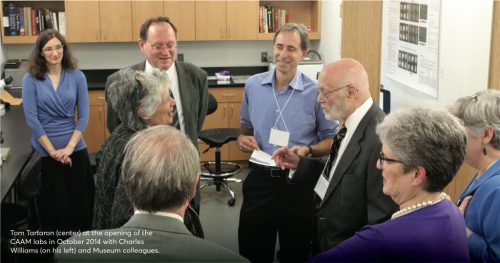
Vol. 63 / No. 2
By: Tom Tartaron
In The Labs: Raising the Penn Museum's Profile as a Leader in Materials Analysis
IN JULY 2020, I was honored to be named the Executive Director of the Center for the Analysis of Archaeological […]
View Article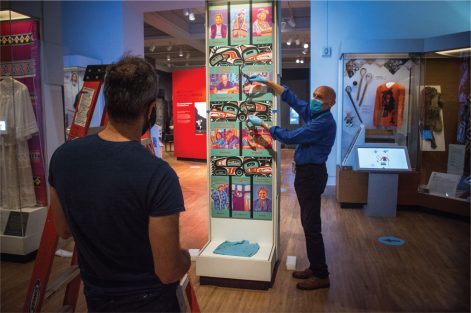
Vol. 63 / No. 2
By: Lucy Fowler Williams and X̱'Unei Lance Twitchell
Keeping the Tlingit Thought World Alive
Keeping the Tlingit Thought World Alive The Vaunting Ambition of King Pyrrhus at Butrint [authors color=”white”] A new rotation of […]
View Article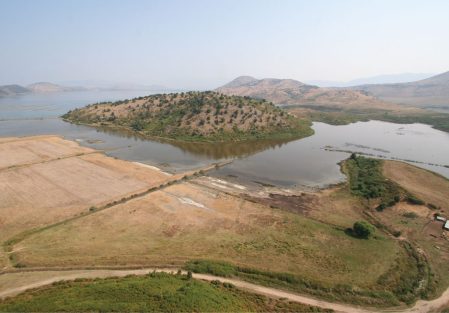
Vol. 63 / No. 2
By: David Hernandez and Richard Hodges
Kalivo: The Vaunting Ambition of King Pyrrhus at Butrint
Kalivo The Vaunting Ambition of King Pyrrhus at Butrint [authors] THE MAJESTIC, fortified hilltop site of Kalivo is always overshadowed […]
View Article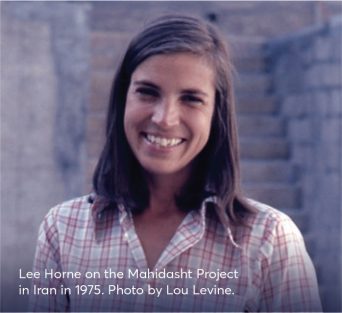
Vol. 63 / No. 2
By: Richard L. Zettler
An Unforgettable Smile: Remembering Lee Horne, GR88
LEE HORNE, Editor of Expedition 1990–1996, whose infectious smile and ready sense of humor lit up the Penn Museum for […]
View Article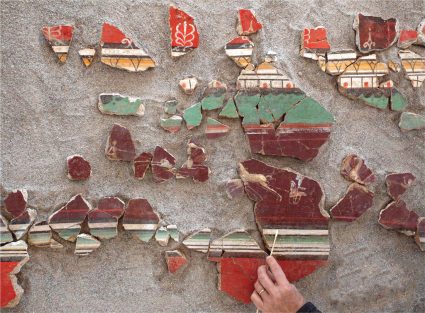
Vol. 63 / No. 2
By: Charles K. Williams, II
Surprise and Luck in a Roman Fresco Project
ARCHAEOLOGY always has a certain element of surprise and luck connected to it, for it is unpredictable to divine what […]
View Article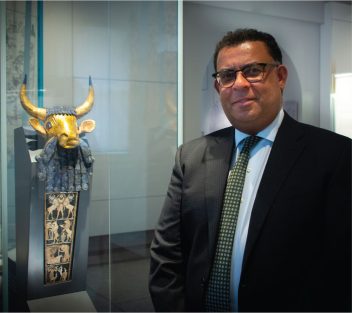
Vol. 63 / No. 2
By: Christopher Woods
From the Williams Director: Community Partnerships
Dear Friends, By the time you read these thoughts, my family and I will have officially taken up residence in […]
View ArticleVol. 63 / No. 2
By: Amanda Mitchell-Boyask
From the Publisher: A Snapshot in Time
Our cover image offers a glimpse behind the scenes this past spring, as Bill Wierzbowski, Keeper, American Section, worked with […]
View Article
Vol. 63 / No. 3
By: Zoë Rayn Evans, Megan Kassabaum, Sarah Linn and Douglas Smit
Heritage West: The West Philadelphia Community Archaeology Project
Confronting the troubling histories of racial and social injustice in West Philadelphia, specifically those of the historically Black neighborhoods north […]
View Article
Vol. 63 / No. 3
By: Linda Lo
Summer Internships: A DEEPER DIVE MUSEUM EXPERIENCE
From June to August, I spent every weekday morning thinking of different ways to greet our summer campers. The younger […]
View Article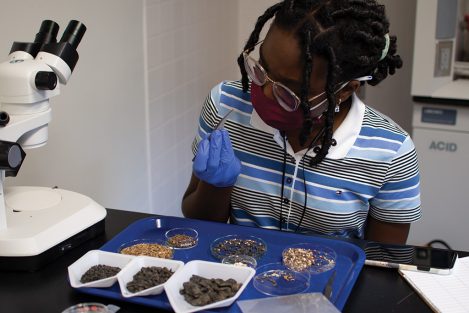
Vol. 63 / No. 3
By: Ashley B. Ray
From Remote Learning to In-Person Research in CAAM
I wanted to get involved with CAAM ever since I was accepted to Penn. Archaeological science was a novel concept […]
View Article
Vol. 63 / No. 3
By: Sajjad Alibaigi, Alireza Moradi-Bisotuni and Nourollah Karimi
What Can a Door Socket Tell Us?: Intriguing Discoveries at Quwākh Tapeh
In 1992, the accidental discovery of a ceramic vessel at Quwākh Tapeh, a historical key site along the Silk Road […]
View Article
Vol. 63 / No. 3
By: Patrice Foutakis
Underwater Archaeological Treasures in Modon Bay
The Bay of Modon (the name given by the Venetians to the town of Methoni, Messenia, in Greece) connects three […]
View Article
Vol. 63 / No. 3
By: Jason T. Herrmann and Jackson Clark
Mapping the Urban Plan of Ancient Motya: Summer 2021 Geophysical Survey at Isola San Pantaleo, Sicily
When university travel restrictions were lifted and international borders reopened in May, we traveled to Isola San Pantaleo, a small […]
View Article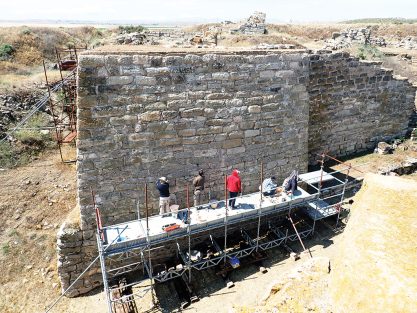
Vol. 63 / No. 3
By: C. Brian Rose
Repairing Damage Inflicted by the Persians 2,500 Years Ago: Summer 2021 Architectural Conservation Work at Gordion, Turkey
Fieldwork at Gordion in 2021 focused on architectural conservation, object conservation, and research for a wide variety of manuscripts dealing […]
View Article
Vol. 63 / No. 3
By: Chantel White
Investigating Roman Foods at Lechaion Harbor, Greece: The Humble Recipes of Ancient Dockworkers
Historical Recipes For someone fascinated by food history, what could be better than tasting an ancient recipe? Food engages all […]
View Article
Vol. 63 / No. 3
By: Jeremy A. Sabloff
Pamela Hearne Jardine: An Appreciation
This is not an obituary but an appreciation of all that Pam Jardine (1939–2021) accomplished and contributed during her many […]
View Article
Vol. 63 / No. 3
By: Christopher Woods
From the Williams Director: Connecting with Our Neighbors
Dear Friends, Last issue I shared with you the Penn Museum’s expanded commitment to community consultation and partnership as we […]
View ArticleVol. 63 / No. 3
By: Amanda Mitchell-Boyask
From the Publisher: Beyond the Labs
In September 2014, we opened the Center for the Analysis of Archaeological Materials (CAAM), housed in a renovated and well-equipped […]
View Article
Vol. 64 / No. 1
By: Kate Pourshariati
From the Archives: Time Travel With the Film Archives Collections
Recently the Penn Museum hit a new milestone of views of its archival and other film collections: an astonishing 13 […]
View Article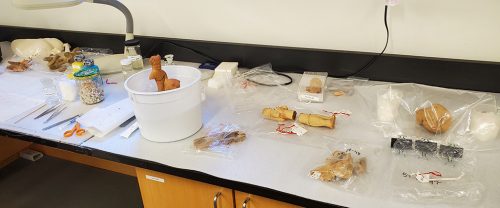
Vol. 64 / No. 1
By: Jessica Byler and Jessica Byler
Conserving the Sanctuary of Apollo Hylates Artifacts
In the Conservation Lab, we are working on objects for the new Eastern Mediterranean Gallery opening this coming November. The […]
View Article
Vol. 64 / No. 1
By: Carlos José Pérez Sámano
Poetry for the Immigrant Community
When I was invited to become the artist in residence for the Penn Museum I was shocked. It was the […]
View Article
Vol. 64 / No. 1
By: Ashley Fuchs, Cindy Srnka, Jackson Clark, Sarah Linn and Douglas Smit
Heritage in Our Hands:: UNESCO 50 Years Later
Each year, the Student Exhibition Program selects three Penn undergraduates to curate a new exhibition based around a theme. This […]
View Article
Vol. 64 / No. 1
By: Vanessa Workman
From Mine to Microscope: Analyzing Archaeological Metals
This fall, I joined the CAAM faculty as the new archaeometallurgy teaching specialist. My recent research focuses on the archaeological […]
View Article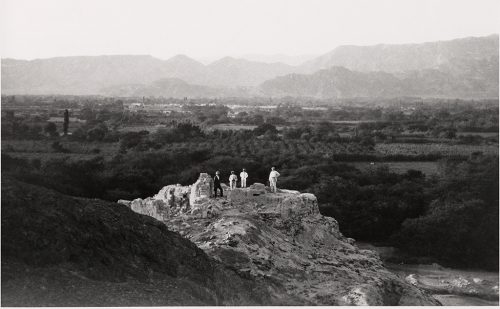
Vol. 64 / No. 1
By: Ann Hudson Peters
Protected Offerings:: Penn Museum Collections Shed Light on Paracas Archaeology
I have seen hundreds of descriptions of simple cotton cloths tied around a basket or bowl; offerings placed at the […]
View Article
Vol. 64 / No. 1
By: Daniel Bauer
Healing Gardens of the Tahuayo: Examining Home Garden Variation in Amazonian Peru
Doña Norma makes her way through the undergrowth along an overgrown path while every so often making a quick swipe […]
View Article
Vol. 64 / No. 1
By: Adam Smith
Shining a Spotlight on a Sixth-Century Bronze Maitreya
Throughout Spring 2022, Penn Museum visitors will see updates to the light-filled Asia Galleries on the Upper Level, particularly in […]
View Article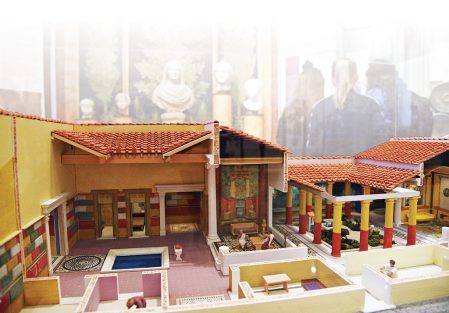
Vol. 64 / No. 1
By: Gareth Darbyshire and Alessandro Pezzati
Modeling the Past with Chris Ray
Christopher Ray, who for over thirty years created exhibition models for the Penn Museum, died on December 5, 2021. He […]
View Article
Vol. 64 / No. 1
By: Brian I. Daniels, Clyde Prout III, Pam Cubbler, Fiona Armbruster and Sylvie Canning
Returning Homelands to a California Native American Tribe
The Colfax-Todds Valley consolidated tribe of the Colfax Rancheria received some reservation land back—here’s how. Native American tribes across the […]
View Article
Vol. 64 / No. 1
By: Christopher Woods
From the Williams Director: Bridging Culture and Community
Dear Friends, At the Penn Museum, spring is in full bloom across our beautiful grounds, including the brand-new Harrison Garden.The […]
View ArticleVol. 64 / No. 1
By: Amanda Mitchell-Boyask
From the Publisher: Rotating Displays
Thanks to the advance collections planning of the curatorial, conservation, and exhibition teams, all galleries across the Museum’s Main Level […]
View Article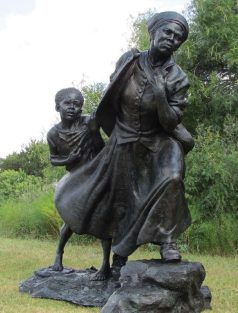
Vol. 64 / No. 2
By: Jane Hickman
The Harriet Tubman Museum in Cape May, New Jersey
Under dangerous circumstances, with “slave catchers” close behind, the men and women of the Underground Railroad risked death to lead […]
View Article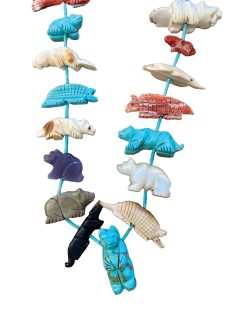
Vol. 64 / No. 2
By: Ava Cappitelli
Gifts of Objects Enhance American and Asian Section Collections
At its June 2022 meeting, the Penn Museum Acquisitions Committee voted unanimously to accept three collections of objects and four […]
View Article
Vol. 64 / No. 2
By: Jennifer Brehm, Rorujorona Ferrell and Haibin Wechsler
Bringing Cross-Cultural Learning to Philadelphia Classrooms
Thousands of school students each year participate in a global education program called International Classroom. The International Classroom program started […]
View Article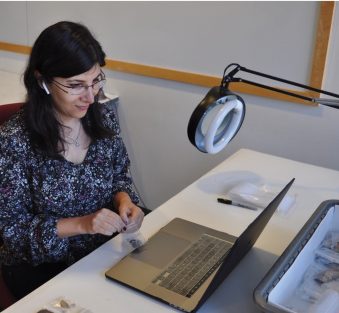
Vol. 64 / No. 2
By: Aylar Abdolahzadeh and Sarah Linn
The Ksâr´Akil Rockshelter: A Corridor of Change and Innovation
The Museum Assistantship Program was started with the goal of pairing Penn Museum projects in need of research assistance with […]
View Article
Vol. 64 / No. 2
By: José Hernández
Analyzing Guastavino Akoustolith Tiles
Since antiquity, reverberation and echo have been linked to monumental, vaulted spaces. Classical Roman temples and medieval Gothic cathedrals produced […]
View Article
Vol. 64 / No. 2
By: Erhan Tamur
Goddesses, Mothers, Rulers: Womanhood in an Ancient Patriarchal Society
The exhibition She Who Wrote: Enheduanna and Women of Mesopotamia, ca. 3400–2000 BC, is on view at the Morgan Library […]
View Article
Vol. 64 / No. 2
By: Lauren Ristvet, Virginia Herrmann, Eric Hubbard and Joanna S. Smith
At a Crossroads of Culture: Creativity and Innovation in a Region Known for Conflict
On November 19, 2022, the Penn Museum will open the doors of the new Eastern Mediterranean Gallery, subtitled “Crossroads of […]
View Article
Vol. 64 / No. 2
By: Eric Hobson
Archaeology Takes Wing: The Penn Museum’s 1930 Aerial Expedition to the Yucatan
In October 1929, fifty-year old Philadelphia banker and lawyer Percy C. Madeira, Jr., tracked with great interest Charles A. Lindbergh’s […]
View Article
Vol. 64 / No. 2
By: CD Green
Wisdom of the Ancestors: Why Museum Politics Matter
Buried in the lush and green mountains of northern New Caledonia—named by colonizers after the verdant ranges of Scotland—I was […]
View Article
Vol. 64 / No. 2
By: Christopher Woods, Ph. D.
From the Williams Director: Physical and Philosophical Transformation
Dear Friends, In our last issue of Expedition, I took stock of the many changes which have occurred at the […]
View ArticleVol. 64 / No. 2
By: Amanda Mitchell-Boyask
From the Publisher: A Bird’s-Eye View
AS ERIC HOBSON NOTES on page 14, when Percy C. Madeira set off on the “Central American Expedition of the […]
View Article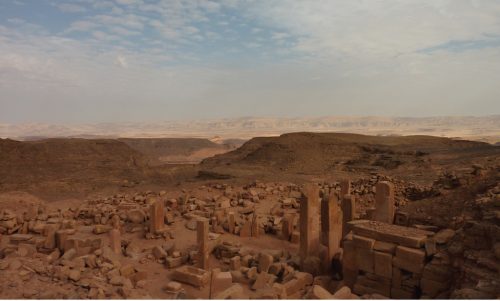
Vol. 64 / No. 3
By: Virginia R. Herrmann and Adam Smith
The Alphabet: A Remarkable Journey from Sinai to Beijing
The alphabet*—it’s a seemingly simple invention with a deeper history and longer journey than many people realize. The ancestor of […]
View Article
Vol. 64 / No. 3
By: Jennifer Brehm and Li Edwards
Celebrating Lunar New Year with the American Chinese Museum
CultureFest! is a popular program for families, intended to introduce visitors to traditions, practices, and art from the regions of […]
View Article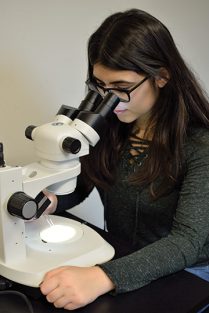
Vol. 64 / No. 3
By: Cole Gaboriault and Susan Zare
Undergraduate Research in CAAM
The minor in archaeological science offered by the Museum’s Center for the Analysis of Archaeological Materials (CAAM) consists of six […]
View Article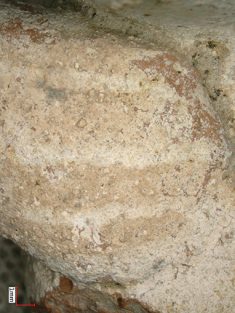
Vol. 64 / No. 3
By: Lauren K. Mccormick
Paint: A Fourth Dimension of Sculpture
In 1956 and 1957, the University of Pennsylvania excavated Al Jib, a site located about six miles northwest of Jerusalem […]
View Article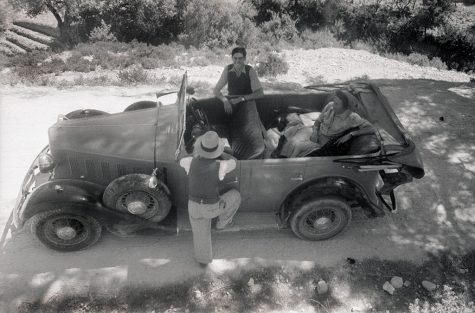
Vol. 64 / No. 3
By: Janessa Reeves
On the Rim of a Volcano: A World War II Story From the Archives
From 1934 to 1954 the Penn Museum conducted excavations at the site of Kourion, in Cyprus, encompassing a range of […]
View Article
Vol. 64 / No. 3
By: Eric Hubbard
Archaeology, Archives, & Empire: Excavating Beth Shean in British Mandate Palestine
Penn Museum archaeologists entered the Eastern Mediterranean region within an atmosphere of imperialism. Most of the material in the Eastern […]
View Article
Vol. 64 / No. 3
By: Lauren Ristvet
Family Portraits: From Palmyra to Philadelphia
Palmyra, “the city of palms,” was one of the most important trade centers of the ancient world. An oasis city […]
View Article
Vol. 64 / No. 3
By: Eric Hubbard
Prayer and Protection: Ritual Acts and Magical Objects in the Ancient Eastern Mediterranean
Personal Protective Equipment (PPE) is a lot older than you might think. For millennia, the diverse peoples of the Eastern […]
View Article
Vol. 64 / No. 3
By: Virginia R. Herrmann
An Ivory Sphinx from Nimrud
Browsing through the Eastern Mediterranean Gallery, a casual visitor might be struck by the strongly Egyptian flavor of a small, […]
View Article
Vol. 64 / No. 3
By: Joanna S. Smith
Cyprus in the Penn Museum
The Eastern Mediterranean Gallery that opened in November 2022 significantly augments the number of Cypriot objects on permanent display in […]
View Article
Vol. 64 / No. 3
By: Joanna S. Smith
Votive Offerings: At the Sanctuary of Apollo at Kourion
People from all over the Mediterranean traveled to a sanctuary at Kourion, Cyprus, to worship, consult, and seek the protection […]
View Article
Vol. 64 / No. 3
By: Virginia R. Herrmann
From Trash to Historical Treasure: Stamped Handles From Gibeon in Judah
In Gibeon, Where the Sun Stood Still, James B. Pritchard, director of the Penn Museum’s 1956–1962 excavations at this site […]
View Article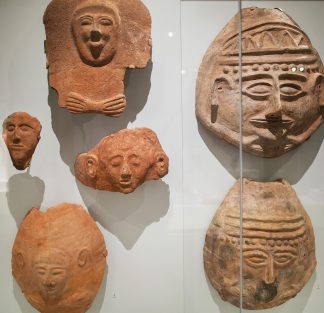
Vol. 64 / No. 3
By: David Mulder
Facing the Past: Anthropoid Sarcophagi From Beth Shean
It is rare that an artifact lets us put a face on antiquity, making a museum visitor feel that they […]
View ArticleVol. 64 / No. 3
By: Joanna S. Smith
Object Stratigraphy: Recycling in the Ancient World
Assemblage and stratigraphy are fundamental concepts for understanding archaeological sites and these ideas bookend the Eastern Mediterranean Gallery. At one […]
View Article
Vol. 64 / No. 3
By: Joanna S. Smith
Views from Land and Sea: Displaying a Late Bronze Age Ship
Sea-going trade expanded in the Mediterranean in the Late Bronze Age (ca. 1600–1100 BCE). The catastrophes that led to the […]
View Article
Vol. 64 / No. 3
By: Christopher Woods
From the Williams Director: A Multicultural World, Like Our Own
Dear Friends, In our last issue of Expedition, I looked forward to welcoming you to our newly reimagined Eastern Mediterranean […]
View Article
Vol. 64 / No. 3
By: Lauren Ristvet, Virginia Herrmann, Eric Hubbard and Joanna S. Smith
From the Guest Editors: Exploring a Cultural Crossroads
THE EASTERN MEDITERRANEAN GALLERY, opened November 19, 2022, celebrates the Penn Museum’s history of excavation and research in the cultural […]
View Article
Vol. 65 / No. 1
By: Zaid Alrawi
Partners in Search of the Past
Since the 1980s, archaeological work in southern Mesopotamia has been challenged by waves of political instability, economic sanctions, and armed […]
View Article
Vol. 65 / No. 1
By: Reed Goodman
A New Story of Sumer’s First Cities
A large expanse of Iraq’s central floodplain, once thriving with life, now lies abandoned beyond the reach of modern agriculture. […]
View Article
Vol. 65 / No. 1
By: David Mulder
It’s Five O’Clock, Sumer
What does it take to reconstruct a bustling metropolis from 5,000 years ago? A great deal of fieldwork, collaboration, and […]
View Article
Vol. 65 / No. 1
By: Holly Pittman
Back to Lagash
After a three-decade hiatus, the Penn Museum reopened a seminal dig site in southern Iraq. Cities first appeared, the Bible […]
View Article
Vol. 65 / No. 1
By: Christopher Woods
From the Williams Director: Research and Reflection
Dear Friends, Our last issue of Expedition was a grand celebration of our new Eastern Mediterranean Gallery: an immersive, innovative […]
View ArticleVol. 65 / No. 1
By: Quinn Russell Brown
From the Editor: New Word, Ancient World
When I became the editor of Expedition in April 2023, I spent a few days thumbing through decades of back […]
View Article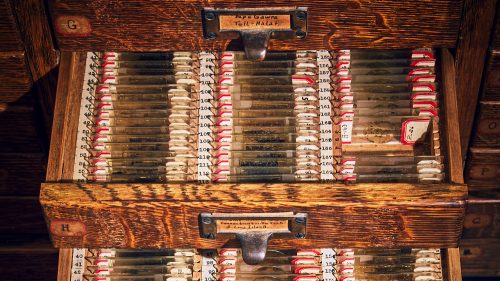
Vol. 65 / No. 2
By: Marie-Claude Boileau and Vaughn Ortner
Hopeful Science in Bleak Times: The Legacy of the WPA Laboratories During the Great Depression
During the 1930s, millions of Americans struggled to sustain themselves economically due to the manifold challenges of the Great Depression. […]
View Article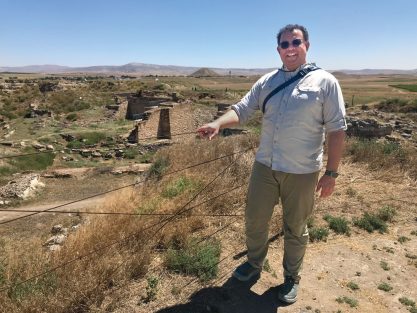
Vol. 65 / No. 2
By: Christopher Woods
A Season of Insight: From the Williams Director
Dear Friends, Though the summer may be a quiet period for many within the academy, most of you know that […]
View Article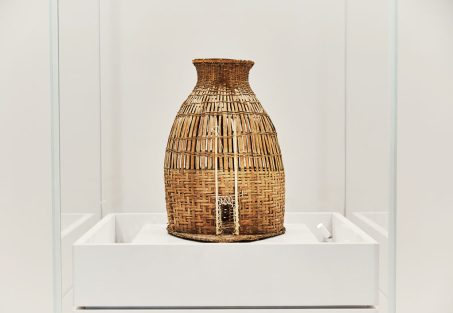
Vol. 65 / No. 2
By: Quinn Russell Brown
Making Memories in a Museum: From the Editor
BEFORE MY WIFE AND I RELOCATED to Philadelphia in the summer of 2021, we followed in the footsteps of many […]
View Article
Vol. 65 / No. 3
By: Jennifer Houser Wegner
Festive Fragments: The Penn Museum’s Malkata Collections
During my undergraduate years at Penn, I had the privilege of taking courses on ancient Egyptian history and culture taught […]
View Article
Vol. 65 / No. 3
By: Josef W. Wegner
Wah-Sut: Excavating a Middle Kingdom Town
During an initial site survey at Abydos in 1966, David O’Connor briefly examined South Abydos: a part of the site […]
View Article
Vol. 65 / No. 3
By: Josef W. Wegner
From the Guest Editor: David O’Connor Memorial Issue of Expedition
In 1964, David O’Connor, a 26-year-old Australian Ph.D. candidate in Egyptian Archaeology at the University of Cambridge, came to the […]
View Article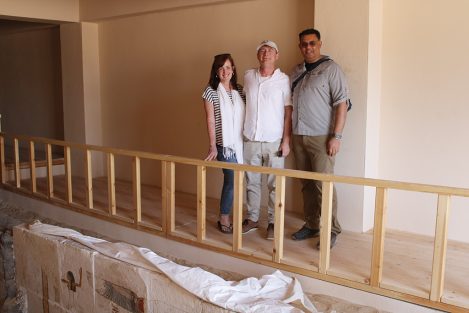
Vol. 65 / No. 3
By: Christopher Woods
From the Williams Director: A Fifty-Year History of Research
In December, I had the chance to visit the Museum’s research site at Abydos during a trip to Egypt with […]
View Article